| Although this calls itself 'flora', it is far from a complete collection. The main criterion for a photo to be included is simple - do we like it? We've also included one or two unusual or rare plants, such as Oysterplant and Scottish Primrose, even when the photos aren't quite up to the mark. Most of the plants we've seen at other times and other places, but we've just chosen the best one(s). |
|
 |
From an early age Elisabeth has been interested in plants, especially wild flowers. This was encouraged by her mother, who studied Botany for 'Highers' (predecessor to A level). She has passed on her enthusiasm to Tony, who knew very little before we met, and to our children, especially Matthew. We do not claim great expertise, however, and have indicated where we are unsure what a plant is. Help and, especially, correction would be much appreciated! Send to our e-mail address  . . |
| Some of the places where we have found plants may not be familiar to you. Click on the link for a particular plant to find a few notes on its location. Use your browser's Back button to return to the plant. |
|
| Note: Tony in particular is very keen to take photos against a dark background. Please be reassured that in all cases the background is natural - no black card or other materials were used in the taking of these photos! |
|
| NOTE - you may need to wait a few seconds for all the pictures to download. |
|
back to 'Photos'
INDEX
- Autumn Crocus
- Bedstraws - Lady's, Woodruff
- Bellflowers - Giant, Nettle-leaved, Harebell
- Bistorts - Amphibious, Common
- Bittersweet (Woody Nightshade)
- Broomrapes - Thyme, Toothwort
- Bugle
- Burdock
- Bushes - Bird Cherry, Blackthorn, Bearberry, Broom, Dewberry, Hawthorn (May), Hazel, Juniper
- Butterbur
- Buttercups - Meadow, Small-flowered, Globeflower, Greater Spearwort, Lesser Spearwort, Marsh Marigold (Kingcup), Lesser Meadow-rue, Pasque Flower, Winter Aconite
- Butterwort
- Campions - Moss, Red, Sea, Ragged Robin, Soapwort
- Celandines - Greater, Lesser
- Centauries - Common, Seaside, Yellow, Yellow-wort
- Chickweeds - Greater, Greater Stitchwort, Knotted Pearlwort
- Cinquefoils - Marsh, Shrubby
- Climbing Corydalis
- Clovers - Alsike, Red, Zigzag
- Cotton-grass
- Cranesbills - Bloody, Meadow, Wood
- Crosswort
- Cuckooflower (aka Milkmaid, Lady's Smock)
- Cypress Spurge
- Daisies and relatives - Common, Oxeye, Coltsfoot, Corn Marigold, Cornflower, Elecampane, Fleabane, Leopardsbane, Mountain Everlasting, (Wild) Goldenrod, Yarrow
- Dandelion and relatives - Dandelion, Fox-and-cubs, Goatsbeard, Marsh Hawksbeard, Northern Hawksbeard, Mouse-ear Hawkweed, Sticky Groundsel
- Dyer's Greenweed
- Eyebright
- Field Penny-cress
- Foxgloves - Common, Fairy
- Garlics - Field, Sand Leek
- Gorse - Common, Dwarf
- Grass of Parnassus
- Greater Stitchwort
- Green Alkanet
- Guelder-rose
- Helleborines - Broad-leaved, Narrow(Sword)-leaved, White
- Hemp Agrimony
- Herbs - (Wild) Marjoram, Wild Thyme
- Honesty
- Honeysuckle
- Irises - Yellow (Flag) Iris, Blue-eyed Grass, Yellow-eyed Grass
- Ivy-leaved Toadflax
- Lesser Knotweed
- Lesser Sea-Spurrey
- Lilies - Bluebell, Bog Asphodel, Snowdrop, Spring Snowflake, Star-of-Bethlehem
- Ling
- Louseworts - Lousewort, Marsh
- Maiden Pink
- Mallows - Common, Musk
- Marsh Woundwort
- Mayweeds - Sea
- Meadowsweet
- Mimulus - Monkeyflower, Musk
- Mint
- Orchids - Bee, Common Spotted, Early Marsh, Early Purple, Fragrant, Frog, Greater Butterfly, Heath Spotted, Lesser Butterfly, Northern Marsh, Small White
- Oysterplant
- Pansies - Mountain, Seaside, Wild
- Purple Loosestrife
- (Tansy-leaved) Phacelia
- Pimpernels - Bog, Scarlet, Yellow
- Plantains - Buckshorn, Water
- Primroses - Birdseye, Common, Scottish, Cowslip, False Oxlip, True Oxlip
- Purslanes - Pink, Spring Beauty
- Ragworts - Common, Marsh
- Reeds and Rushes - Bur-reed, Common Club-rush, Flowering Rush, Bulrush (Reedmace), Sea Club-rush, Soft Rush
- Rock-rose
- Roses - Burnet, Dog-, Japanese, Northern Downy, Many-flowered Rose (Rosa multiflora), Sherard's Downy
- St John's Worts - Hairy, Tutsan
- Scabiouses - Devilsbit, Field
- Scurvygrass
- Sea-buckthorn
- Sea Holly
- Sea Milkwort
- Sea Rocket
- Self-heal
- Sheepsbit
- Speedwells - Germander (Birdseye), Heath
- Spring Gentian
- Spring Sandwort
- Spring Squill
- Spurge-laurel
- Stonecrops - Biting, Navelwort, Roseroot
- Storksbill
- Teasel
- Thistles and relatives - Carline, Marsh, Common Blue Sow-, Corn (Perennial) Sow-, Creeping, Melancholy, Hemp Agrimony, Cornflower, Saw-wort
- Thrift
- Trees - Alder, Ash, Elder, Hornbeam, (European) Larch, (Common) Lime, Norway Spruce, Rowan, Scots Pine, Spindle
- Twiggy Mullein
- Umbellifers - Alexanders, Cow Parsley, Giant Hogweed, Hemlock Water Dropwort, Hogweed, Pink Masterwort, Rough Chervil, Scots Lovage, Sweet Cicely, Wild Angelica, Wild Carrot
- Valerians - Common, Marsh
- Vetches - Bitter, Bush, Tufted, Birdsfoot Trefoil
- Violets - Common Dog , Marsh
- Viper's Bugloss
- Wall Germander
- Warty Cabbage
- Water-lilies - White, Yellow
- Weld
- Willow (various)
- Willowherbs - Great, Rosebay, Enchanter's Nightshade
- Wood Anemone (Windflower)
- Wood-sorrel
Back to index
| Plants in the family order often found in flower-books: |
| Our reference was Wild Flowers of Britain and Ireland by Blamey, Fitter & Fitter, published A & C Black 2003 (Though we have put trees and bushes in their families, not under separate headings.) |
| Buttercup family - Ranunculaceae |
| MEADOW BUTTERCUP Ranunculus acris | |
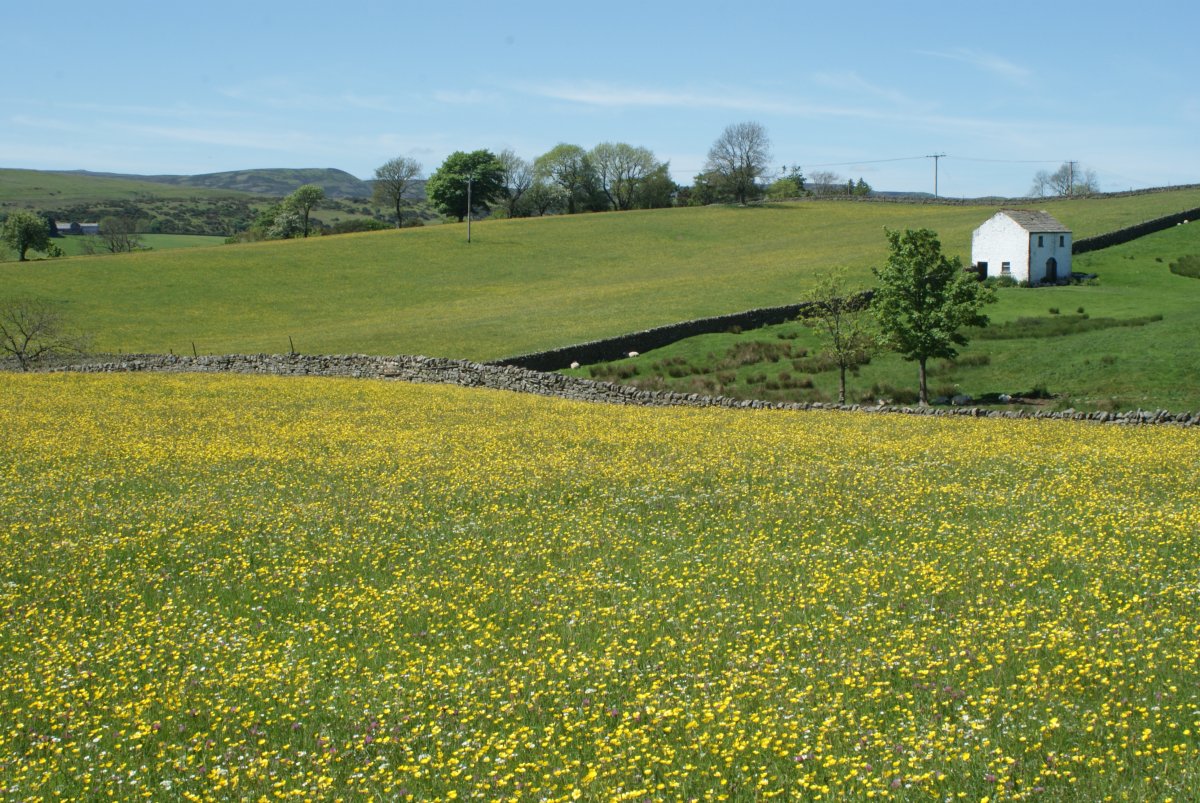 |
| Not the Creeping species which invades your lawn, the Meadow Buttercup fills many of our fields and pastures throughout the summer. These were near Low Force, in Teesdale, in May 2017, with a characteristic field barn in the distance. |
Back to index
| SMALL-FLOWERED BUTTERCUP Ranunculus parviflorus | |
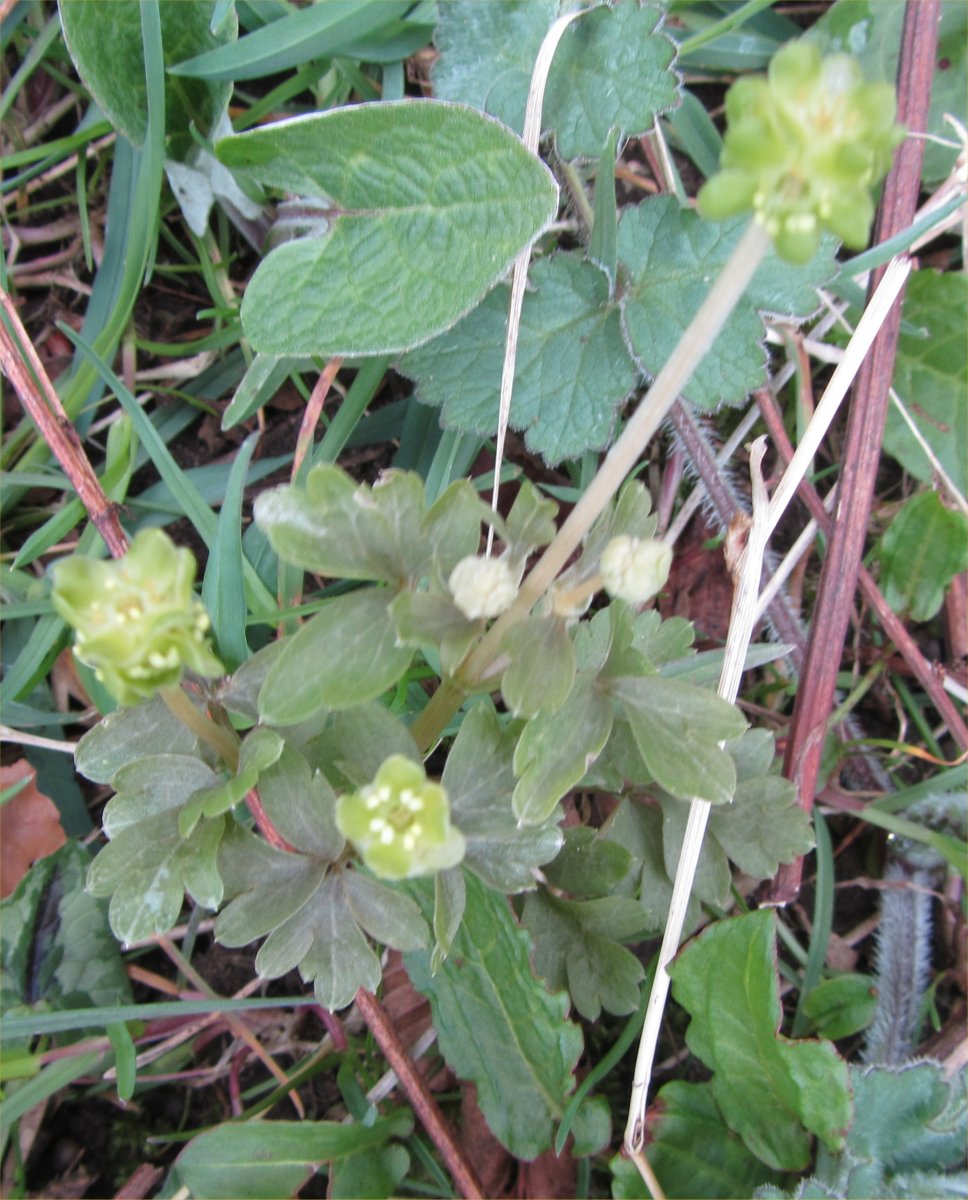 |
| We came across this uncommon species during a walk in Allenbanks, West Northumberland, in April 2013. |
back to index
| GREATER SPEARWORT Ranunculus lingue | |
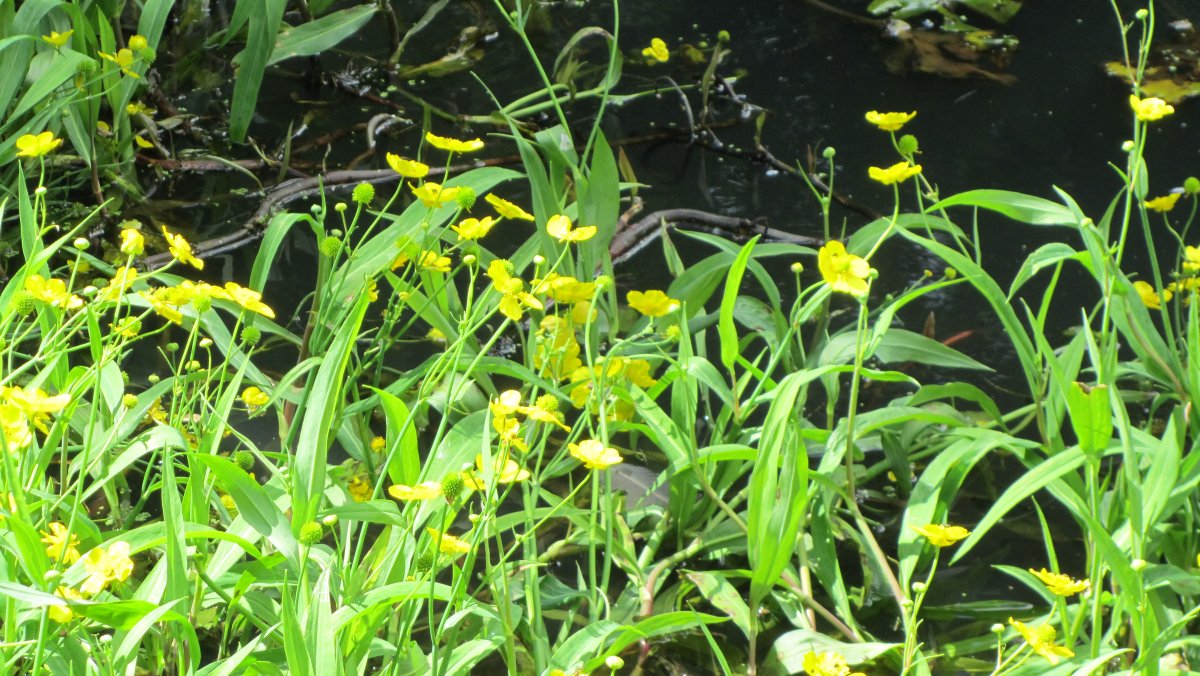 |
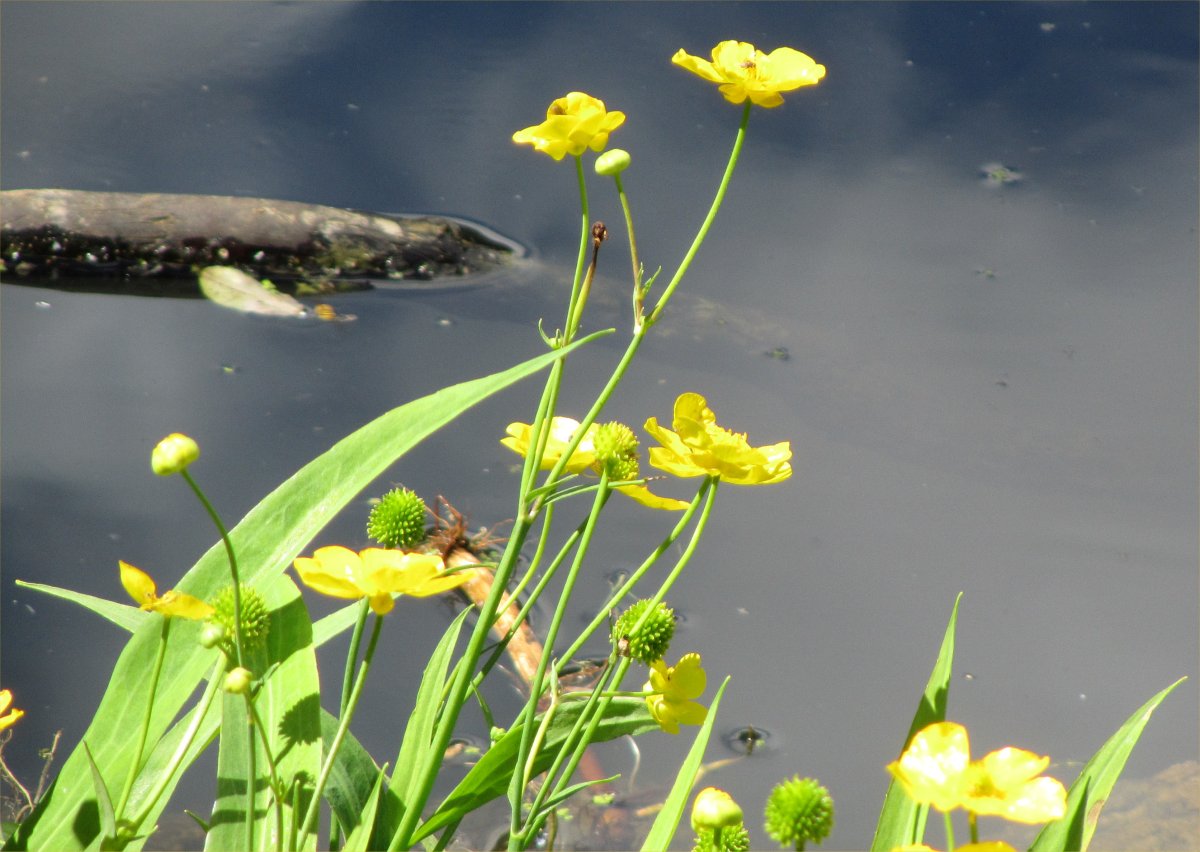
| 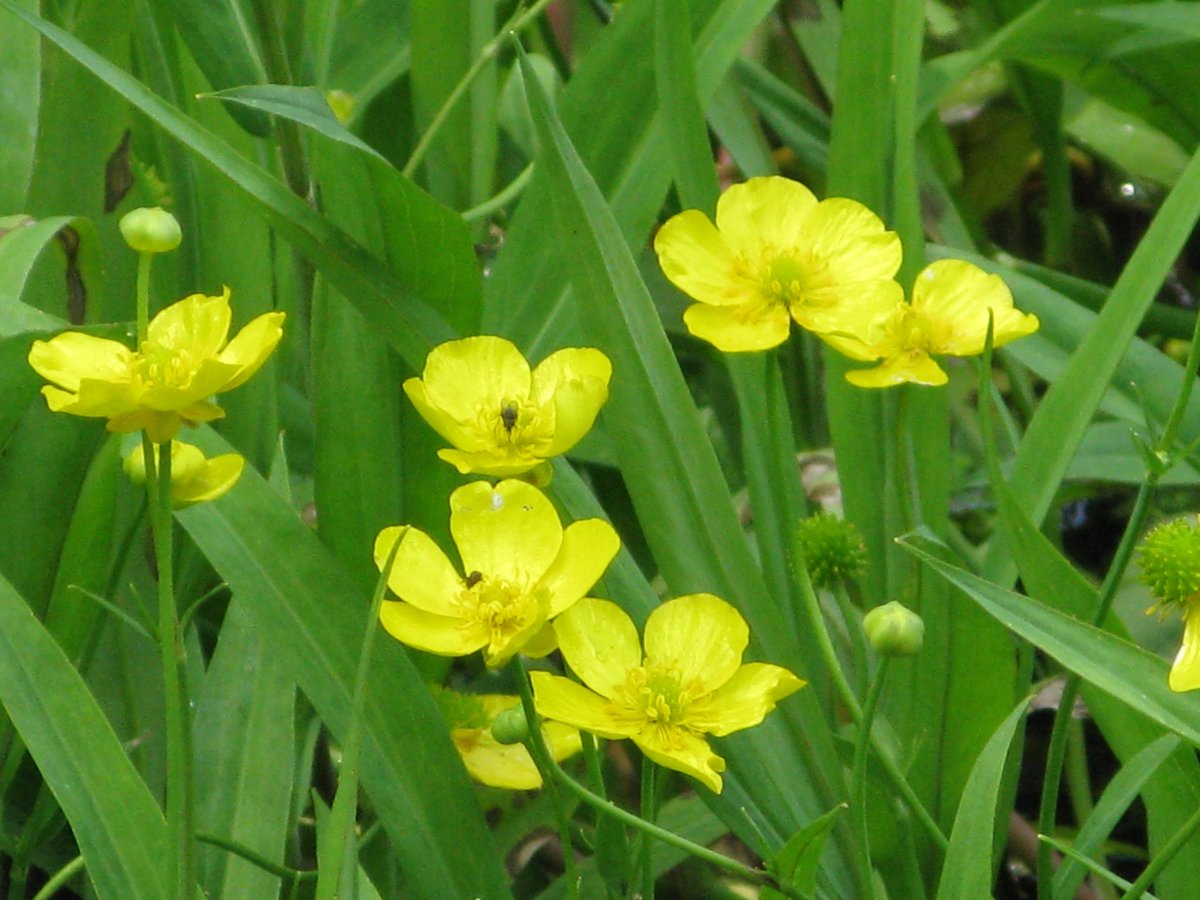
|
| A beautiful member of the family often found by water. These pictures were taken by the Garden Pond in Wallington, Northumberland, the first two in 2016, the third in 2009. |
Back to index
| LESSER SPEARWORT Ranunculus flammula | |
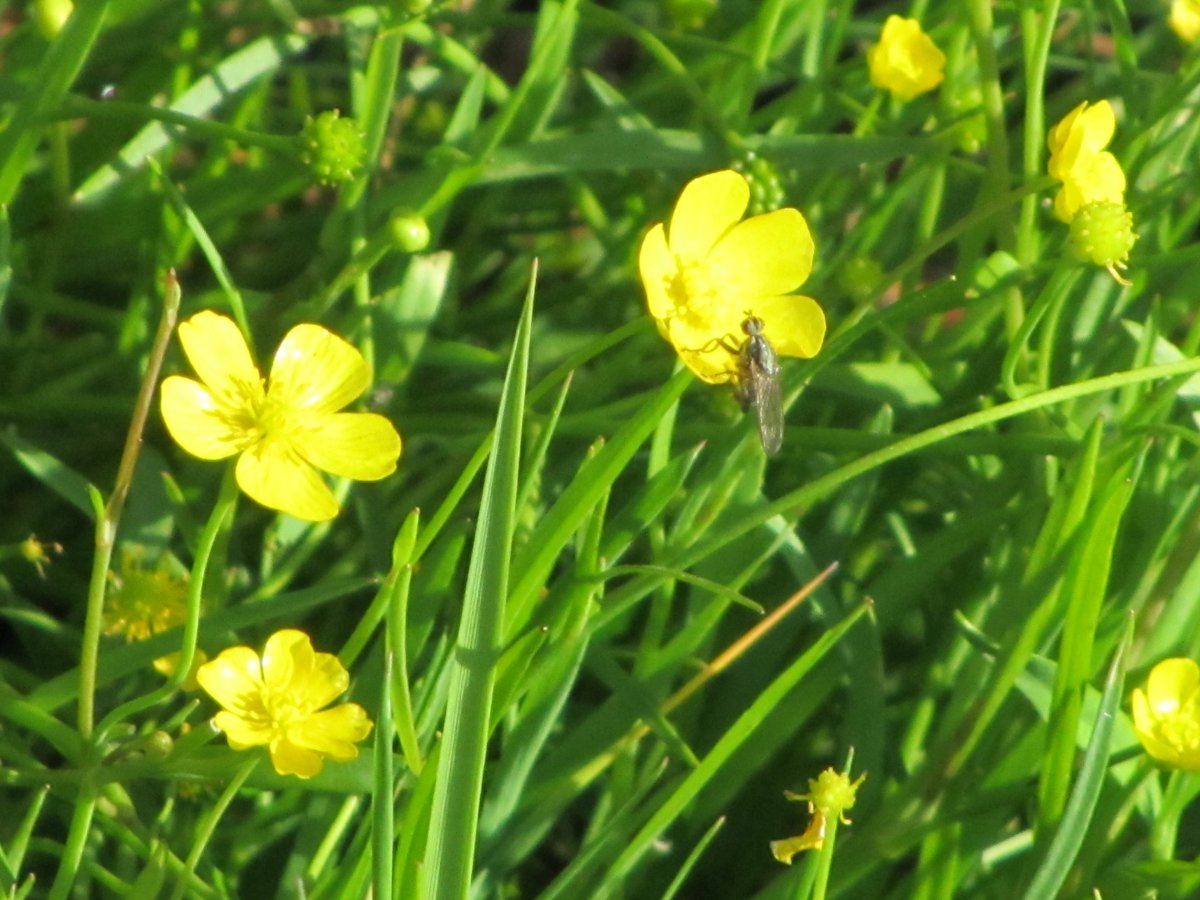 |
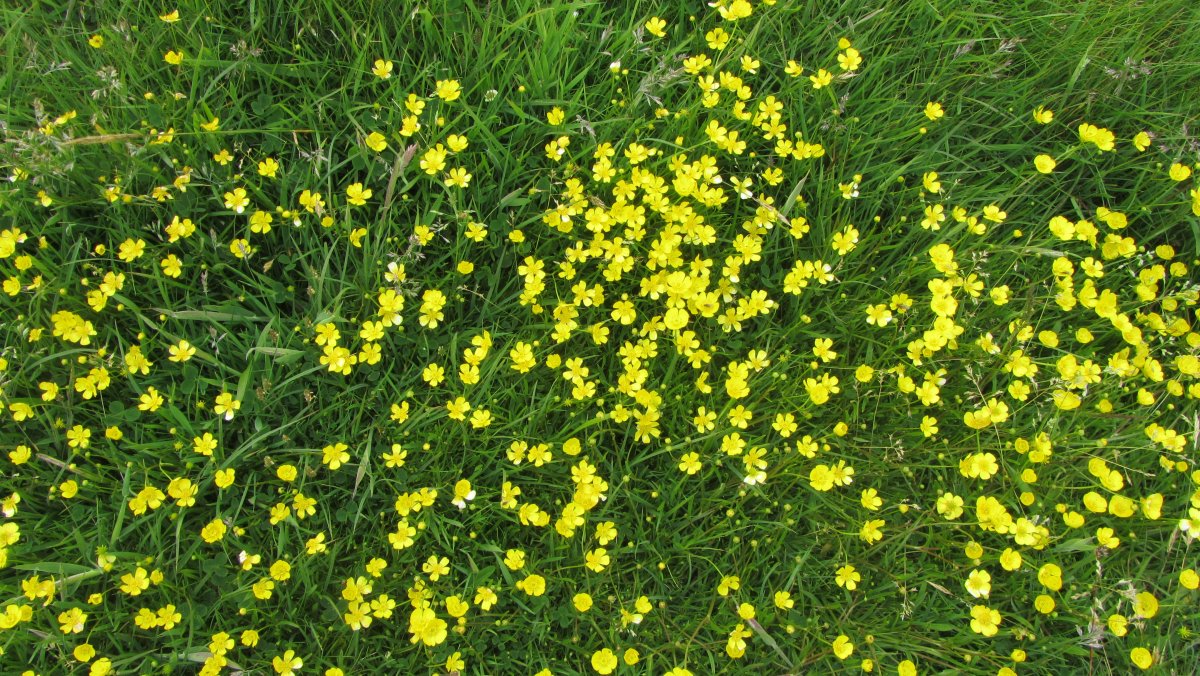
|
| Smaller than Greater, of course, but also seen by water. The small group was at Cragside, Northumberland, in August 2012 (on our wedding anniversary, in fact), the masses on St Ninian's Isle, Shetland, in May 2013. |
Back to index
| LESSER CELANDINE Ranunculus ficaria | |
 |
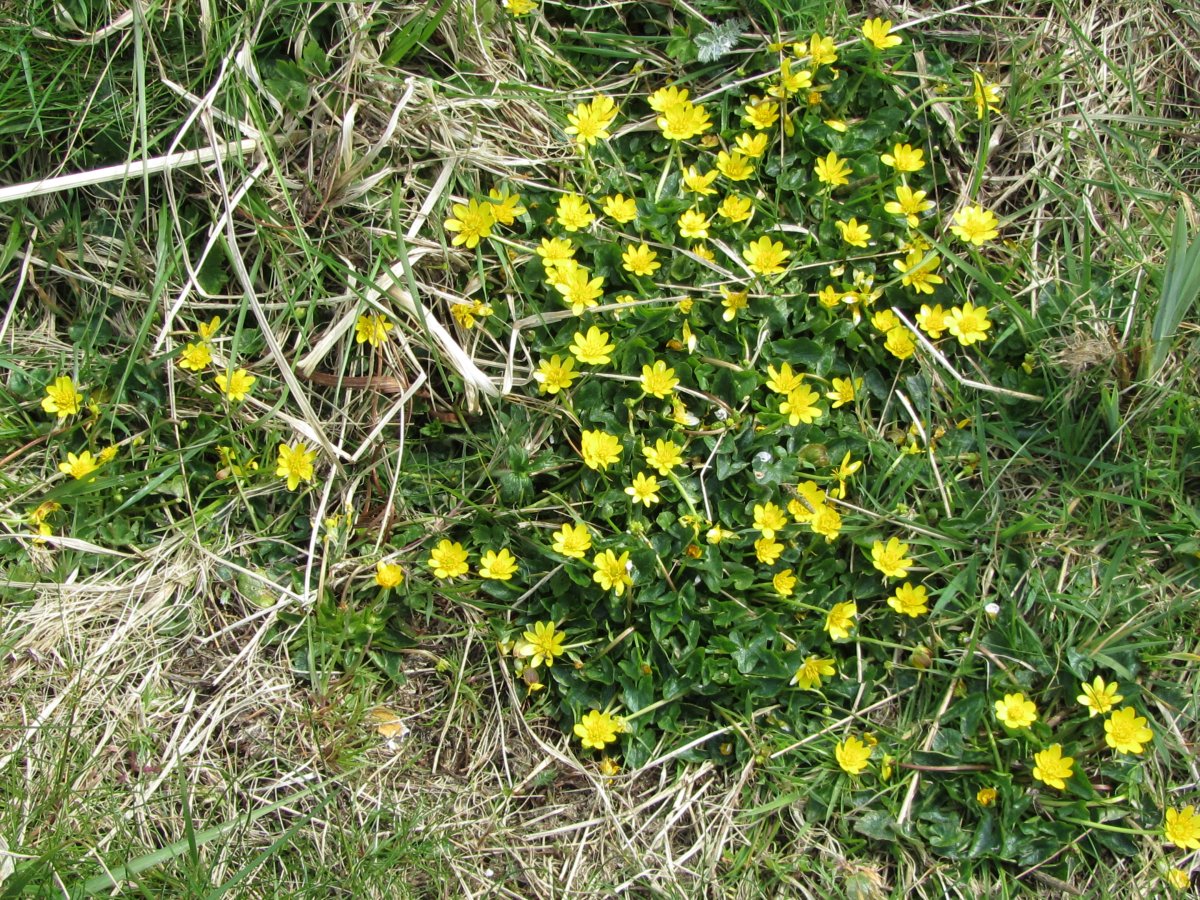
|
| This lovely spring flower bursts out as the snowdrops fade. The single flower was in Teesdale, the masses on Iona, Mull, both in April 2014. (It is not related to the Greater Celandine, which is a poppy.) |
Back to index
| MARSH MARIGOLD (Kingcup) Caltha palustris | |
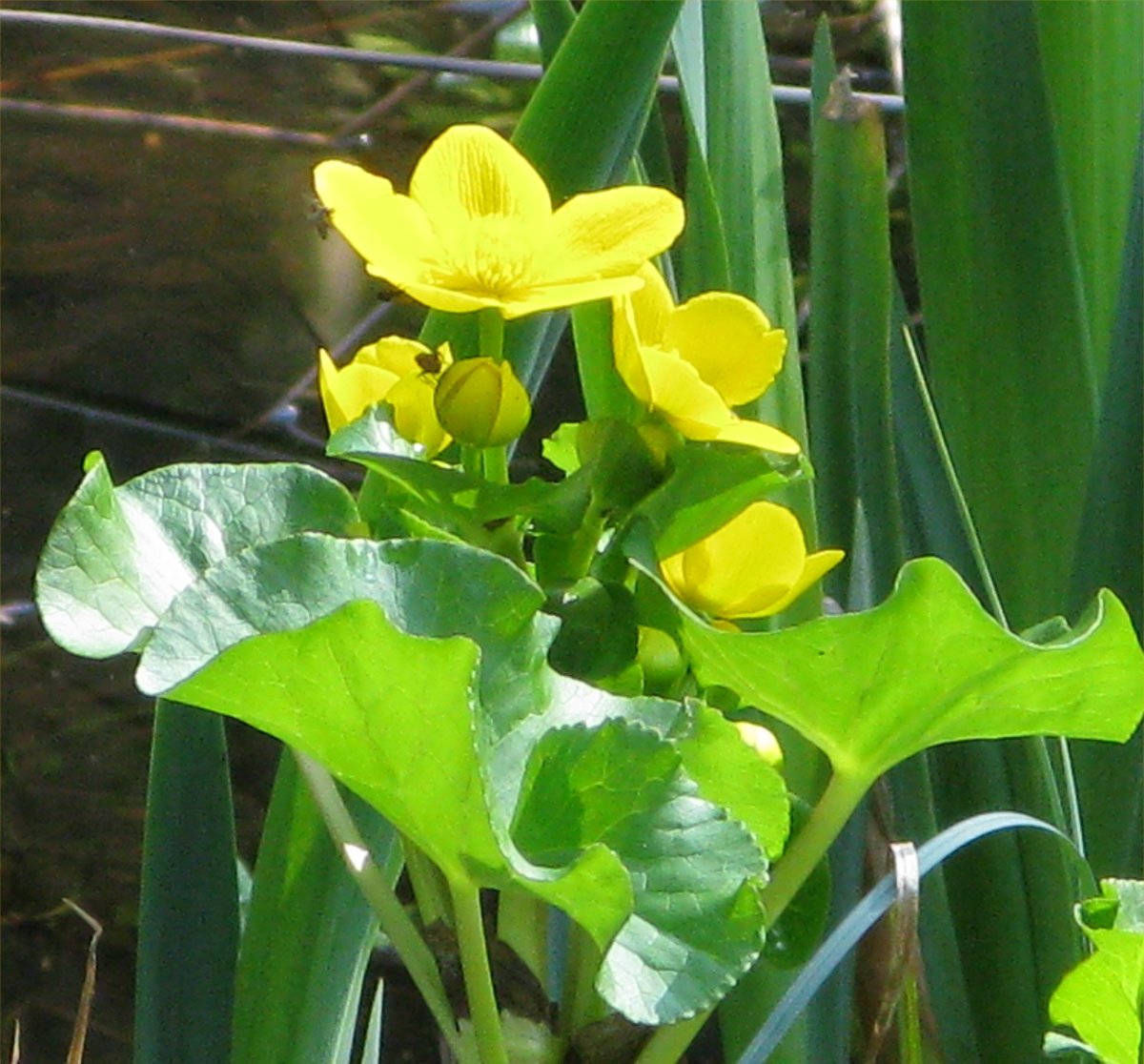 |

| 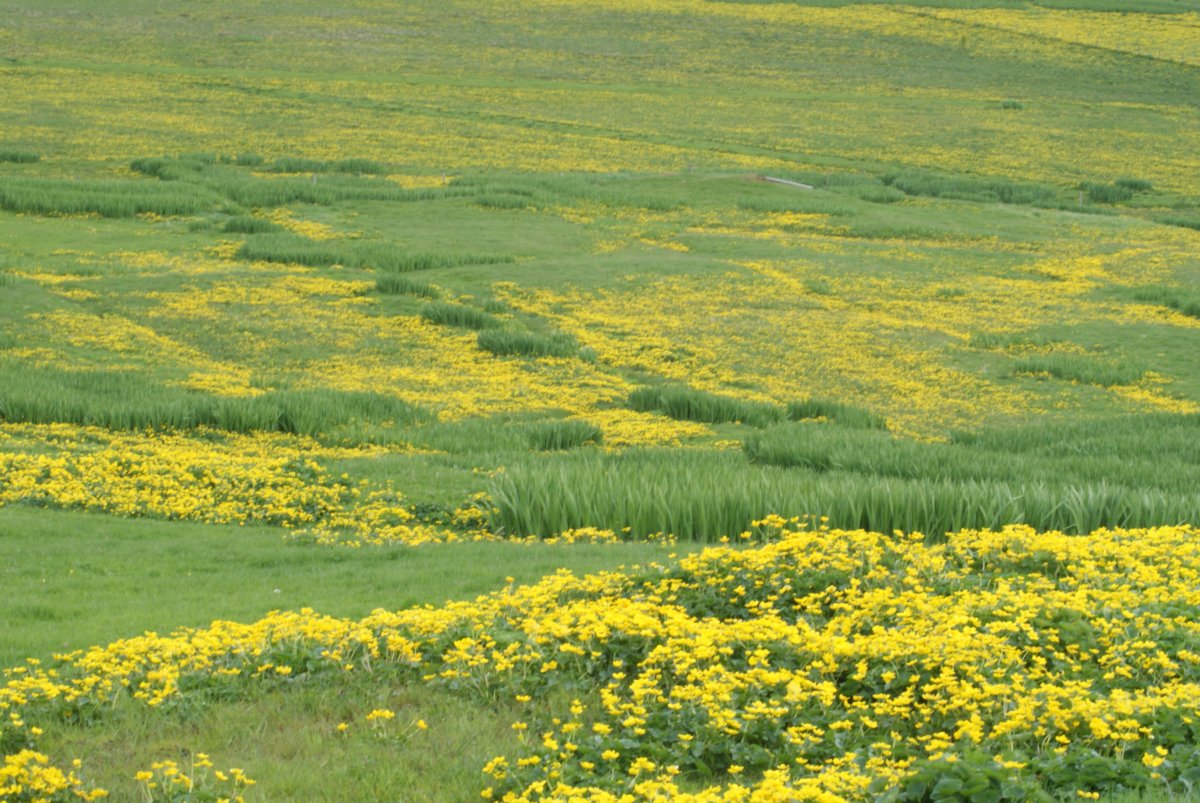
|
| Solitary or en masse, Kingcups brighten watersides and damp meadows all over the country. The single plant here was by Moralee Tarn, West Northumberland, in April 2009, the group almost in the water at Washington Wildlife and Wetland Trust, Tyne & Wear, May 2010, the huge masses on Fethaland in the North of Mainland, Shetland, June 2010. |
Back to index
| GLOBEFLOWER Trollius europaeus | |
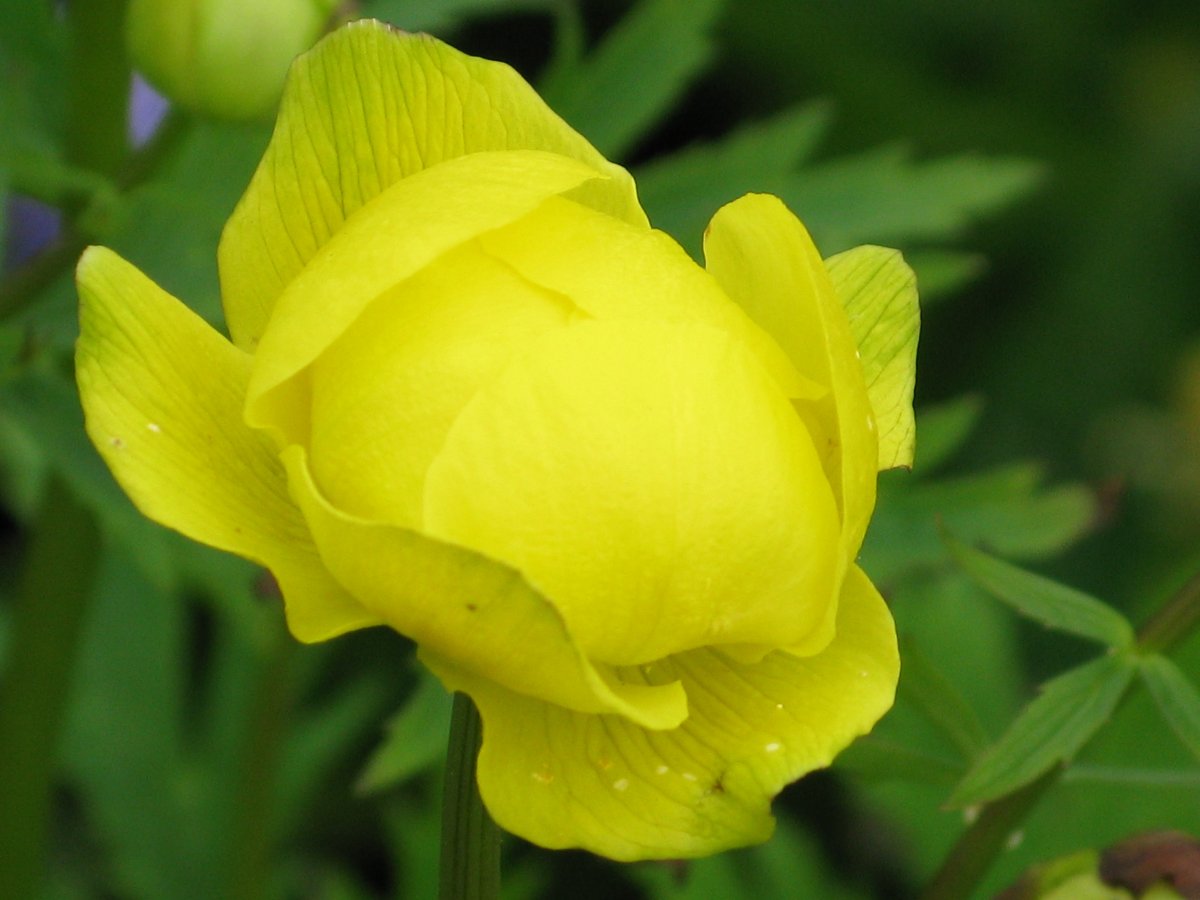 |
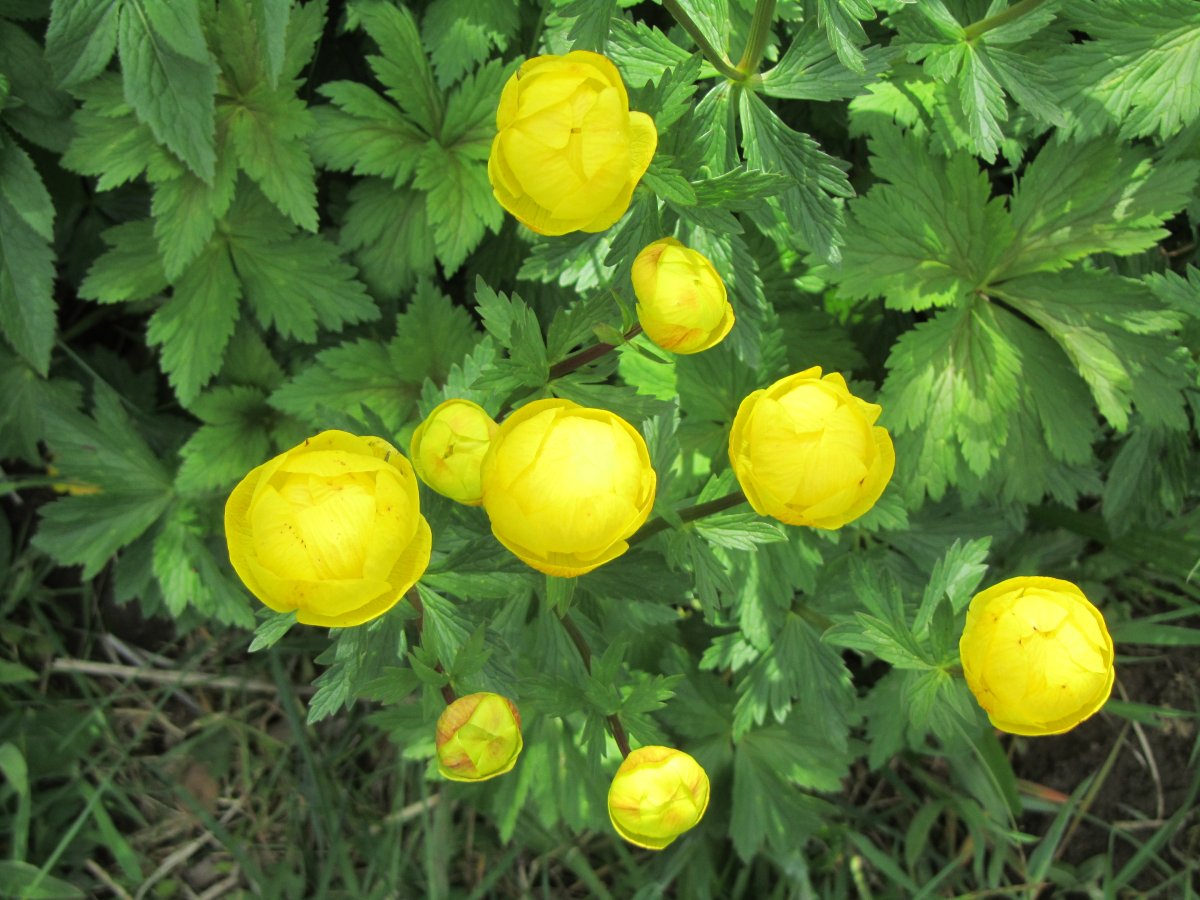
| 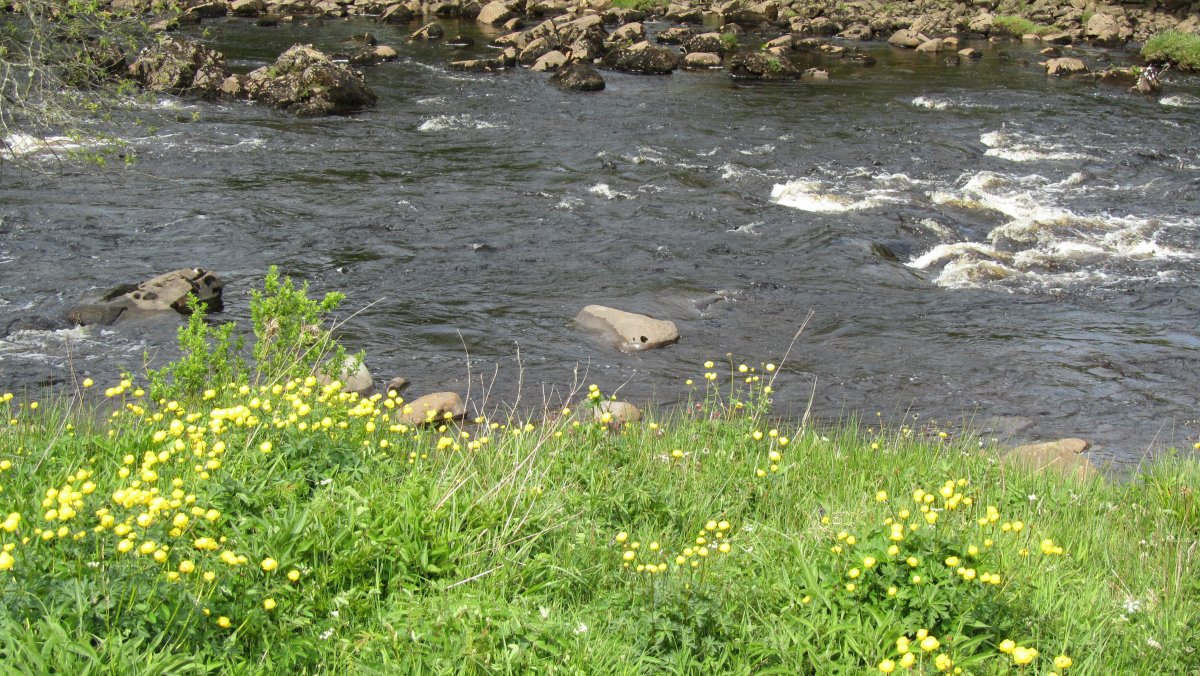
|
| Popular in gardens, but seen wild in spectacular numbers in some special places. The single flower was at Esha Ness, Shetland, in June 2010, the two groups by the river in Teesdale, June 2015. |
Back to index
| WINTER ACONITE Eranthis hyemalis | |
 |

| 
|
| Seen with snowdrops or by themselves, they are welcome heralds of the end of winter. The single one was at Howick, the right-hand group at Wallington, both in February 2009, the middle one at Howick in February 2013. |
Back to index
| LESSER MEADOW-RUE Thalictrum minus | |
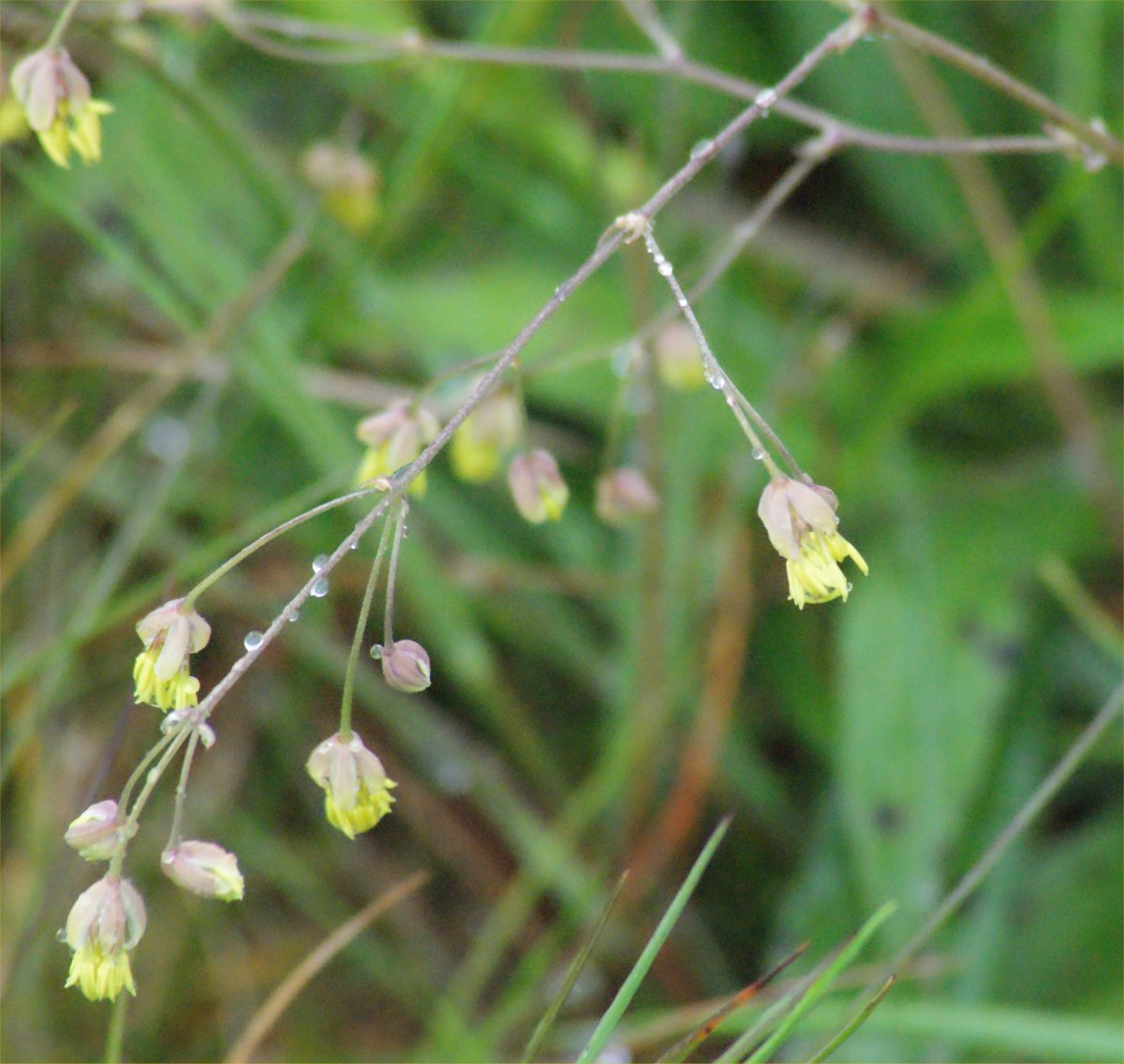 |

|
| A delicate, if not very exciting flower. These were seen on what was clearly a wet day in Portuairk, Ardnamurchan, July 2016. |
Back to index
| WOOD ANEMONE (Windflower) Anemone nemorosa | |
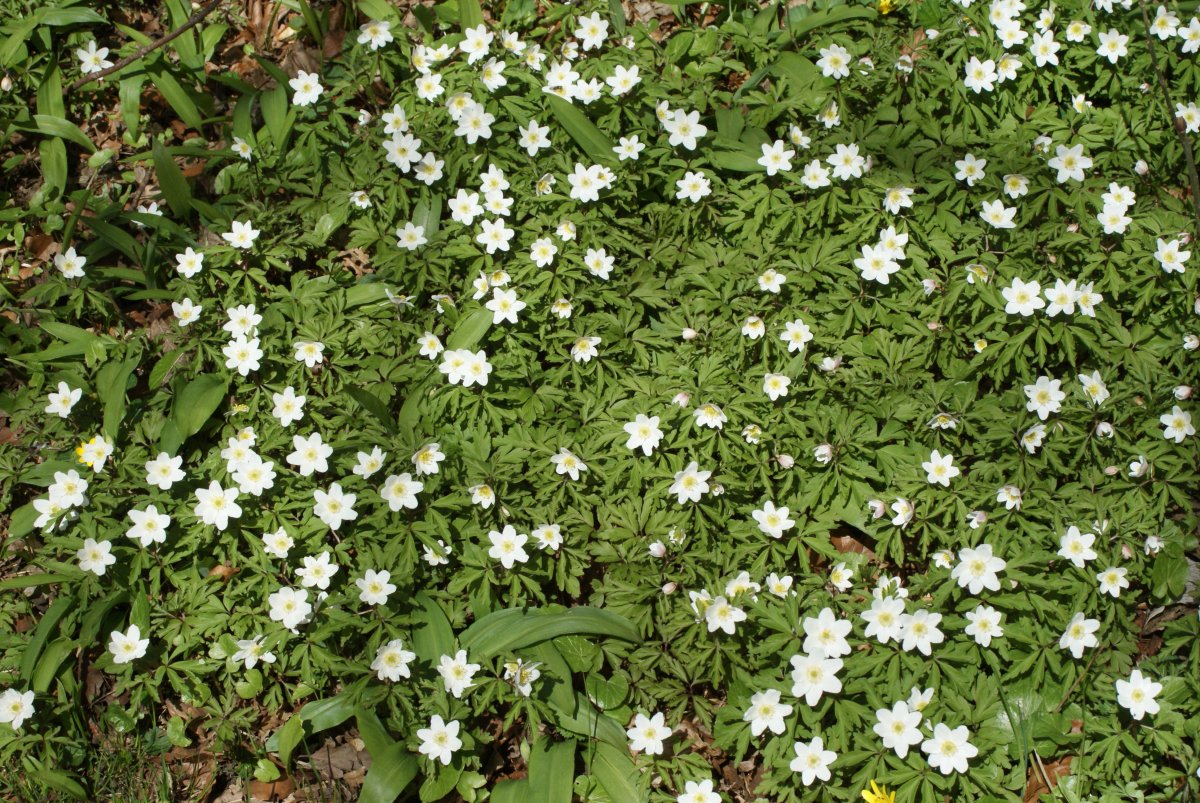 |
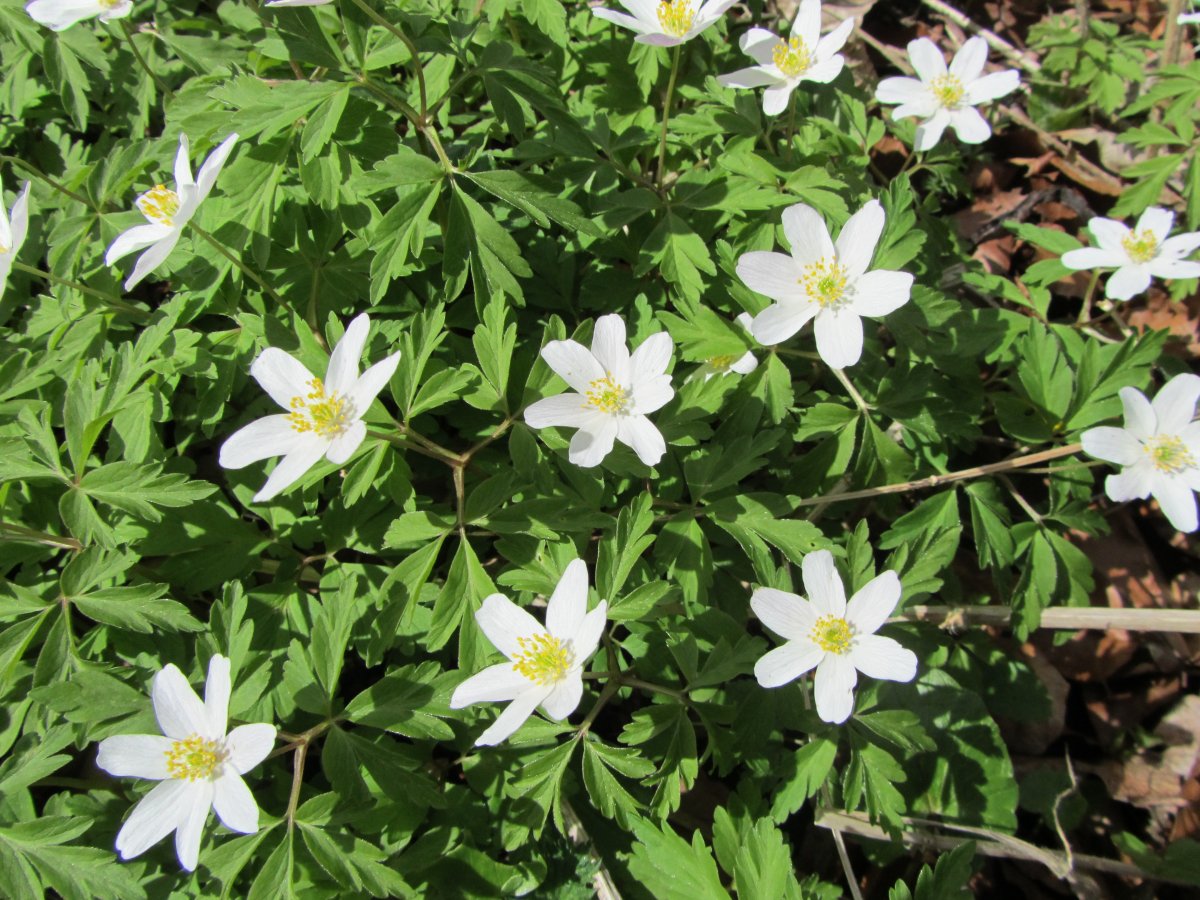
| 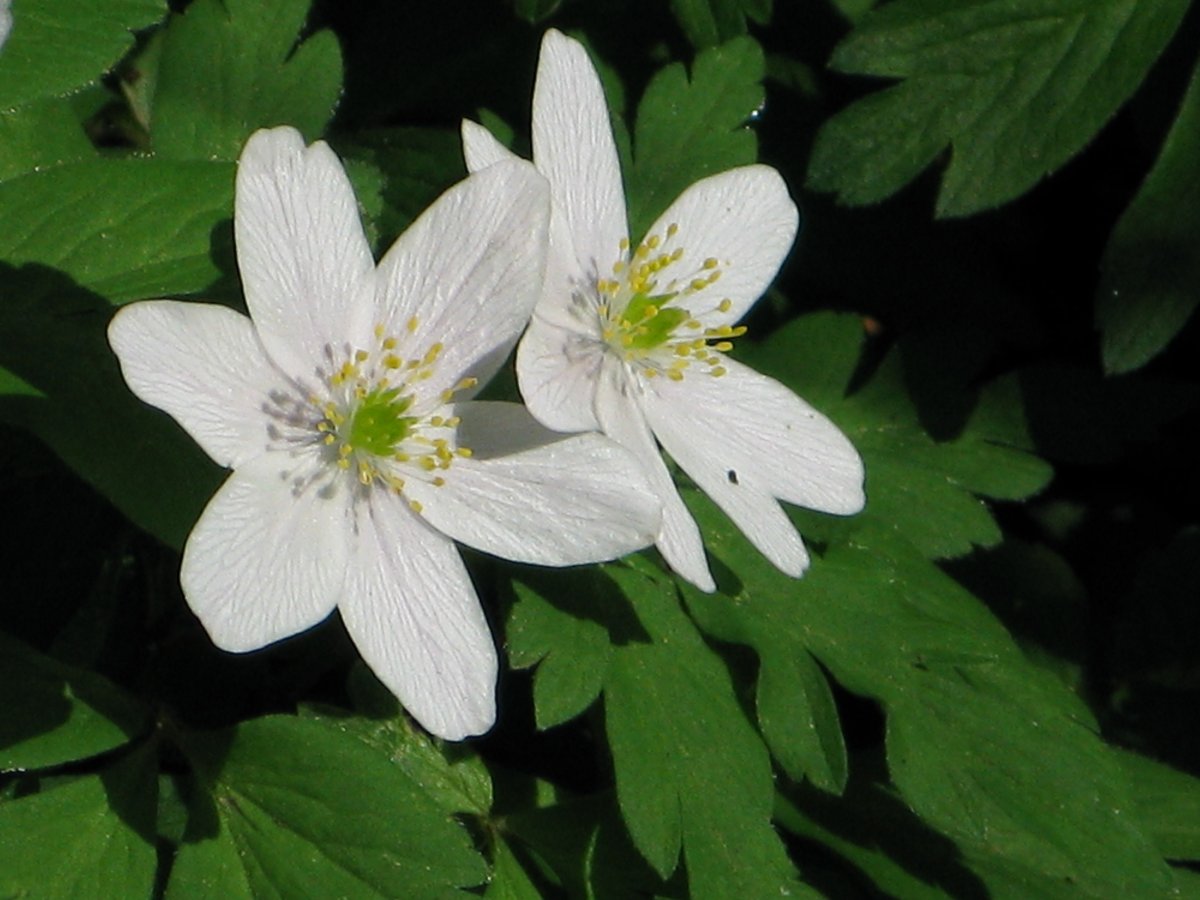
|
| Another flower to welcome Spring, often among trees with Lesser Celandine. The masses were both at Wallington, April 2013, The close-up at Allenbanks, West Northumberland, April 2009. |
Back to index
| PASQUE FLOWER Pulsatilla vulgaris | |
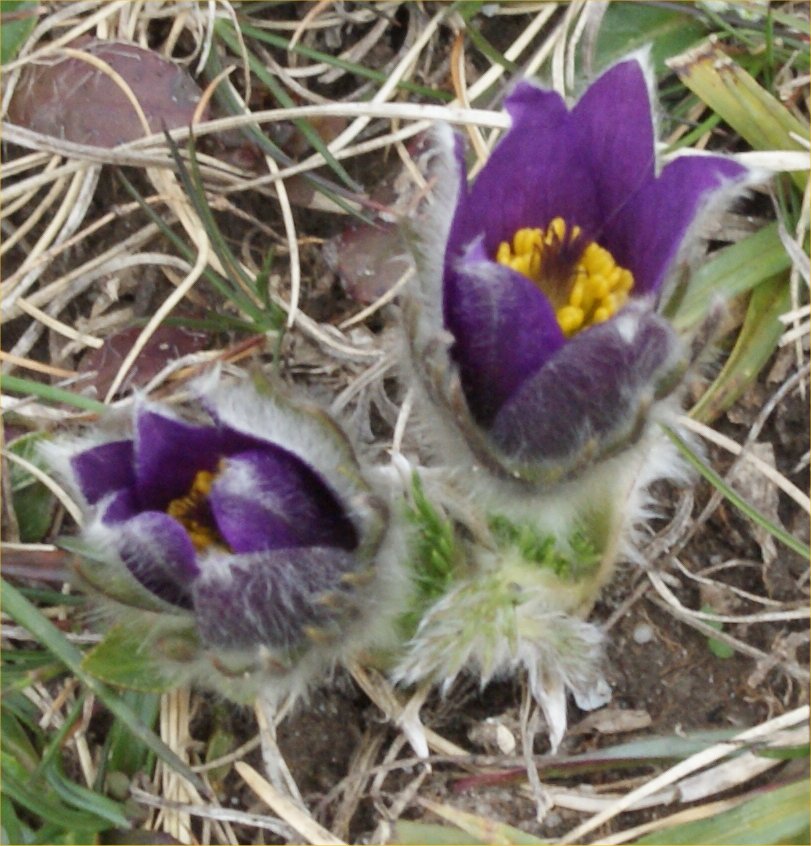 |
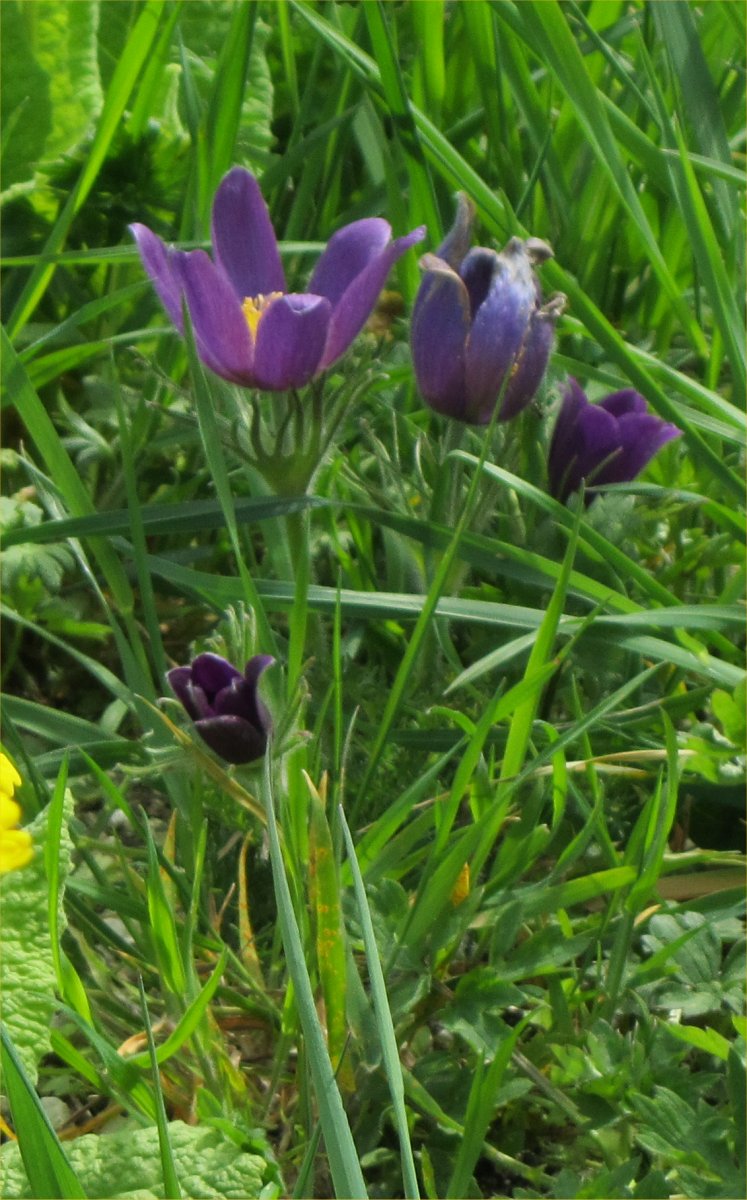
|
| Often seen in gardens, this beautiful flower is named after Easter, the time when it often blooms. It can be found in the wild, especially on chalk. The left-hand specimens we found in the Barton Hills, South Bedfordshire, in April 2013. The ones on the right were a bit of a cheat, as they were part of a display of chalk flowers at Wakehurst Place, Sussex, in May 2016. |
Back to index
| Poppy family - Papaveraceae |
| GREATER CELANDINE Chelidonium majus | |
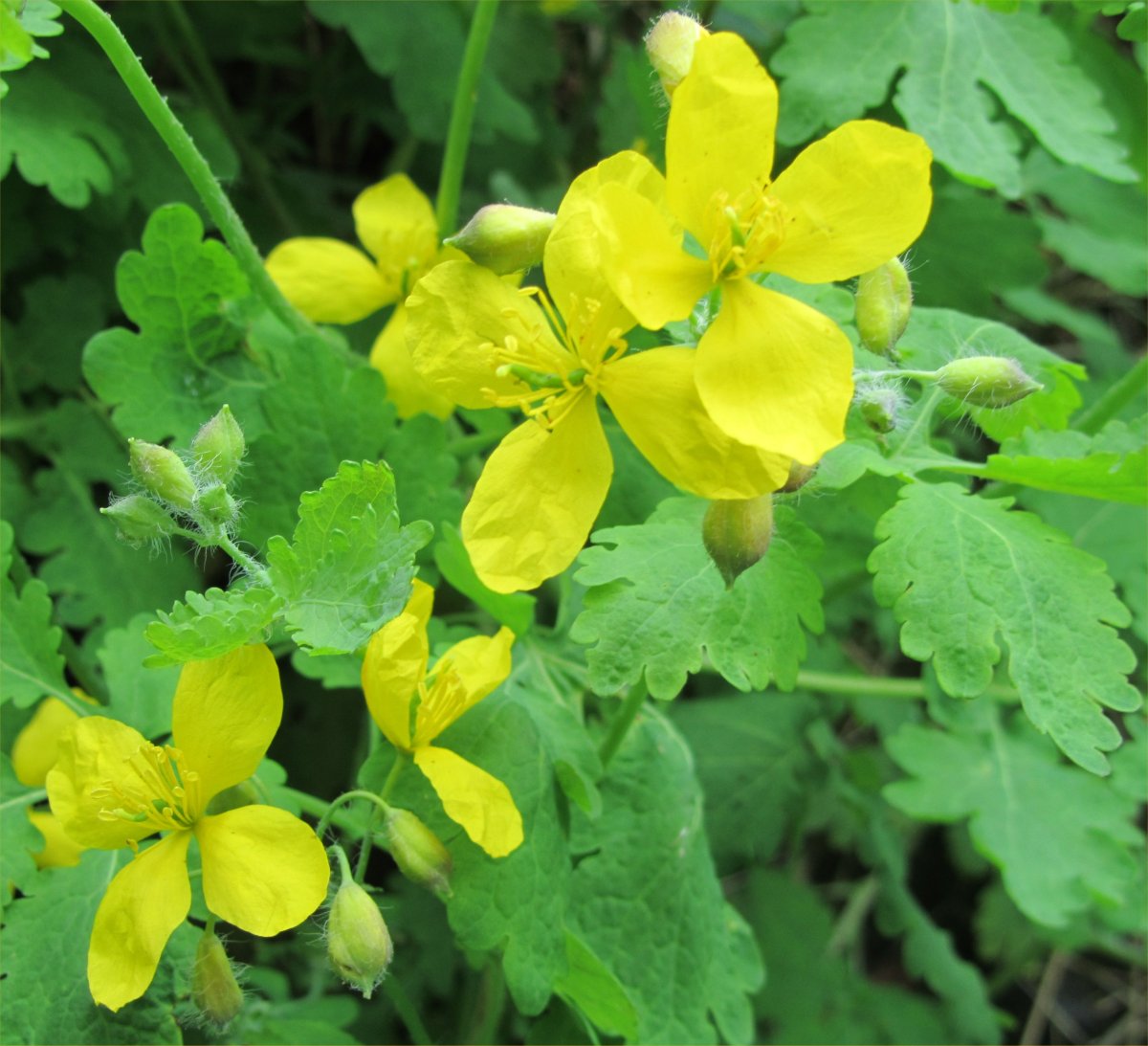 |
| Unrelated to the Lesser Celandine, which is buttercup family, and with a distinctive leaf shape and modest flowers, we found this one on Tyne Green, Hexham, Northumberland, in May 2013. |
back to index
| Fumitory family - Fumariaceae |
| CLIMBING CORYDALIS Ceratocapnos claviculata | |
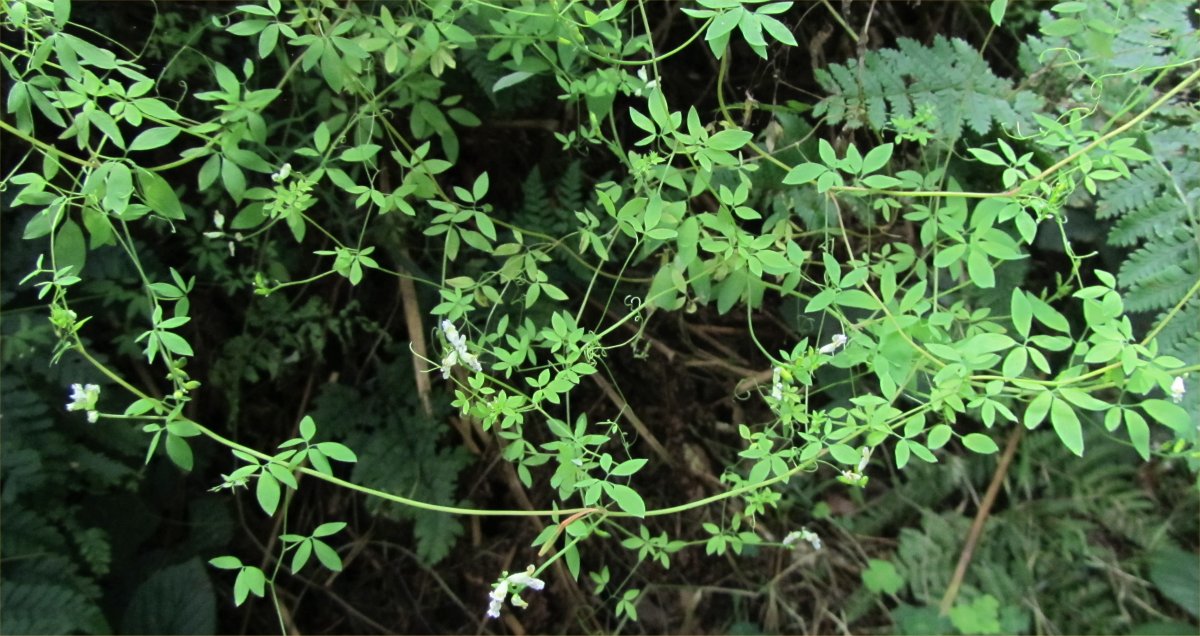 |
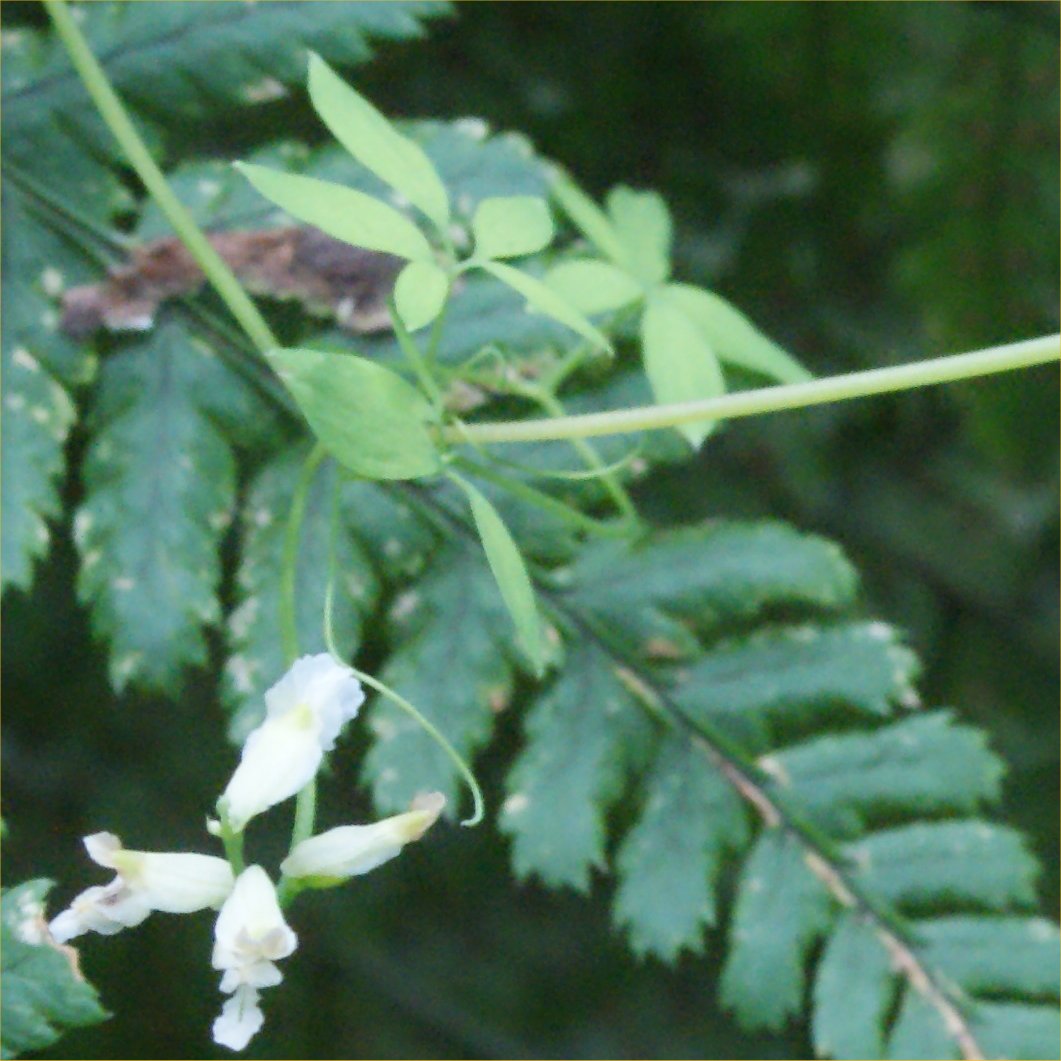
|
| We came across this delicate climber in woodland at Belsay, Northumberland, in August 2017. |
Back to index
| Pink family - Carophyllaceae |
| RED CAMPION Silene dioica | |
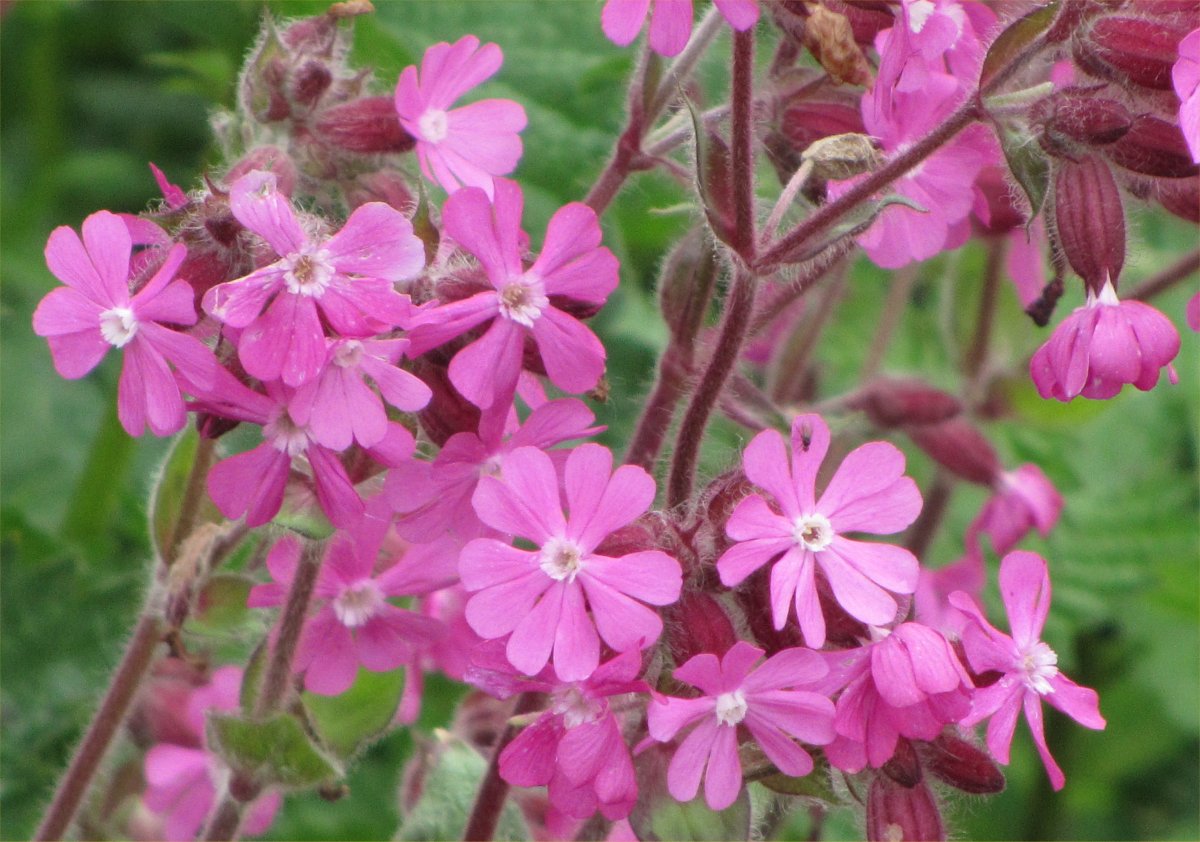 |

|
| A common sight, massed by roadsides and in fields. We saw these by the River Tyne near Hexham in June 2012, mixed in the right-hand photo with Dame's Violet (the white flowers!). |
Back to index
| SEA CAMPION Silene uniflora | |
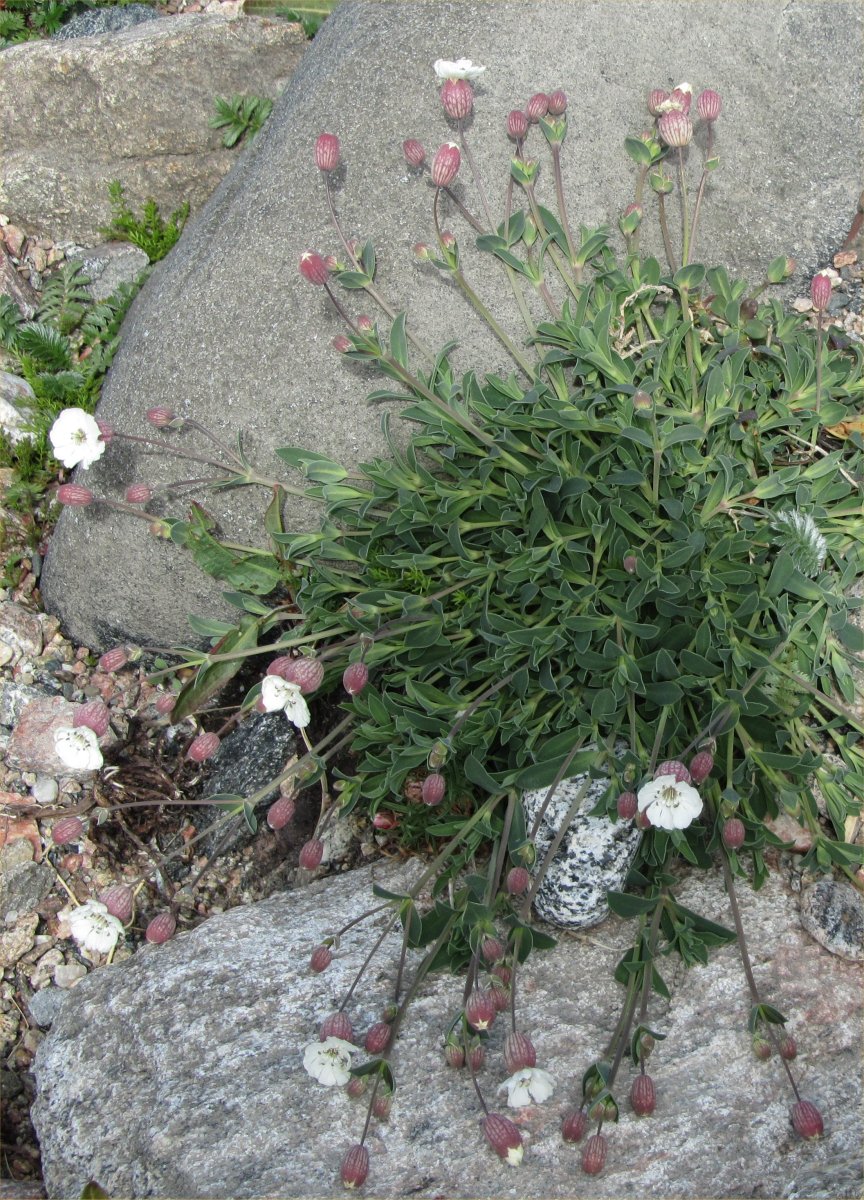 |
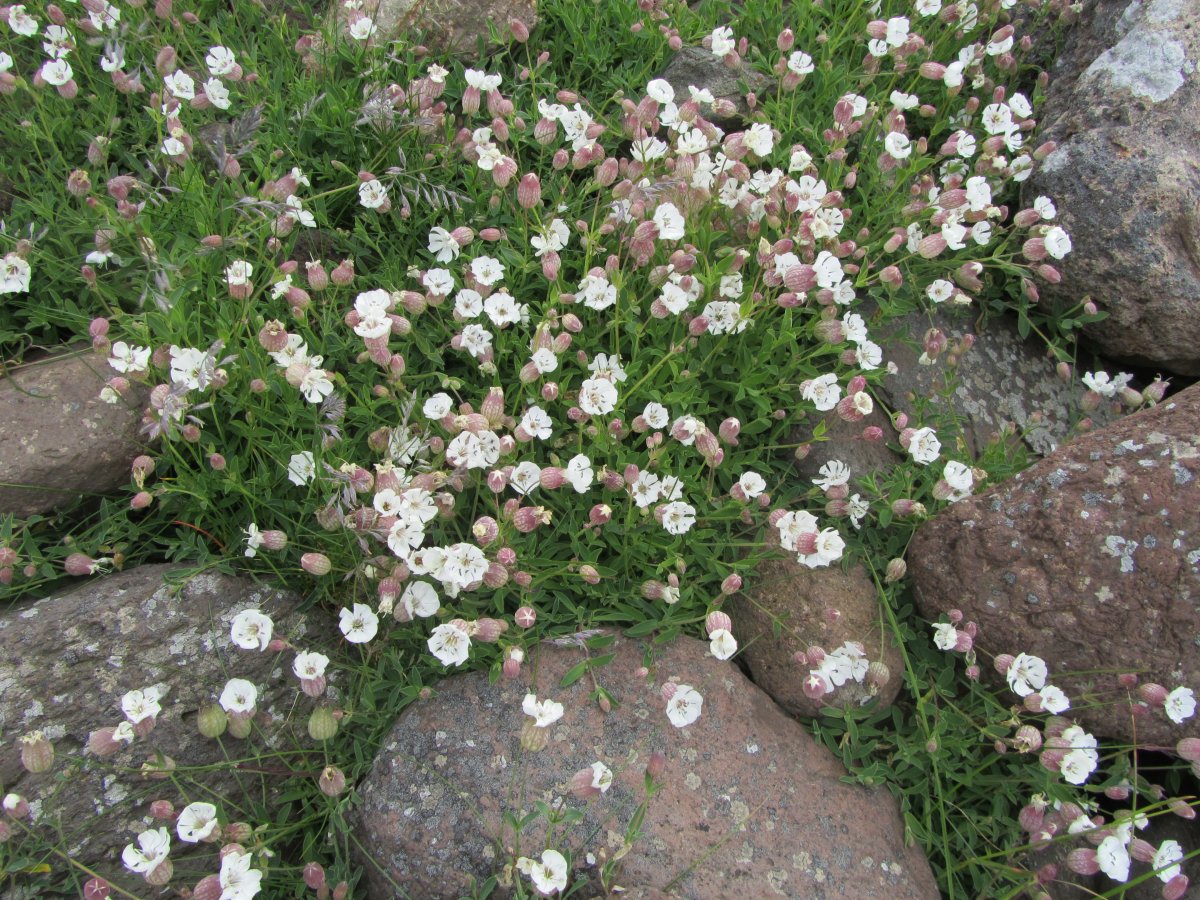
|
| We found this modest, attractive little flower by the sea in (LH picture) Balranald Nature Reserve, North Uist Outer Hebrides May 2012, and (RH picture) Stenness, Orkney July 2013. |
Back to index
| RAGGED ROBIN Lychnis flos-cuculi | |
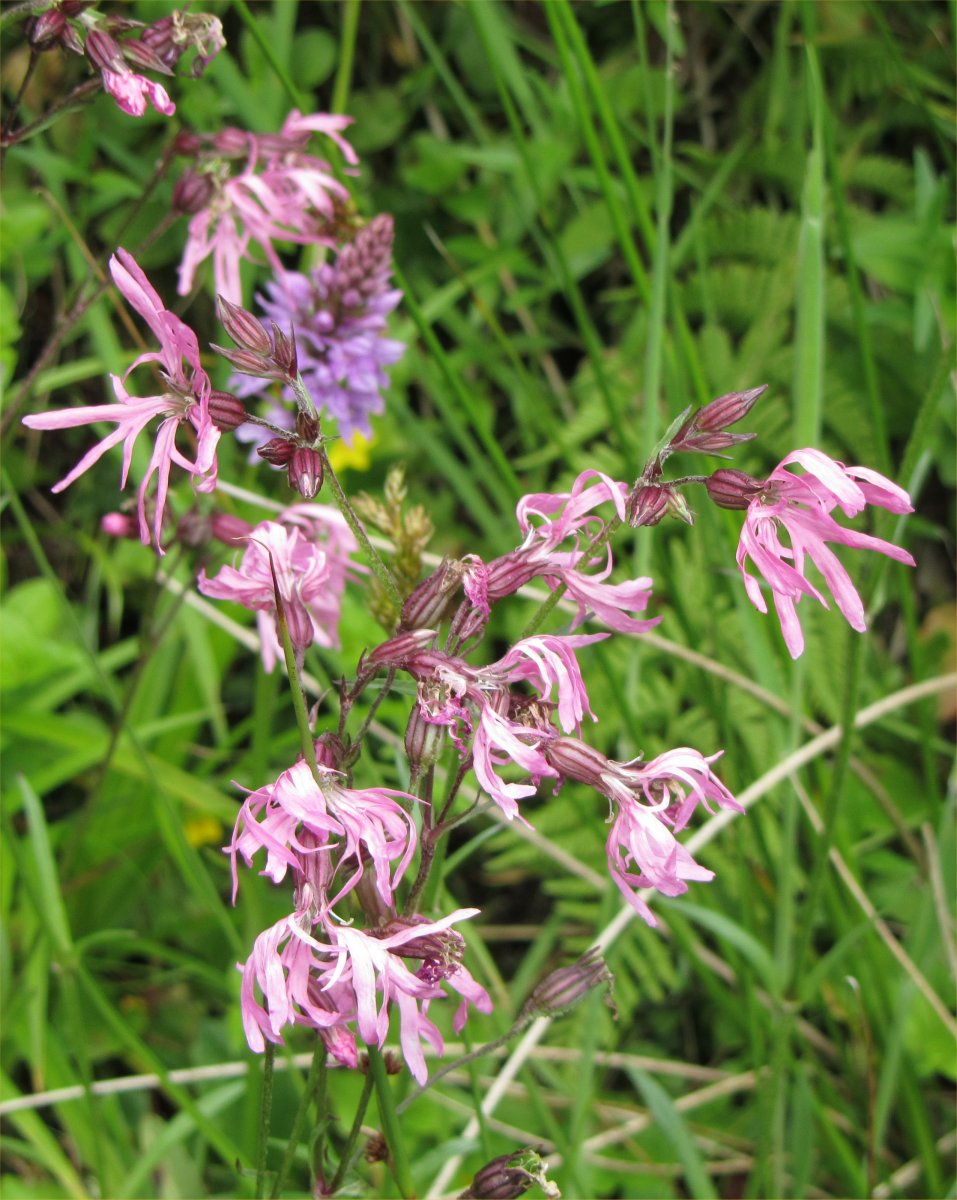 |
| A ubiquitous and easily recognized flower. We saw these among Common Spotted Orchids in Teesdale, though it could have been in one of many places. |
back to index
| MOSS CAMPION Silene acaulis | |
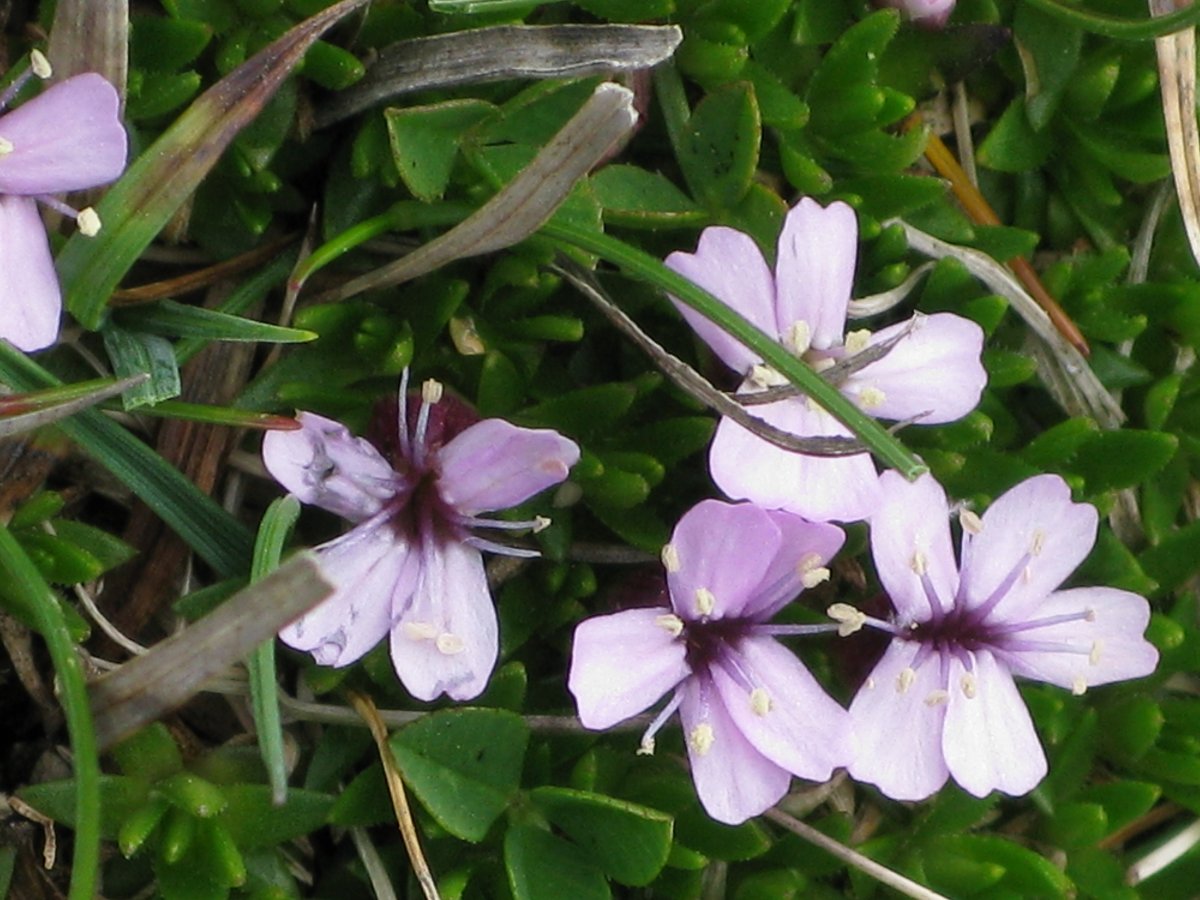 |
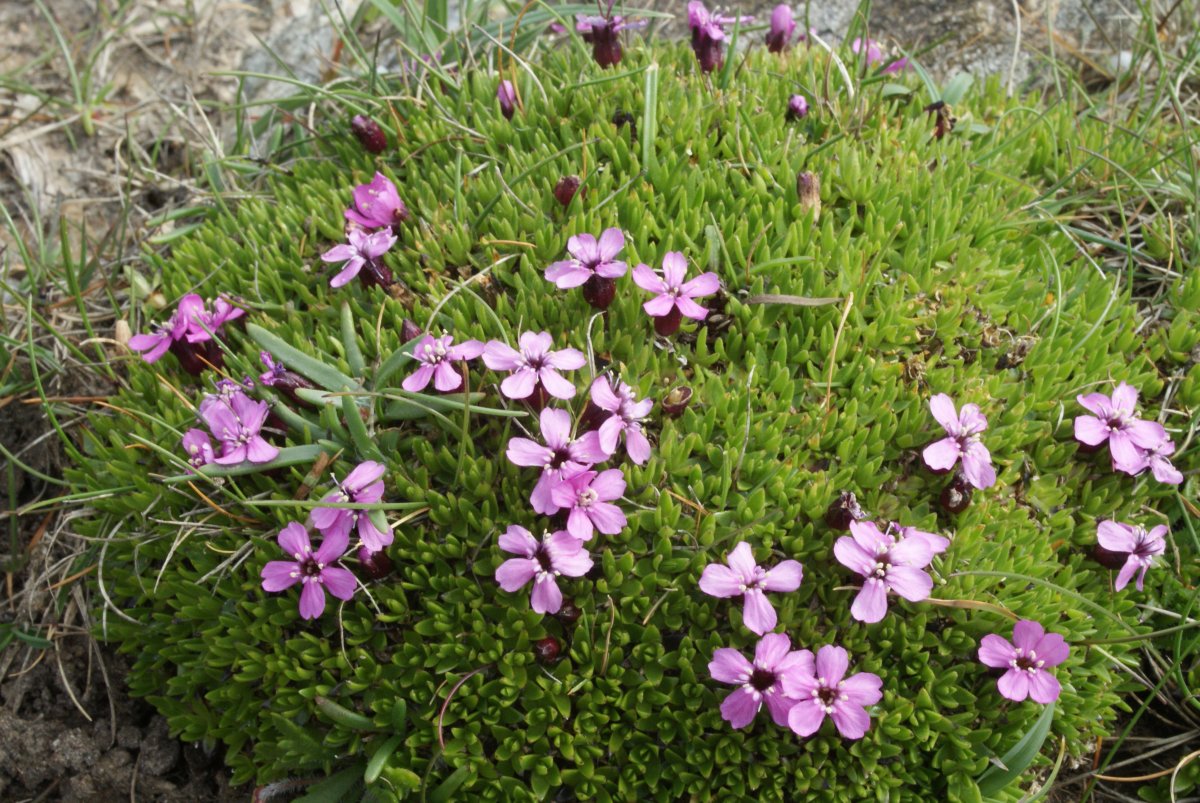
|
| This distinctive plant, with its cushion of leaves, was in Fethaland, Shetland June 2010. |
Back to index
| SOAPWORT Saponaria officinalis | |
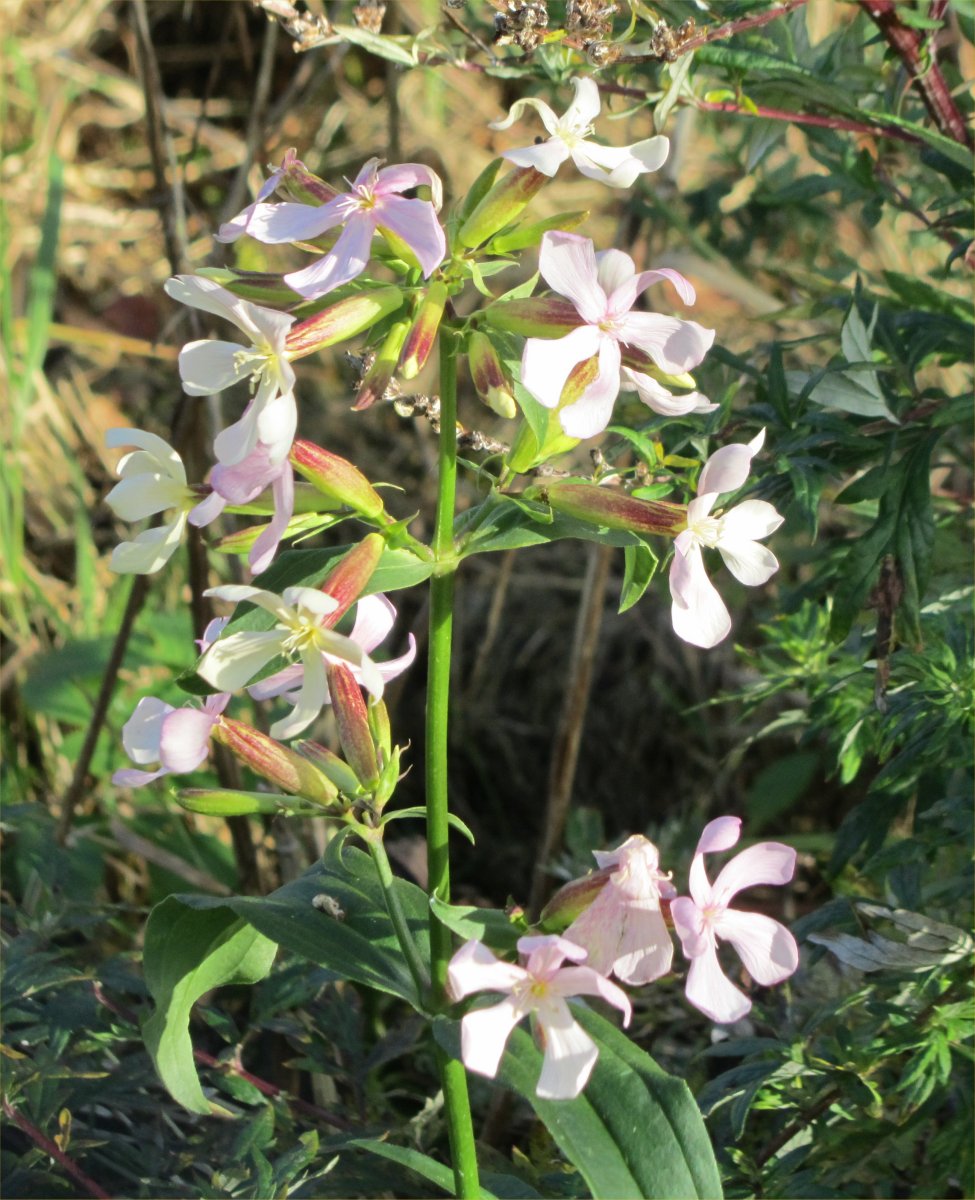 |
| Soapwort, seen here at the Wildfowl and Wetland Trust reserve in Washington, Tyne & Wear in October 2012, was indeed used formerly to make soap. |
back to index
| MAIDEN PINK Dianthus deltoides | |
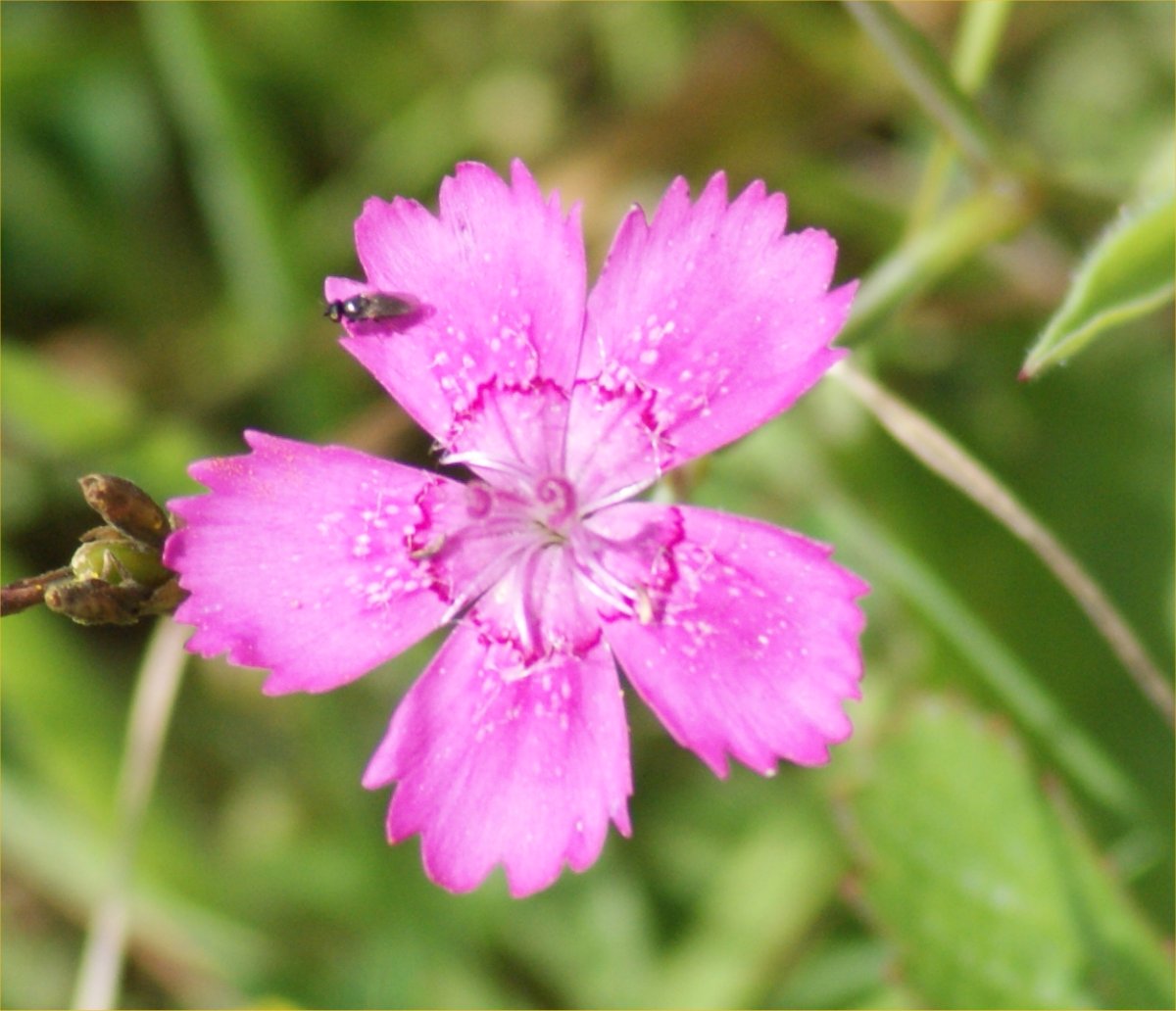 |
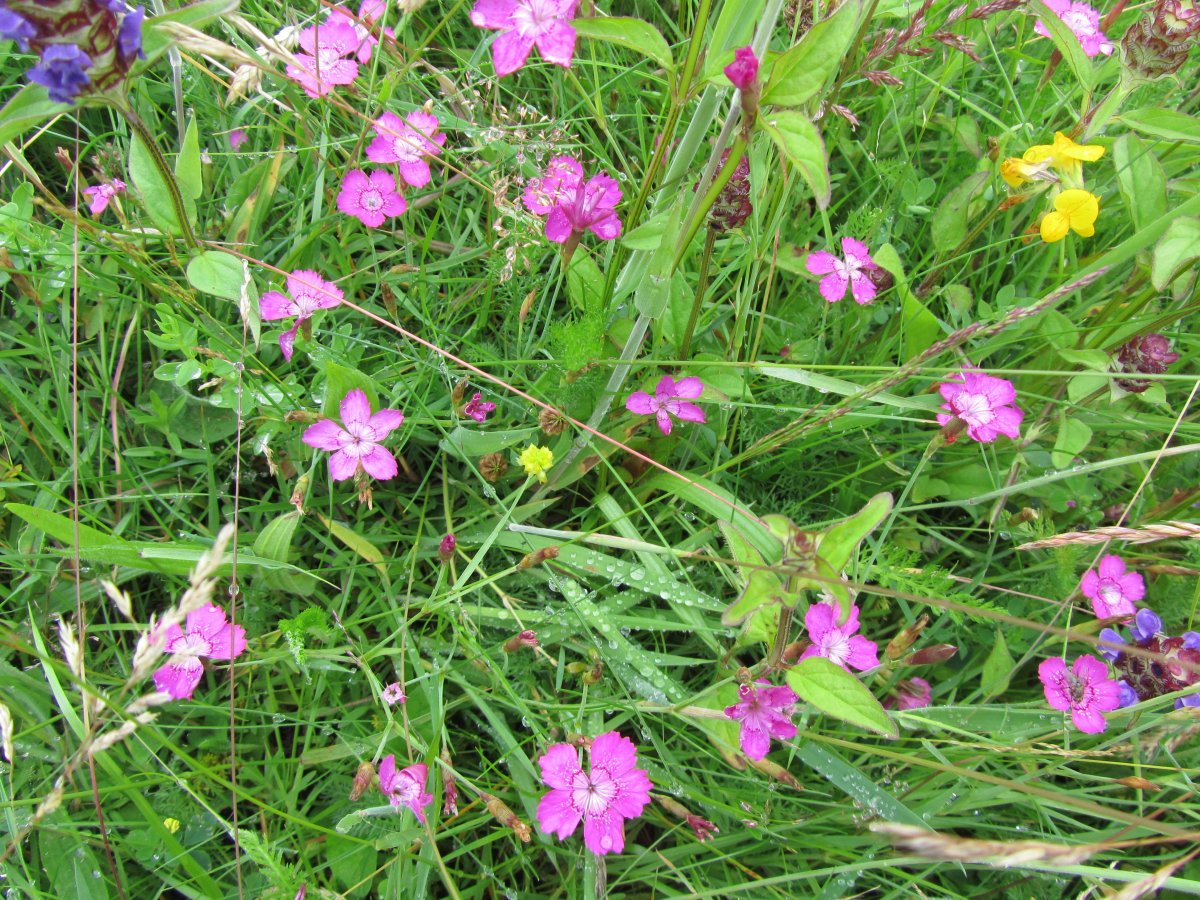
|
| Not often found, though abundant in some places, such as at Low Hauxley Nature Reserve, Northumberland coast in July 2011 and 2017 respectively. |
Back to index
| GREATER STITCHWORT Stellaria holostea | |
 |

|
| A familiar, attractive flower of waysides. These were at Tyne Green, Hexham, the RH ones on the wall of the railway embankment. |
Back to index
| GREATER CHICKWEED Stellaria neglecta | |
 |
| We're pretty sure this is Greater Chickweed, from the leaf shape and general habit, but expert confirmation (or disagreement!) would be welcomed. We found it at Belsay, Northumberland, in May 2016. |
back to index
| SPRING SANDWORT Minuartia verna | |
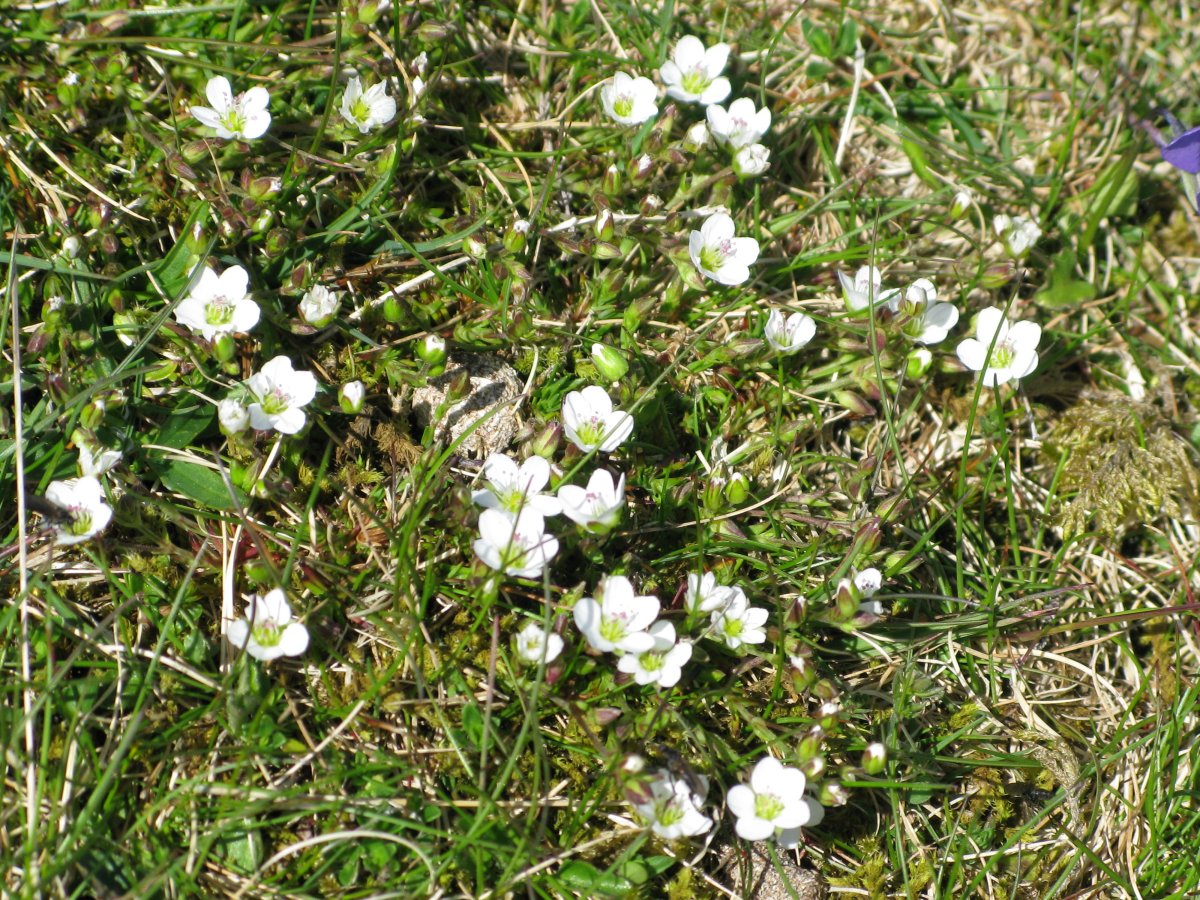 |

|
| We saw these in June 2010 in Upper Teesdale, on the sugar limestone. Although the much rarer Teesdale Sandwort can also be found there, we think this is Spring Sandwort. We would be delighted to be proved wrong! |
Back to index
| LESSER SEA-SPURREY Spergularia marina | |
 |
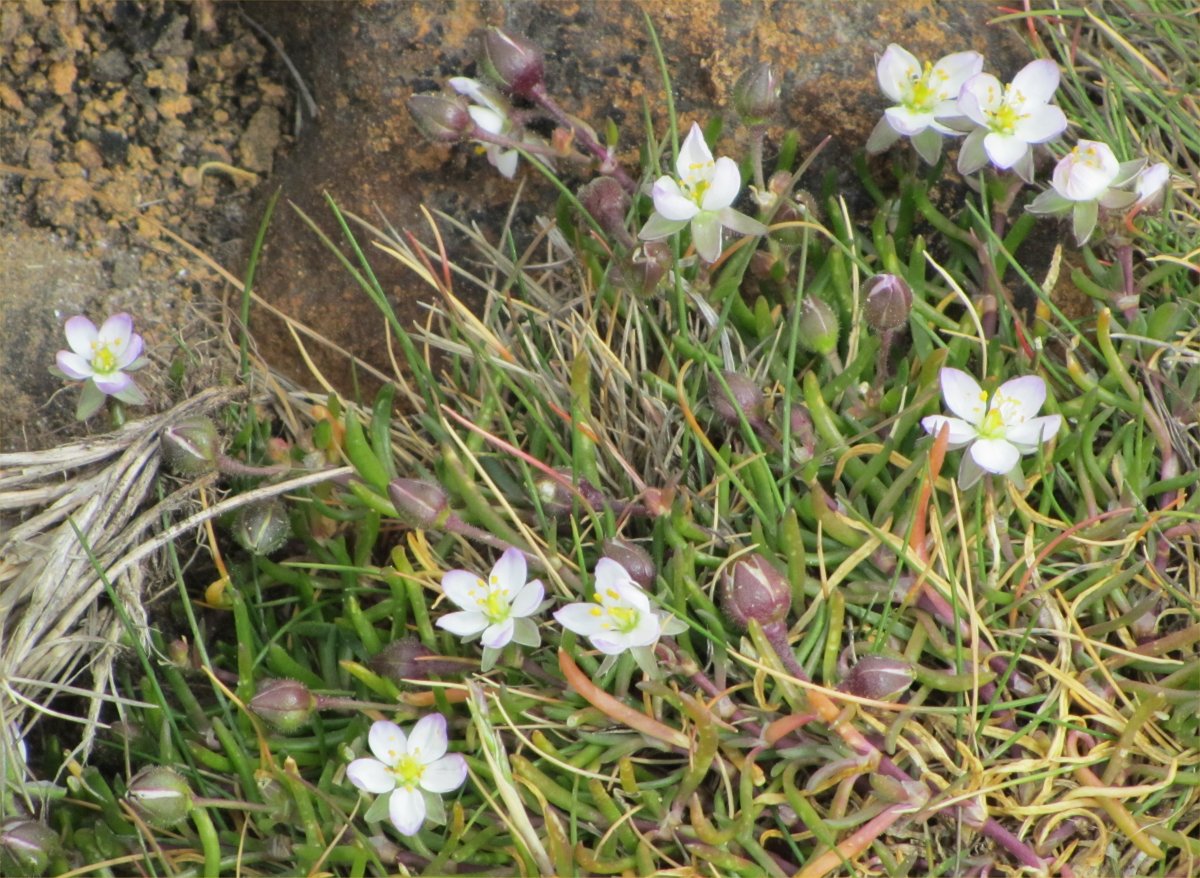
|
| We came across this at Beadnell, on the Northumberland coast. We're pretty sure it is 'Lesser', rather than one of the others, from the length of the sepals, but as always, correction is welcomed! |
Back to index
| KNOTTED PEARLWORT Sagina nodosa | |
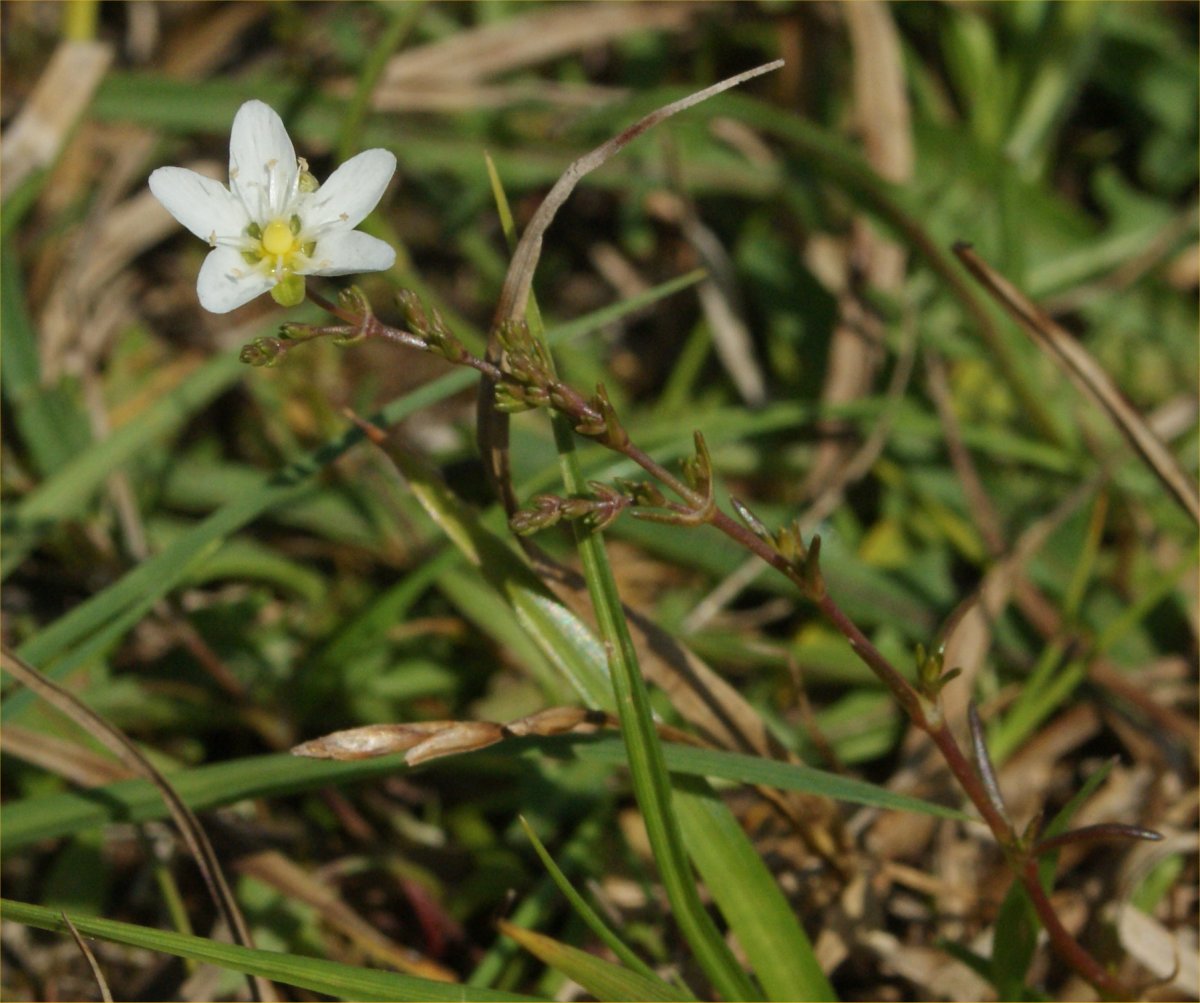 |
| Identified by its distinctive stem, this tiny specimen was at Cawfield, West Northumberland in July 2014 |
back to index
| Dock family - Polygonaceae |
| COMMON BISTORT Persicaria bistorta | |
 |
| Seen near Low Force in Teesdale, June 2010 |
back to index
| AMPHIBIOUS BISTORT Persicaria amphibia | |
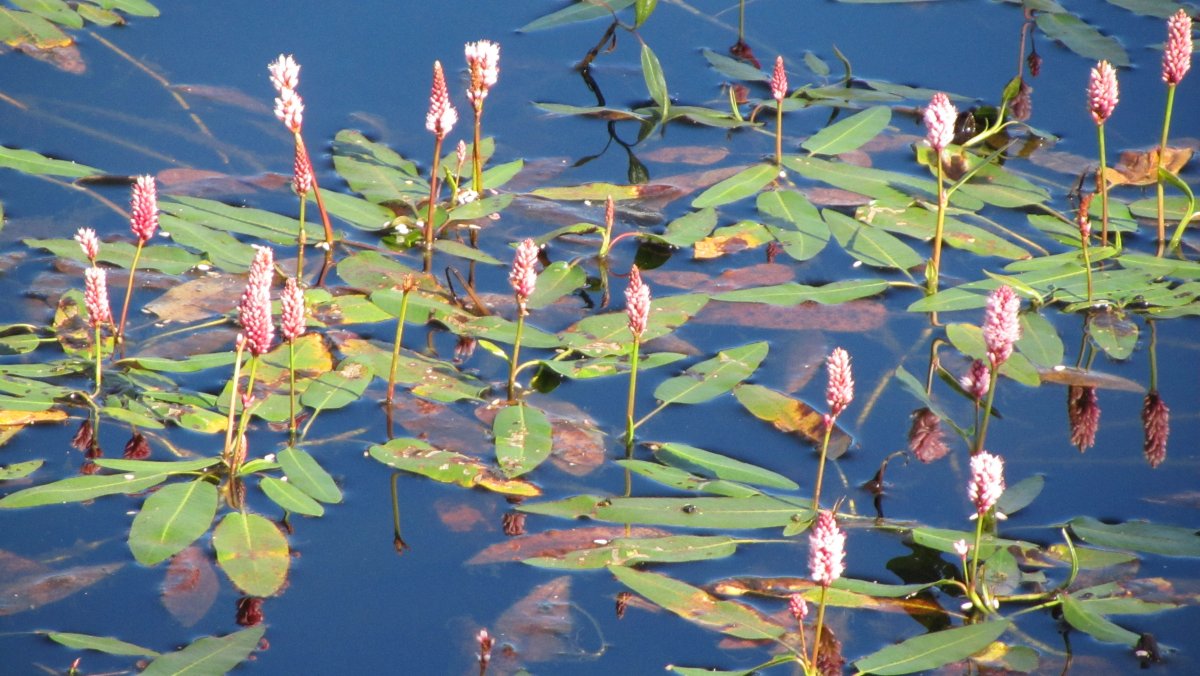 |
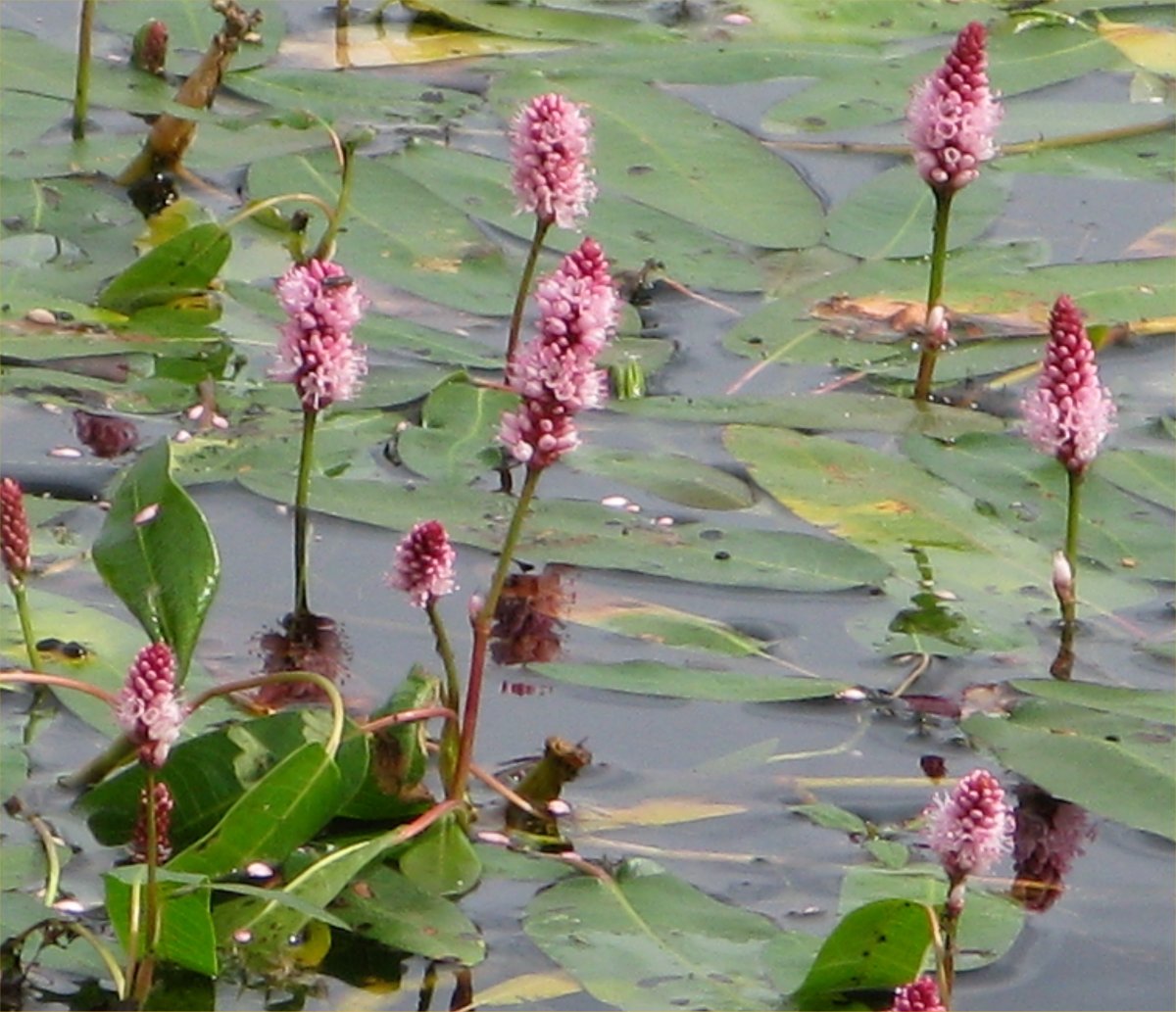
| 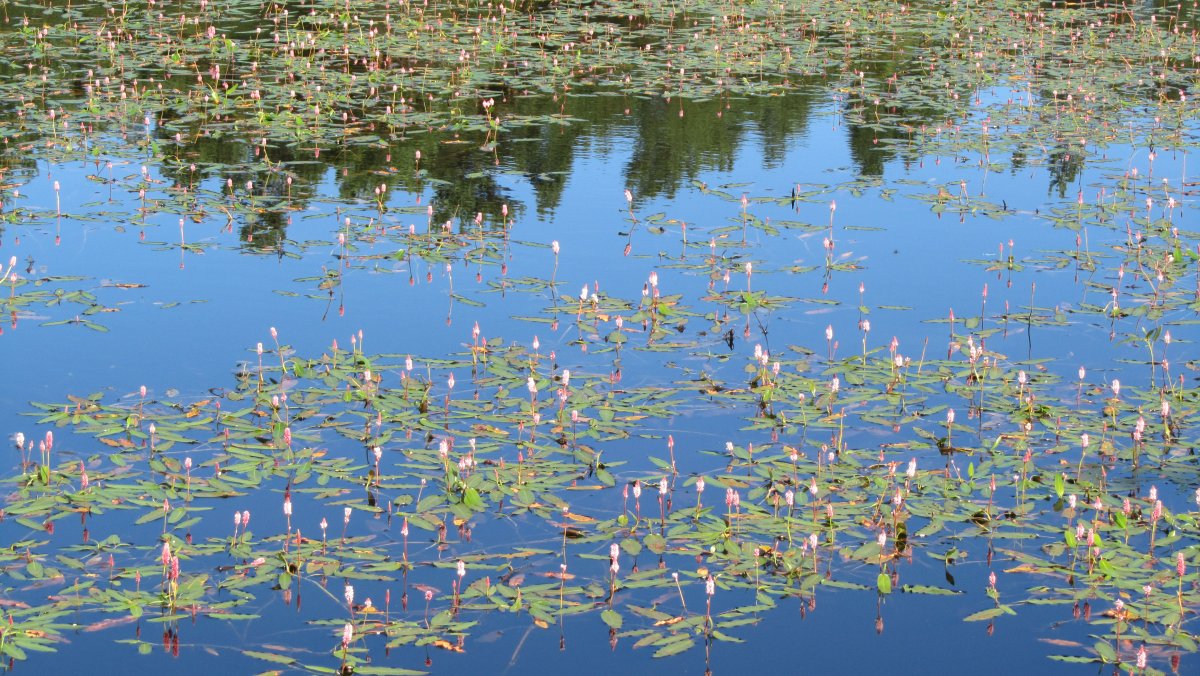
|
| Commonly seen massed in water, as at Woodhorn, Northumberland coast, in August 2009 (centre picture) and Cragside in August 2017. |
Back to index
| LESSER KNOTWEED Persicaria campanulata | |
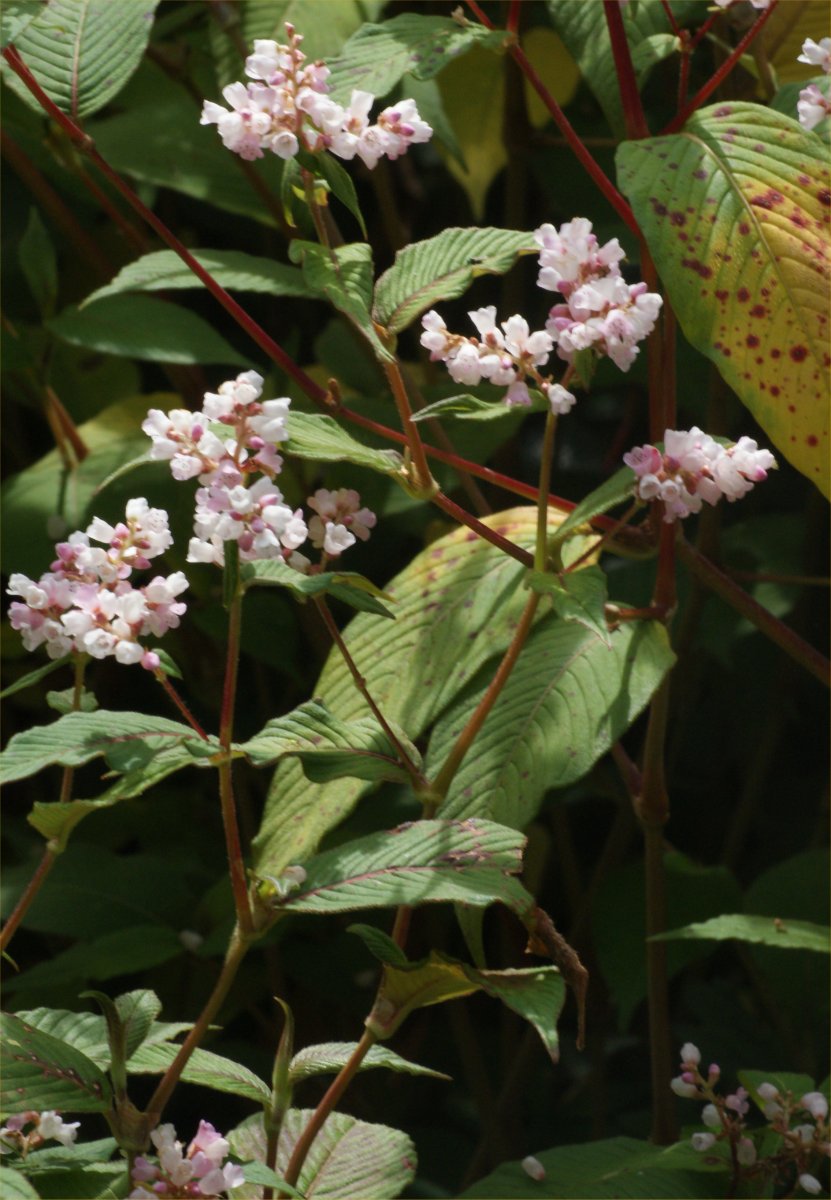 |
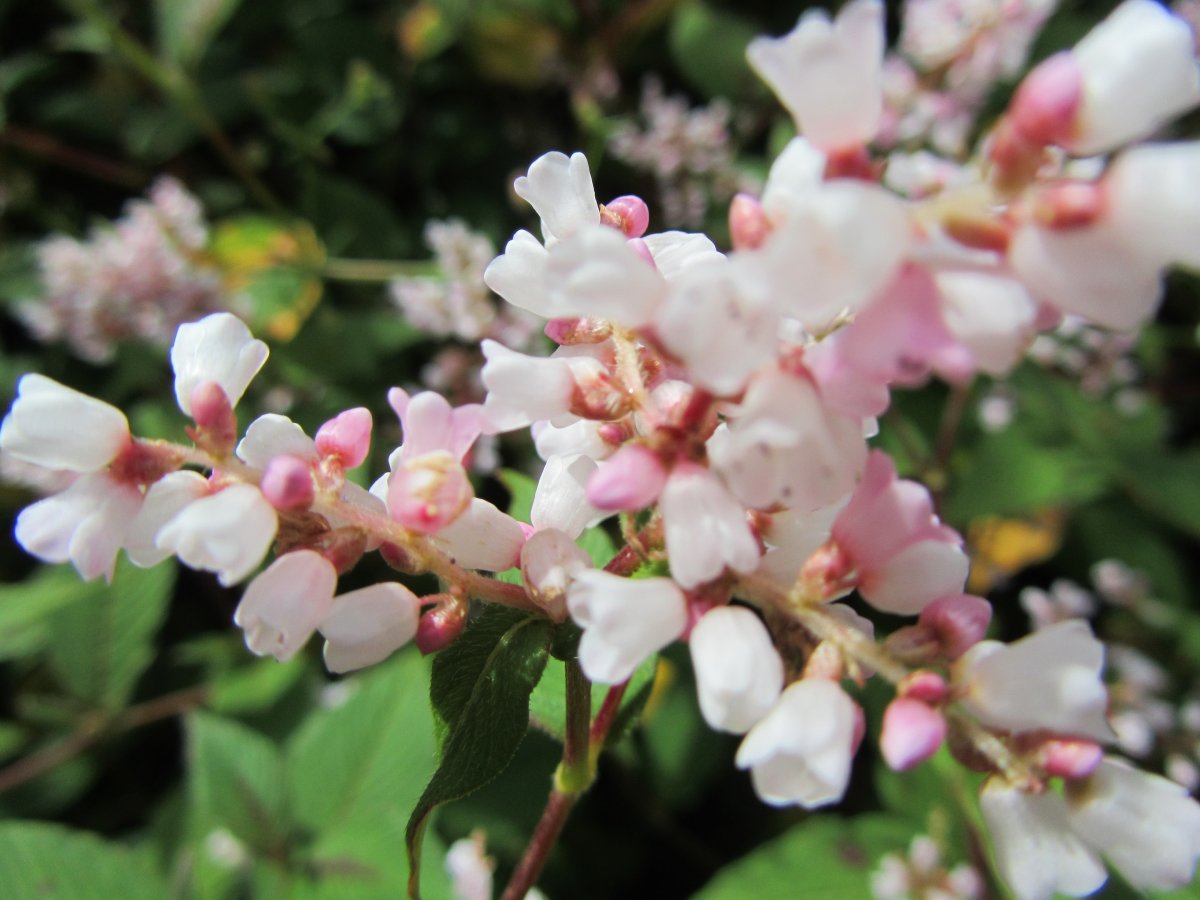
|
| A garden escape, like Japanese Knotweed, but nowhere near as invasive. This plant was in the conservatory at Wallington, though it can be found in the wild too. |
Back to index
| Thrift family - Plumbaginaceae |
| THRIFT Armeria maritima | |
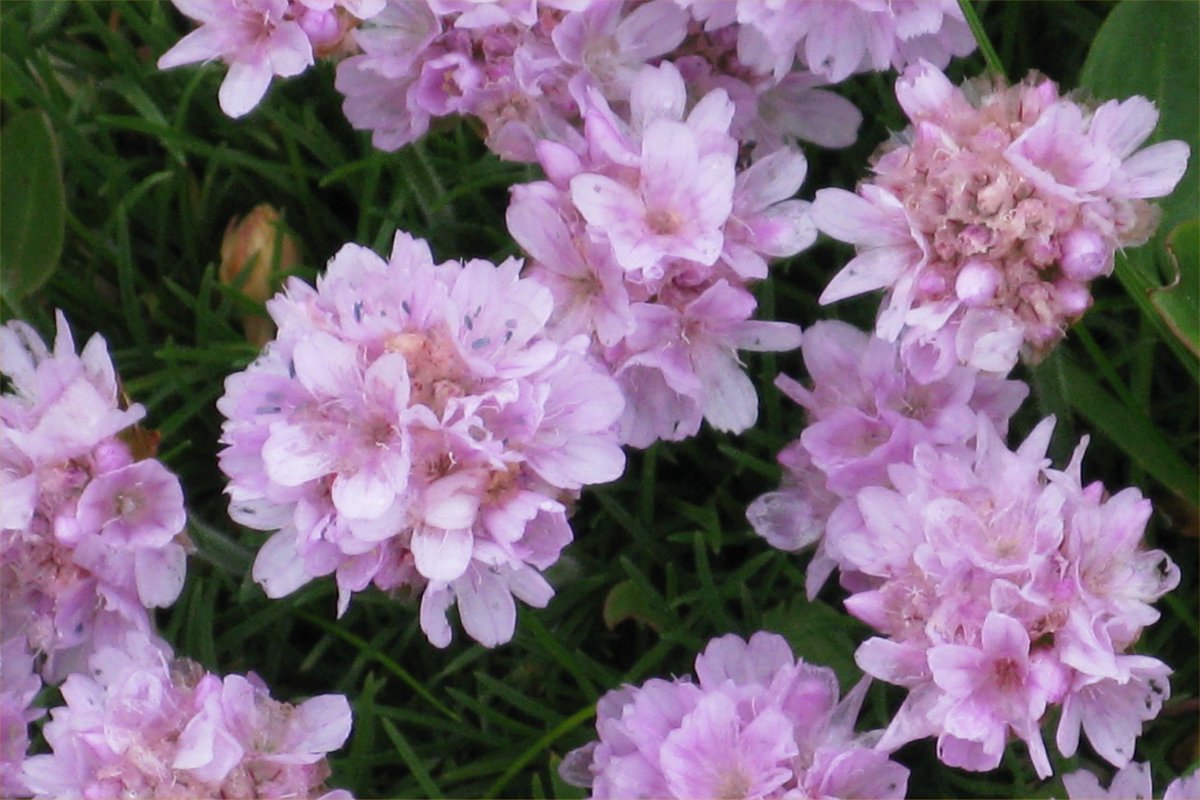 |
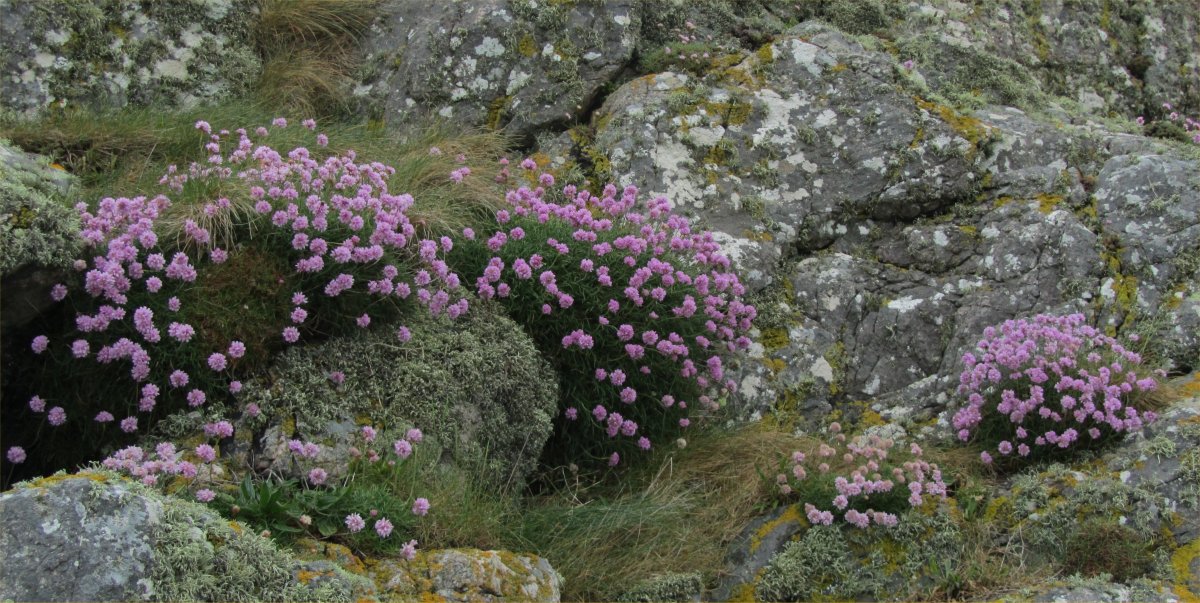
| 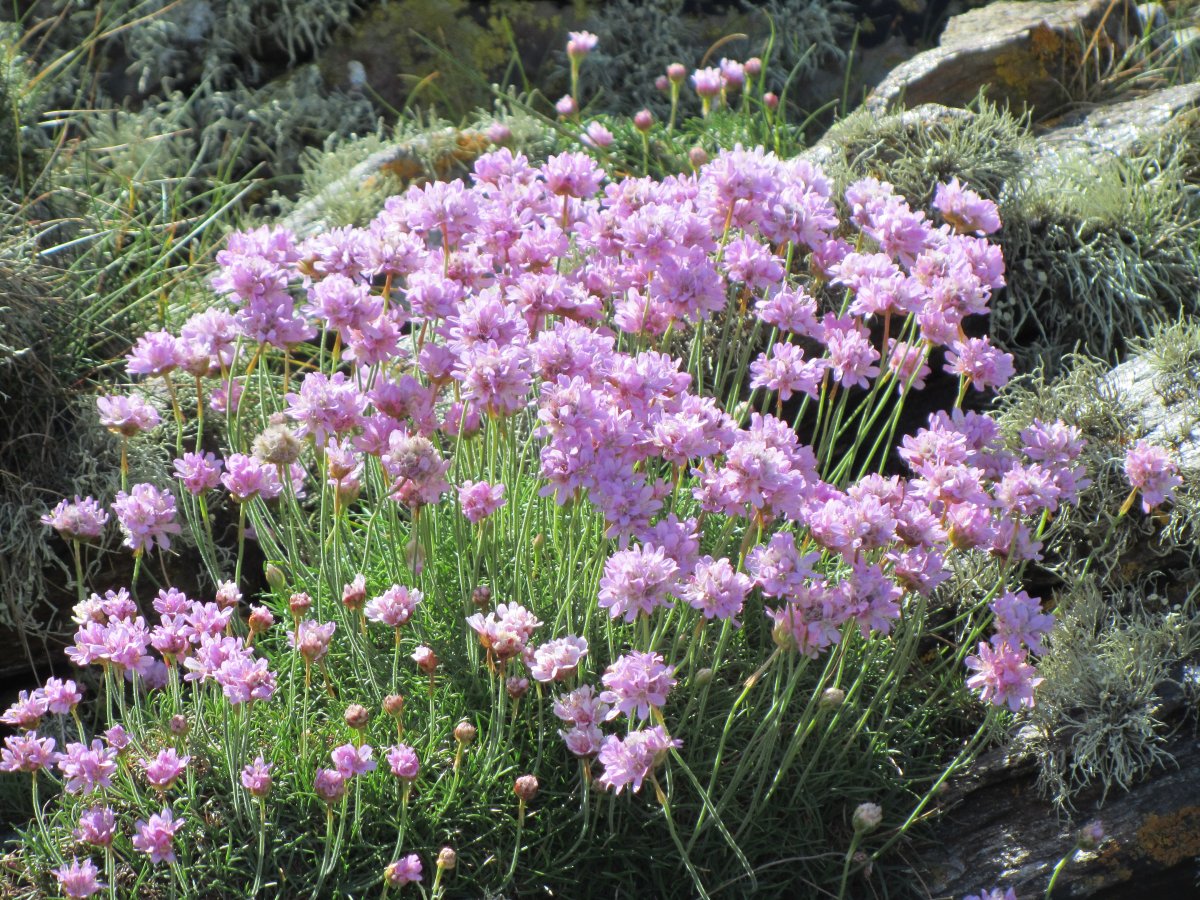
|
| Always a joy to see, when massed on and among rocks by the sea. These were at Esha Ness, Shetland, in June 2010, and on Mull at, respectively, Iona and Ardalanish, both in May 2017. |
Back to index
| Rock-Rose family - Cistaceae |
| ROCK-ROSE Helianthemum nummularium | |
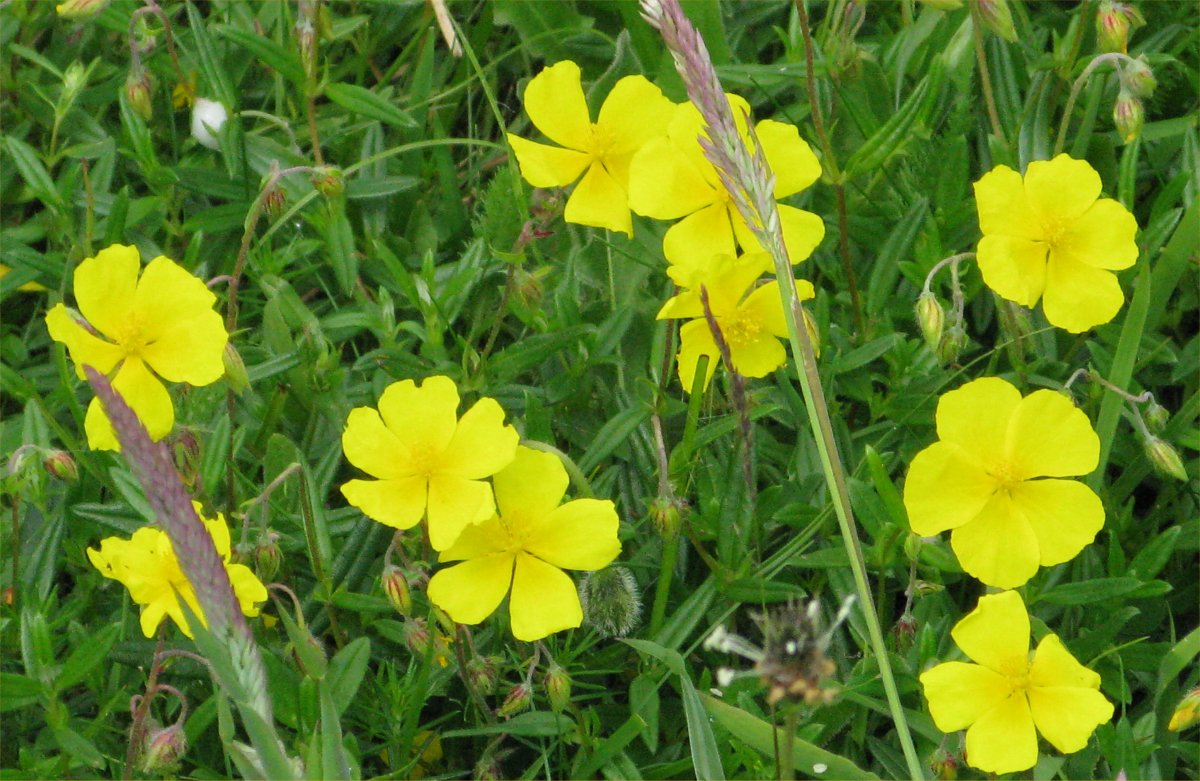 |
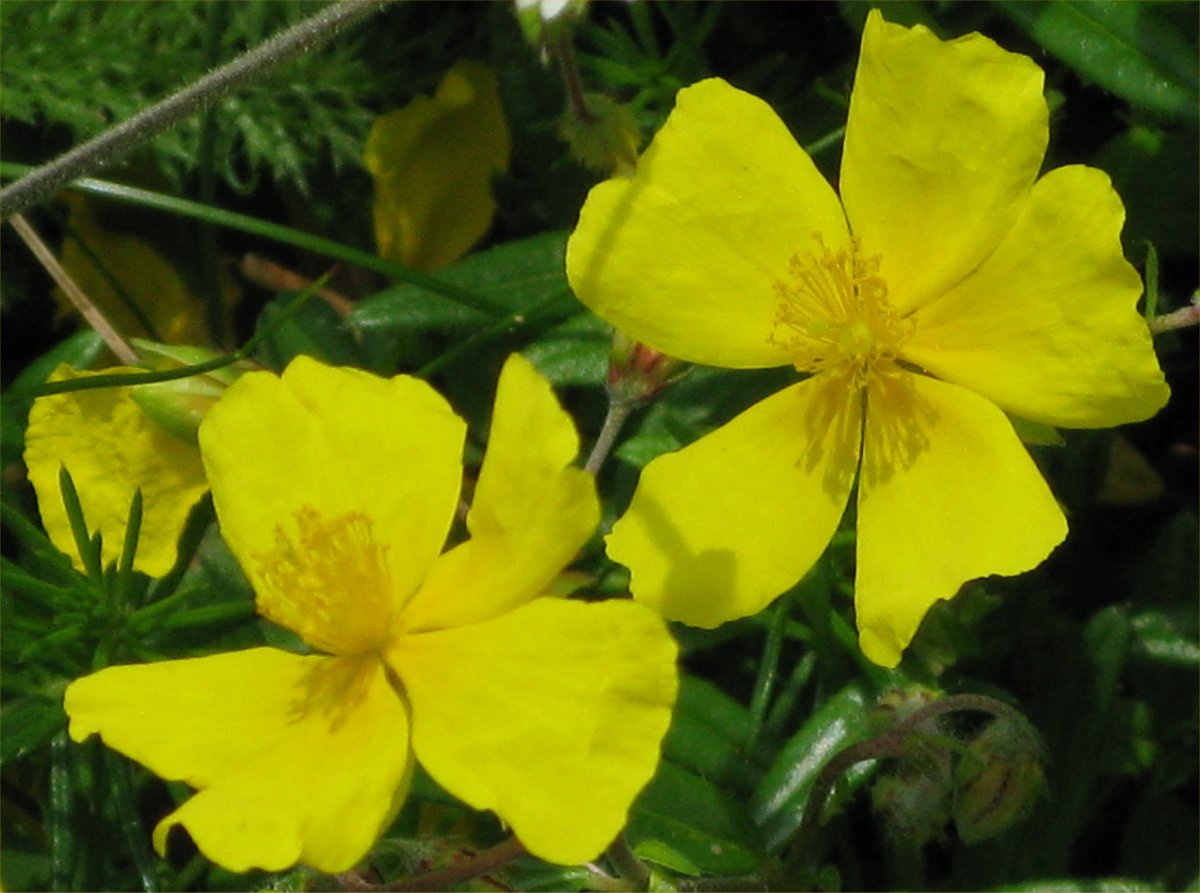
|
| Photographed in Teesdale, June 2009. though seen in many other places too. |
Back to index
| St John's Wort family - Clusiaceae |
| HAIRY ST JOHN'S WORT Hypericum hirsutum | |
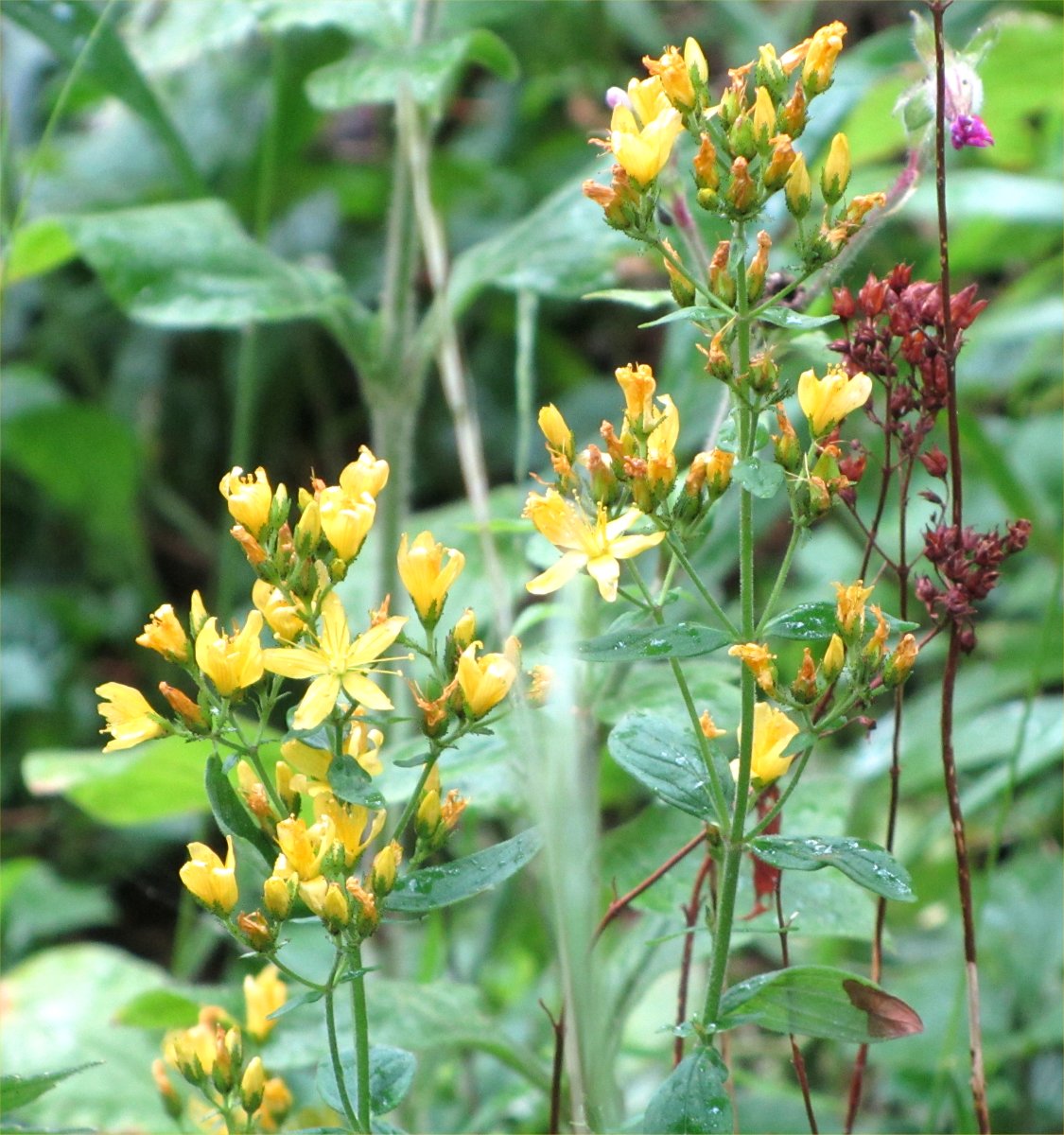 |

|
| Found at Allenbanks, West Northumberland in July 2011 and Tyne Green in Hexham in July 2012. |
Back to index
| TUTSAN Hypericum androsaemum | |
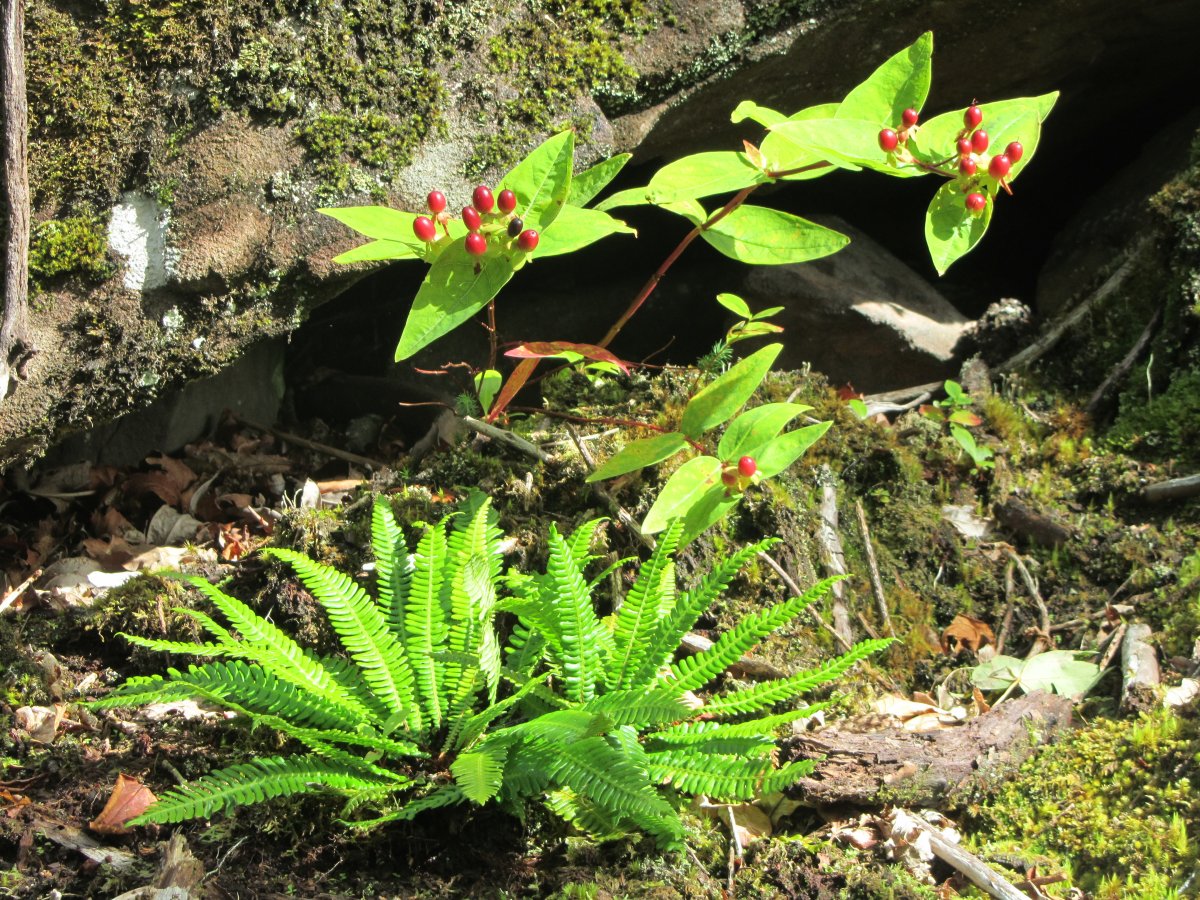 |
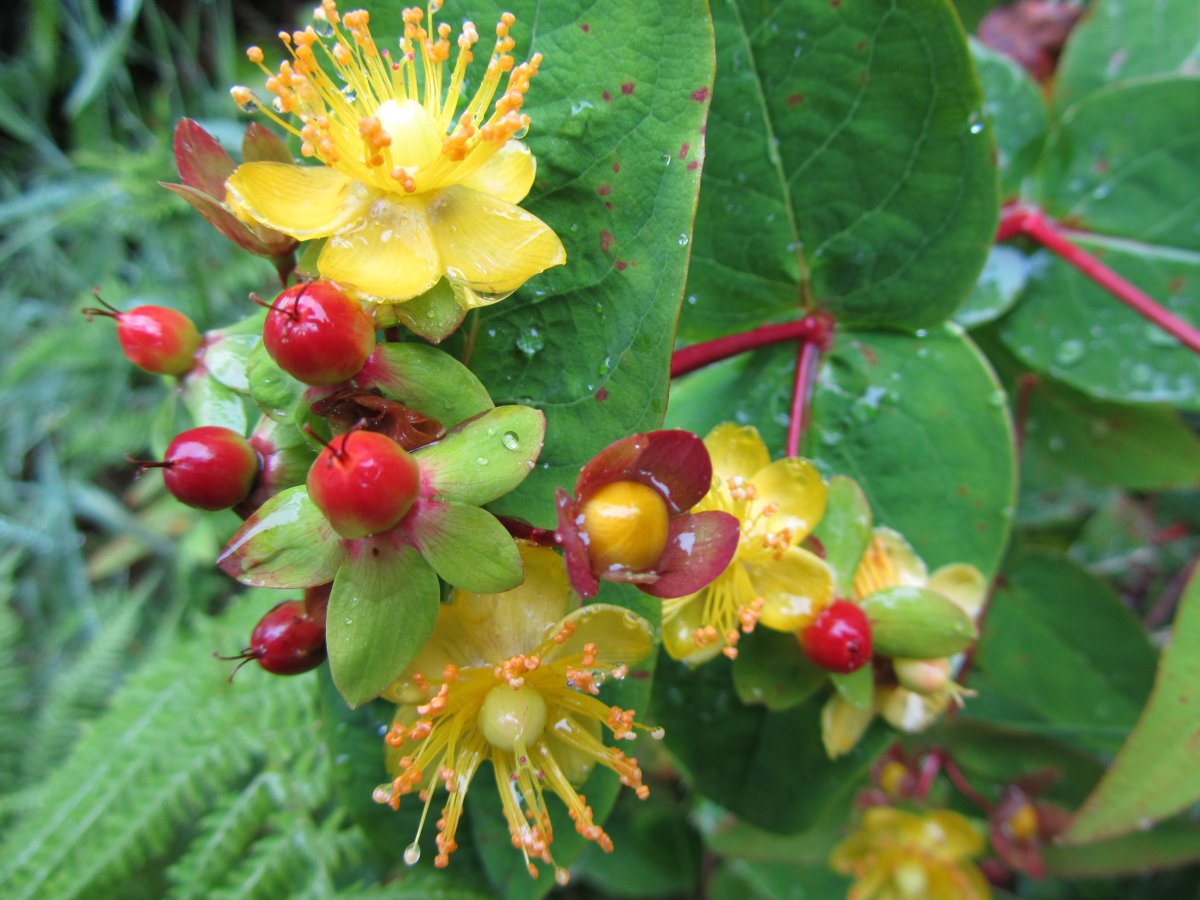
|
| Quite common in gardens, but these two were semi-wild in Aros Park, Tobermory, Mull, the seeding specimen with ferns at the end of August 2013, the one still partly in flower in July 2016. |
Back to index
| Mallow family - Malvaceae |
| COMMON MALLOW Malva sylvestris | |
 |
| By the River Tyne in Hexham, July 2009 |
back to index
| MUSK MALLOW Malva moschata | |
 |

|
| Distinguished from Common Mallow by petal colour and separation, and by leaf shape, these were both found at Druridge Bay, on the Northumberland coast, in August 2009 and July 2011 respectively. |
Back to index
| Violet family - Violaceae |
| COMMON DOG VIOLET Viola riviniana | |
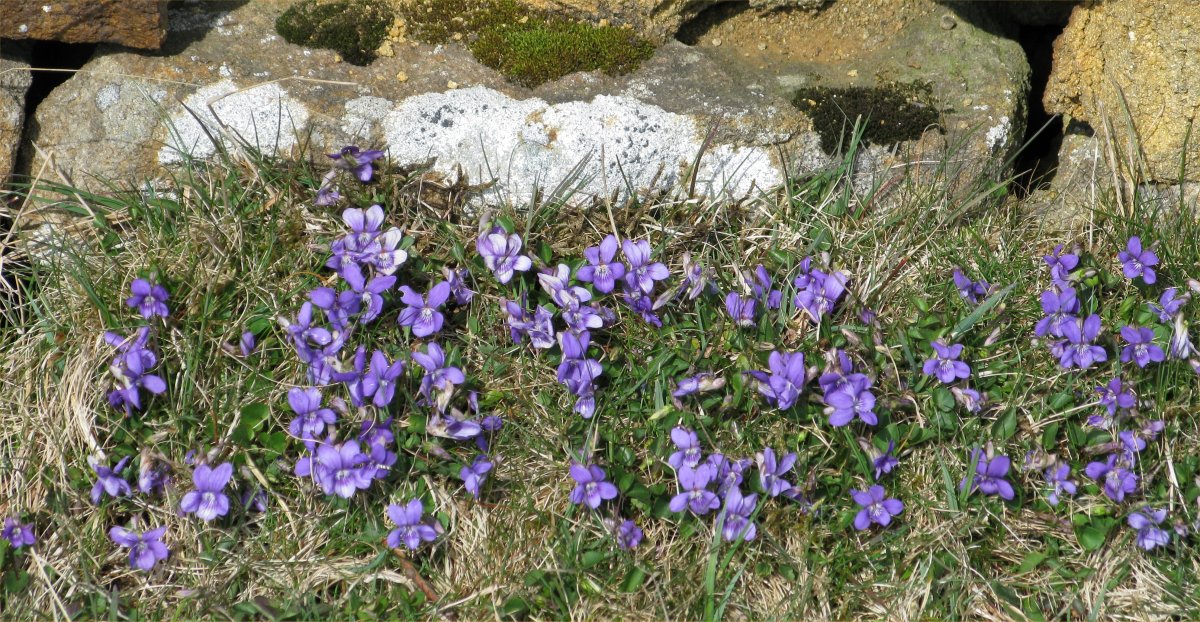 |
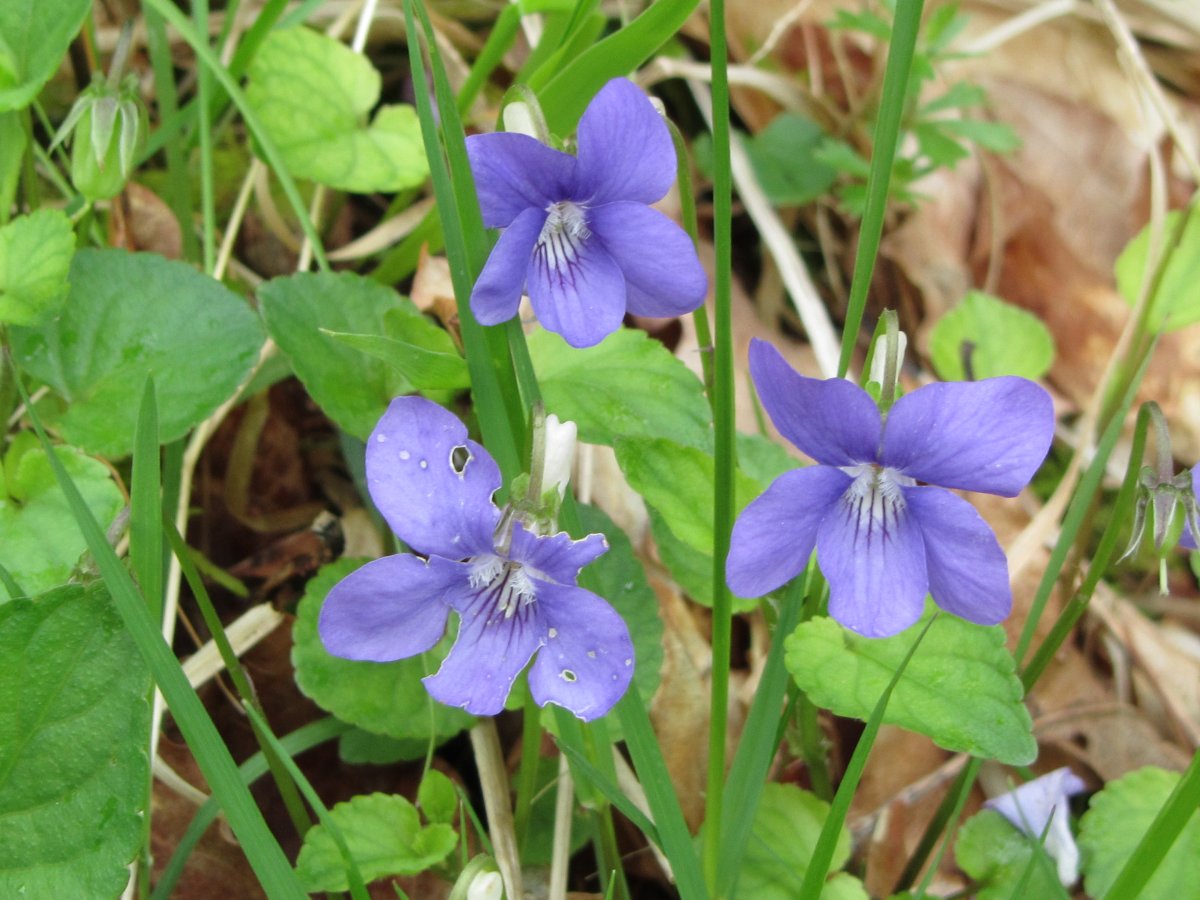
| 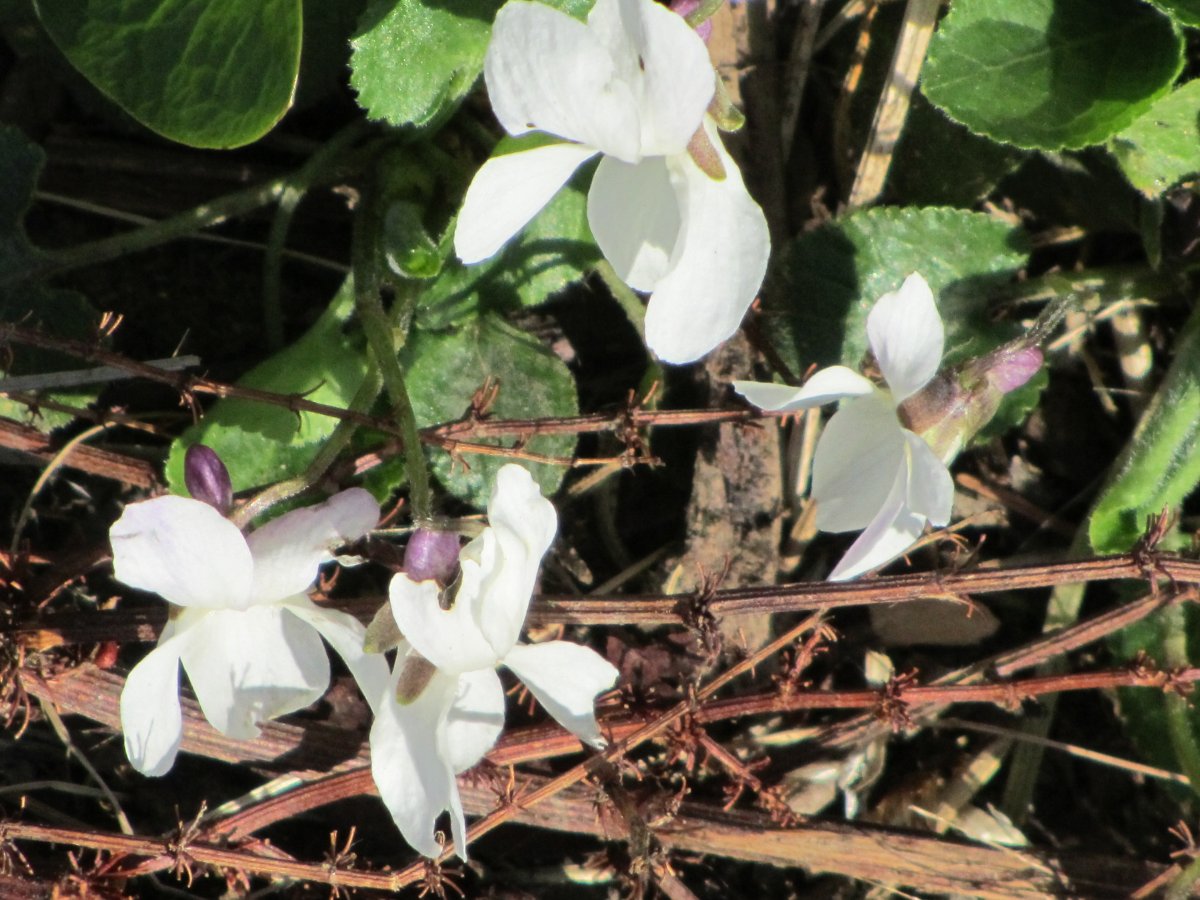
|
| by Hadrian's Wall April 2009, Ariundle, Ardnamurchan, May 2014, the white ones by Wydon Water, Hexham March 2012 |
Back to index
| MARSH VIOLET Viola palustris | |
 |
| Found in Teesdale, May 2013 |
back to index
| WILD PANSY Viola tricolor | |
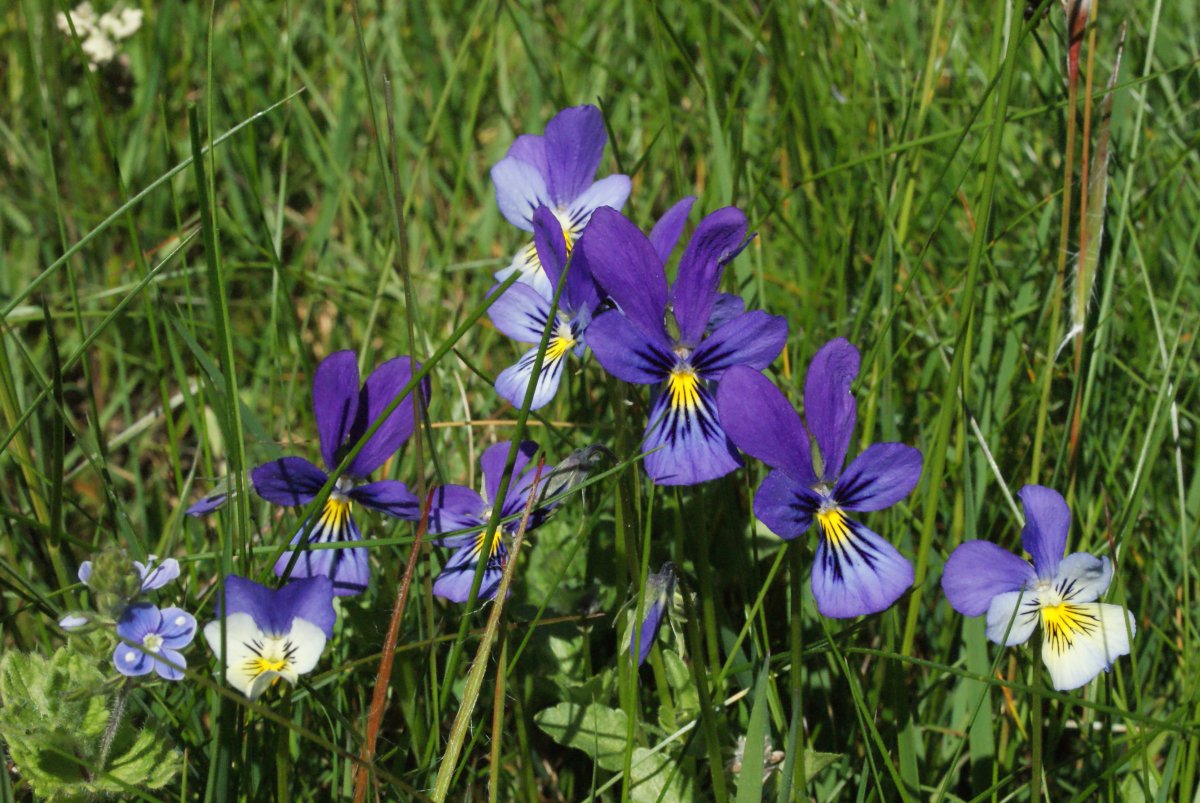 |
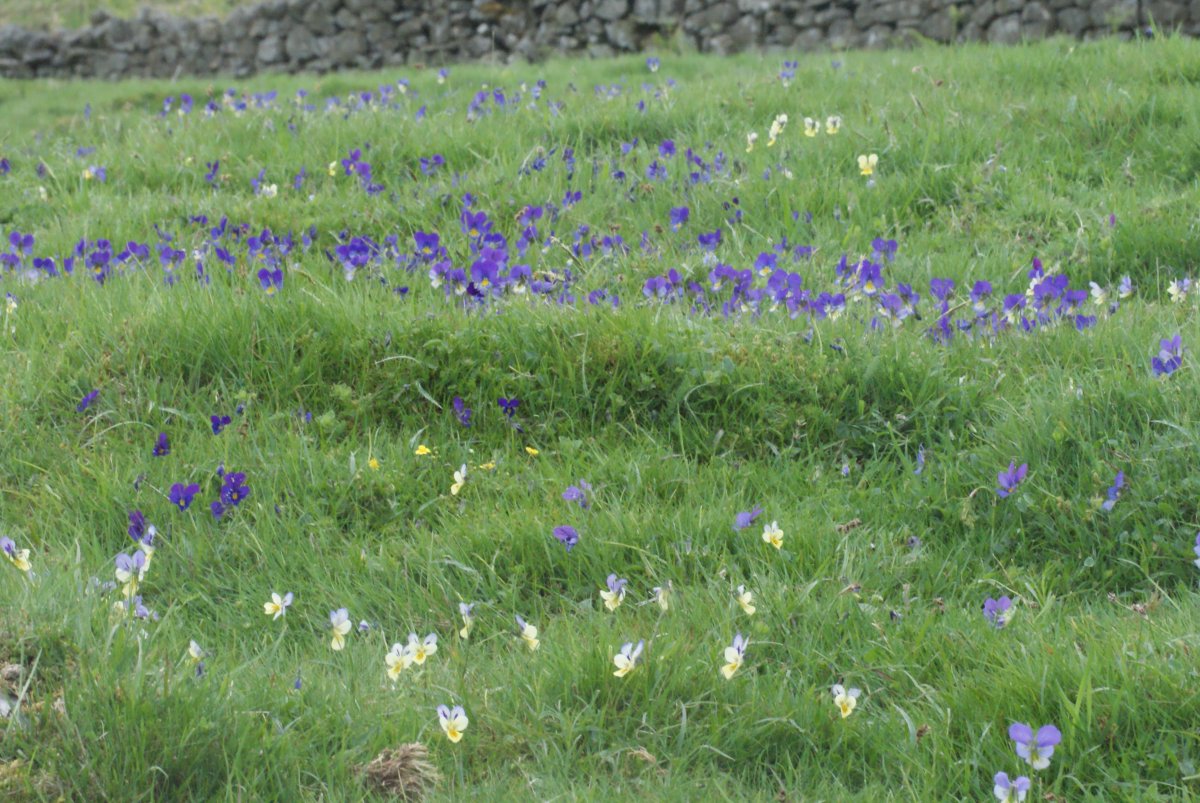
|
| Delightful ground cover, those on the left were taken at Allenbanks, West Northumberland in May 2012, the others in Teesdale, June the same year. |
Back to index
| MOUNTAIN PANSY Viola lutea | |
 |

| 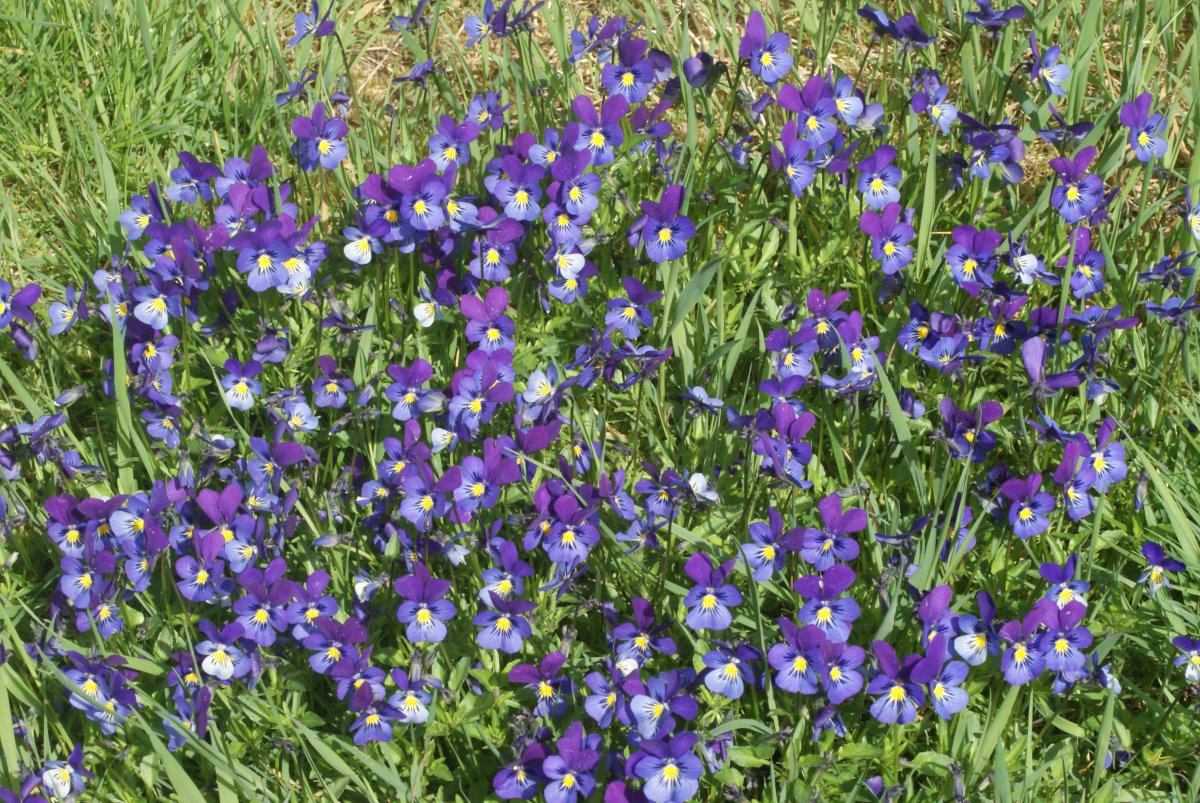
|
| Not easily distinguished from Wild Pansy, the left-hand ones were at Allenbanks, West Northumberland in May 2015, the others in Upper Teesdale in June 2010 |
Back to index
| SEASIDE PANSY Viola curtisii | |
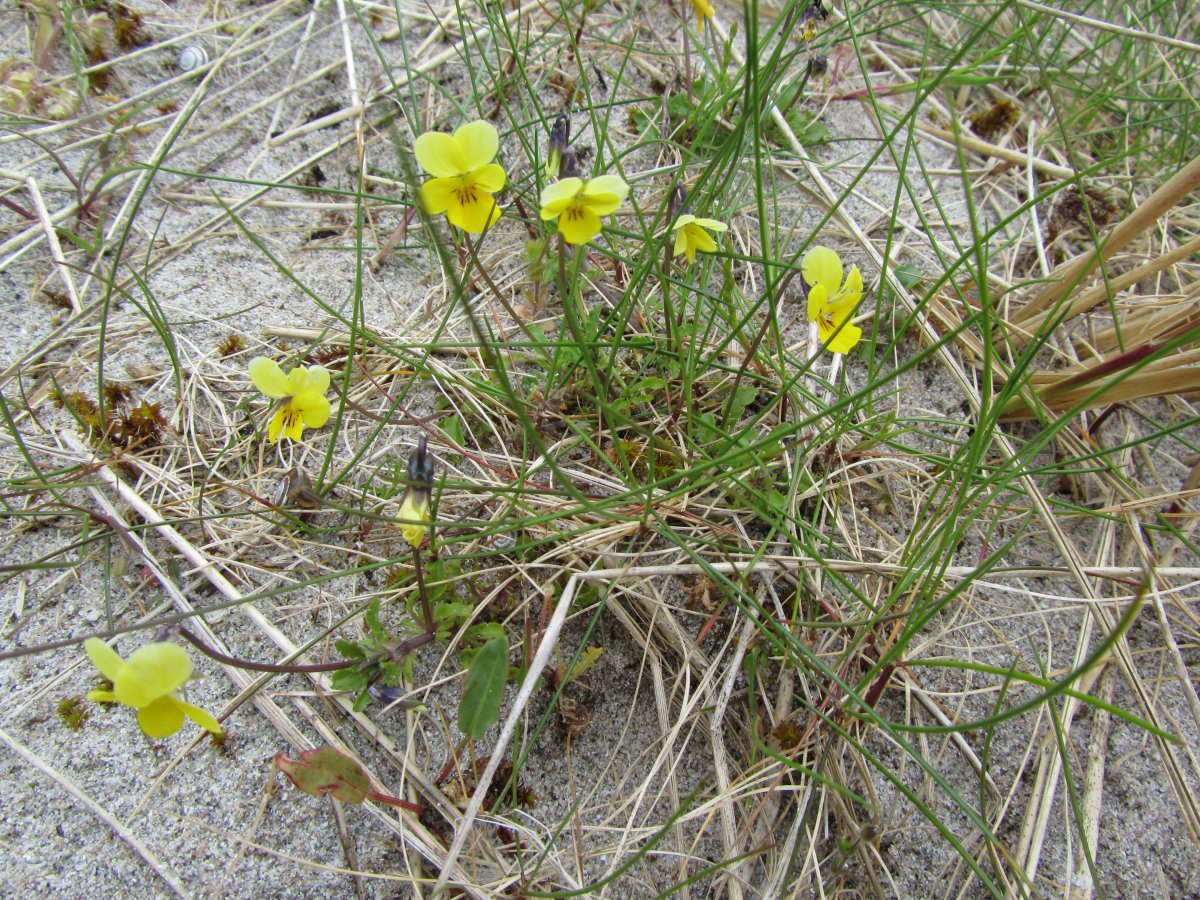 |
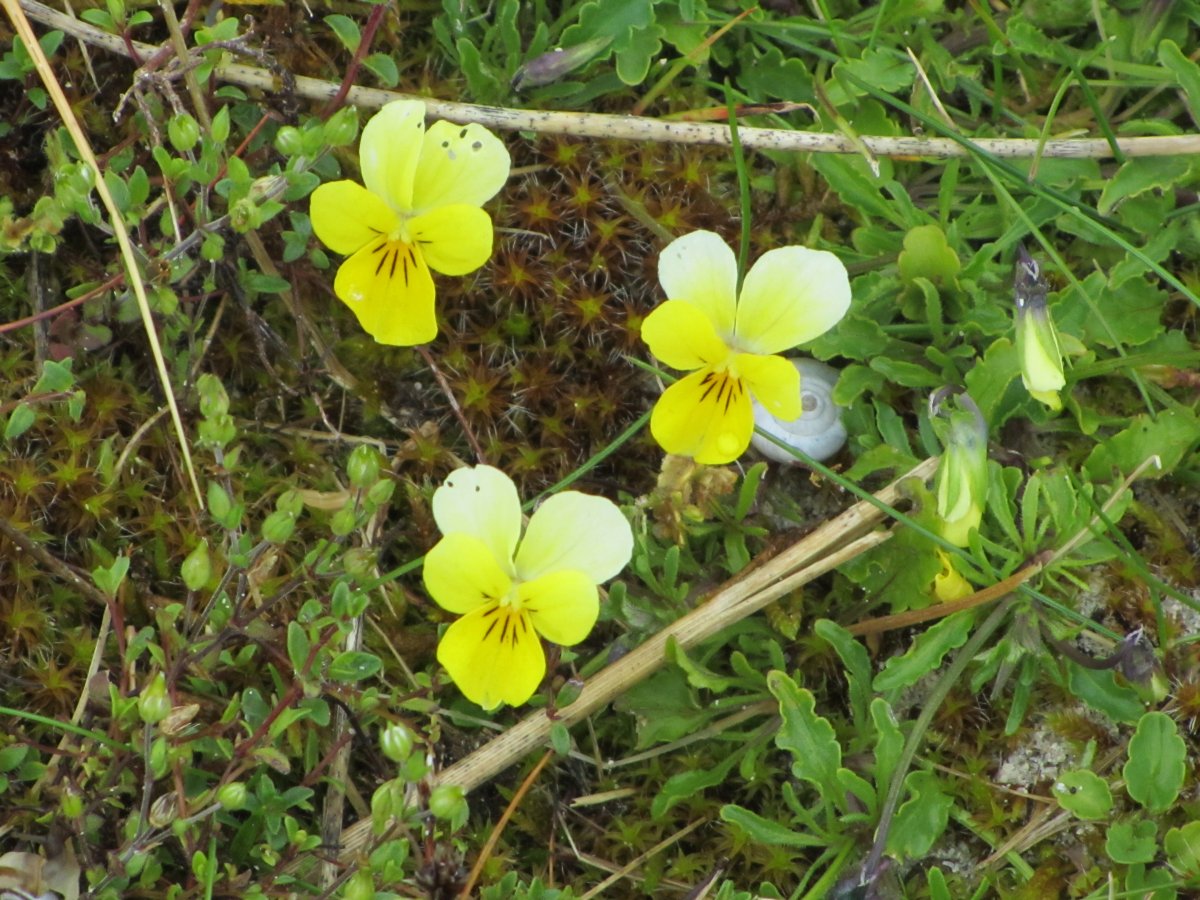
|
| Usually regarded as a sub-species of Mountain Pansy, it can be discovered on some Scottish coasts, often amongst marram grass. These two pictures were taken on the South-west corner of Mull in May 2017 and June 2011. |
Back to index
| Cabbage family - Brassicaceae (formerly Cruciferae) |
| WARTY CABBAGE Bunias orientalis | |
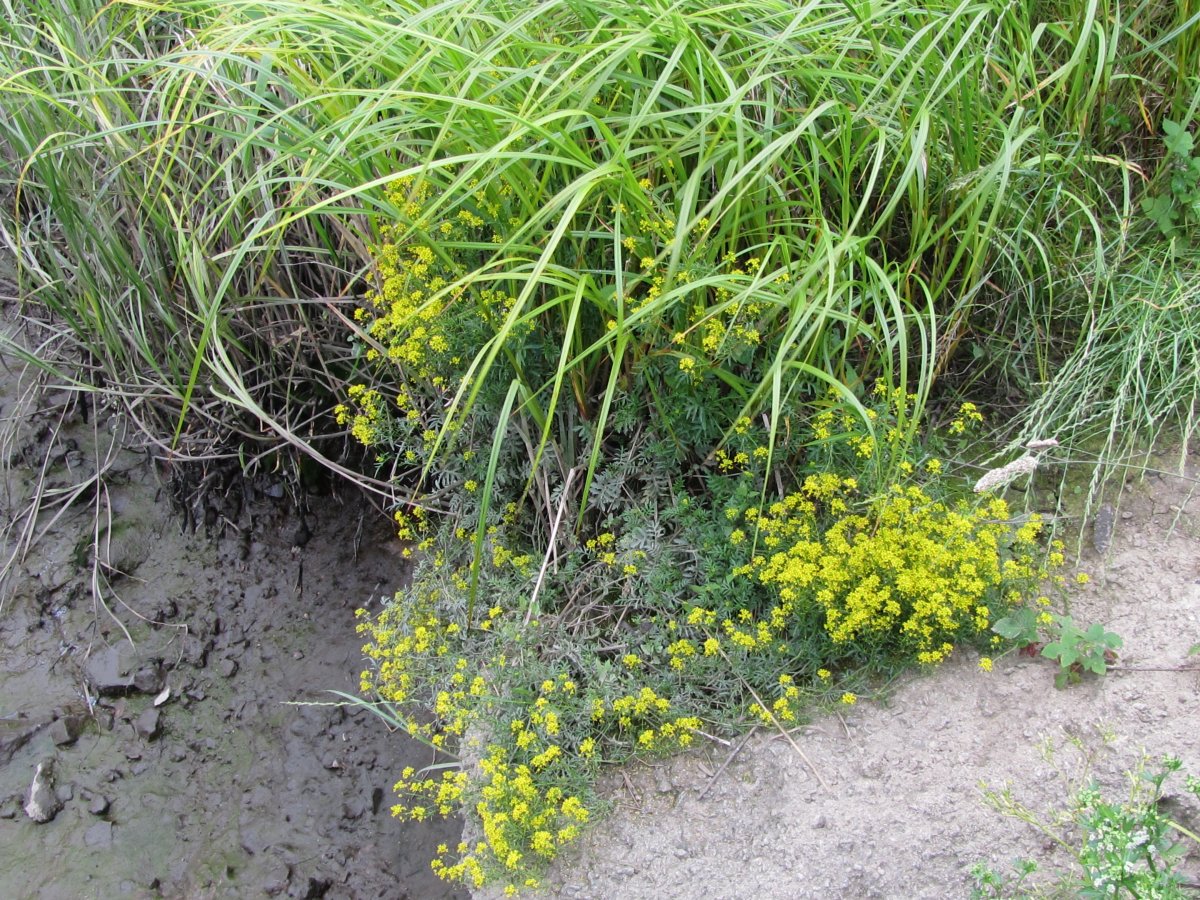 |
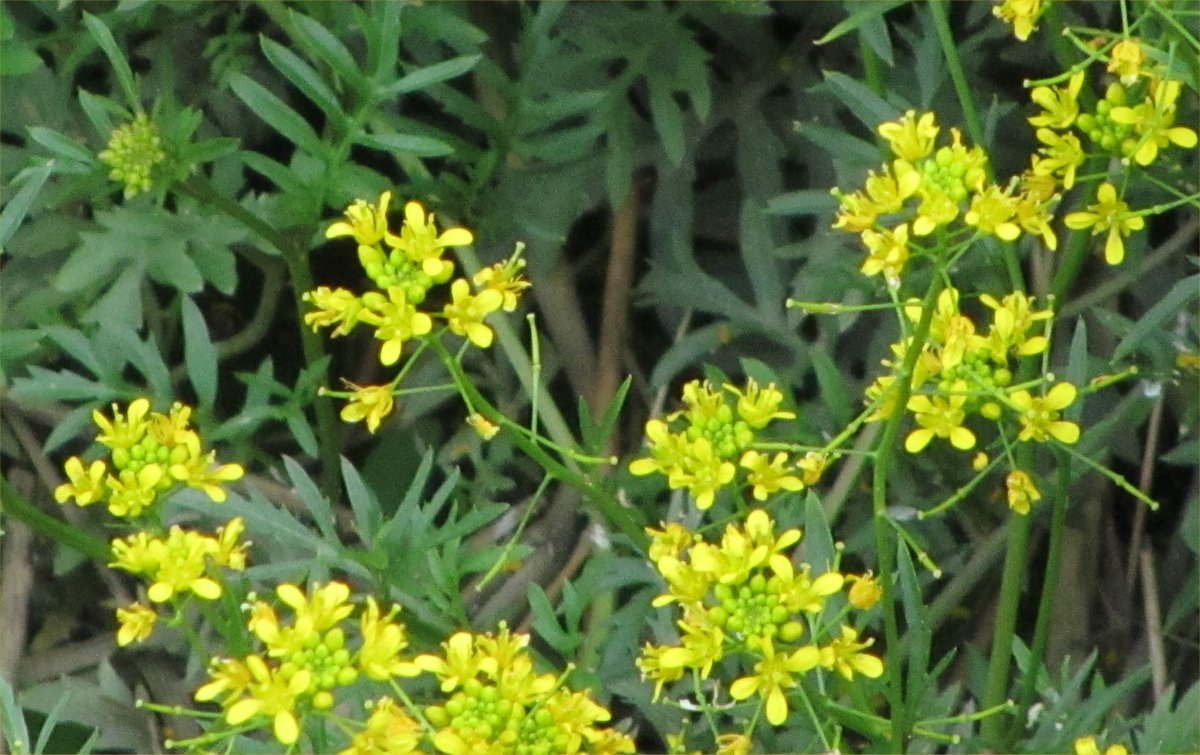
|
| This unusual plant was at Washington Wildfowl and Wetland Trust in July 2014. We're pretty sure it's Warty Cabbage, but expert confirmation or correction welcomed! |
Back to index
| FIELD PENNY-CRESS Thlaspi arvense | |
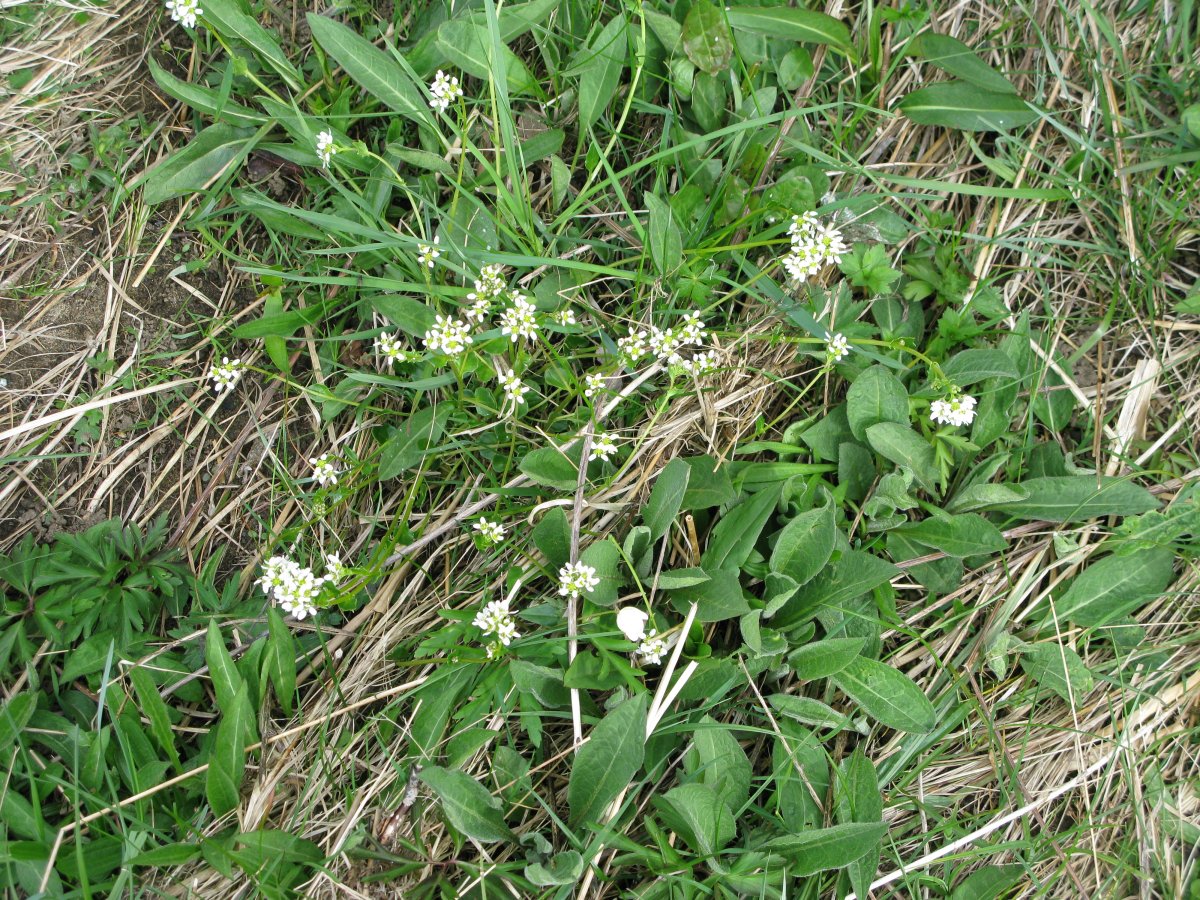 |
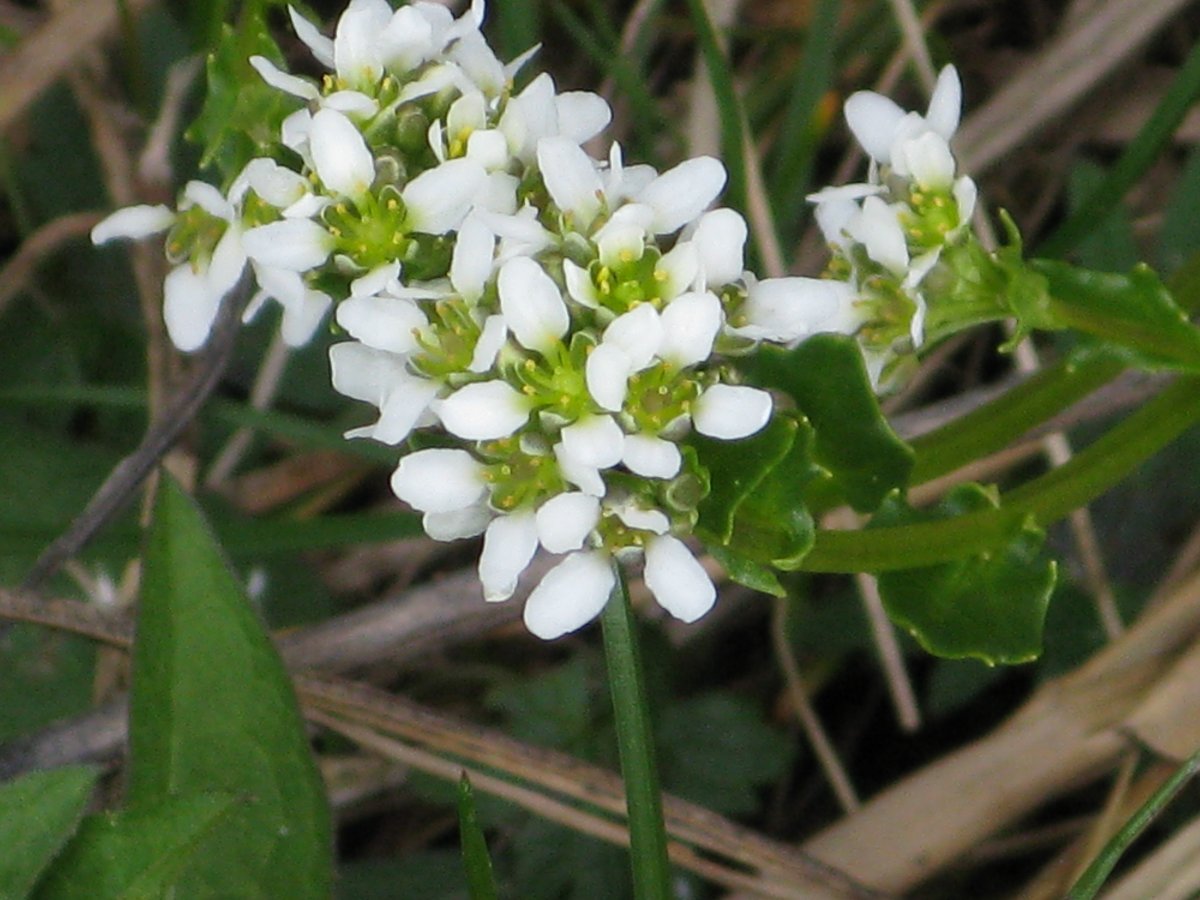
|
| A small but not unattractive plant, seen here in Teesdale in May 2010. |
Back to index
| SCURVYGRASS Cochlearia spp. | |
 |

|
| As the name suggests, this plant contains vitamin C and was taken on sea voyages to ward off scurvy. These were seen at Mingary, Ardnamurchan in May 2009 and Ardtun, Mull, in April 2014. |
Back to index
| CUCKOOFLOWER (aka MILKMAID, LADY'S SMOCK) Cardamine pratensis | |
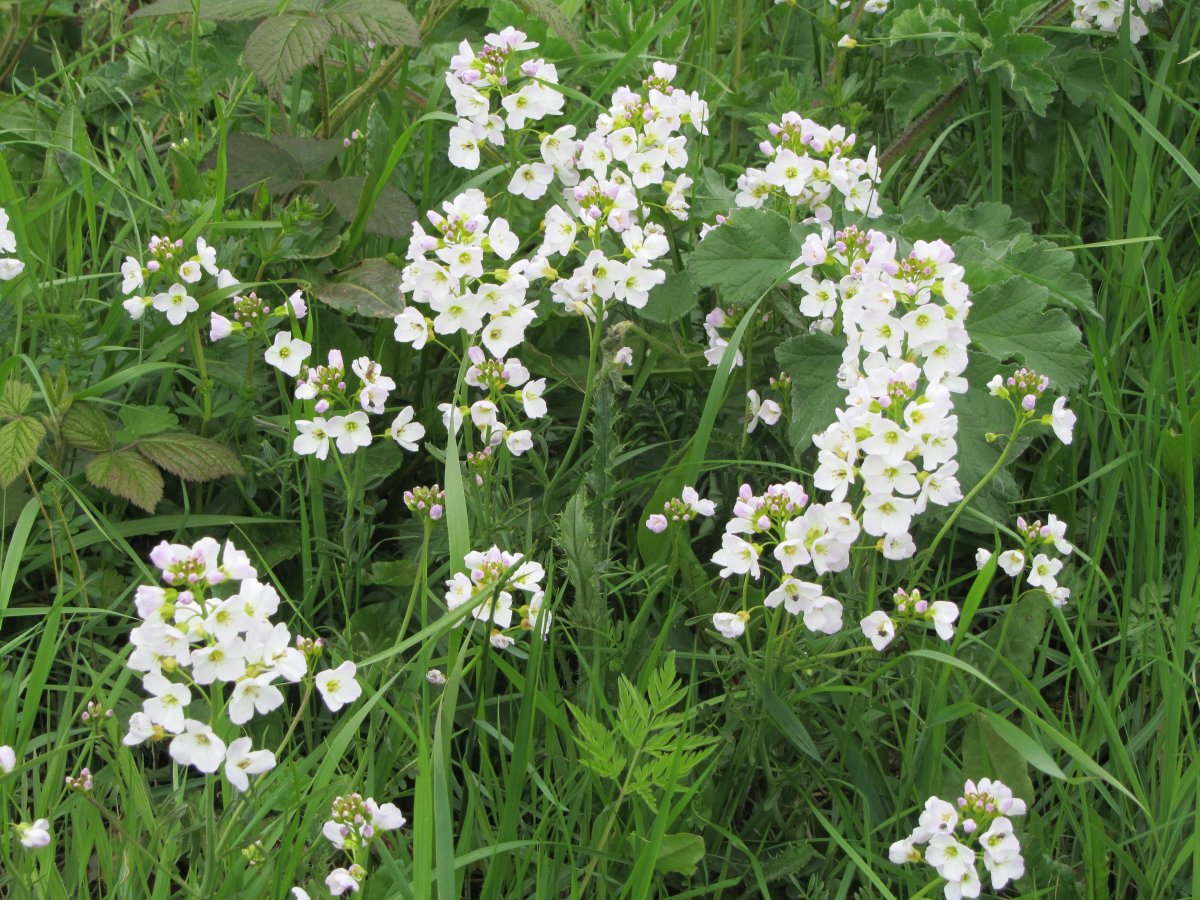 |
| A plant with a number of regional aliases. We knew it from our southern upbringing as Milkmaid, but elsewhere it is known as Cuckooflower or Lady's Smock. They are abundant in fields, roadsides and meadows, even in lawns. These were in Hexham May 2013, probably by a road. |
back to index
| HONESTY Lunaria annua | |
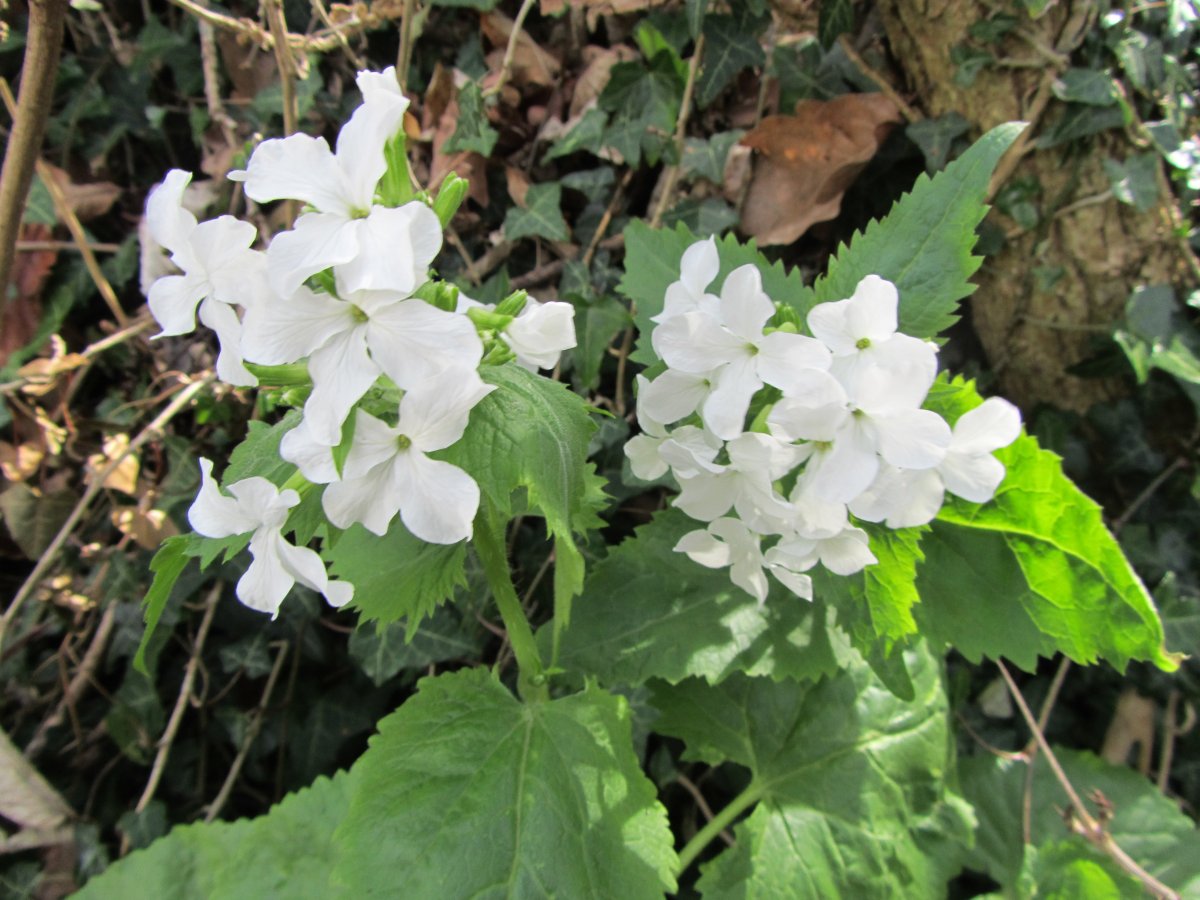 |
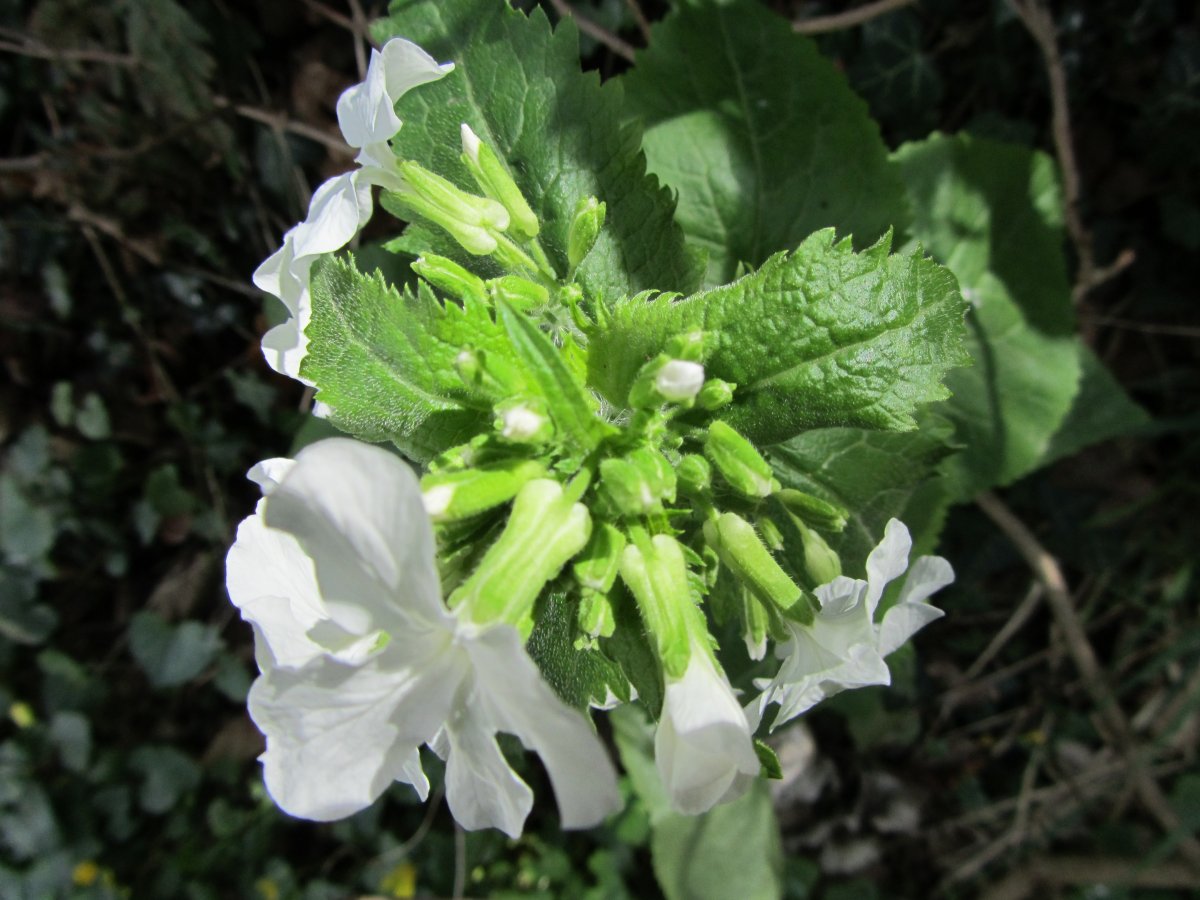
|
| Not uncommon in gardens, but these were wild in Hexham May 2013. |
Back to index
| SEA ROCKET Cakile maritima | |
 |

| 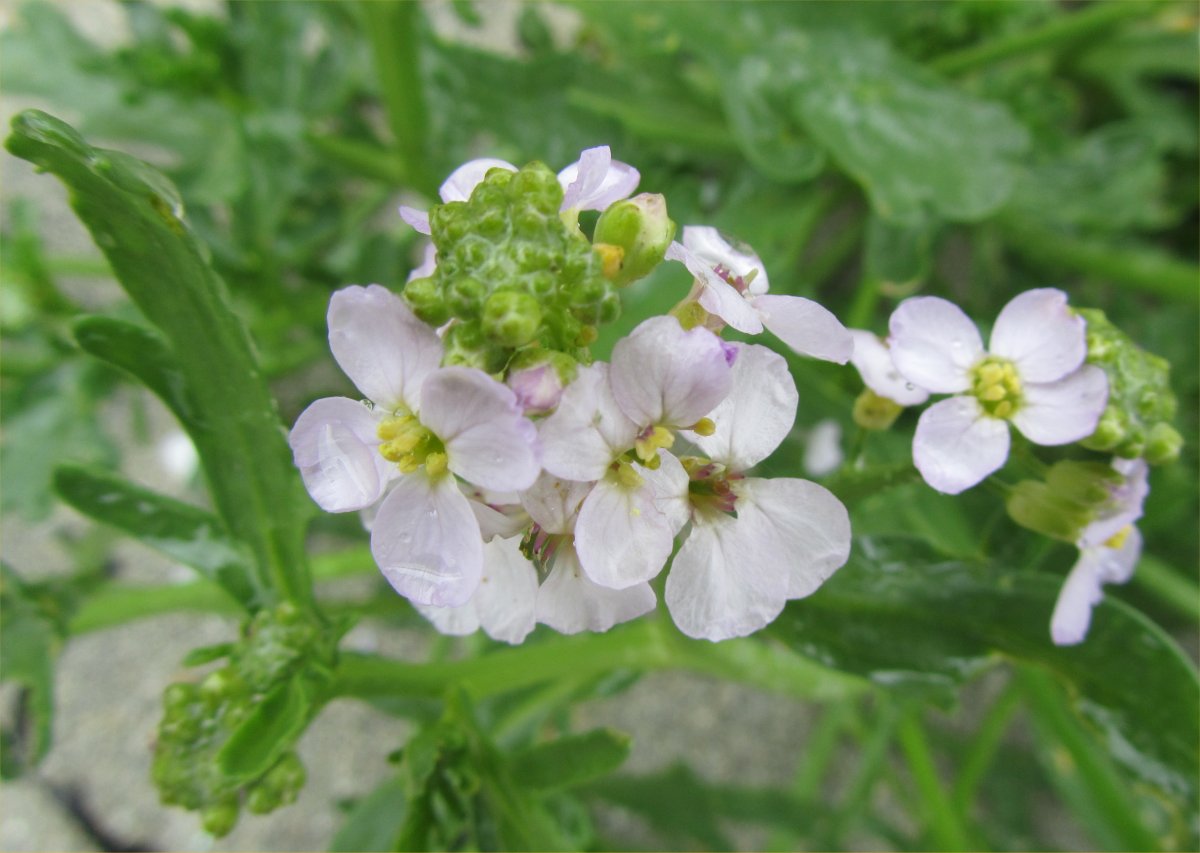
|
| An attractive plant of beach and dunes, with characteristic delicate lilac flowers and ornate leaves. These were on the SW coast of Mull in October 2009 and at Portuairk, Ardnamurchan, in July 2015 and July 2016. |
Back to index
| Mignonette family - Resedaceae |
| WELD Reseda luteola | |
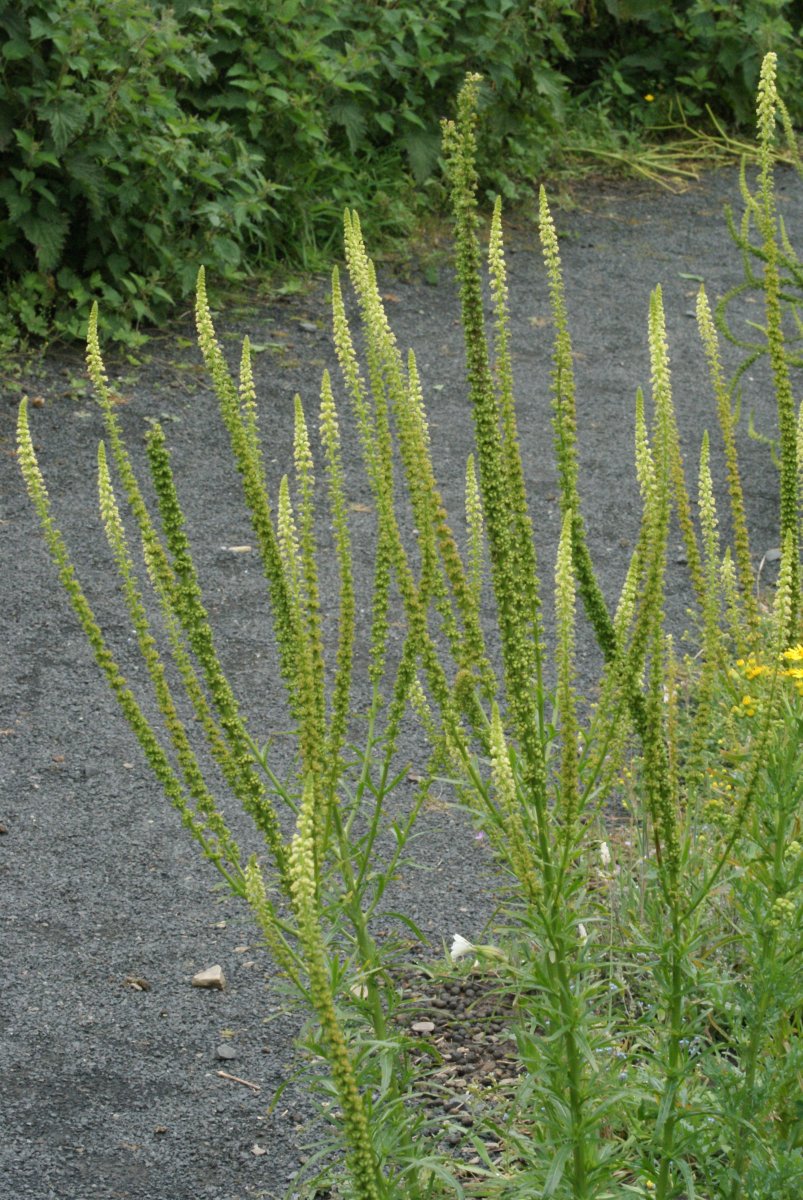 |
| A retiring but not unattractive plant, here at Low Hauxley, Northumberland coast July 2017 |
back to index
| LING Calluna vulgaris | |
 |
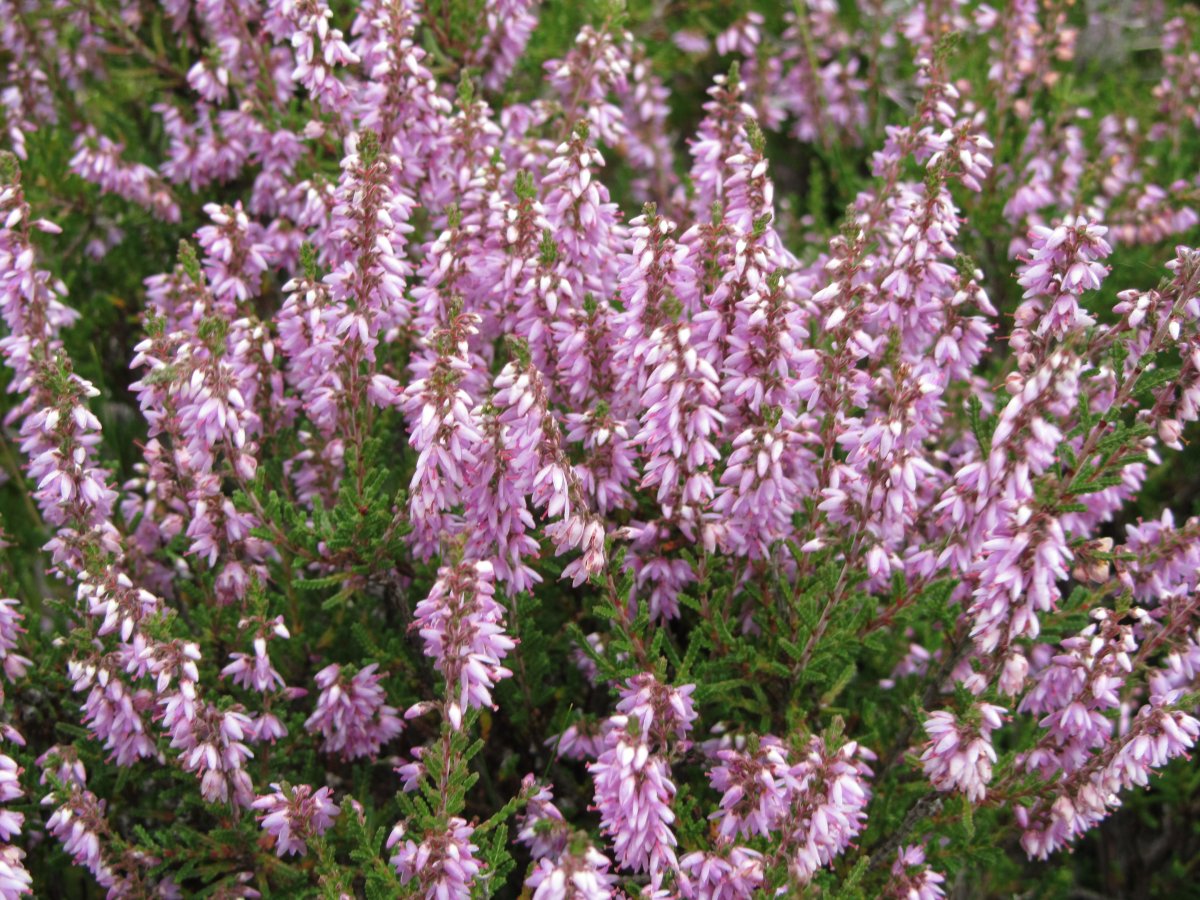
| 
|
| Massed on hillsides and heaths, the plant most people think of as 'heather'. These were seen at Market Bay, Mull August 2014, Blanchland, West Northumberland August 2011 and Lantern Pike, Derbyshire August 2009. |
Back to index
| BEARBERRY Arctostaphylos uva-ursi | |
 |
| Ground cover on Scottish moors, with distinctive flowers, these were at Market Bay, Mull, April 2014 |
back to index
| Primrose family - Primulaceae |
| COMMON PRIMROSE Primula vulgaris | |
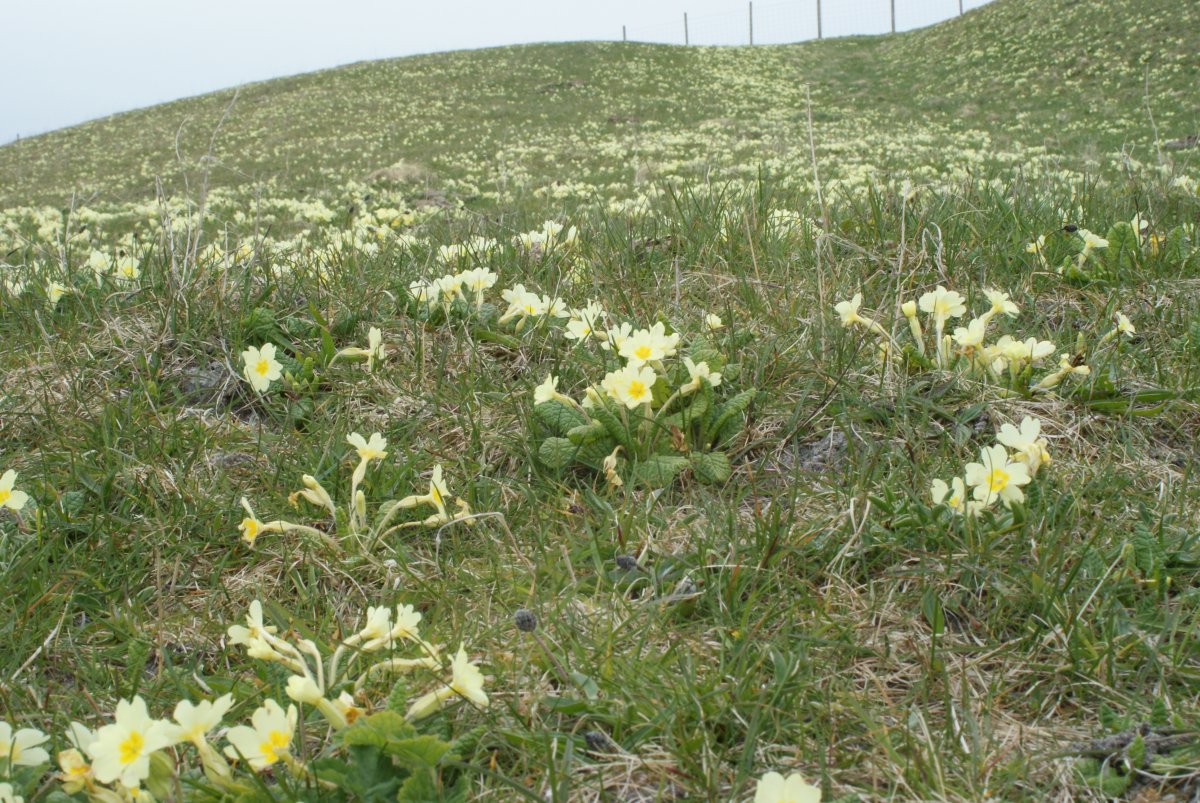 |
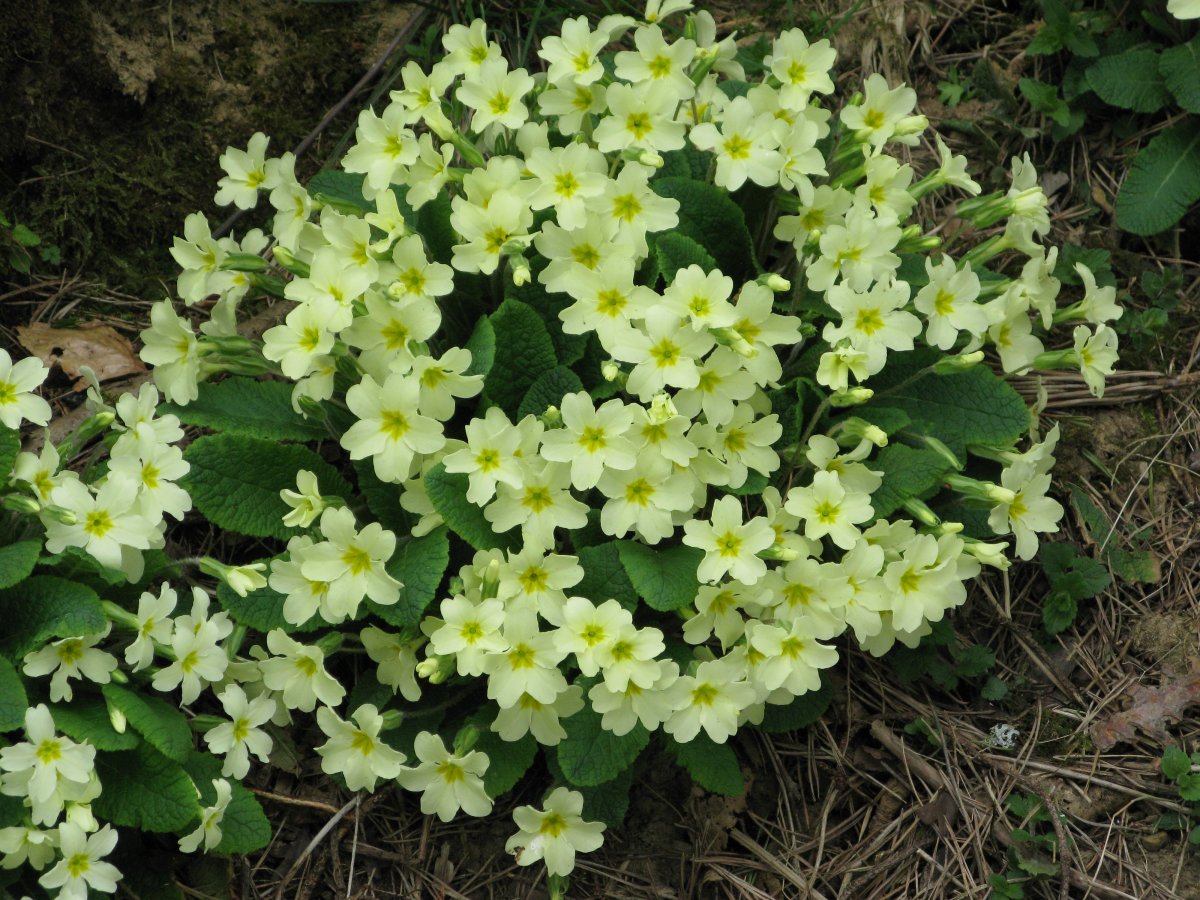
| 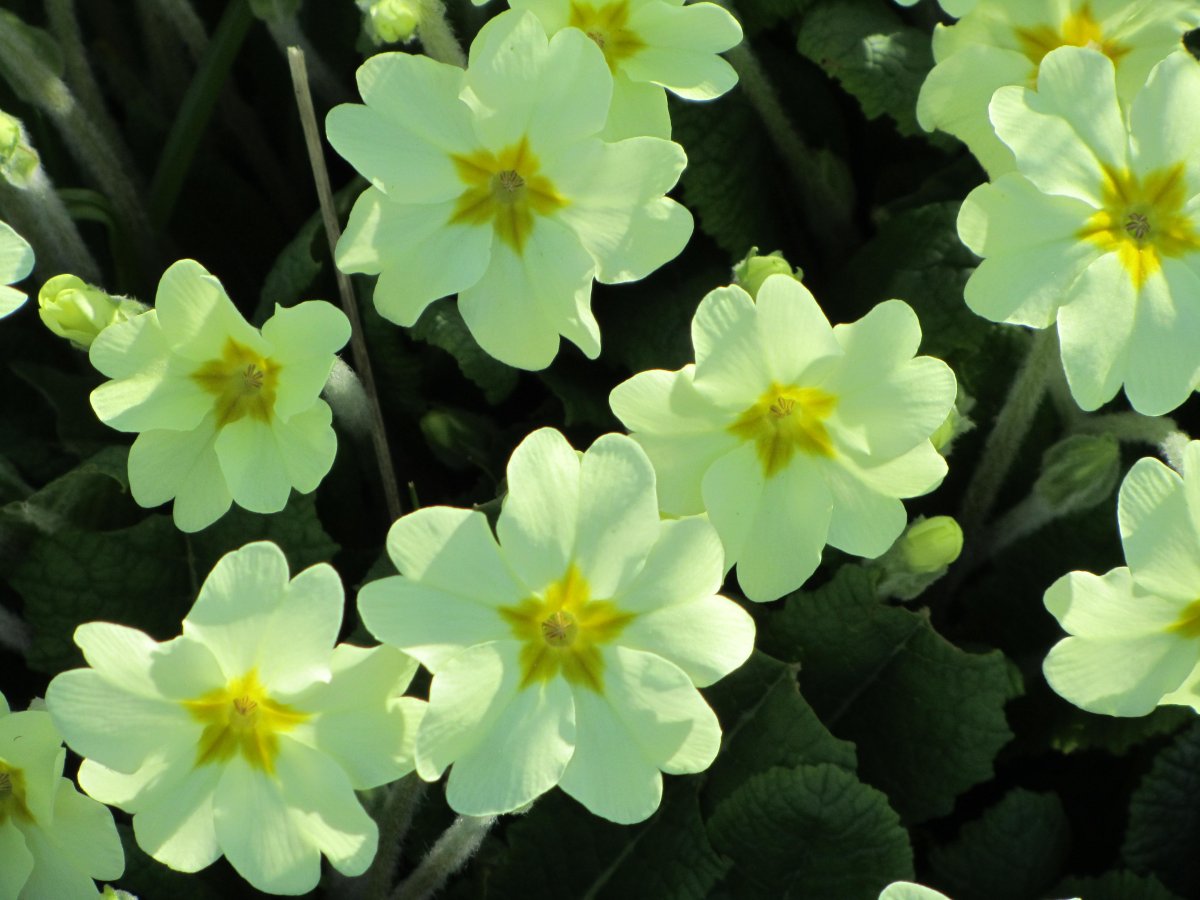
|
| These were at Vatersay, Outer Hebrides May 2012, Simonburn, West Northumberland May 2010, and Mingary, Ardnamurchan April 2011, but they can be found anywhere! |
Back to index
| COWSLIP Primula veris | |
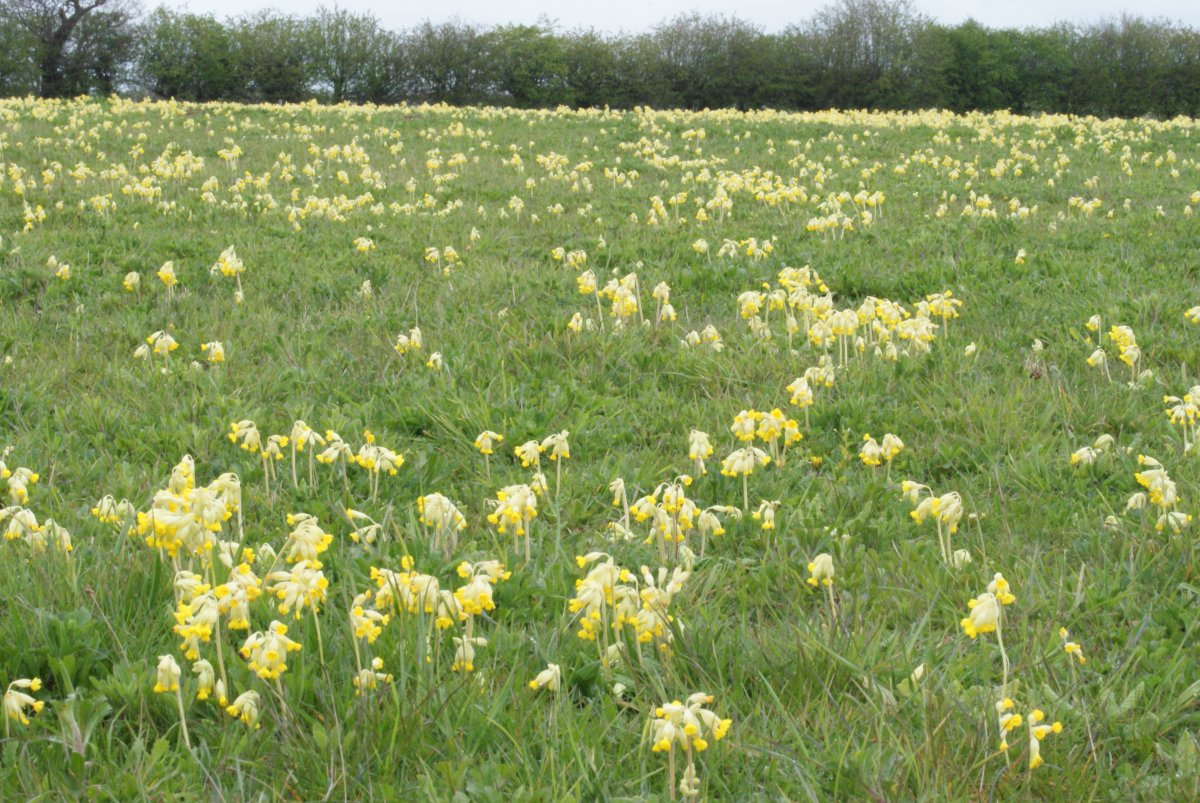 |
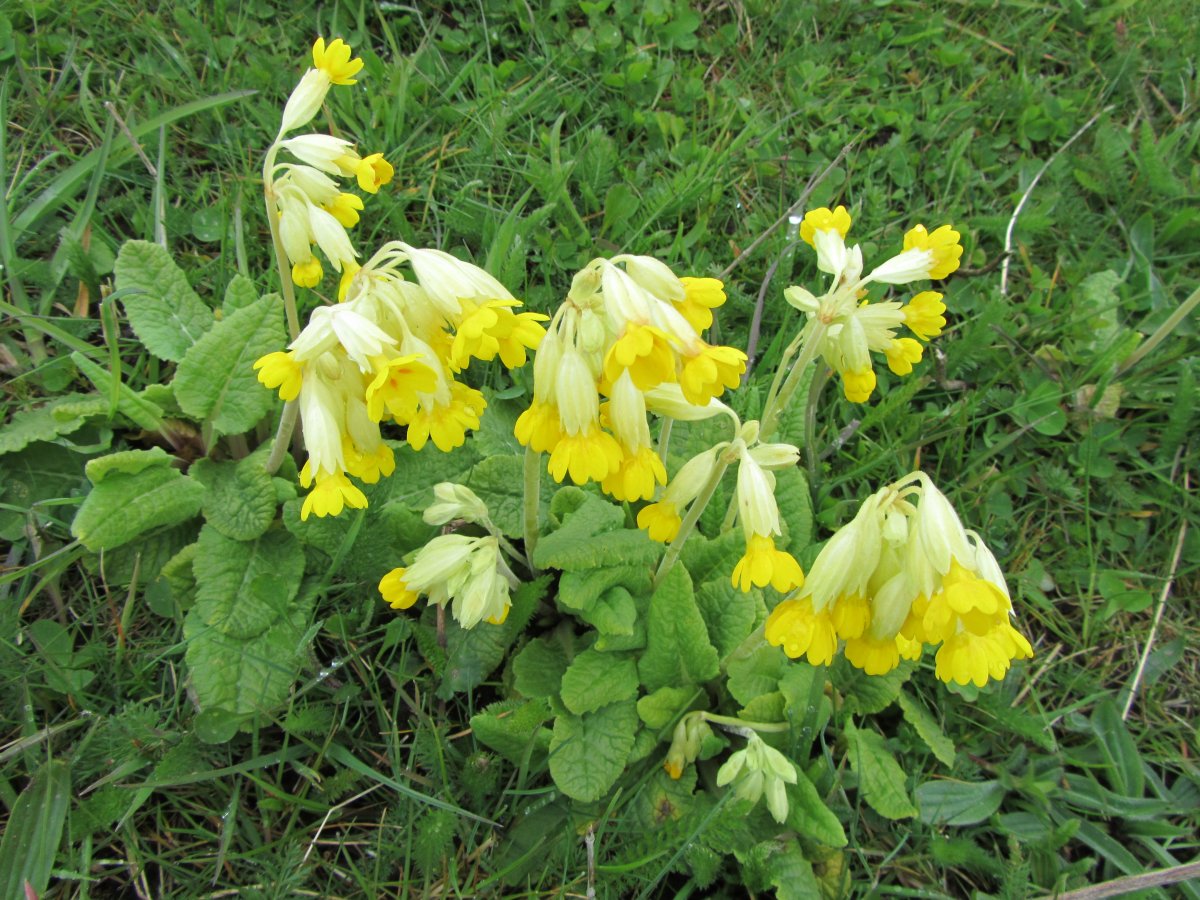
| 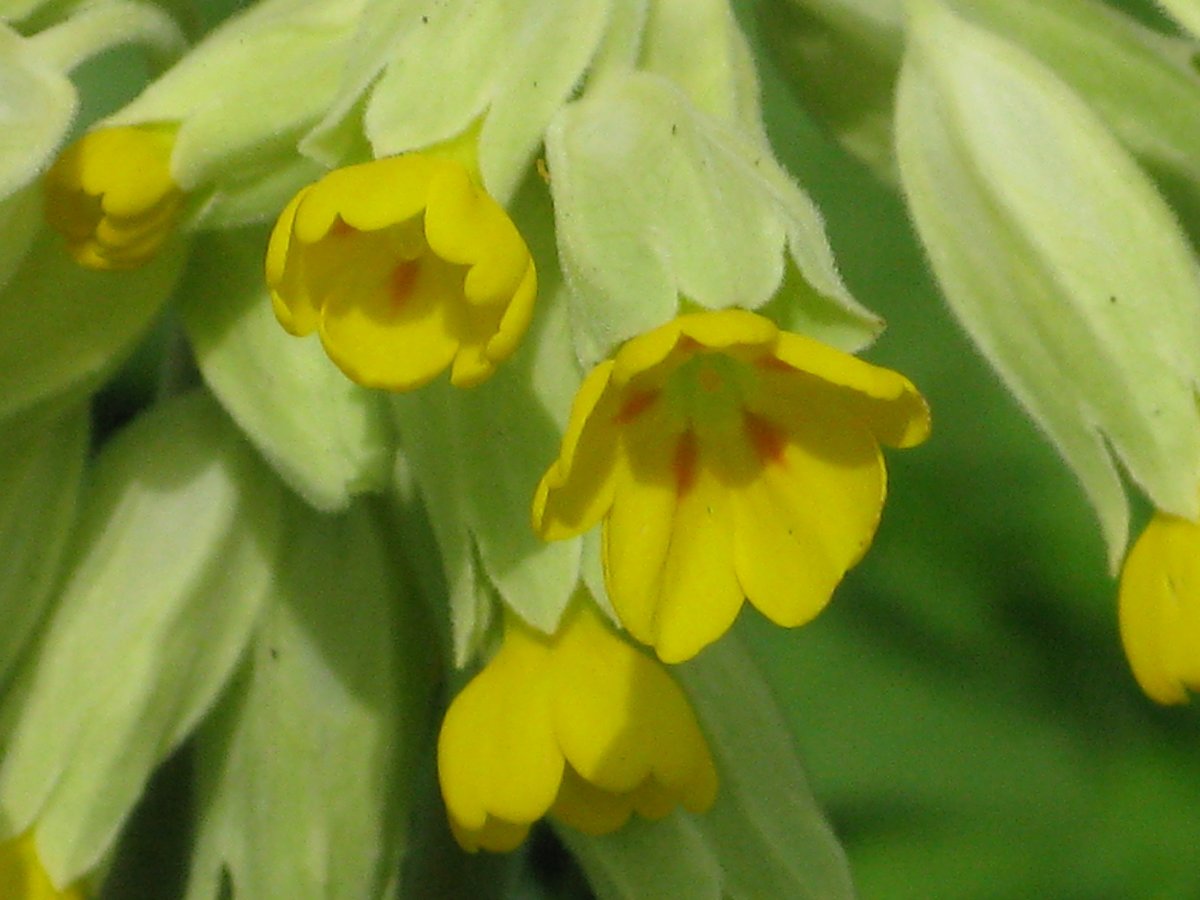
|
| Very common on chalky or lime soils, these were near the coast, Kings Lynn, April 2012 x2, and Washington May 2010 |
Back to index
| FALSE OXLIP Primula x polyantha | |
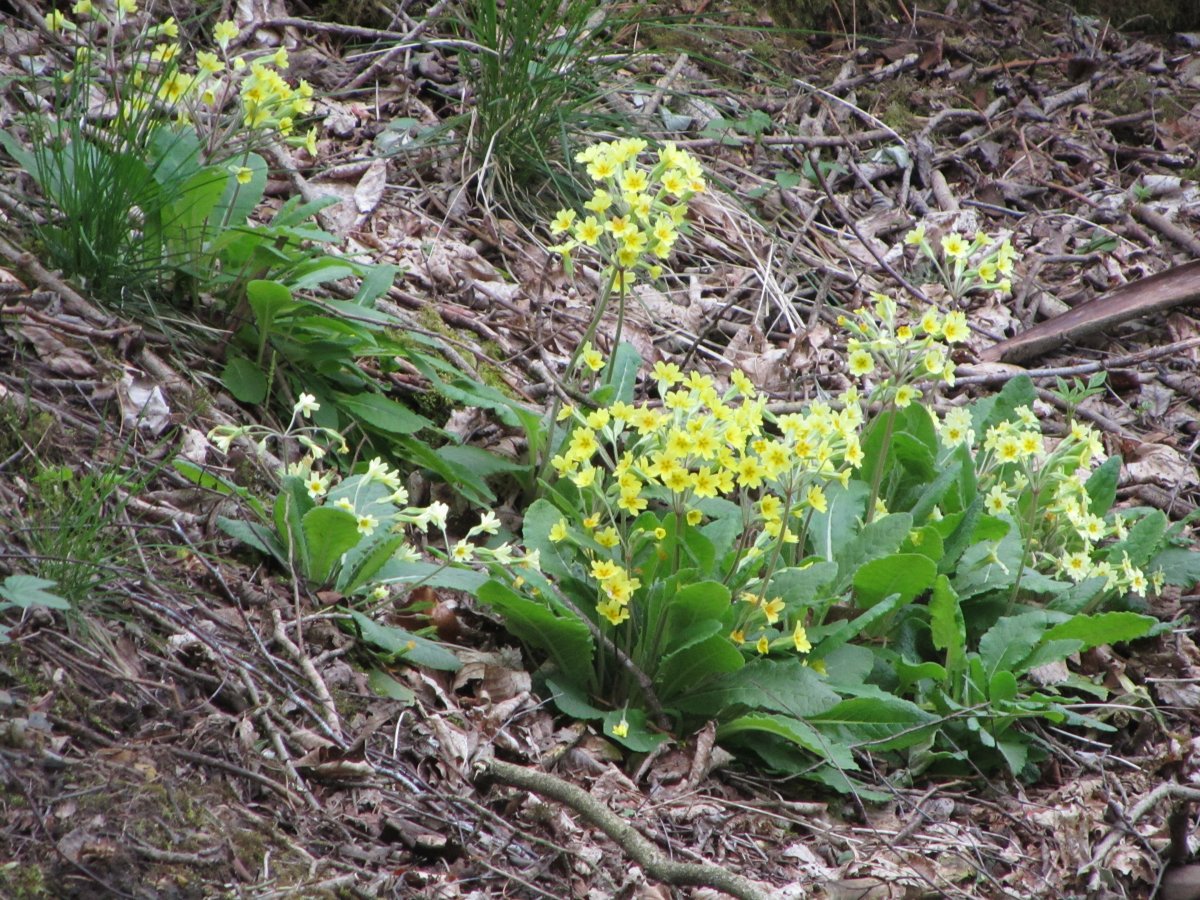 |
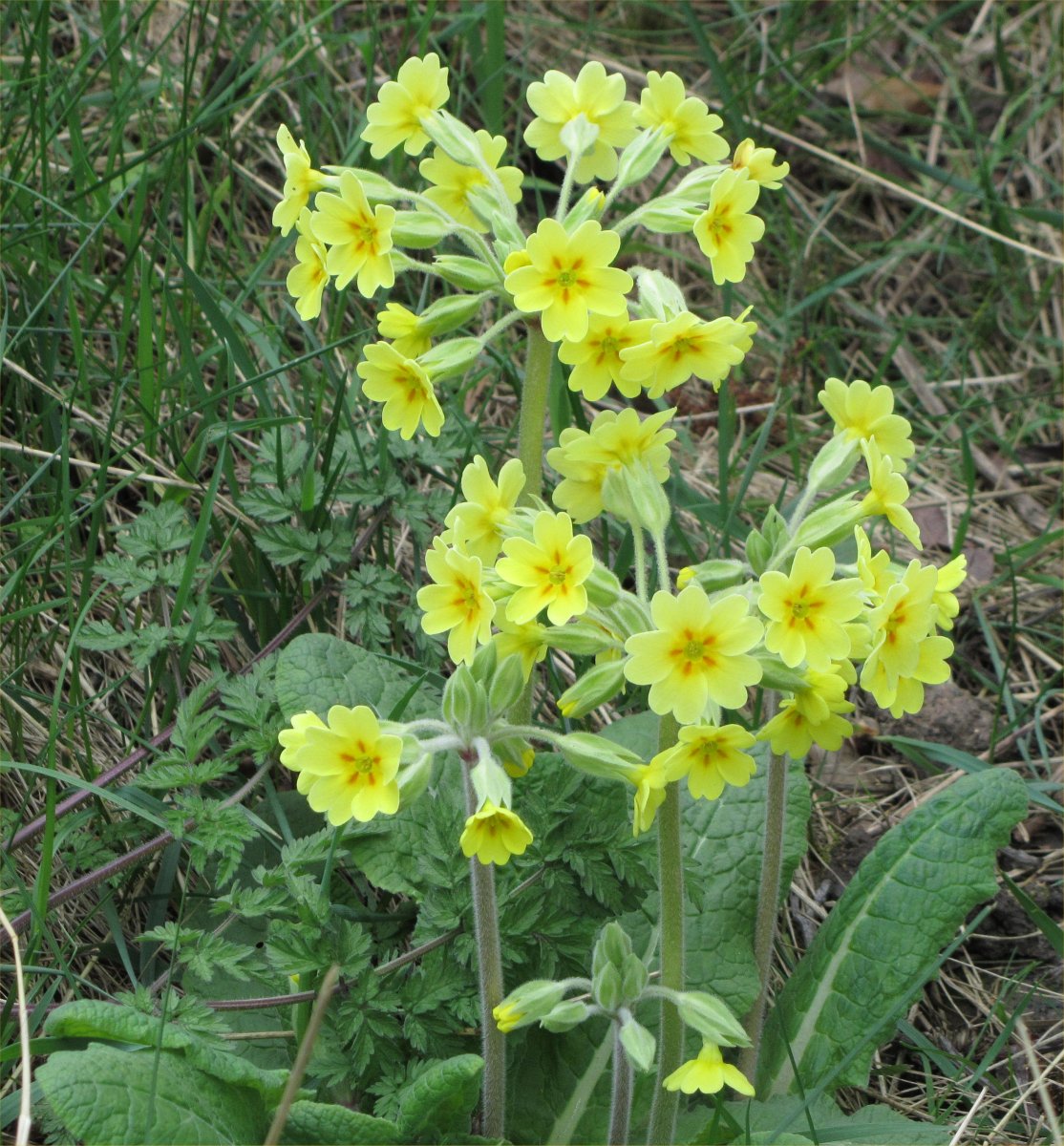
| 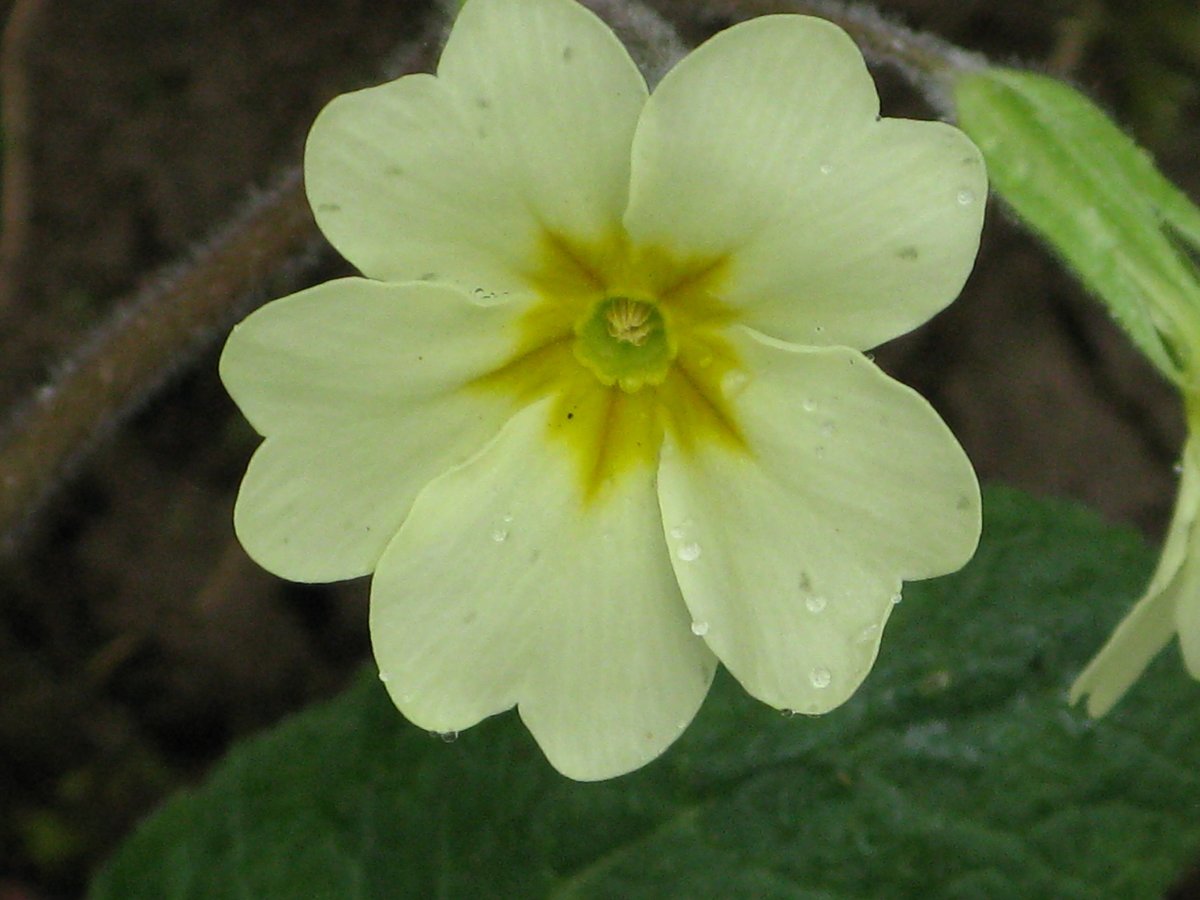
|
| A relatively common hybrid of Cowslip and Primrose, often found where both are growing together, these were at Walltown quarry, West Northumberland, May 2013, Jarrow April 2011, and Hareshaw, West Northumberland May 2010. Note the flowers are arranged symmetrically around the stem. |
Back to index
| TRUE OXLIP Primula elatior | |
 |
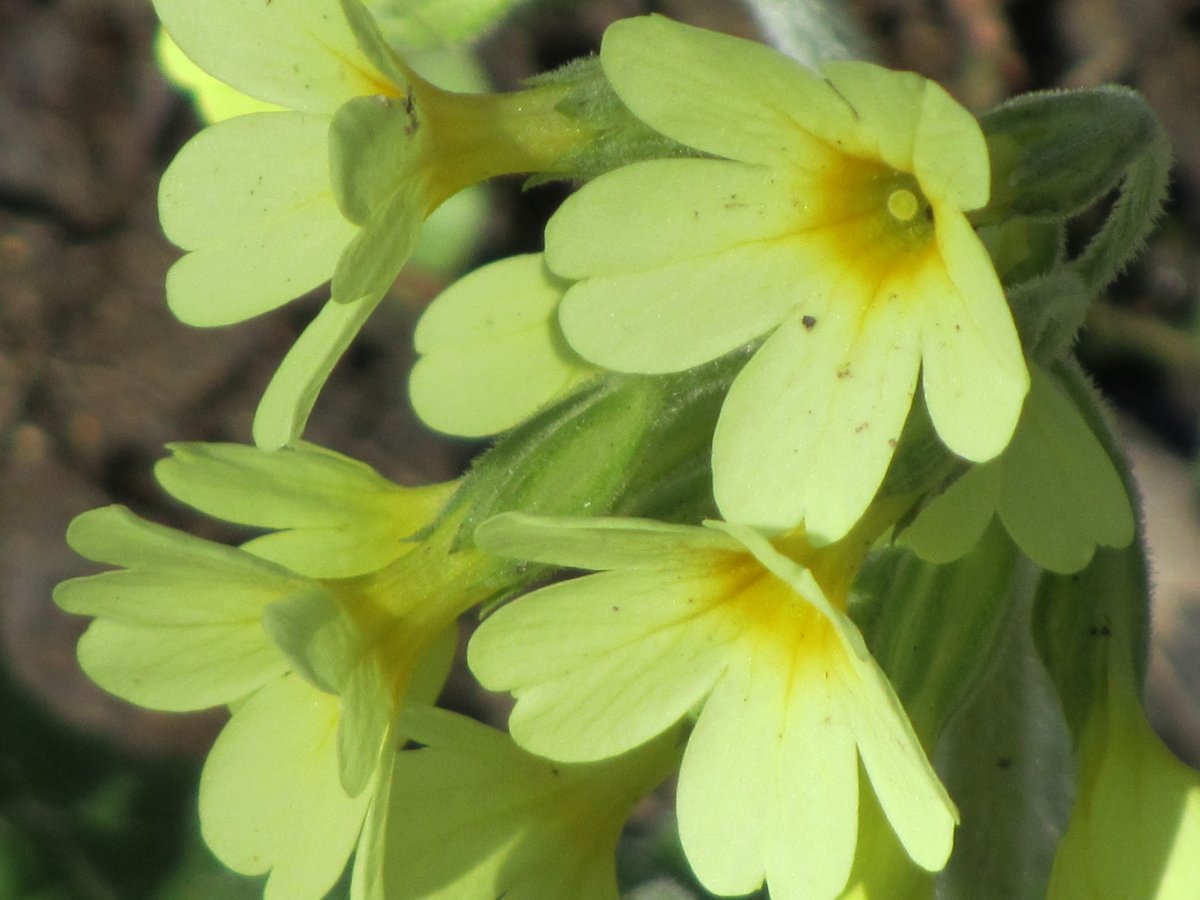
|
| The flowers are more cowslip-like, arranged on one side of the stem. A native of East Anglia, it nevertheless turns up in semi-wild areas of estates furter north, such as at Belsay in April 2015 |
Back to index
| BIRDSEYE PRIMROSE Primula farinosa | |
 |
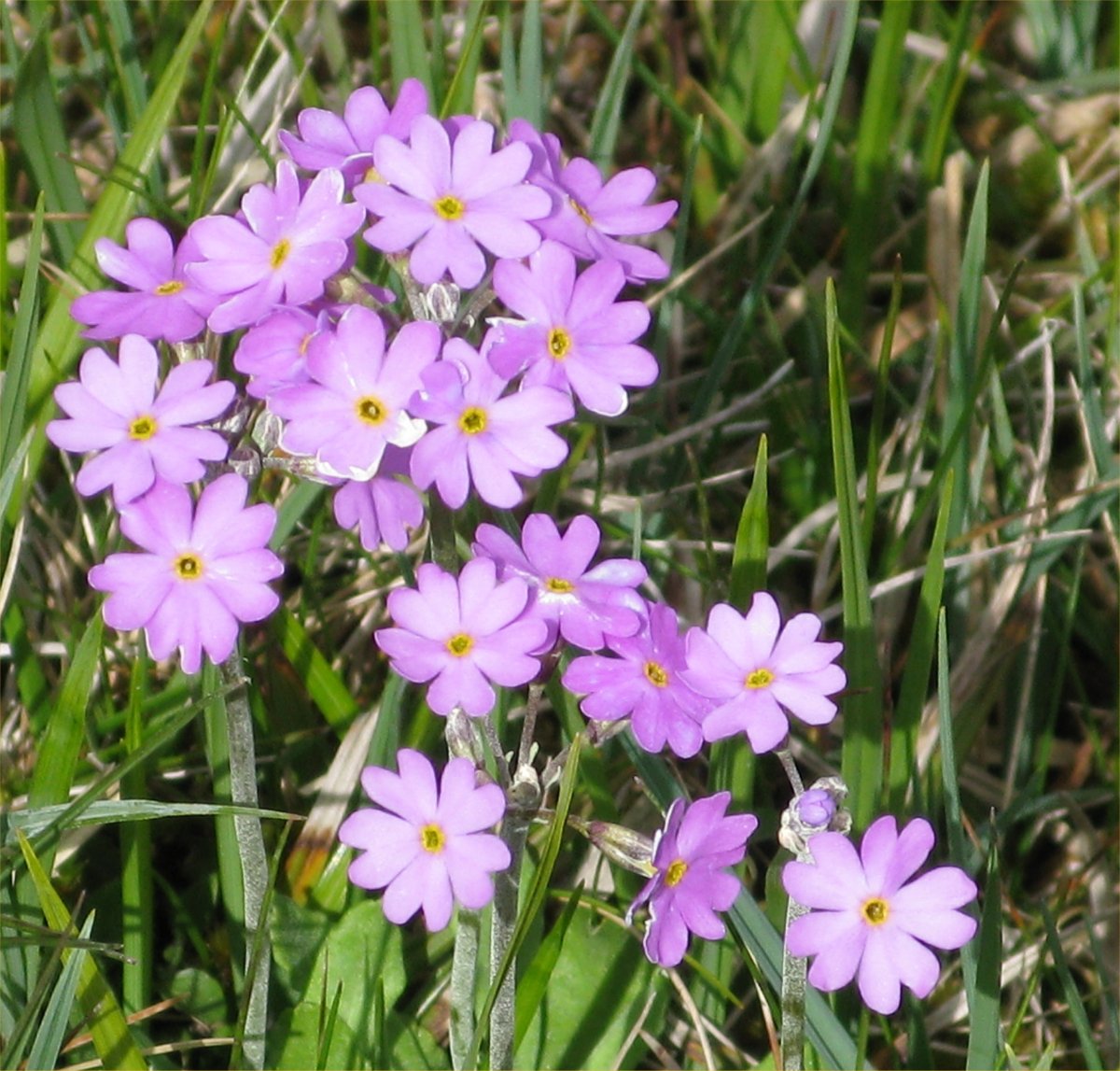
|
| A very attractive plant of northern English and Border counties, particularly common in Upper Teesdale, here photographed in June 2010 |
Back to index
| SCOTTISH PRIMROSE Primula scotica | |
 |
| A rare, some would say iconic (though Elisabeth won't allow it) little plant, found in very few locations, here at Yesnaby, Orkney, in August 2005. The overexposed disc was a 5p piece to show the scale, which explains the trouble we had finding it, and failing to focus properly with our original and rather limited digital camera. |
back to index
| SEA MILKWORT Glaux maritima | |
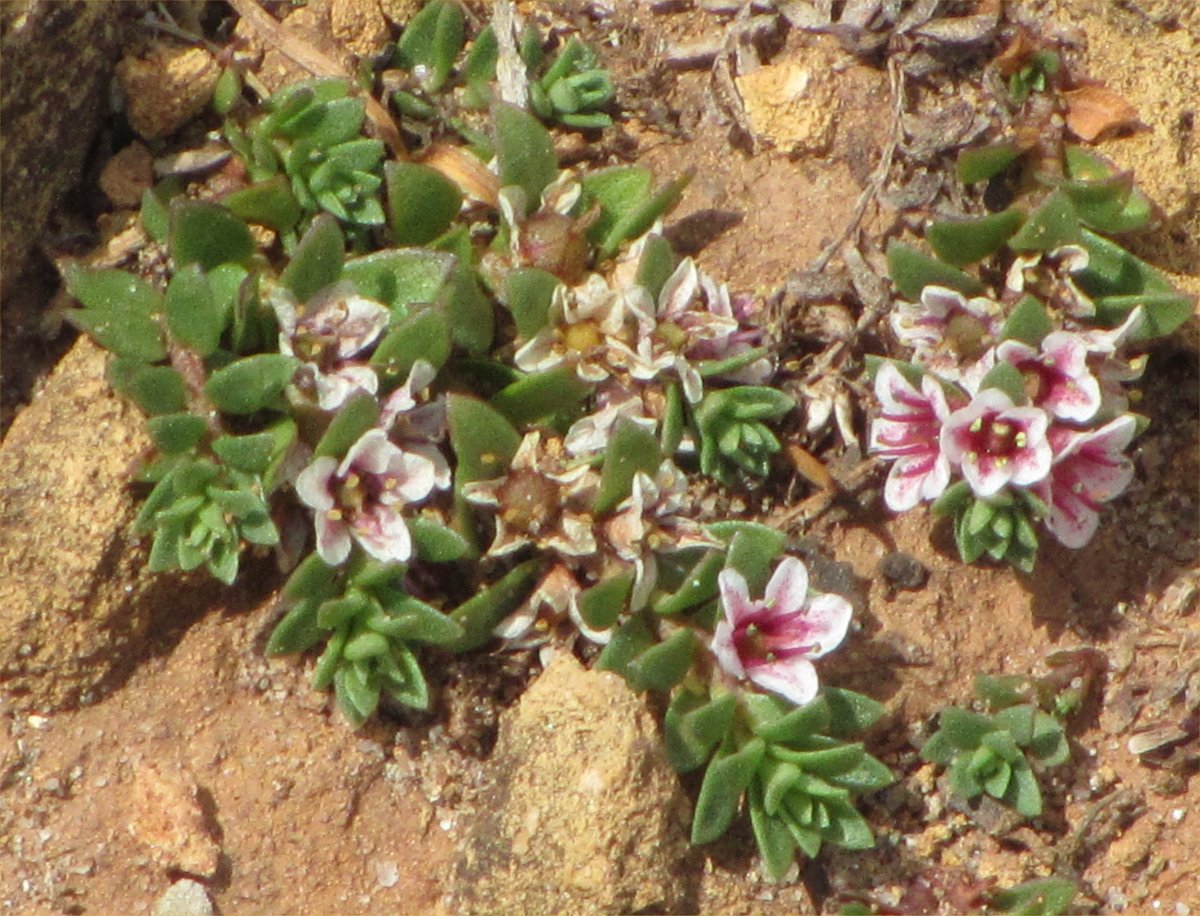 |
| An attractive but unlikely member of the primrose family, with its almost succulent-like leaves, seen almost invariably on coasts, here at Beadnell, Northumberland coast, June 2011 |
back to index
| SCARLET PIMPERNEL Anagallis arvensis | |
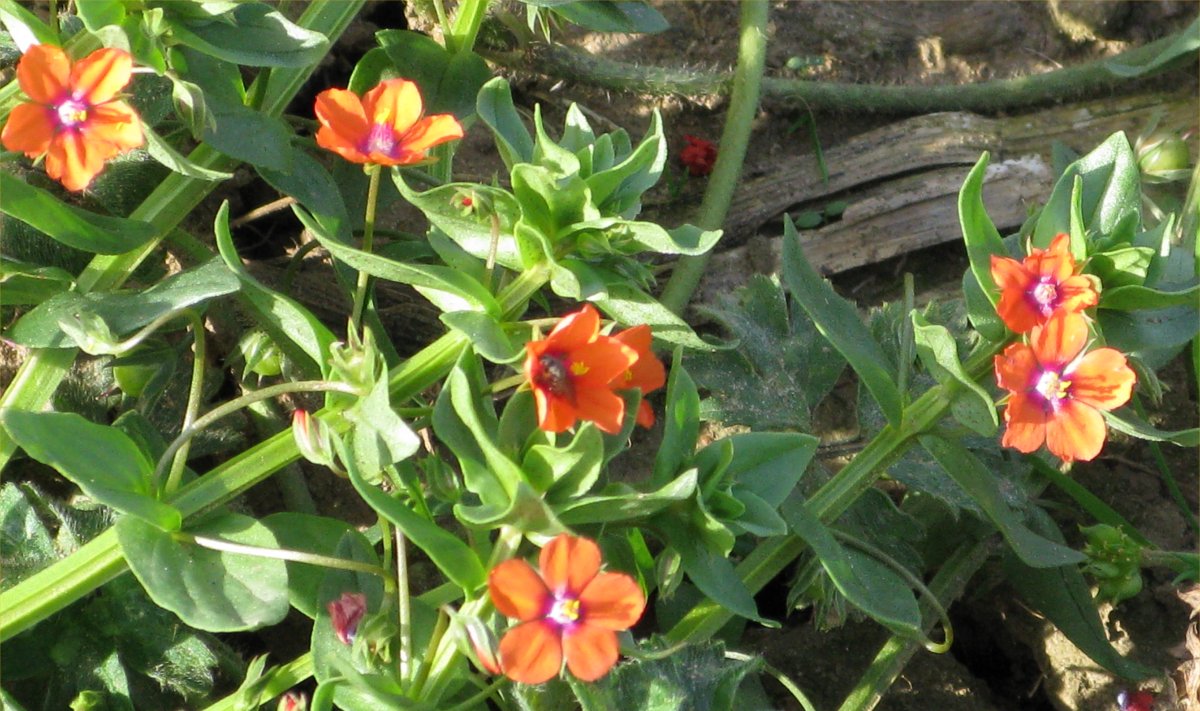 |
| Attractive and relatively common on banks and disturbed ground, here at Howick in September 2009 |
back to index
| BOG PIMPERNEL Anagallis tenella | |
 |
| Here seen in a moist habitat on the south coast of Mull facing Erraid, July 2013 |
back to index
| YELLOW PIMPERNEL Lysimachia nemorum | |
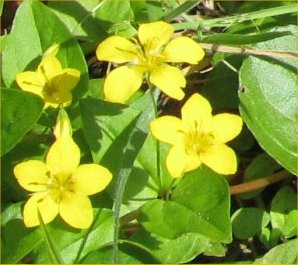 |
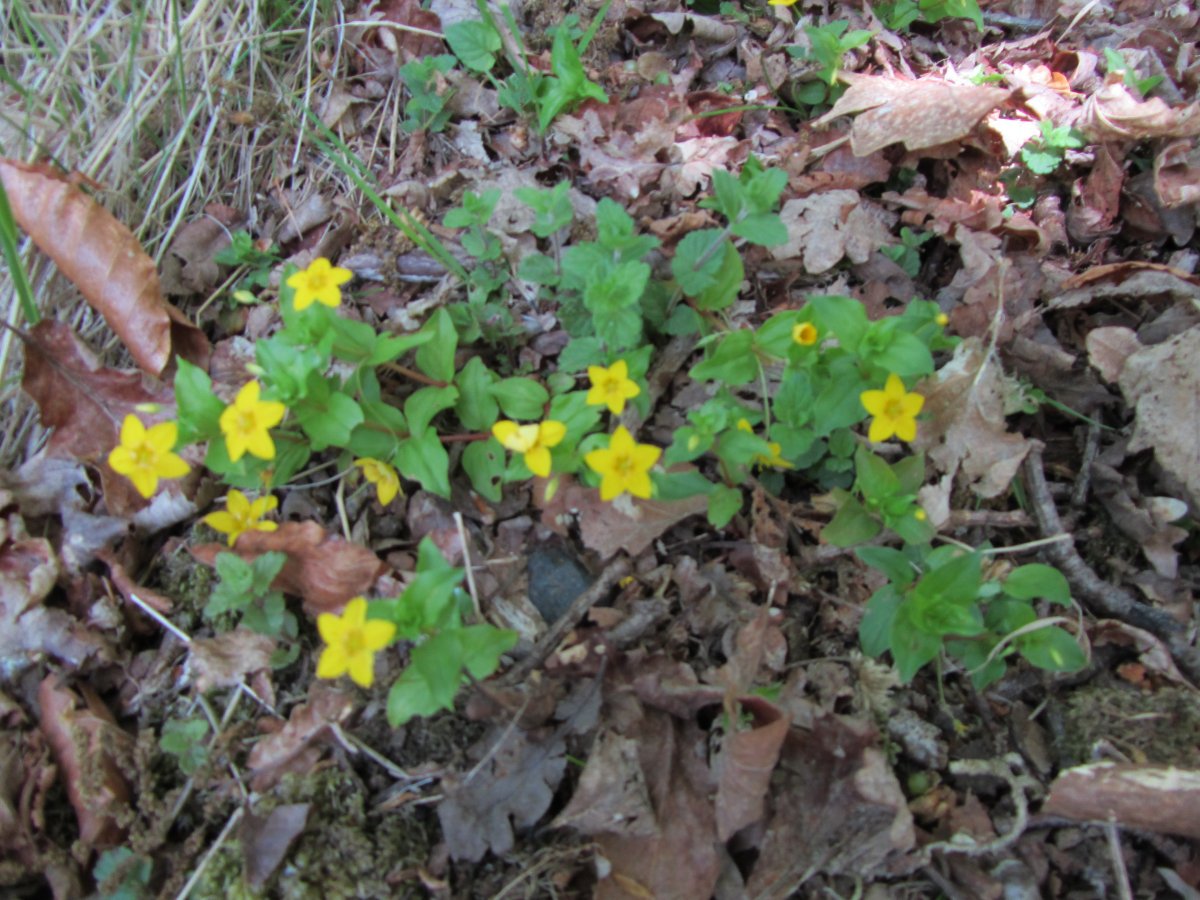
|
| Not uncommon and difficult to miss, here at Gibside in June 2013 and Aros Park lochan, Tobermory, Mull, May 2017. |
Back to index
| Loosestrife family - Lythraceae |
| PURPLE LOOSESTRIFE Lythrum salicaria | |
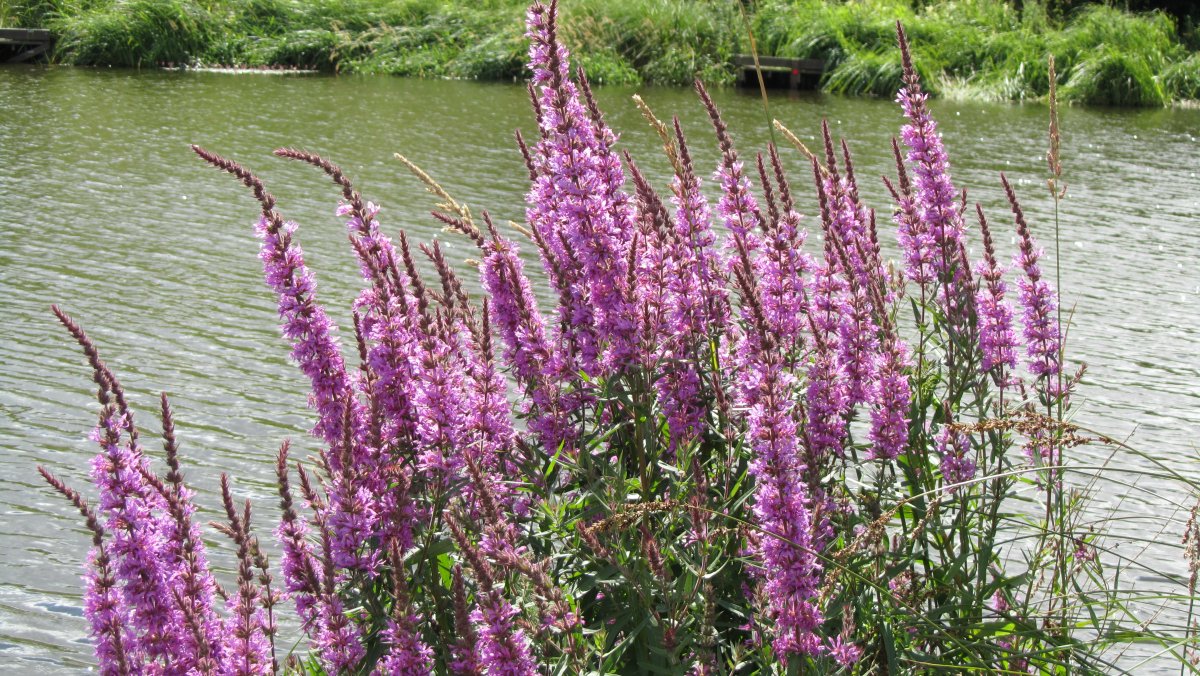 |
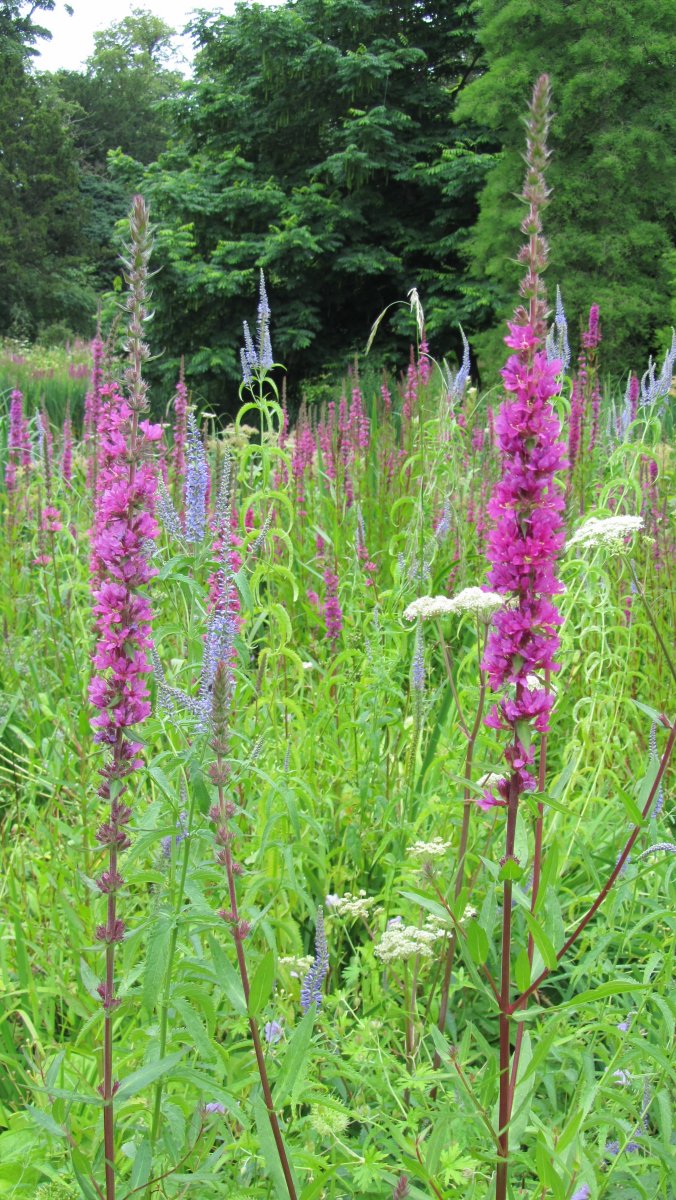
| 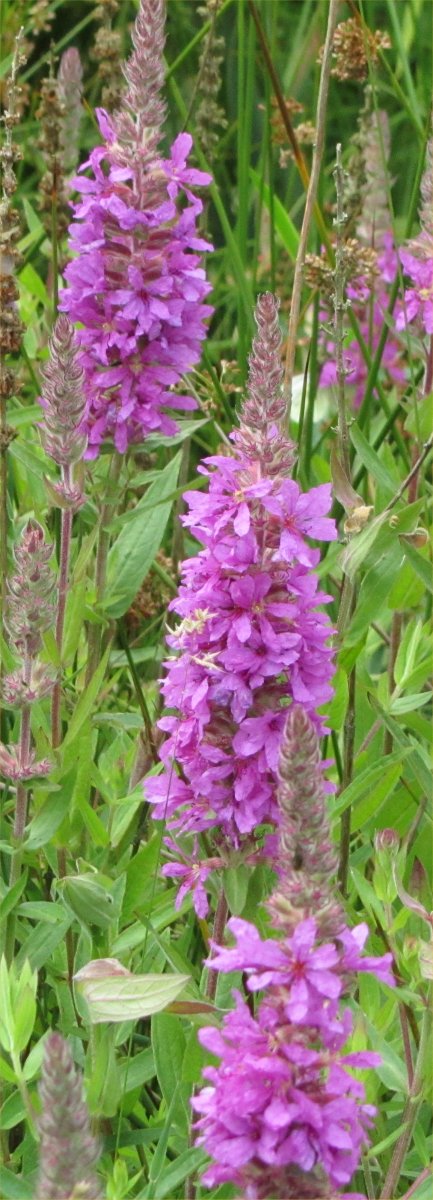
|
| Common and showy, here at Wydon Water, Hexham and Howick, both in August 2016, and Portuairk, Ardnamurchan, in August 2010 |
Back to index
| Saxifrage family - Saxifragaceae |
| GRASS OF PARNASSUS Parnassia palustris | |
 |
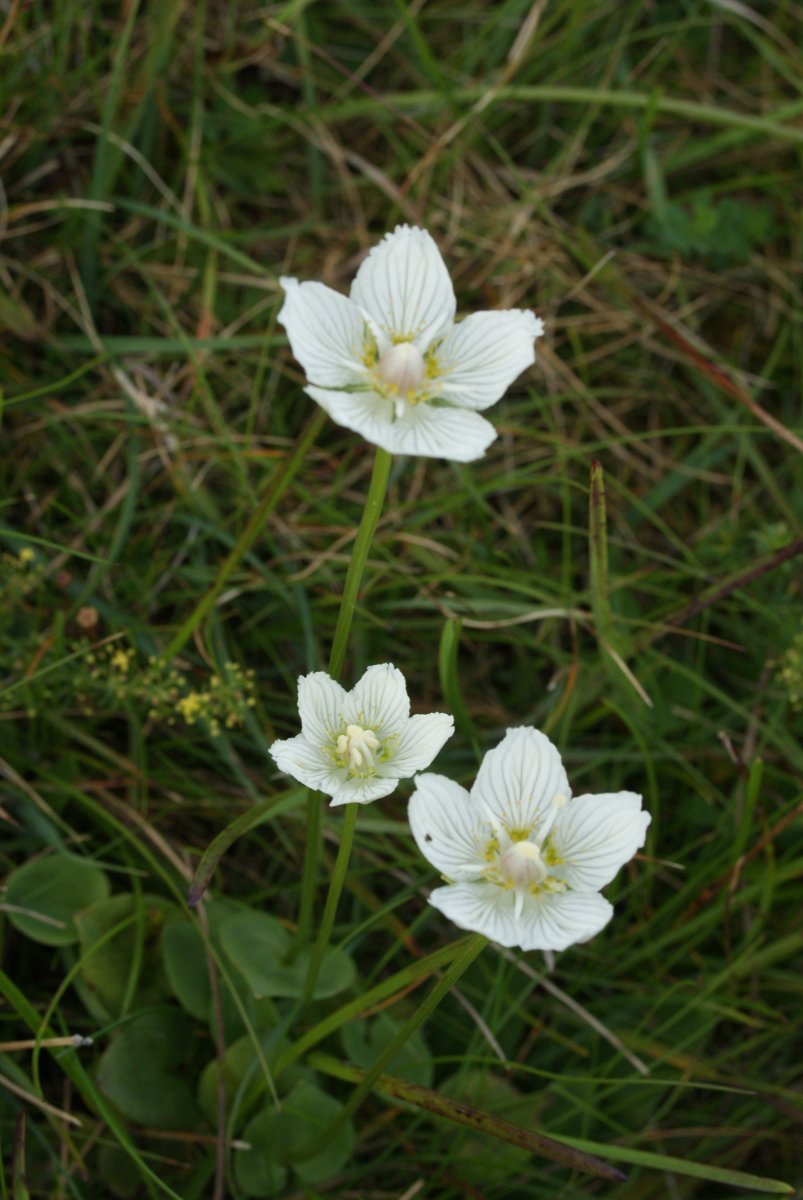
| 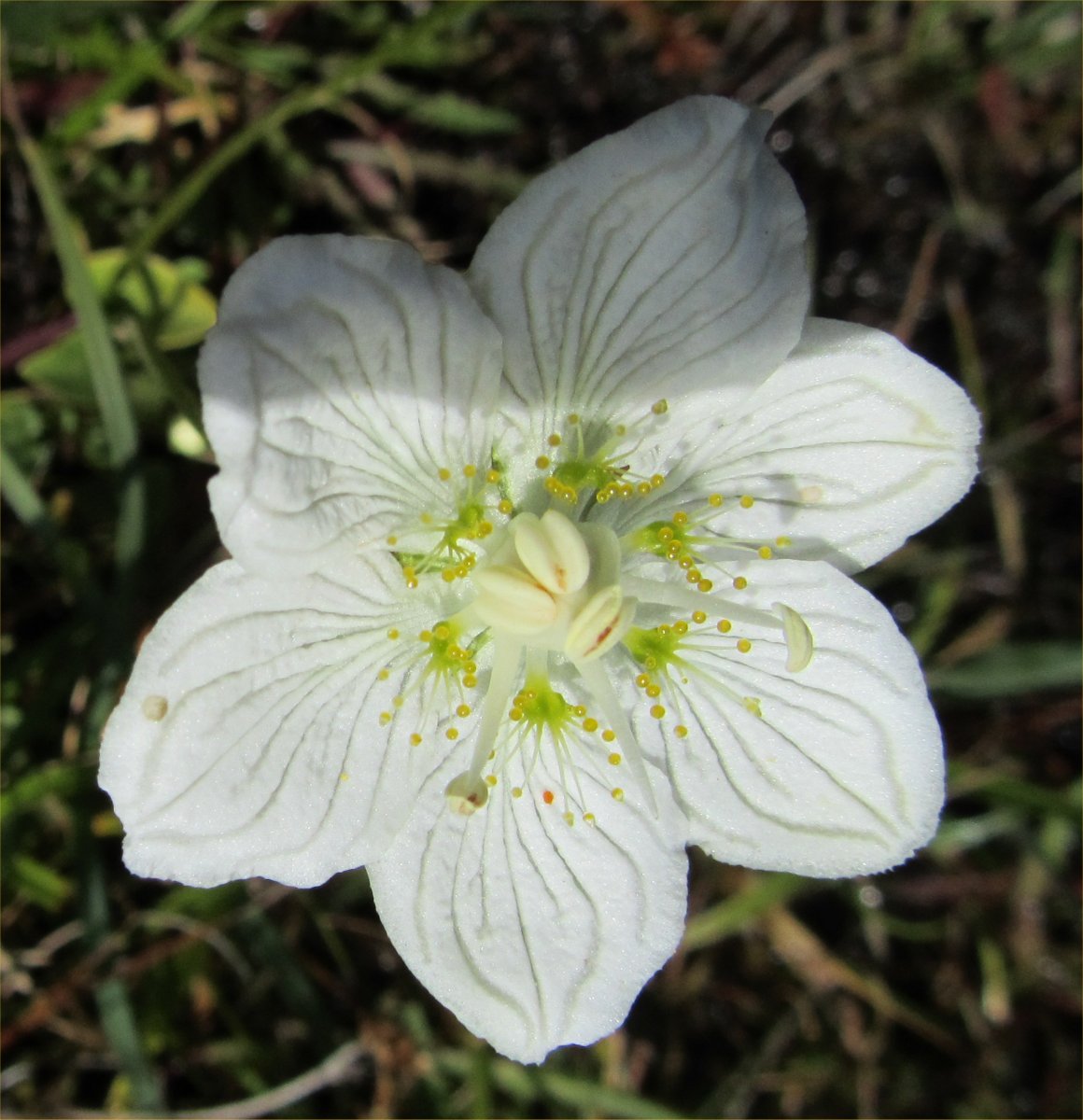
|
| A very attractive flower of northern Britain, these were at Portuairk in September 2012 and Achnaha in August 2010, both in Ardnamurchan, and on The Burg, Mull, in August 2012 |
Back to index
| Stonecrop family - Crassulaceae |
| BITING STONECROP Sedum acre | |
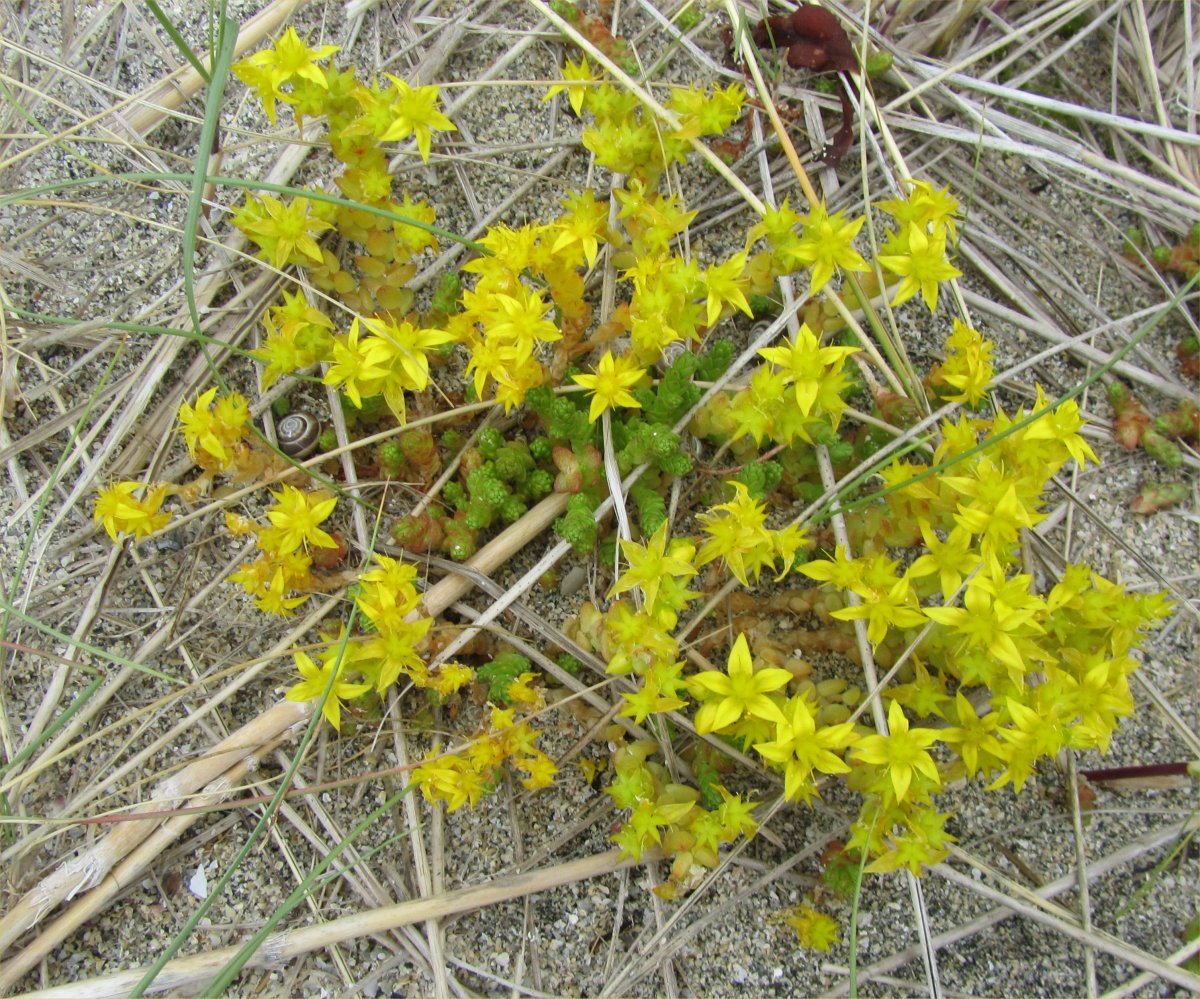 |
| Peppery-tasting and ubiquitous on walls, roadsides, coastal sand and shingle. This plant was at Sanna, Ardnamurchan, in July 2015 |
back to index
| ROSEROOT Sedum rosea | |
 |

| 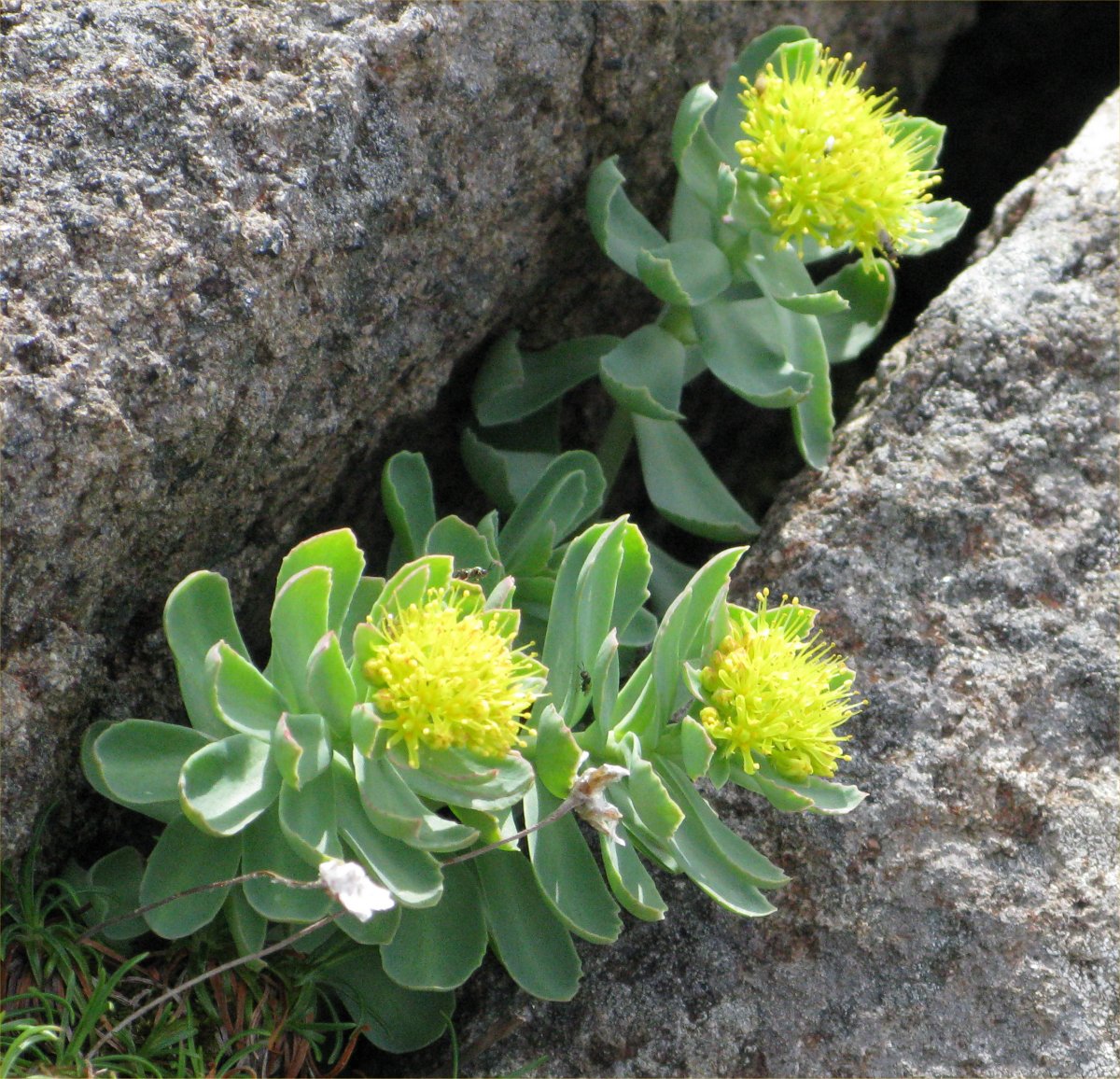
|
| A plant of dry, rocky habitats. The young plant (middle photo) is confusingly different from the fully-grown. We saw these on Iona, Mull in May 2017 (1st two), and Sanna, Ardnamurchan, in May 2009. |
Back to index
| NAVELWORT Umbilicus rupestris | |
 |
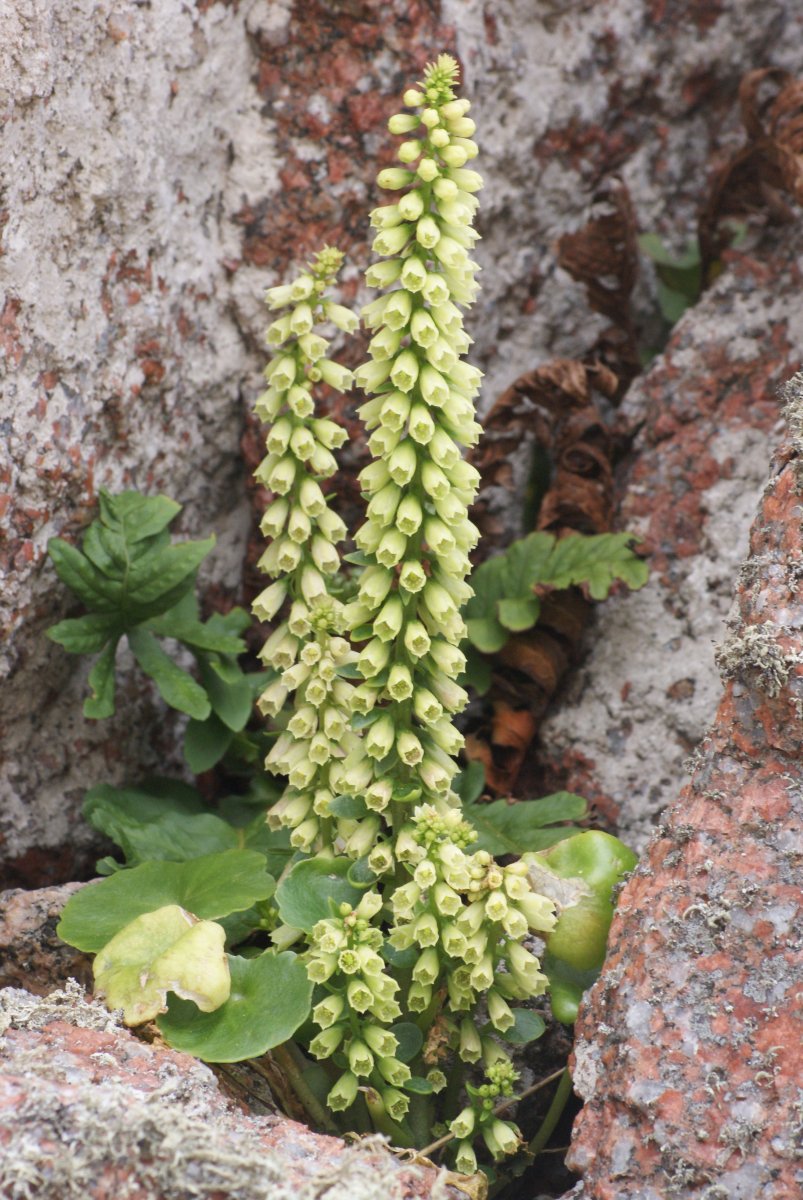
| 
|
| An unmistakable plant, also called Wall Pennywort. It grows on walls and rocks, as here at Erraid Narrows, Mull in May 2010 (1st photo)and June 2011. |
Back to index
| DOG-ROSE Rosa canina | |
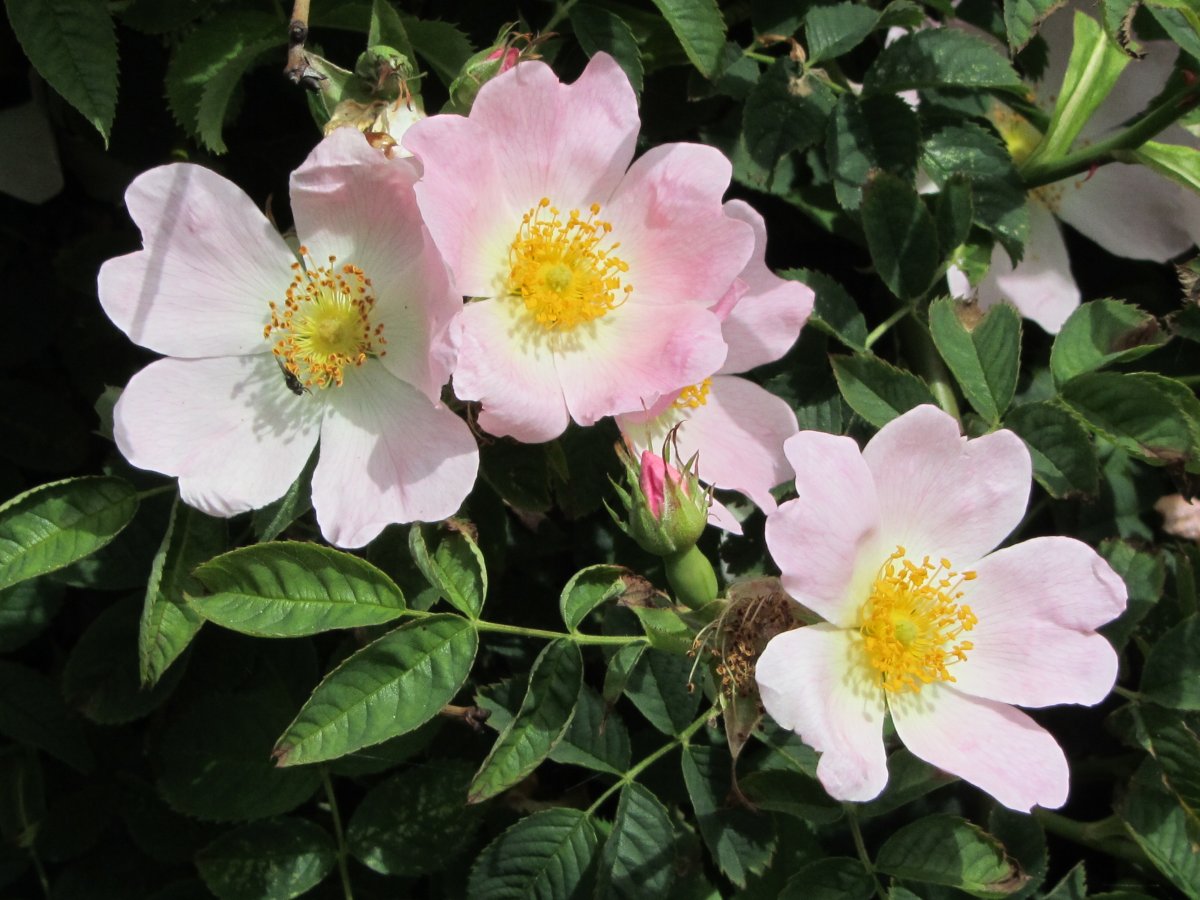 |

|
| The familiar 'wild rose', at Low Hauxley, Northumberland coast June 2014 |
Back to index
| NORTHERN DOWNY ROSE Rosa mollis | |
 |
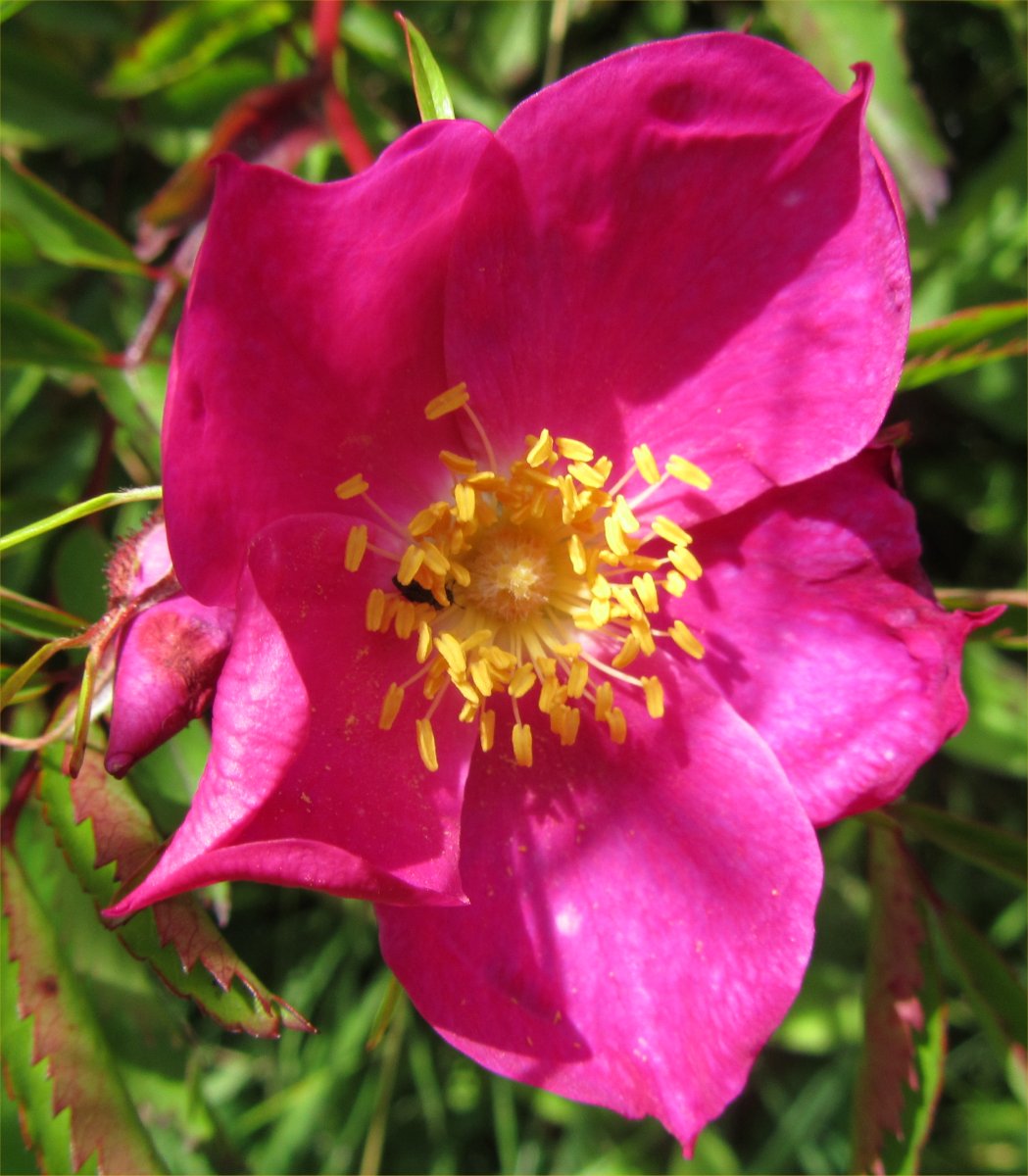
|
| Unsure whether these were correctly identified, we photographed them at Coanwood, West Northumberland June 2010, and Low Hauxley Northumberland coast July 2011 |
Back to index
| SHERARD'S DOWNY ROSE Rosa sherardii | |
 |

| 
|
| Fairly sure of these, from the blue-green leaves. Seen at Low Hauxley Northumberland coast June 2017, and two from Featherstone, West Northumberland June 2010 |
Back to index
| BURNET ROSE Rosa pimpinellifolia | |
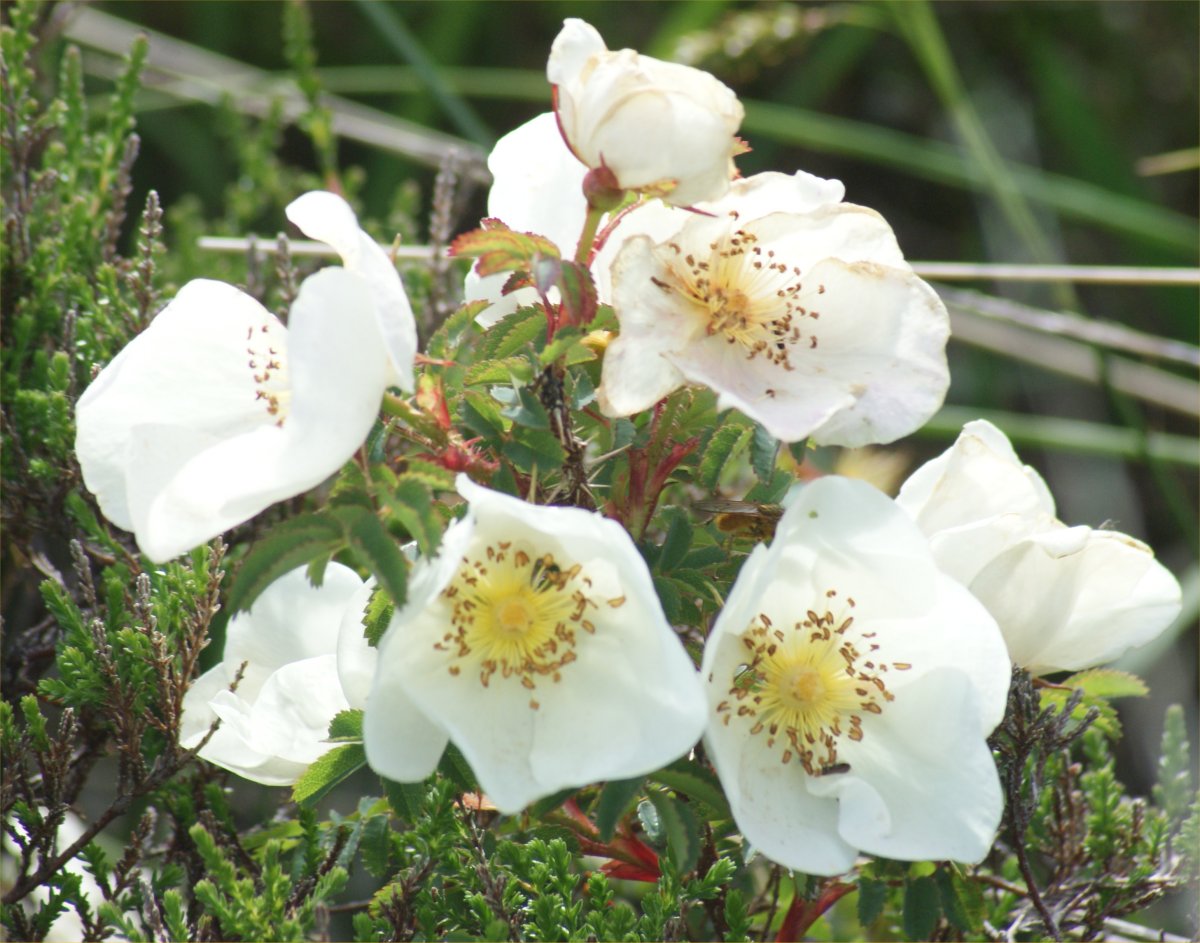 |
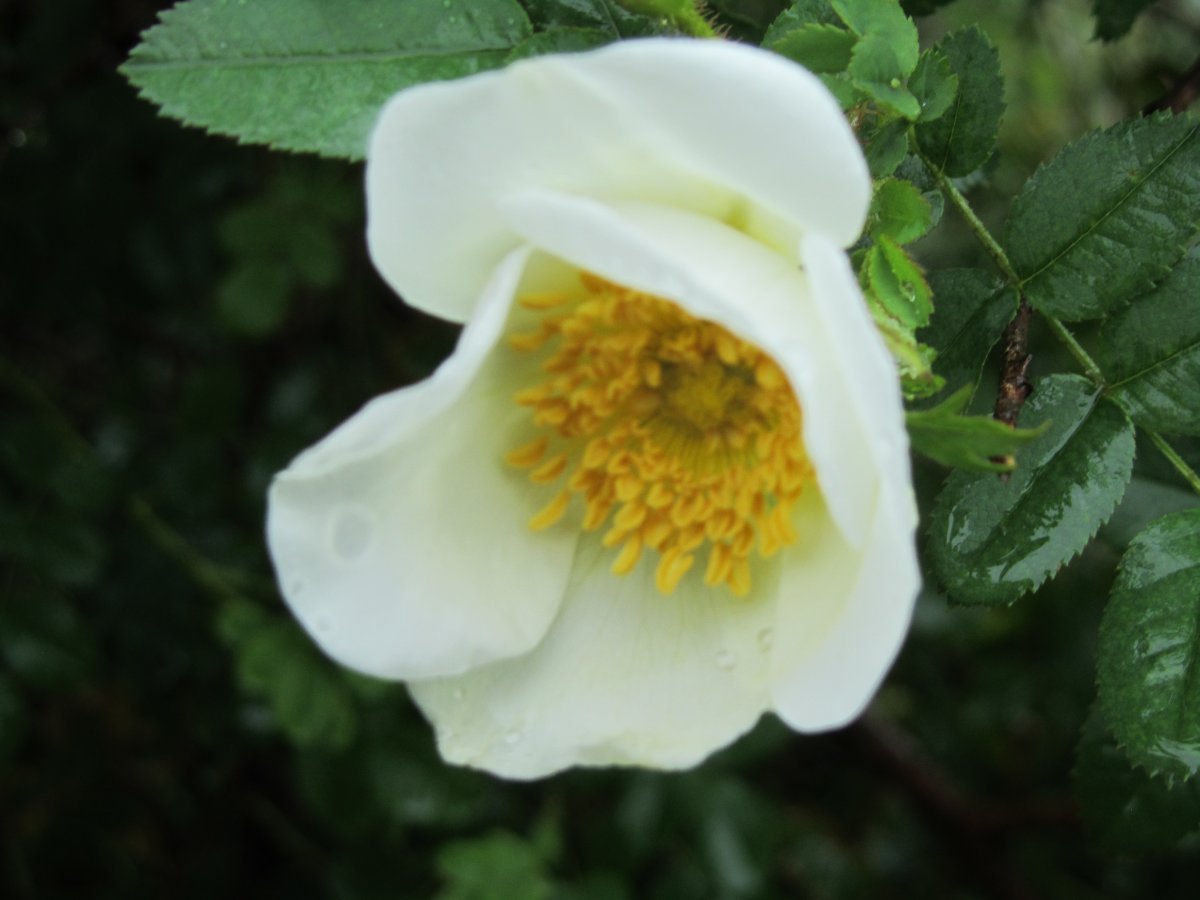
|
| One of our more modest roses, here at Sanna, Ardnamurchan, July 2015,and Tynemouth, Northumberland coast June 2017 |
Back to index
| JAPANESE ROSE Rosa rugosa | |
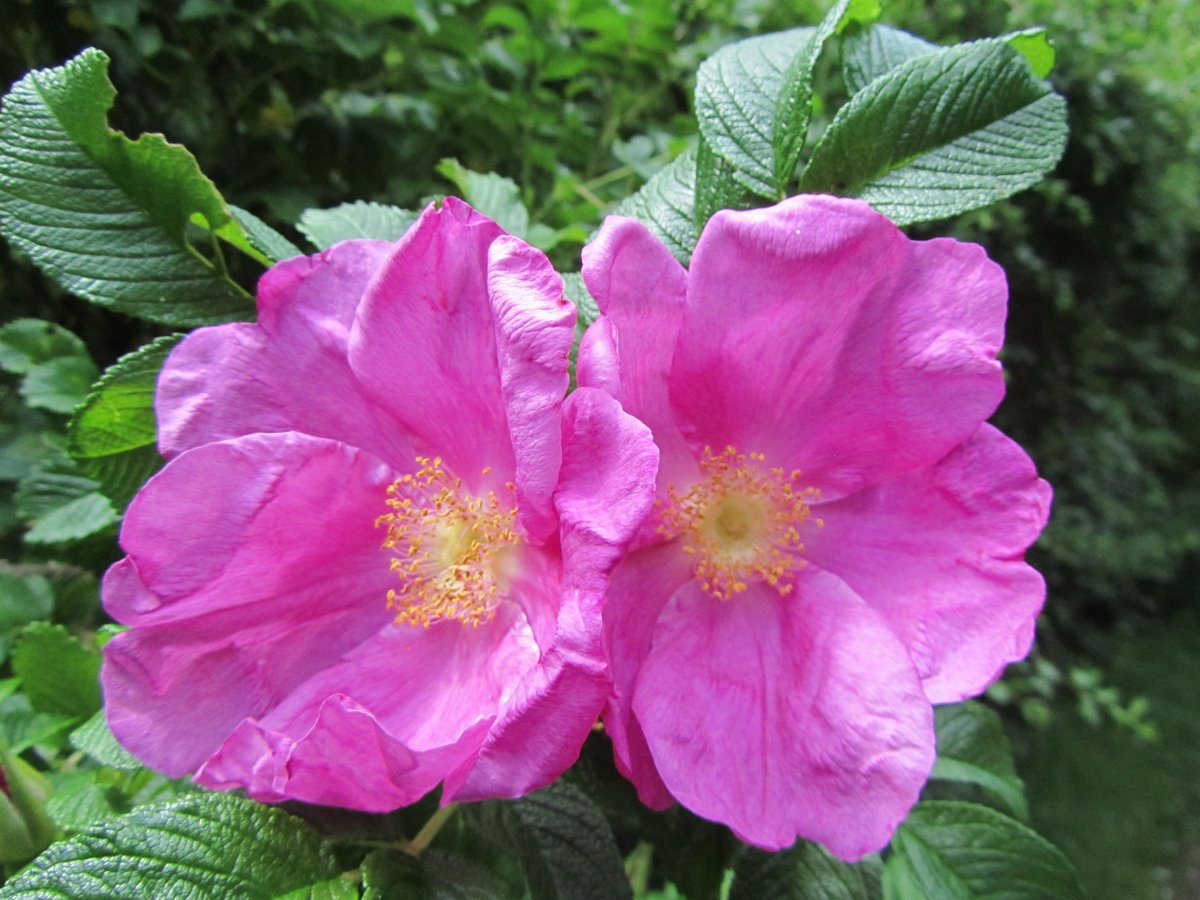 |
| Commonest of the 'introduced' roses, they are now found in many wild places, as well as former grounds such as here at Low Hauxley Northumberland coast June 2017 |
back to index
| MANY-FLOWERED ROSE Rosa multiflora | |
 |

| 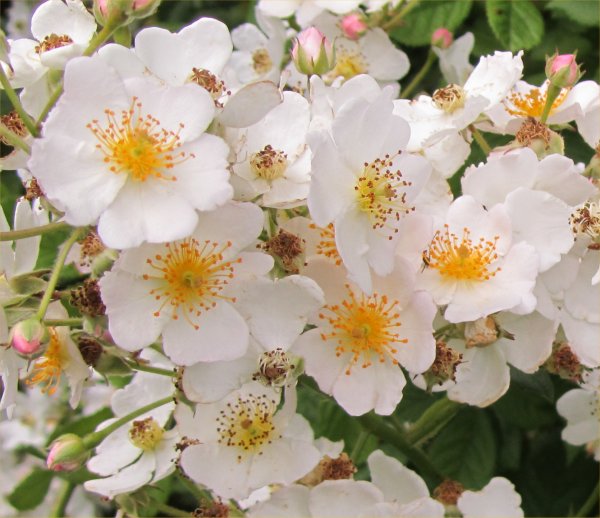
|
| Probably the easiest wild rose to identify! These made a spectacular display at Tyne Green, Hexham, in June 2017 |
Back to index
| DEWBERRY Rubus caesius | |
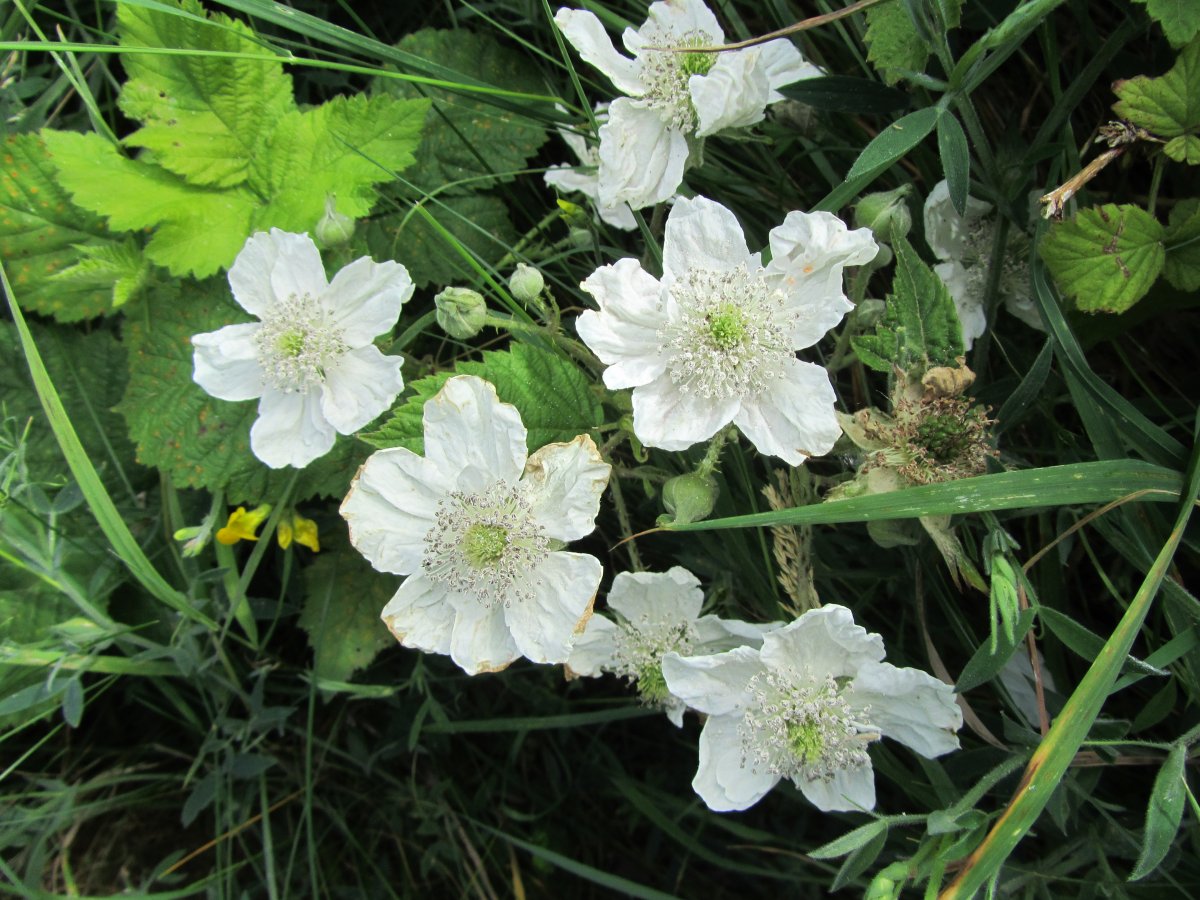 |
| Closely related to the Bramble, and often hybridizing with it, these were at Druridge Northumberland coast, in June 2017 |
back to index
| MEADOWSWEET Filipendula ulmaria | |
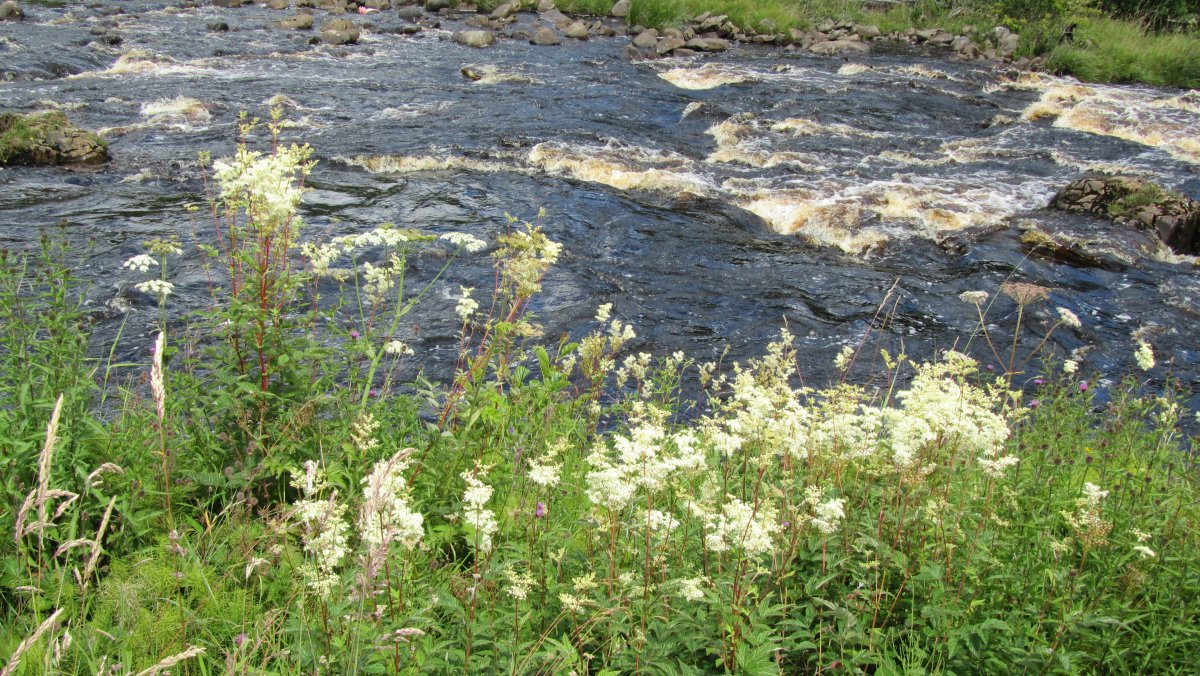 |
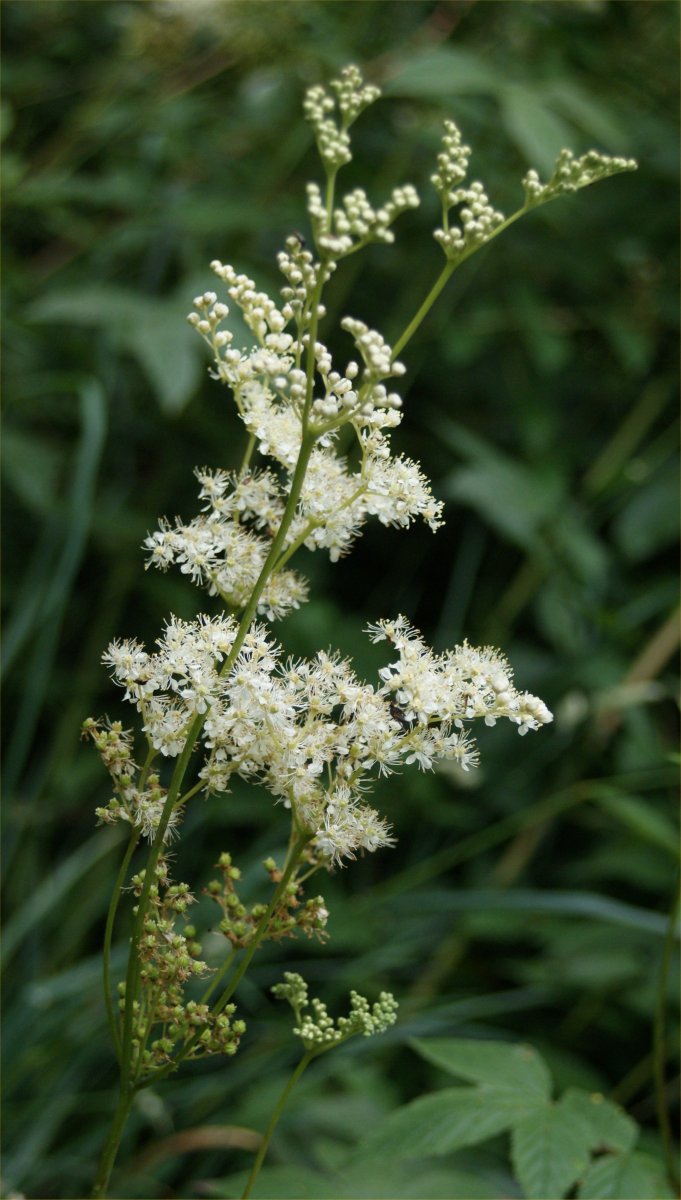
| 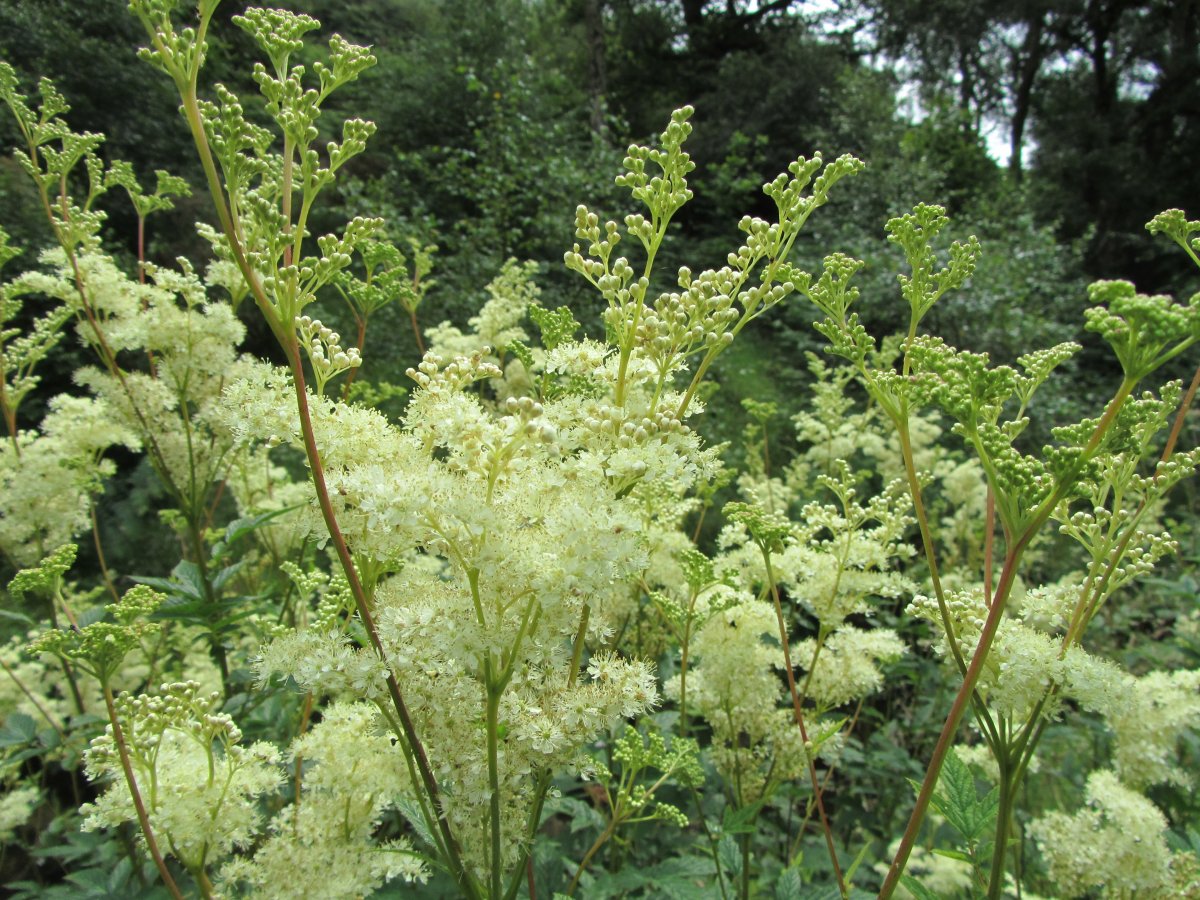
|
| Carpeting damp meadows, river banks and similar habitats, this sweet-smelling and luxuriant plant delighted us in Teesdale in August 2015, Hareshaw, West Northumberland, in July 2009 and Stoke Ford nr Eyam, Derbyshire July 2011. |
Back to index
| SHRUBBY CINQUEFOIL Potentilla fruticosa | |
 |
| A perhaps intriguing rather than attractive plant, localized around Teesdale, where we photographed this one in September 2013 |
Back to index
| MARSH CINQUEFOIL Potentilla palustris | |
 |

| 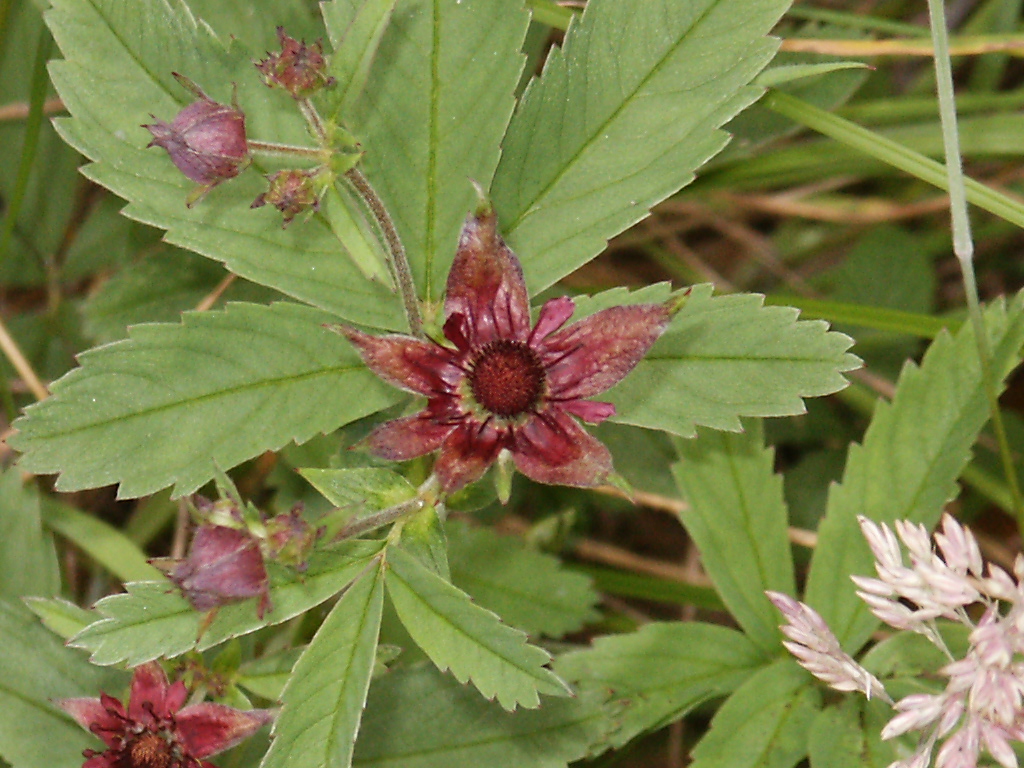
|
| One of our most distinctive and easily-recognized plants, in or by fresh water, these were (1st & 3rd) at Low Hauxley, Northumberland coast in July 2008 and (2nd) Bunessan, Mull in June 2015 |
Back to index
| ROWAN Sorbus aucuparia | |
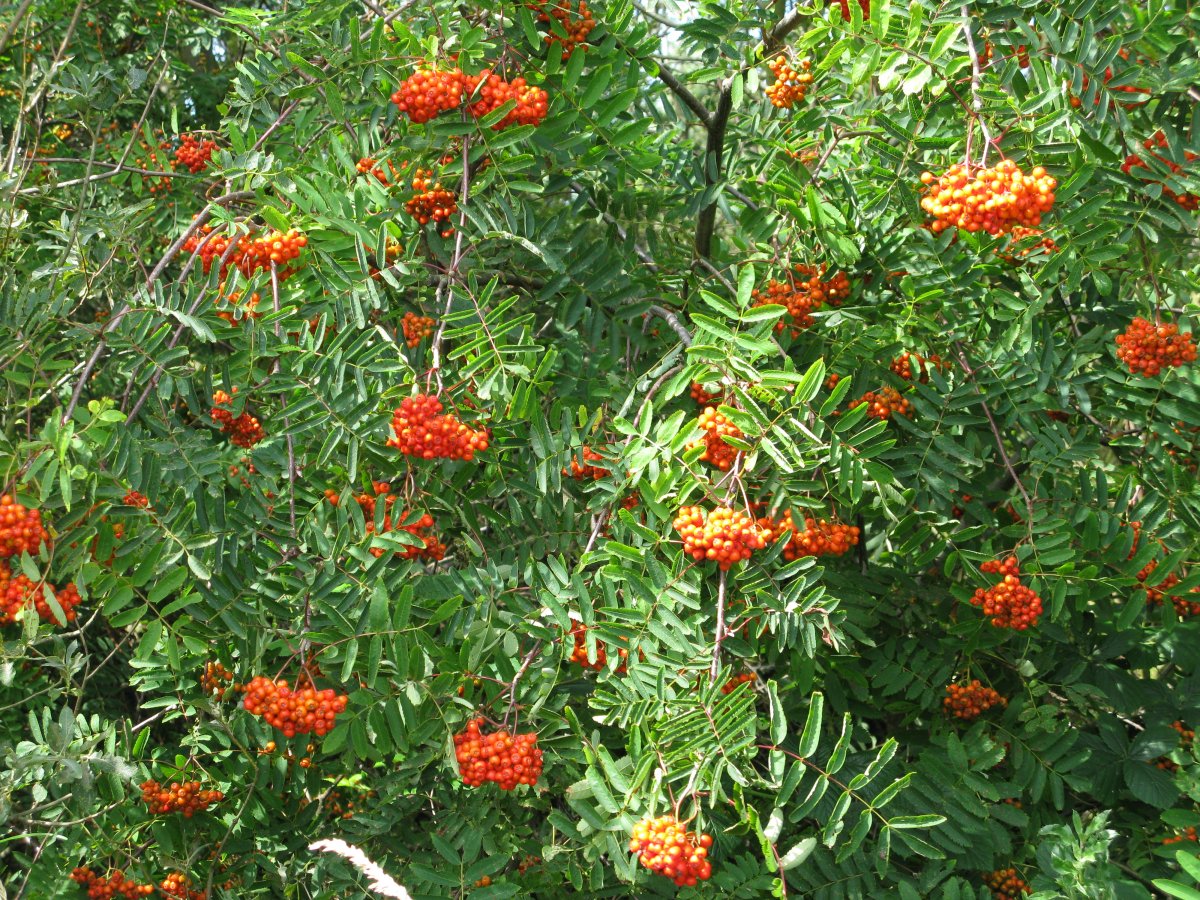 |
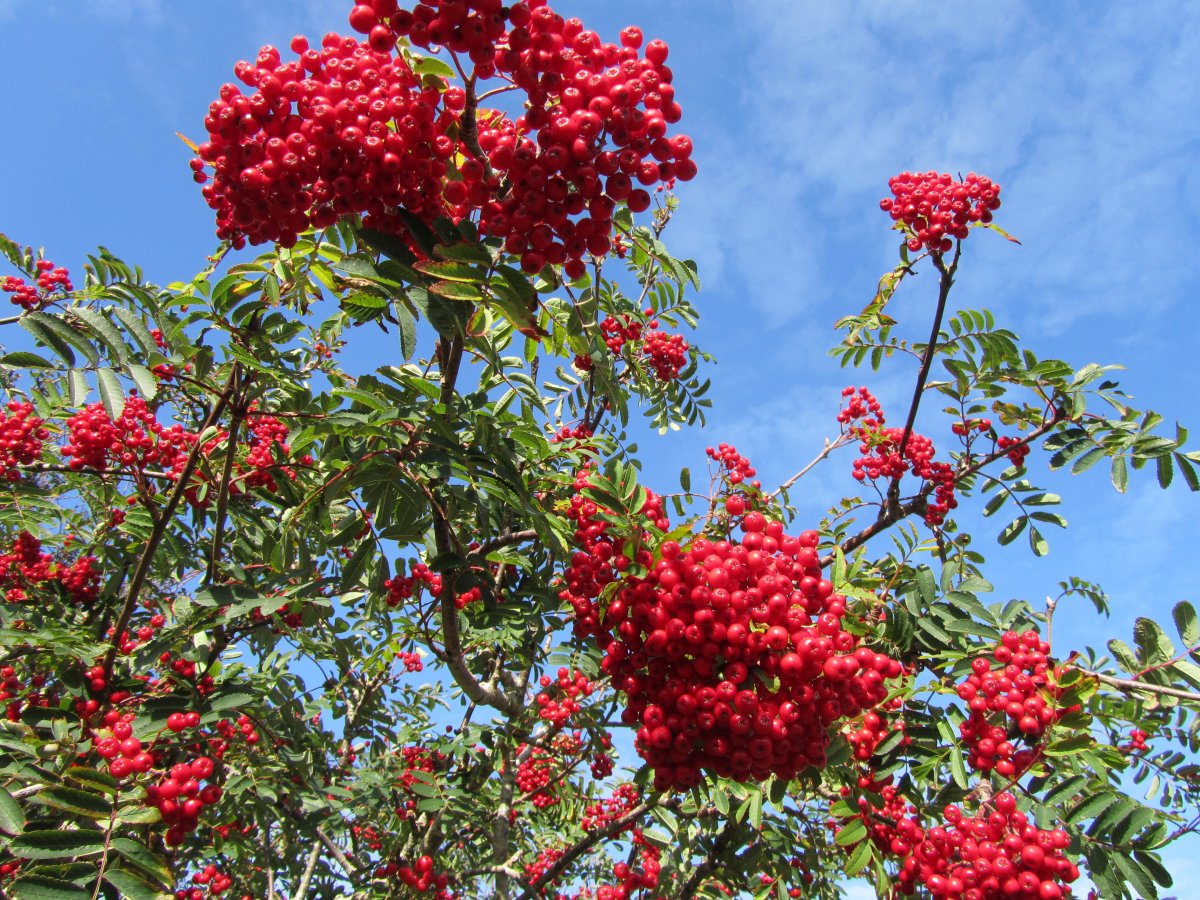
|
| Its beauty belies its toughness, bending to withstand gales. These were seen at Druridge Northumberland coast in August 2009 and Portuairk, Ardnamurchan, in September 2012 |
Back to index
| HAWTHORN (MAY) Crataegus monogyna | |
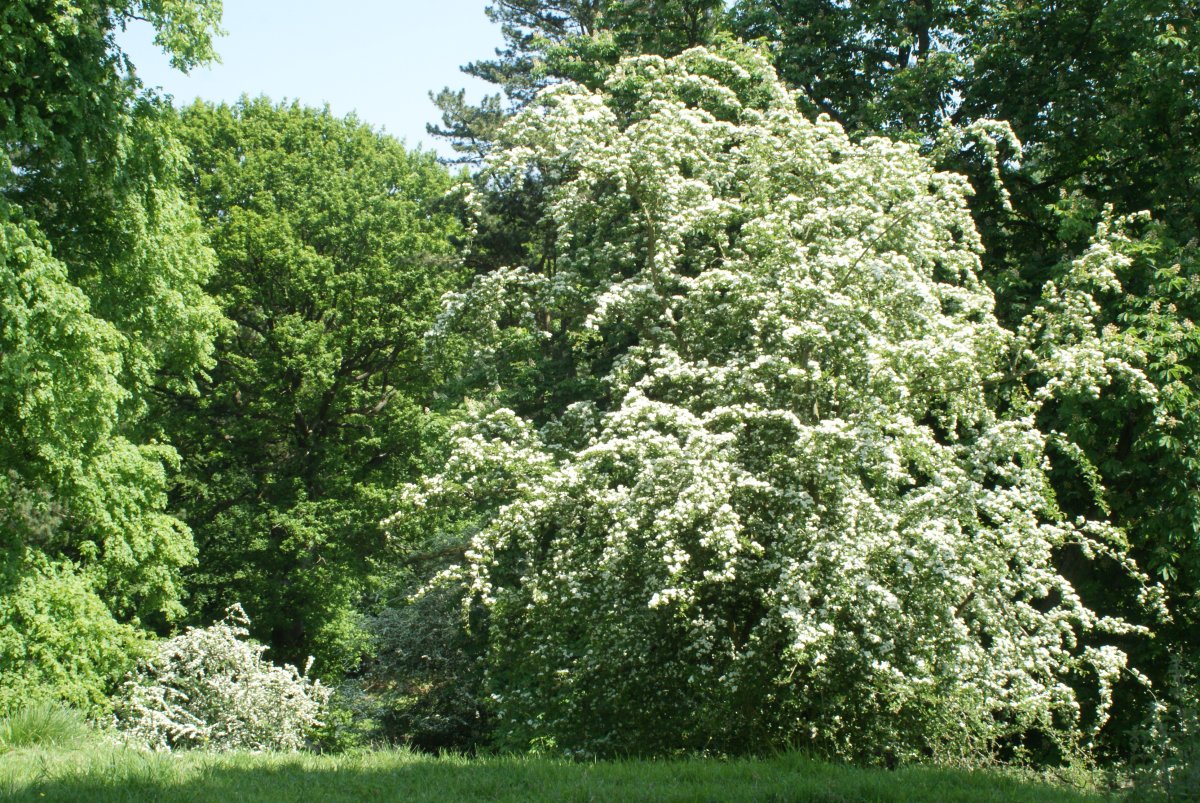 |
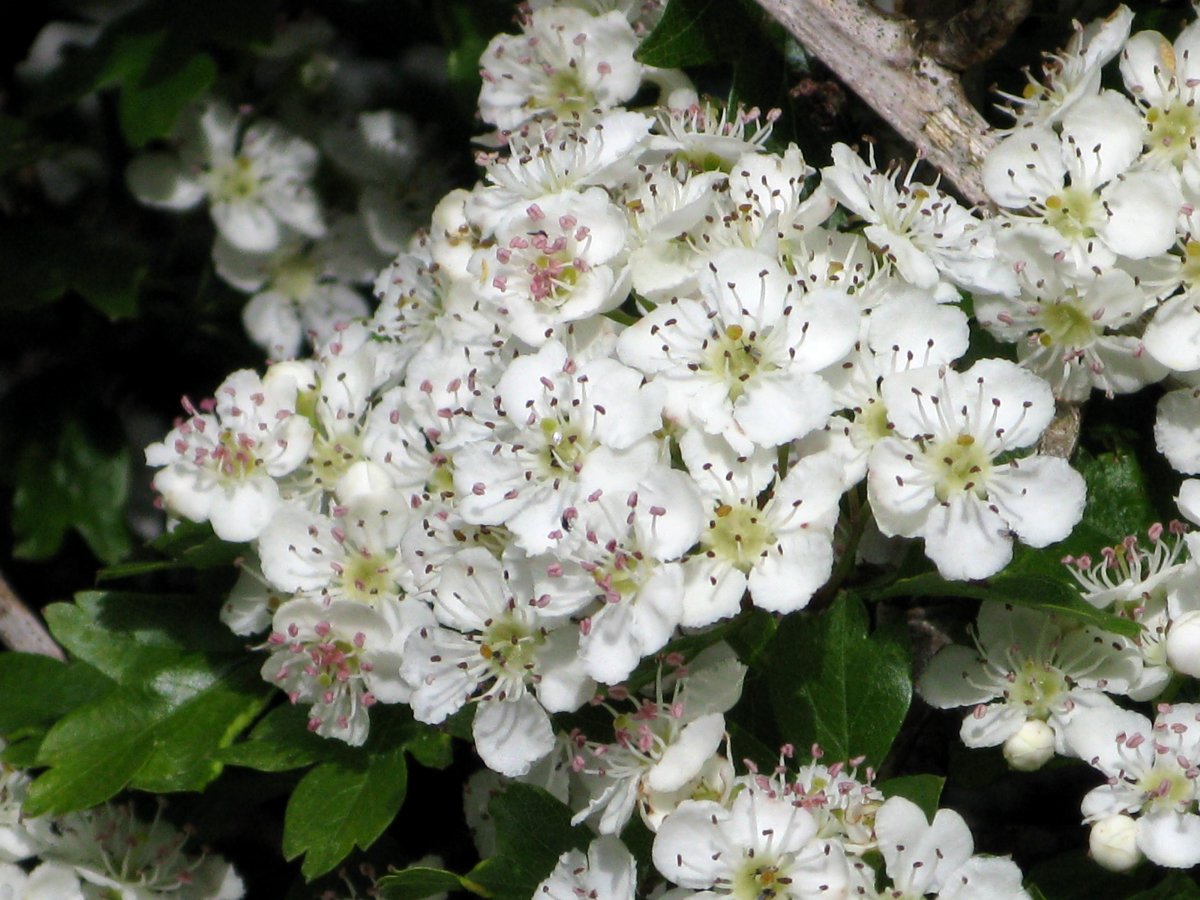
| 
|
| Familiar flowers and berries, stunning when in bloom, these were at Auckland Castle in June 2016, Sanna, Ardnamurchan May 2009 and Hareshaw, West Northumberland November 2010 |
Back to index
| BLACKTHORN Prunus spinosa | |
 |
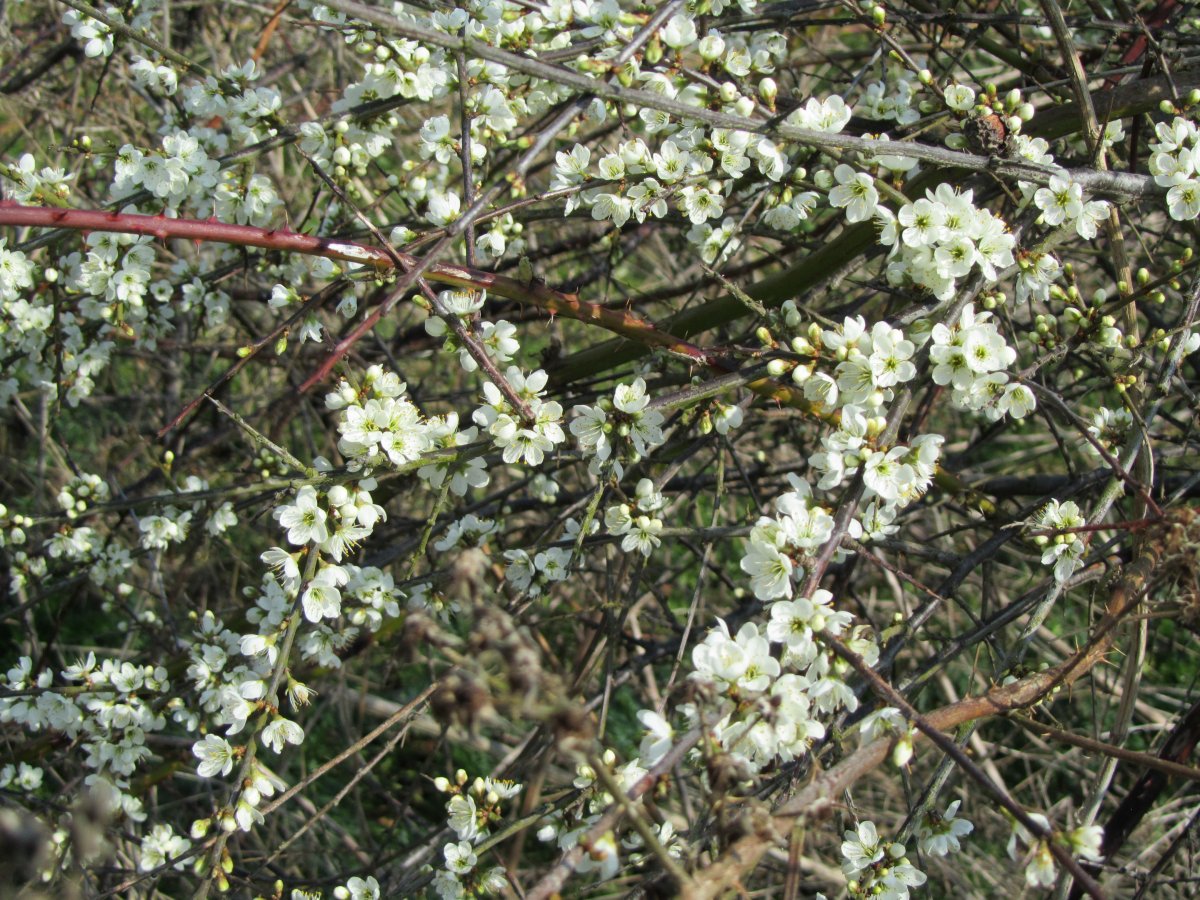
|
| A familiar sight among the earliest shrub and tree blossoms, at Haltwhistle Burn, West Northumberland in April 2017 and Druridge Northumberland coast April 2015 |
Back to index
| BIRD CHERRY Prunus padus | |
 |
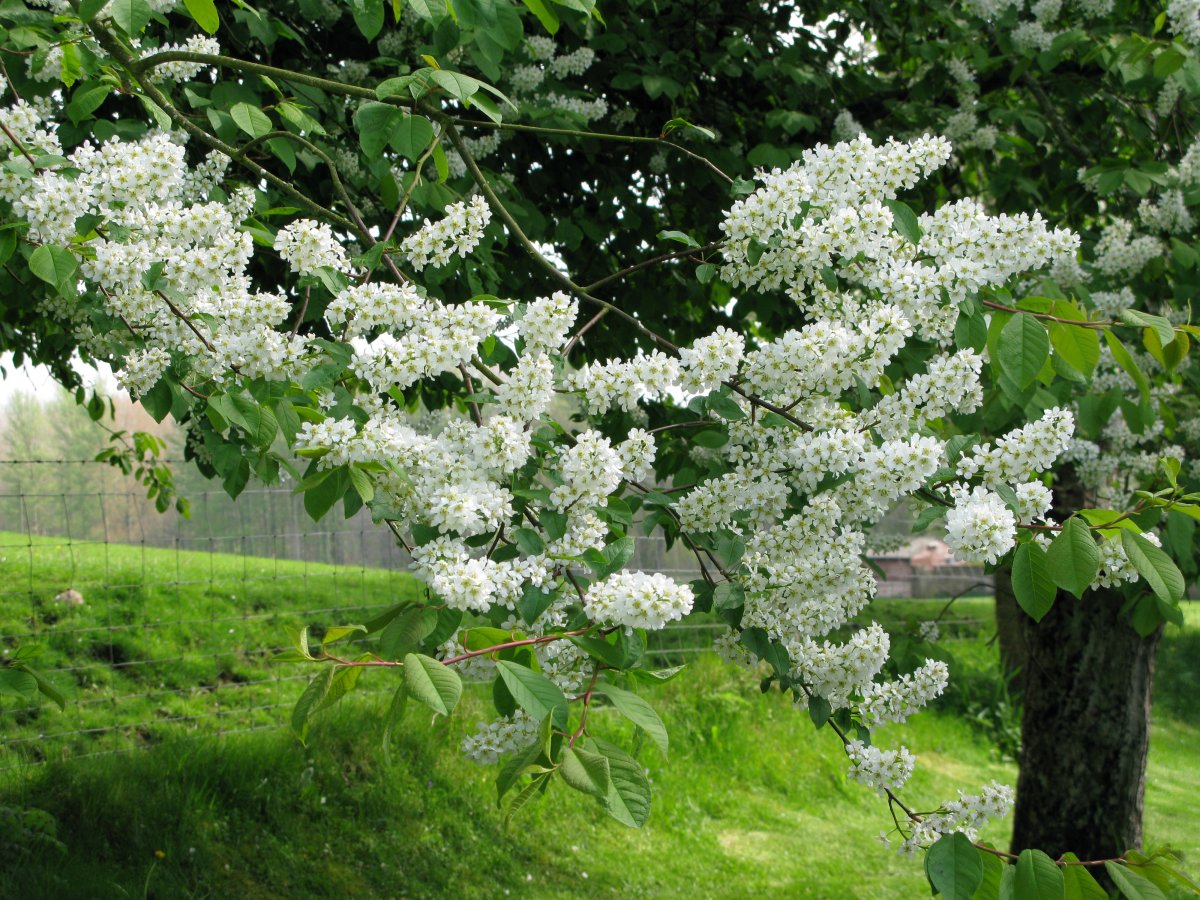
| 
|
| Spectacular when grown really large, these were at Tyne Green, Hexham in May 2016, Wallington in April 2009 and Allenbanks, West Northumberland May 2013 |
Back to index
| Purslane family - Portulaceae |
| SPRING BEAUTY Claytonia perfoliata | |
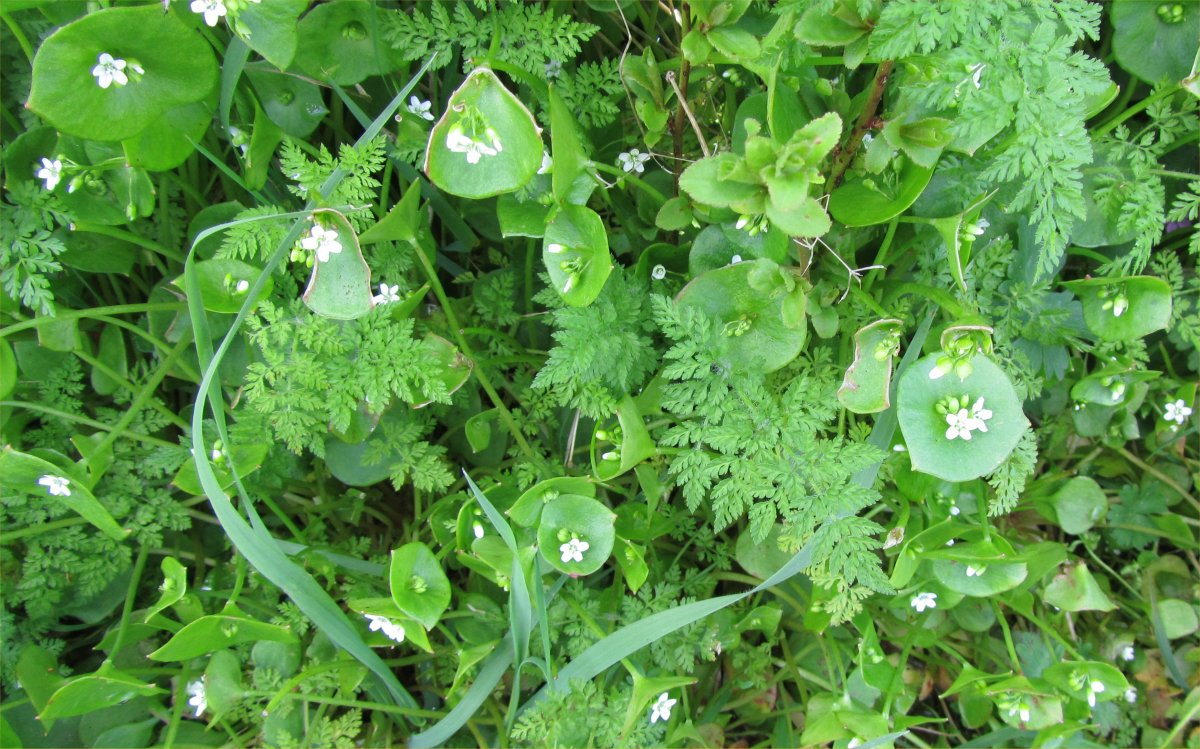 |
| An uncommon and unusual-looking introduced species, here seen at West Stow Saxon Village in May 2016 |
back to index
| PINK PURSLANE Claytonia sibirica | |
 |
| Another introduced and widespread member of the Purslane family, these were seen at Inverness in August 2005 |
back to index
| BUSH VETCH Vicia sepium | |
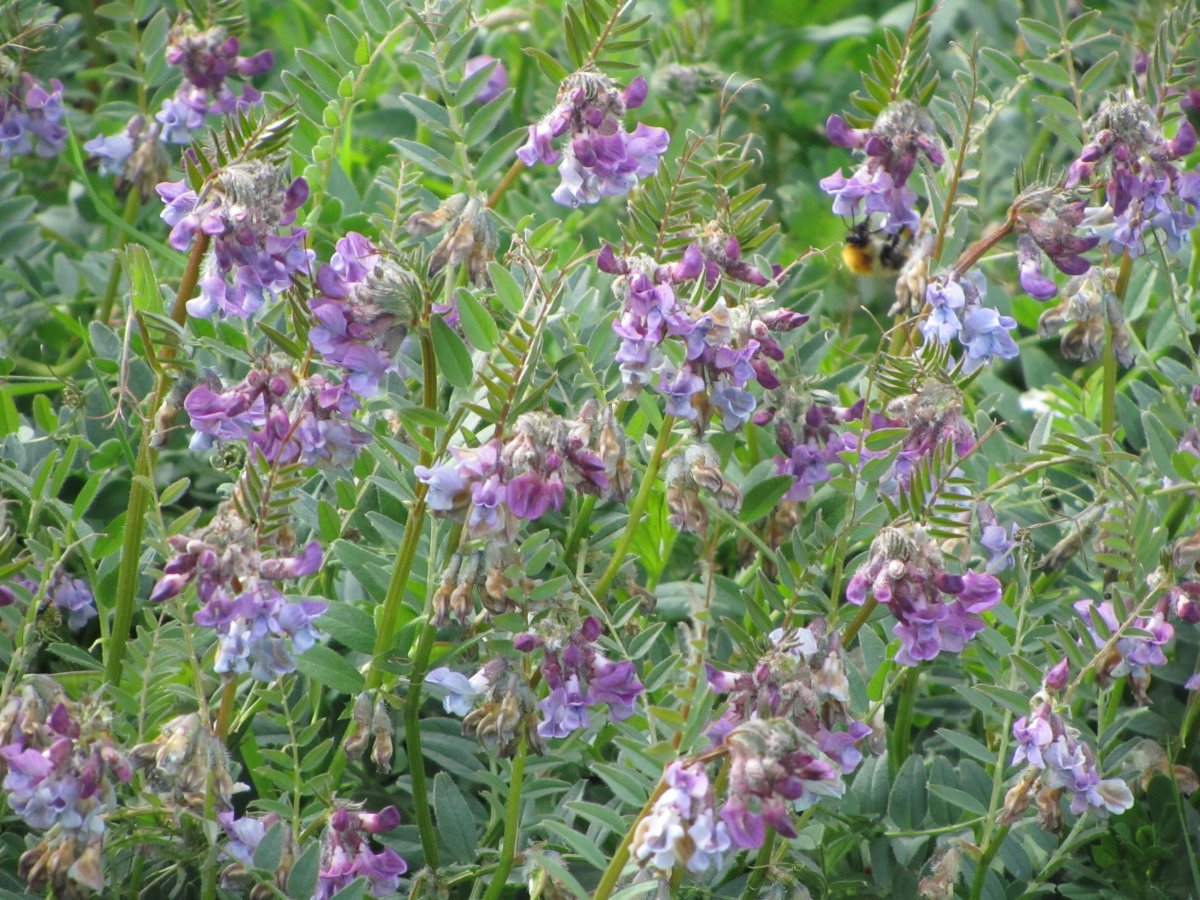 |
| Common and spectacular in masses, such as at Wydon Water, Hexham in May 2011 |
back to index
| BITTER VETCH Lathyrus linifolius | |
 |
| An attractive member of this family, often hidden among more vigorous plants, these were photographed in Teesdale in June 2010 |
back to index
| BIRDSFOOT TREFOIL Lotus corniculatus | |
 |
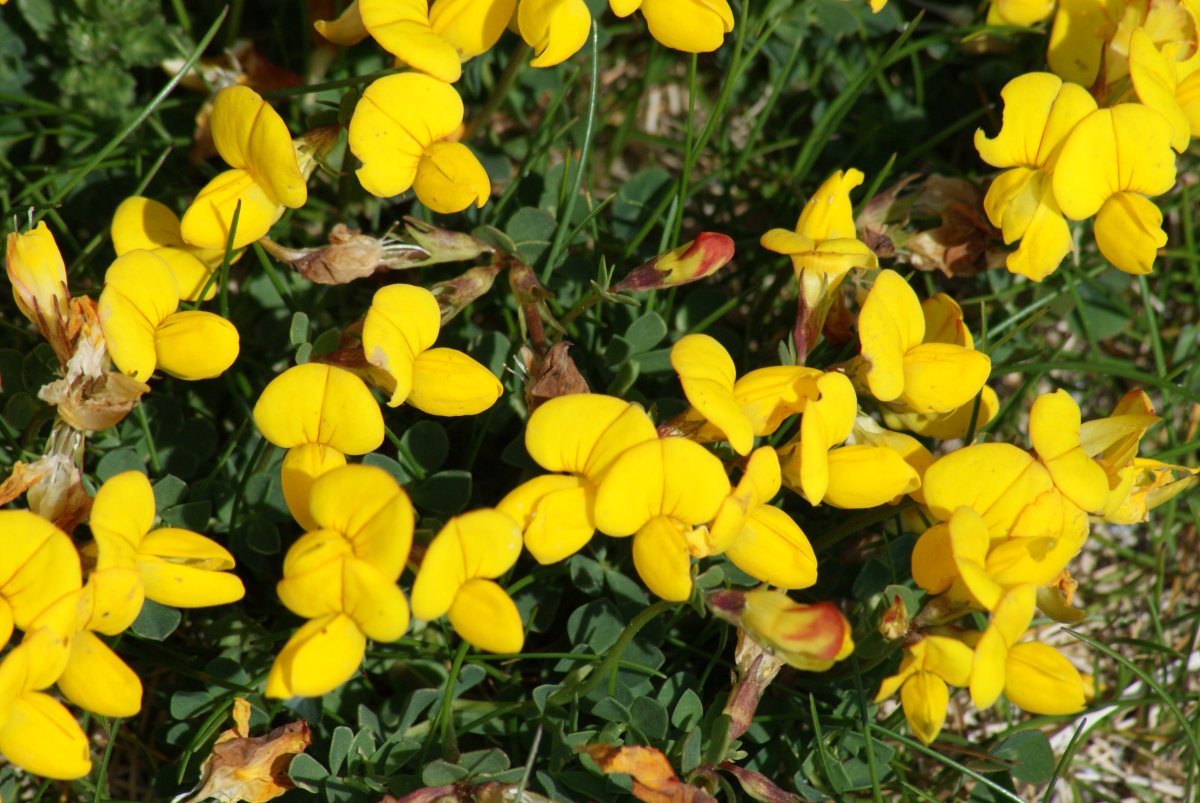
|
| Delicate in detail and spectacular in masses, as here behind the beach at Ardalanish, Mull in May 2017. |
Back to index
| RED CLOVER Trifolium pratense | |
 |
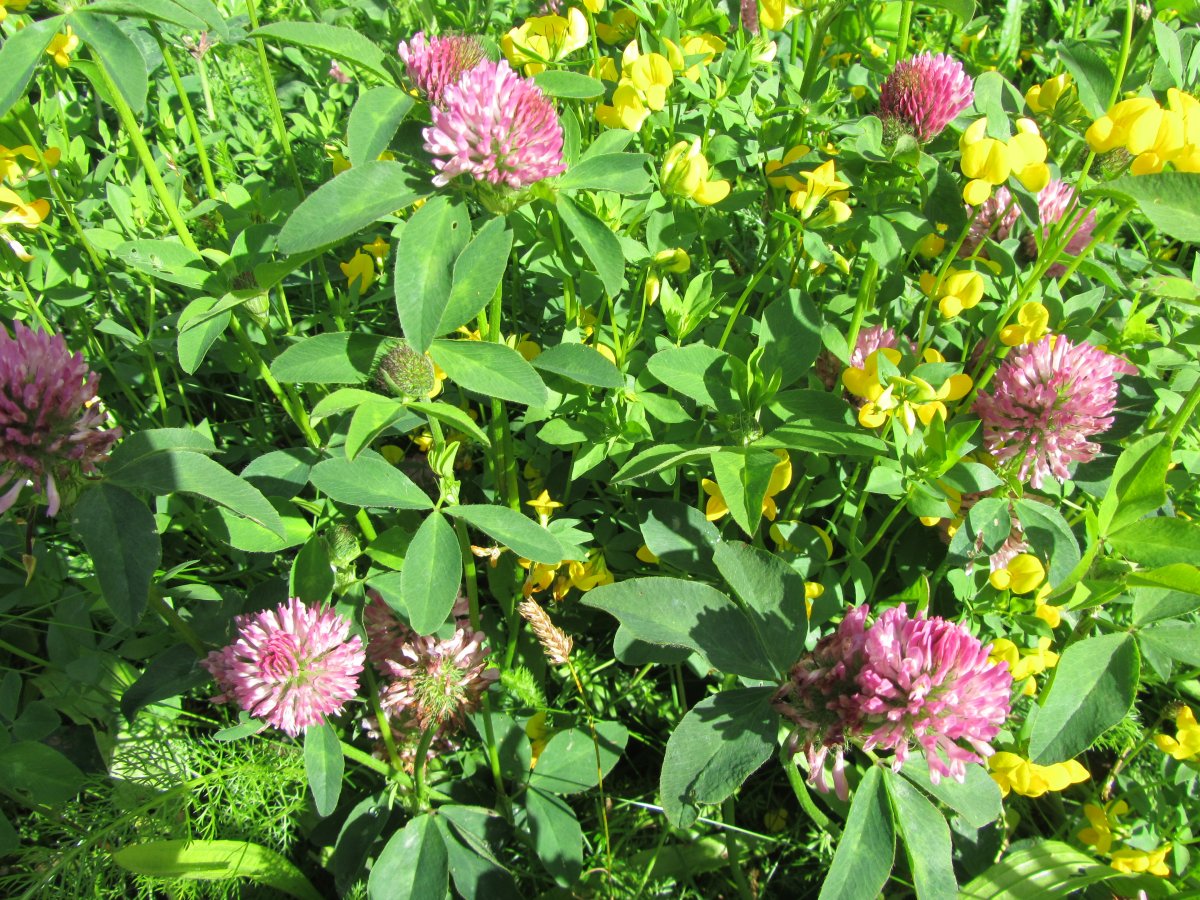
| 
|
| A familiar plant with subtle colour variations. The first two were at The Sill, West Northumberland in August 2017, the third at Belsay in May 2016. |
Back to index
| ZIGZAG CLOVER Trifolium medium | |
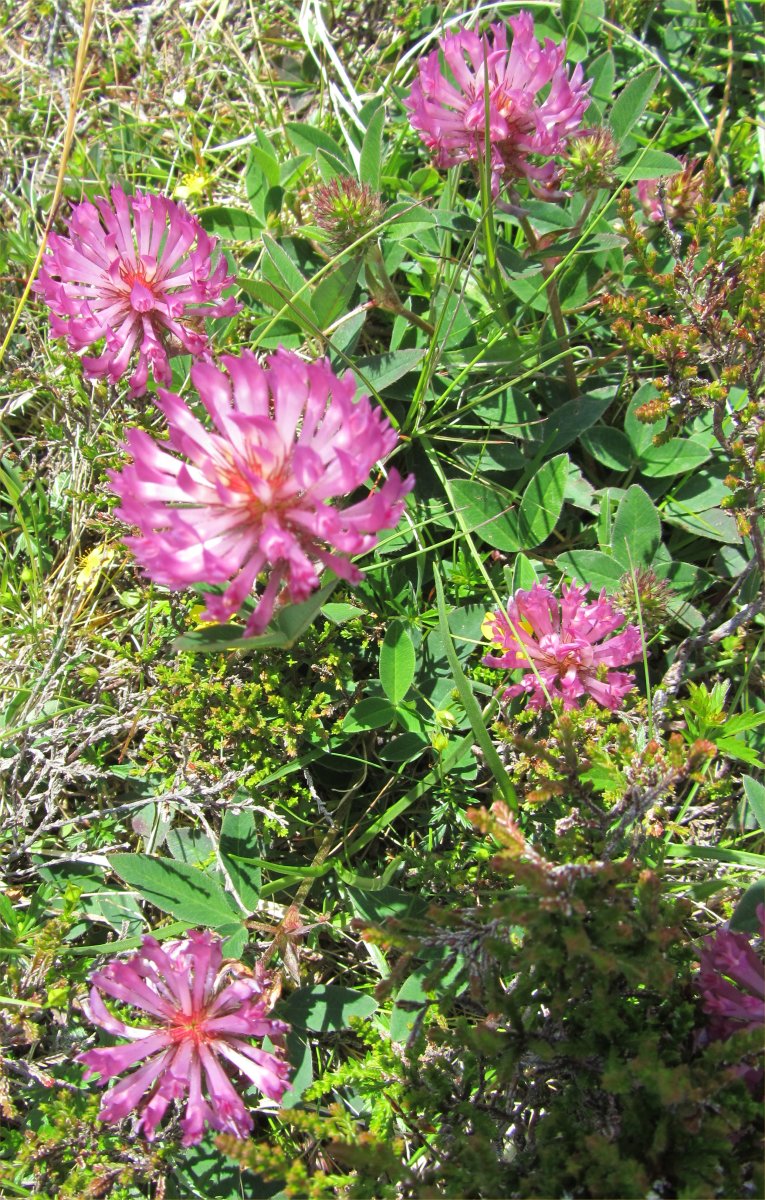 |
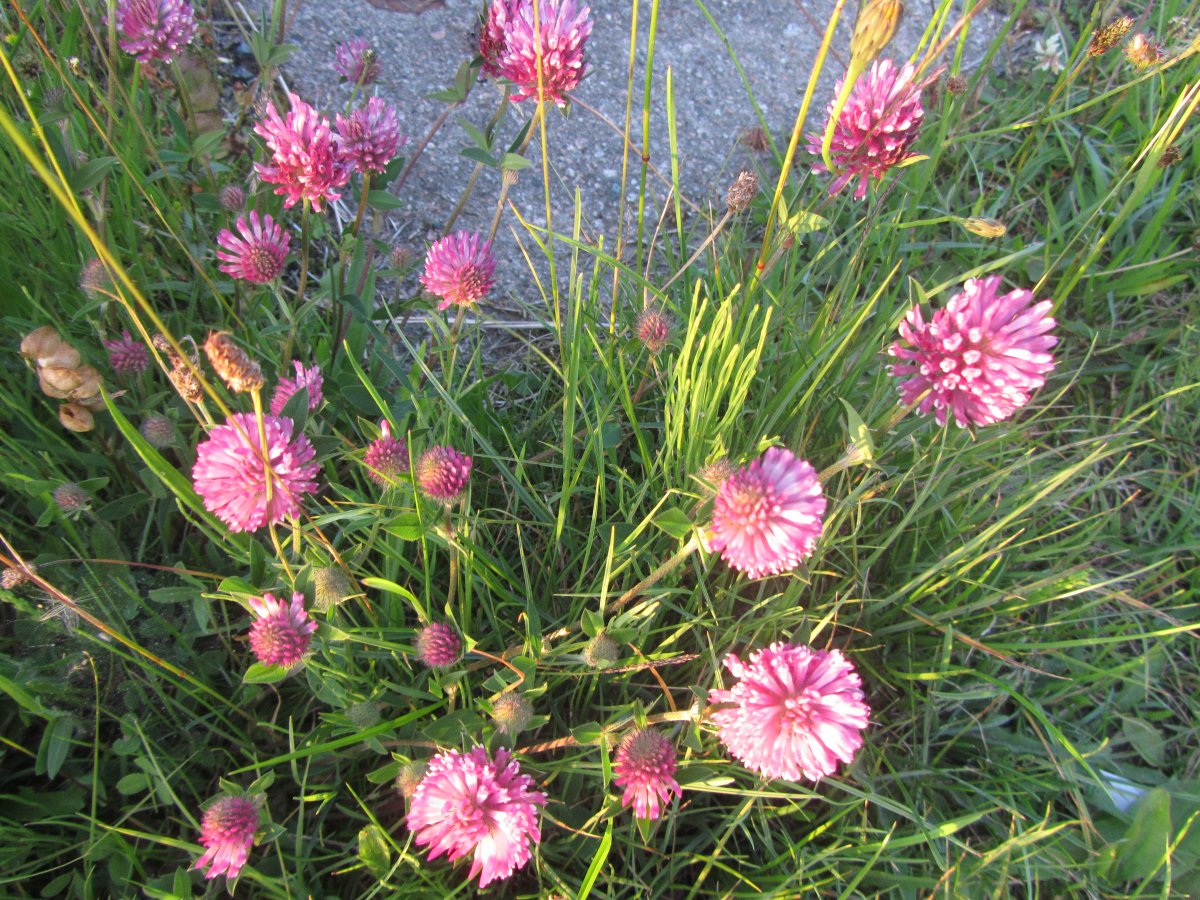
|
| Distinguished from Red Clover by their irregular stems, these were at Bay MacNeill, Ardnamurchan, in July 2015 and Uisken Mull in July 2013. |
Back to index
| ALSIKE CLOVER Trifolium hybridum | |
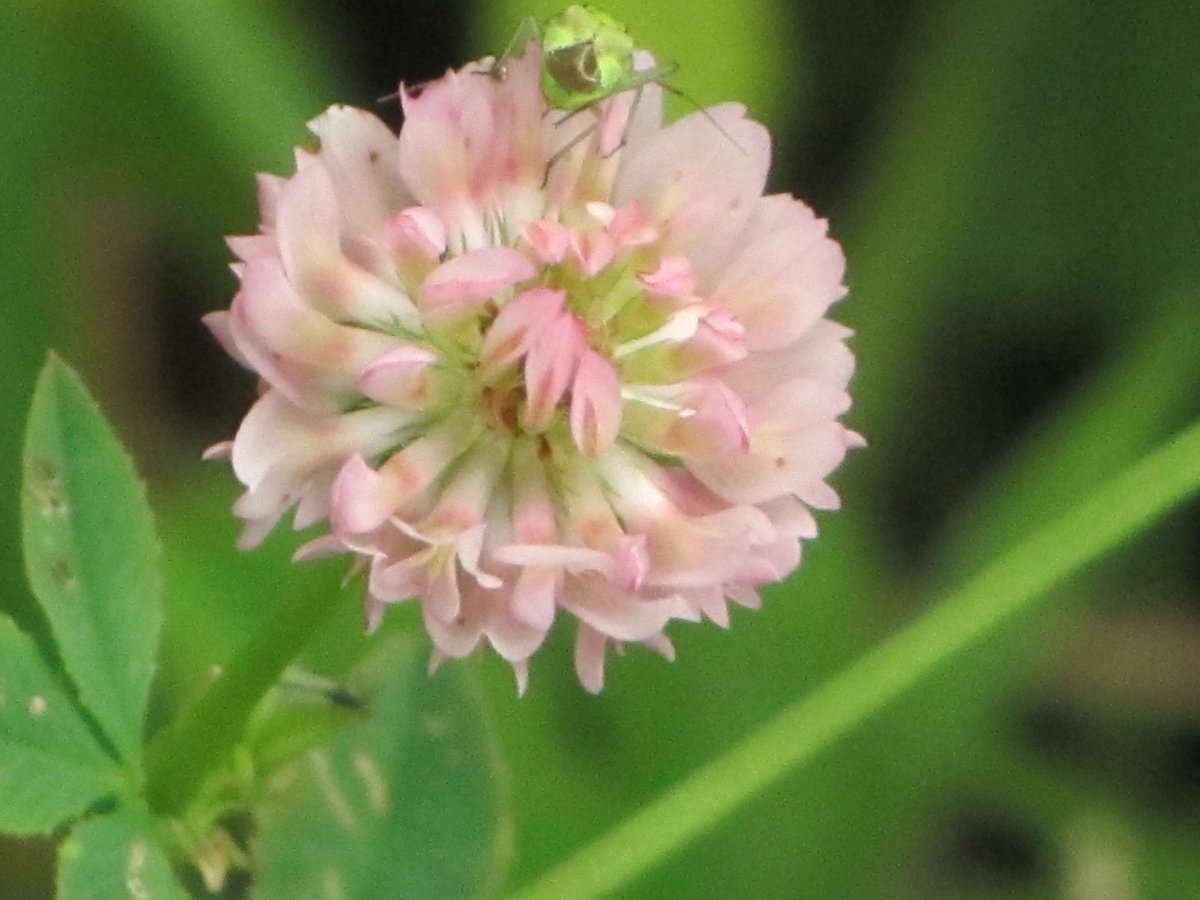 |
| From the flower shape and colour this is probably Alsike, seen at Druridge, Northumberland coast in August 2010. Some books show the leaves as more rounded, but there seems to be considerable variation. |
back to index
| TUFTED VETCH Vicia cracca | |
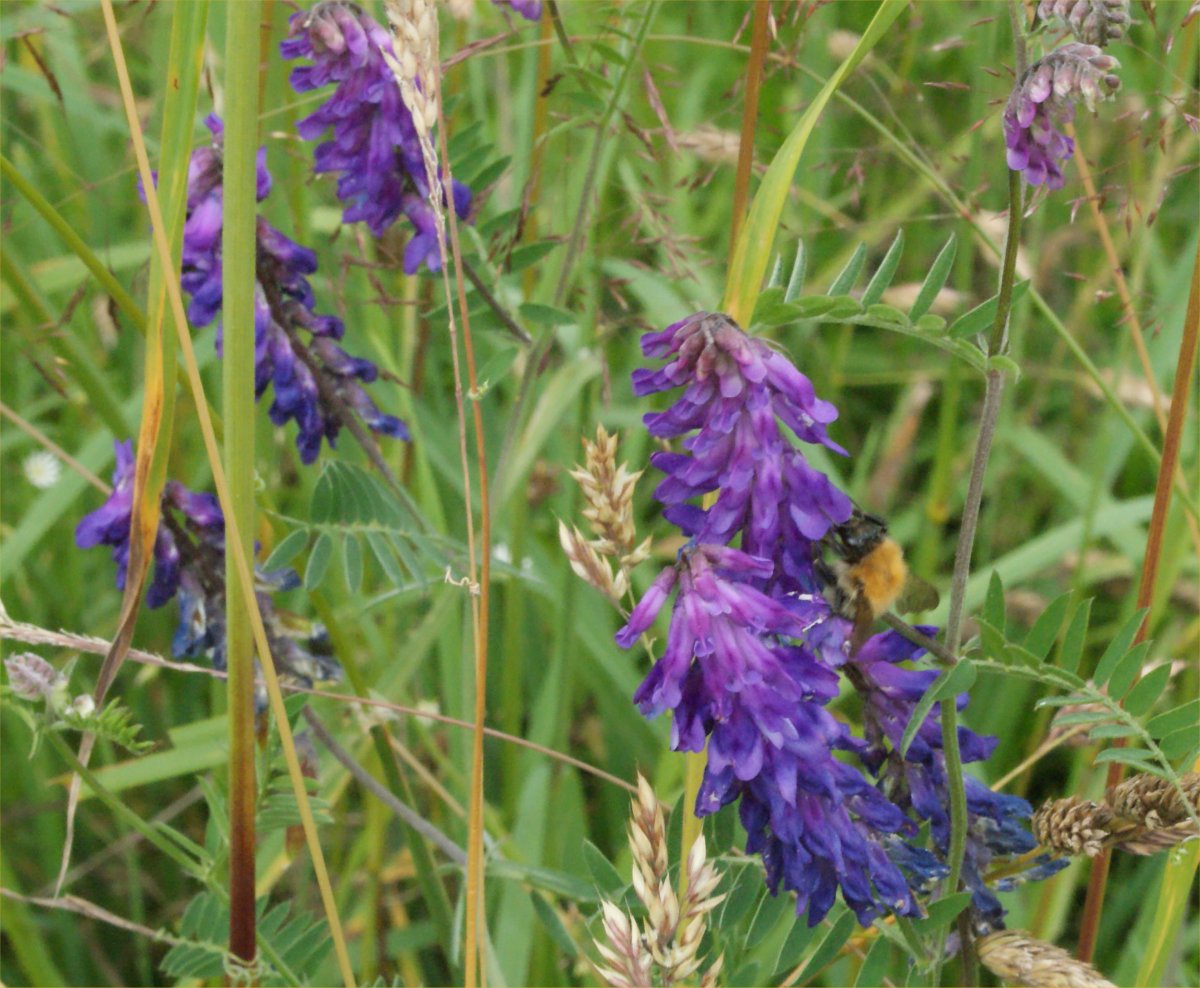 |

| 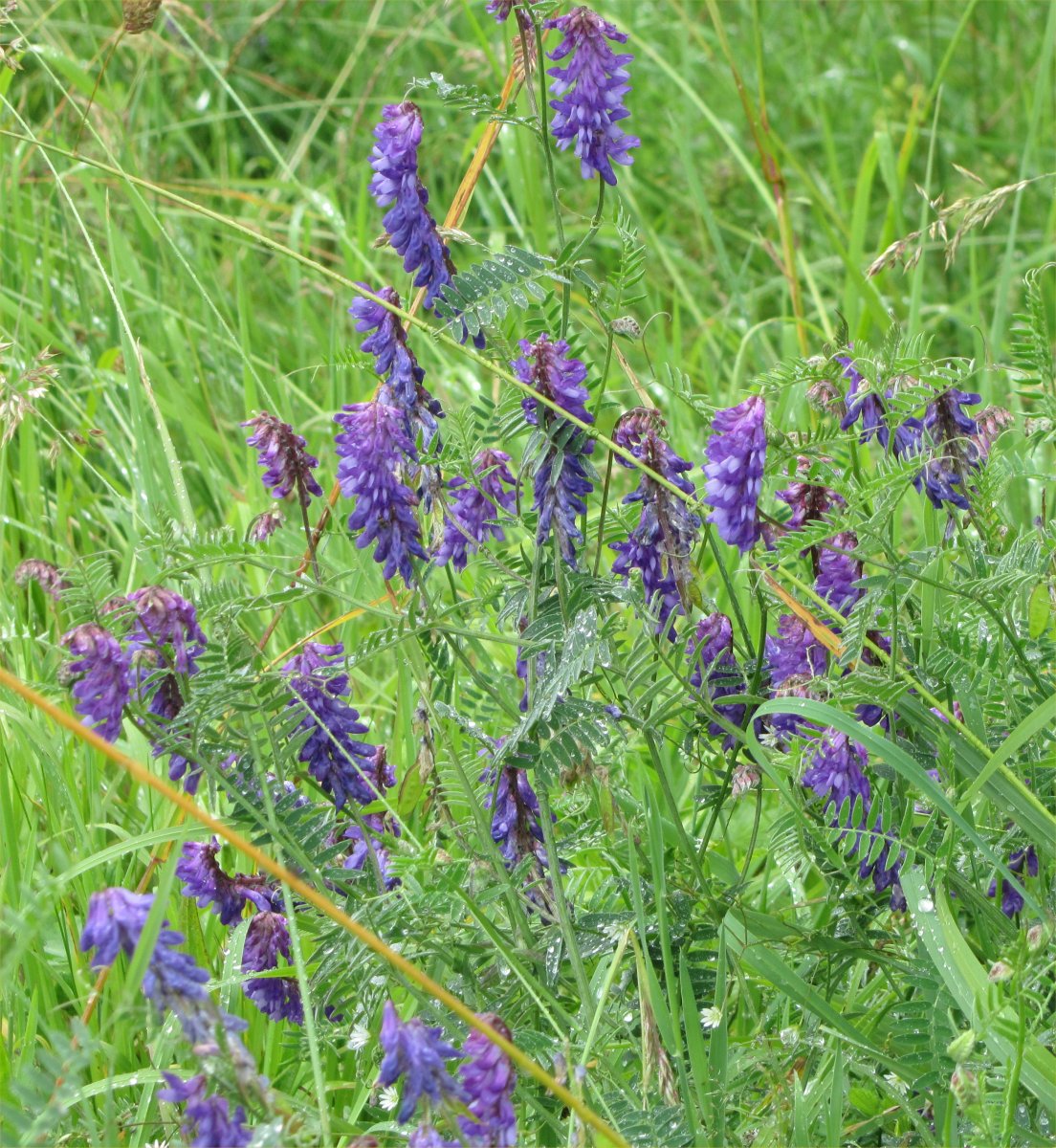
|
| A familiar plant decorating roadsides, meadows and river banks, as at Allenbanks, West Northumberland in July 2009 |
Back to index
| DYER'S GREENWEED Genista tinctoria | |
 |
| An important foodplant for rare insects, especially moths, these were at Druridge, Northumberland coast in June 2016. As the name suggests, they are a traditional source of fabric dye, though yellow rather than the green its name would suggest. |
back to index
| BROOM Cytisus scoparius | |
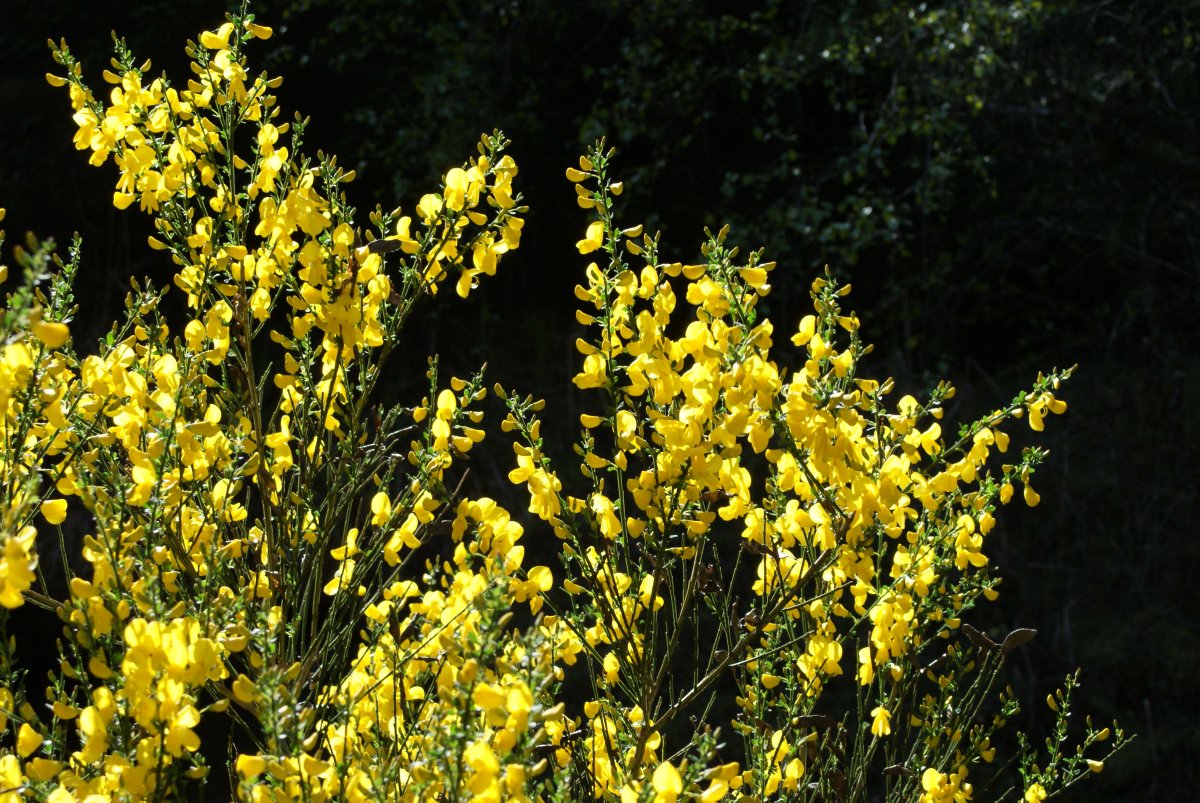 |
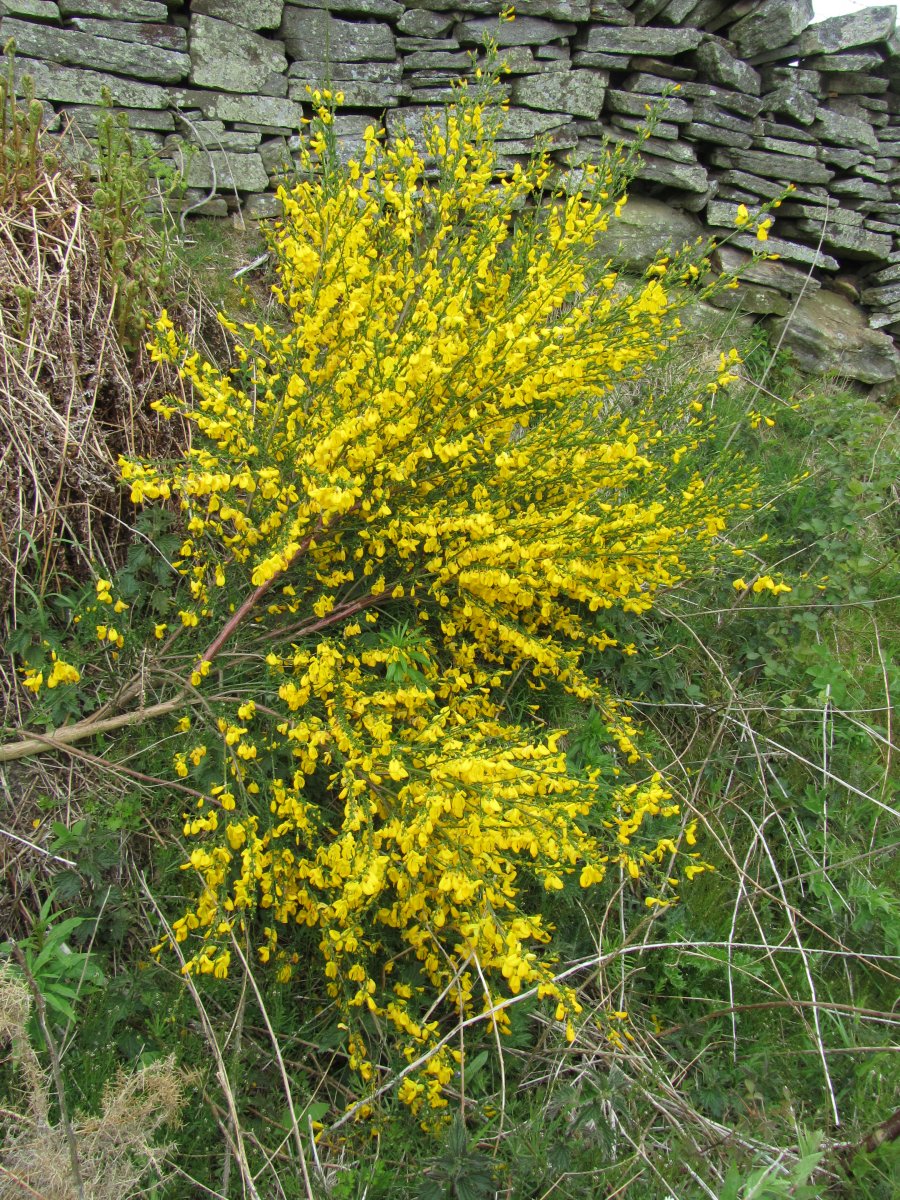
|
| Common and often spectacular in sandy areas, as in Ardnamurchan in May 2009 and Blanchland, West Northumberland in May 2015. |
Back to index
| (COMMON)GORSE Ulex europaeus | |
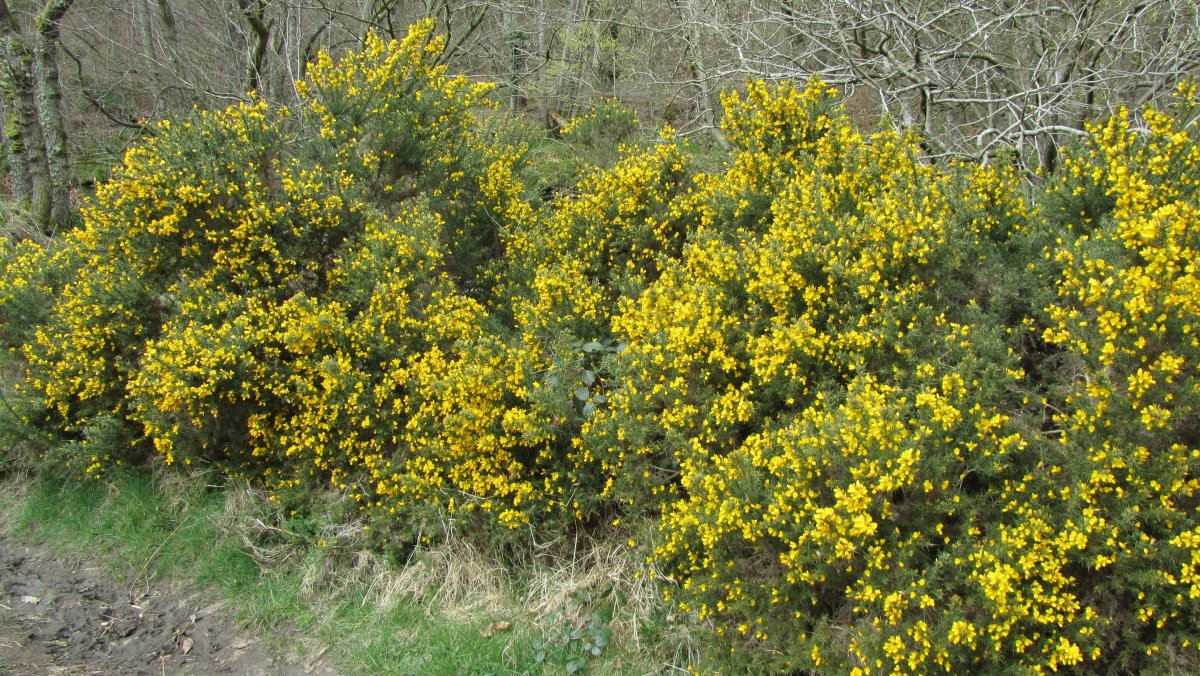 |
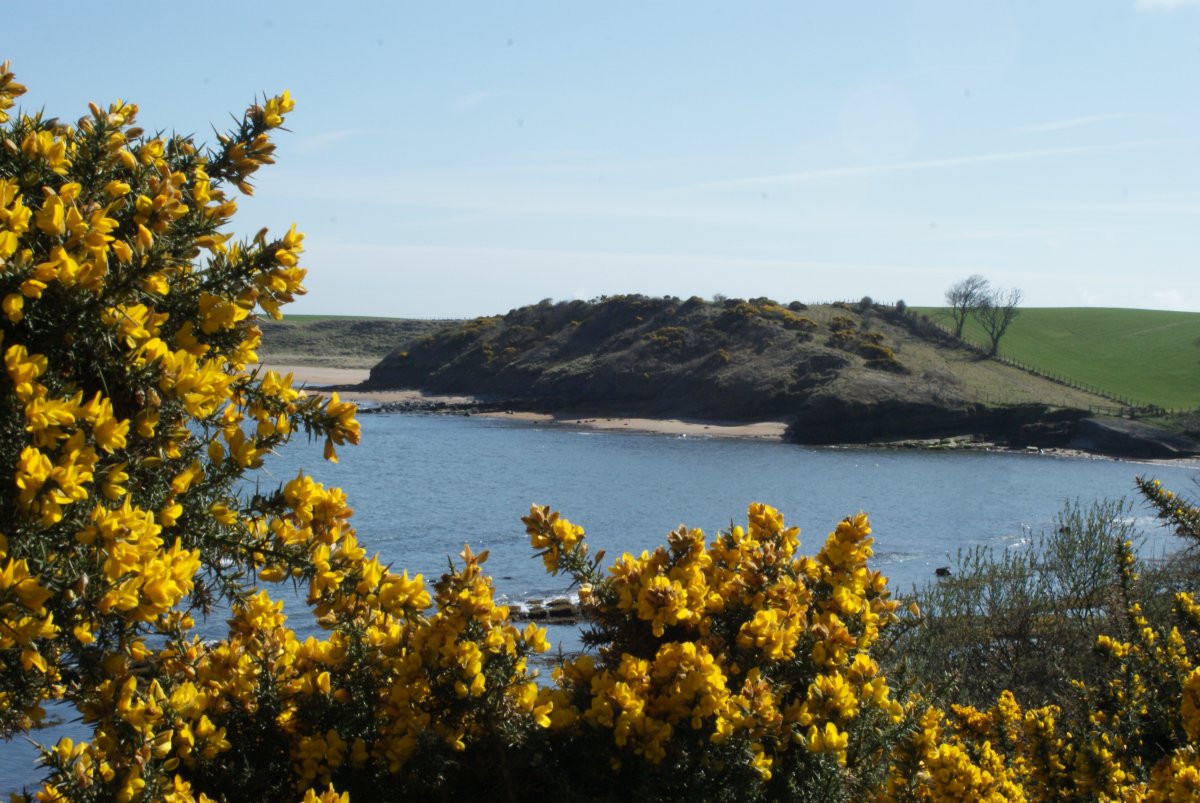
| 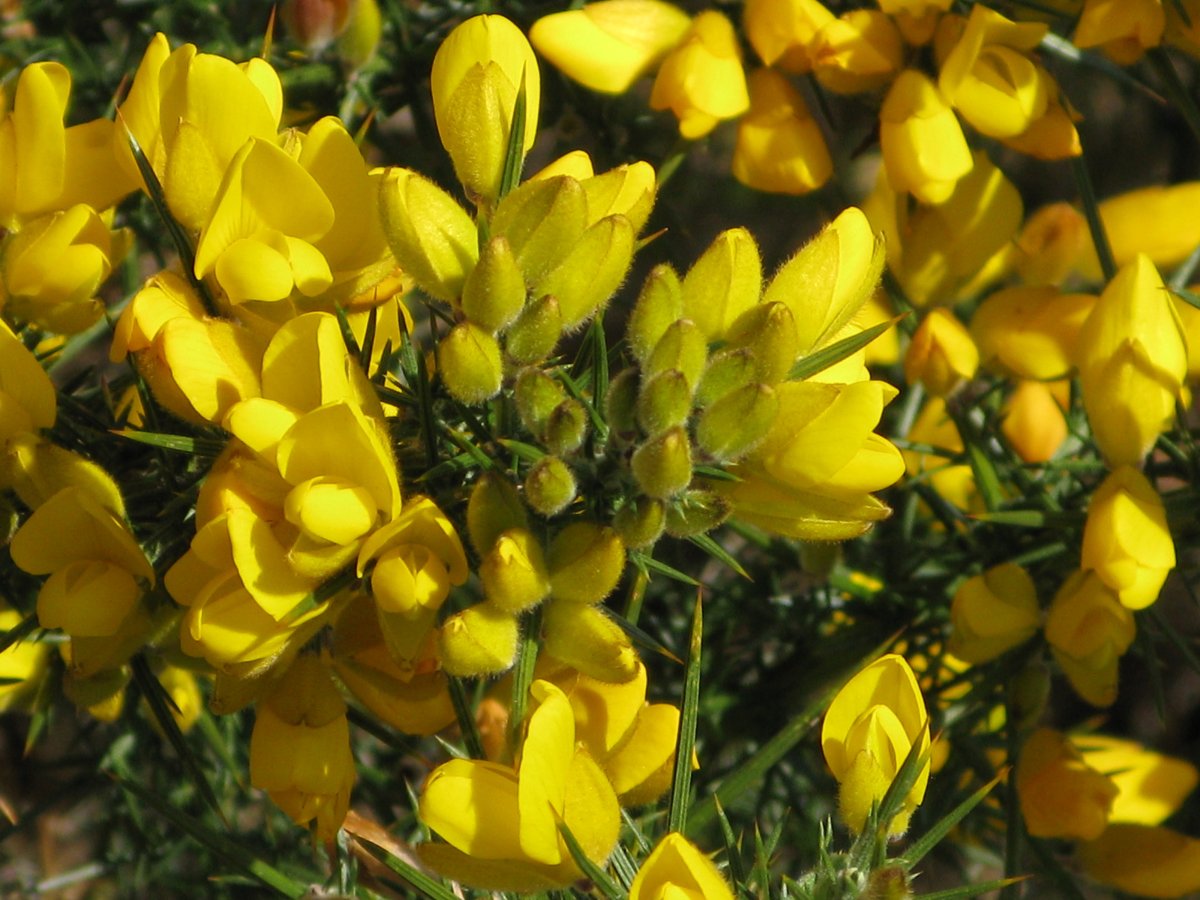
|
| Like Broom, a source of beautiful displays often covering whole hillsides. These were at Allenbanks, West Northumberland in April 2017, Howick in April 2015 and Allenbanks again in April 2009 |
Back to index
| DWARF GORSE Ulex minor | |
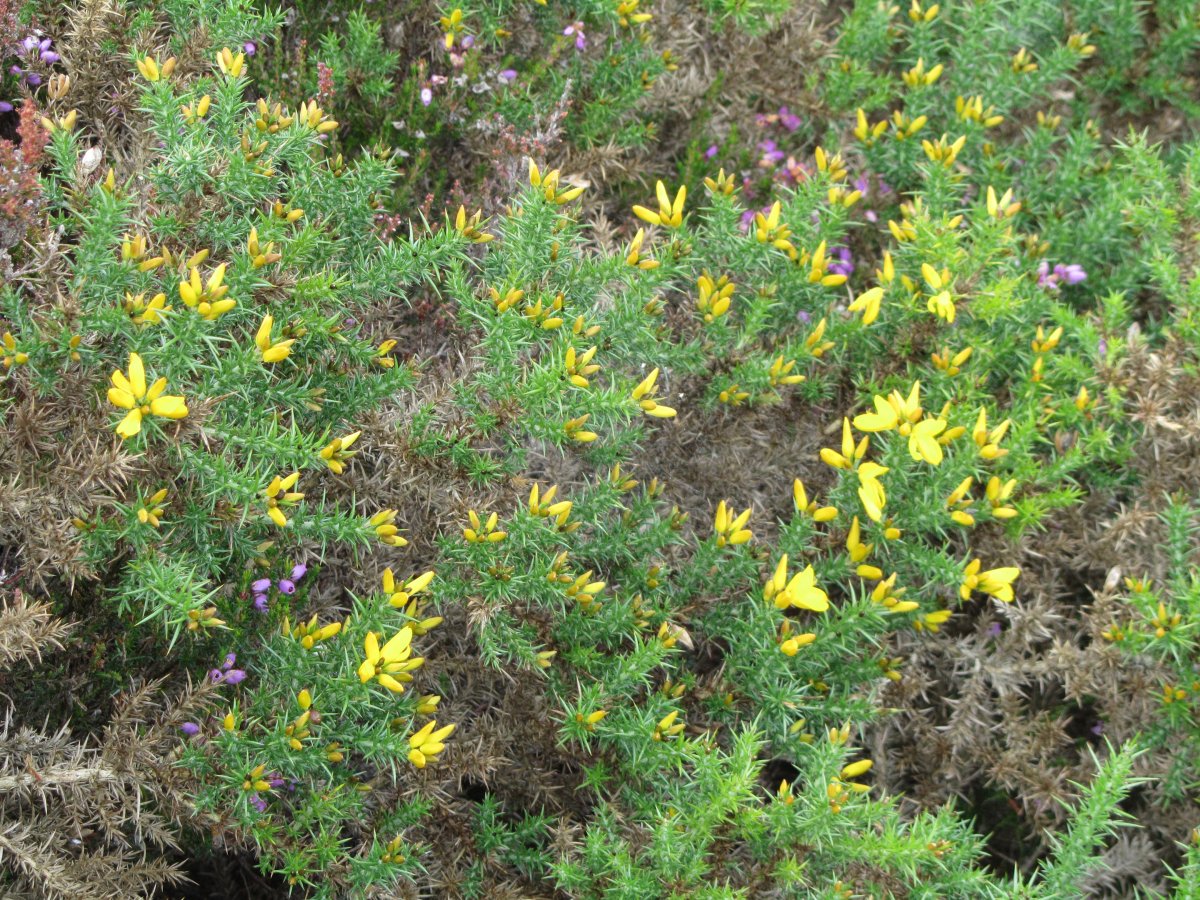 |

|
| Less common than the usual Gorse, and more restricted in its localities, this shrub was on Eyam Moor, Derbyshire in July 2011. |
Back to index
| Willowherb family - Onagraceae |
| GREAT (sometimes GREATER) WILLOWHERB Epilobium hirsutum | |
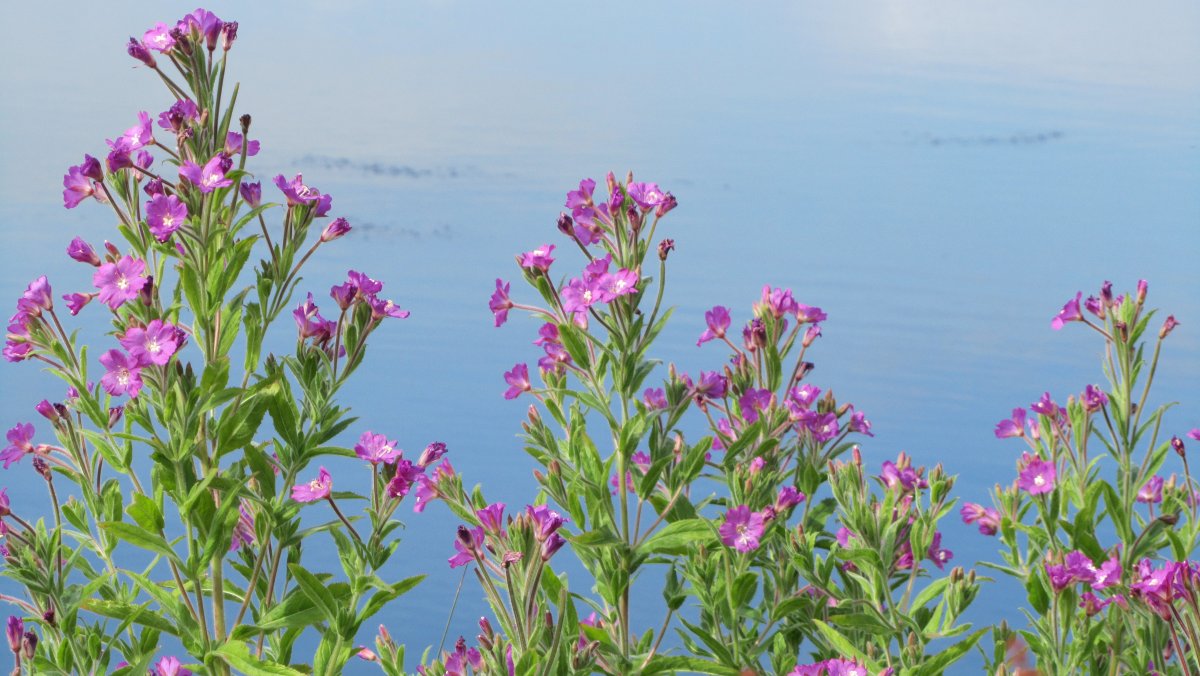 |
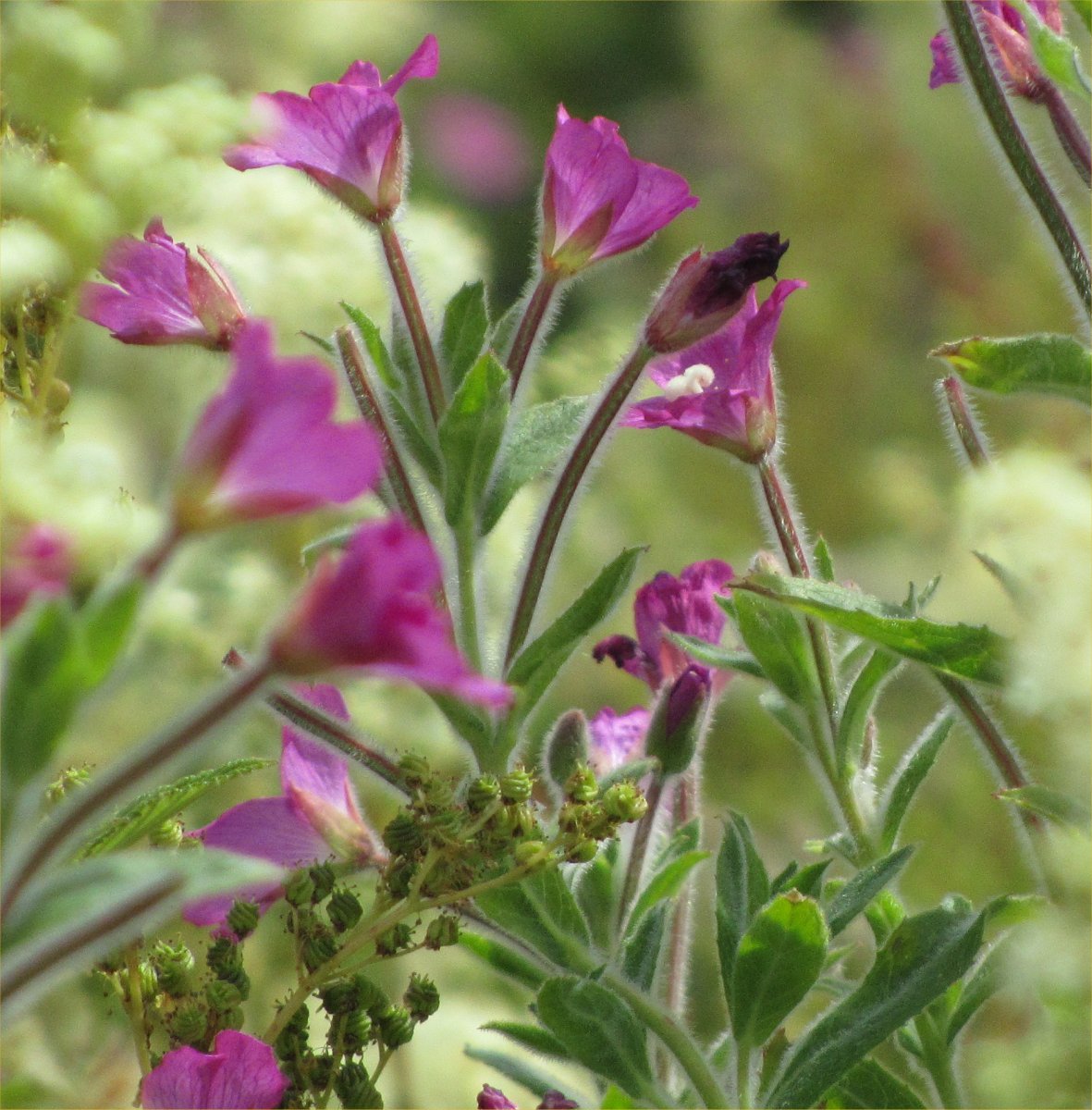
| 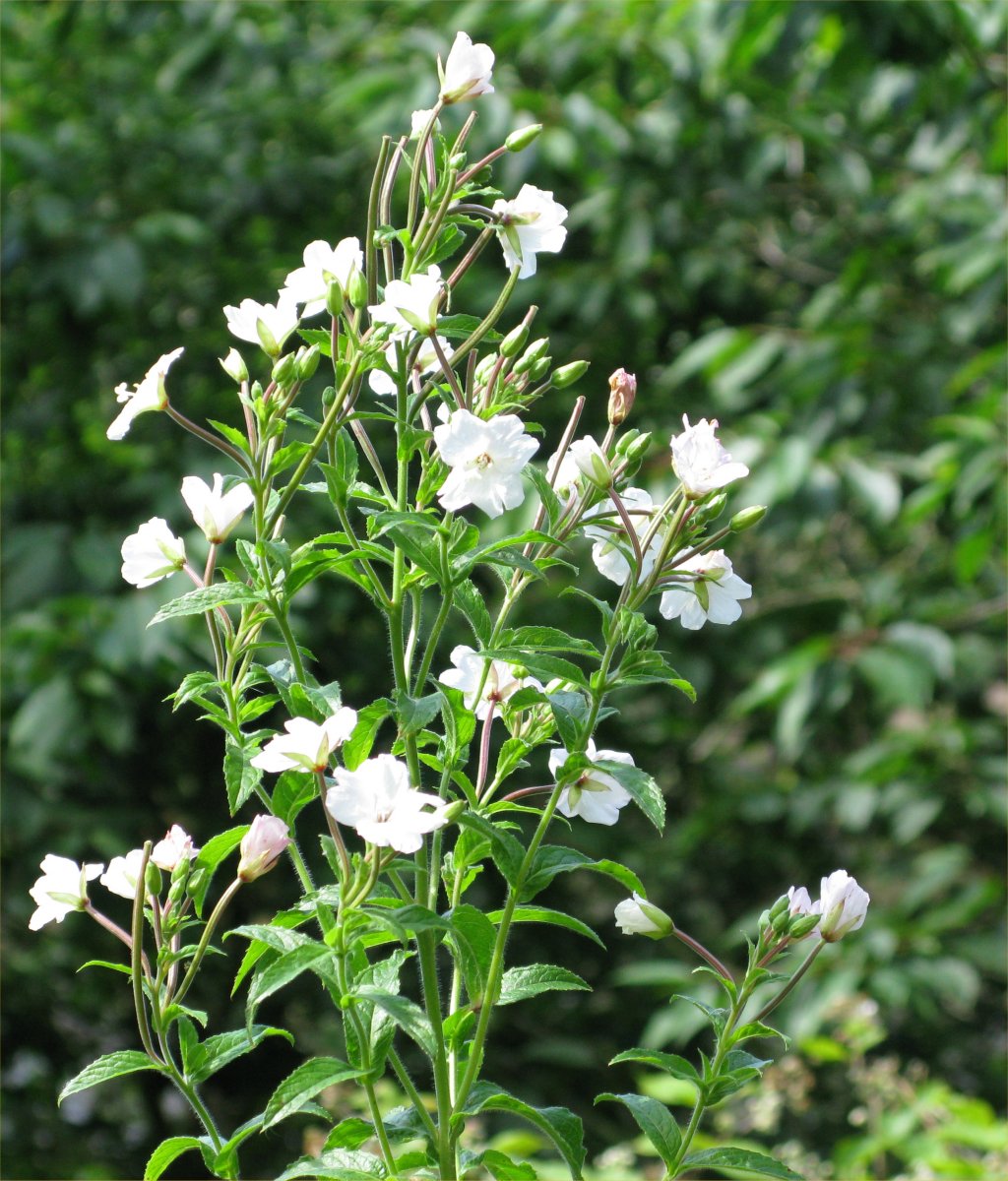
|
| A relatively common plant, but spectacular en masse and reaching nearly 2 metres in height. These were at Druridge, Northumberland coast in July 2014, Howick in August 2015 and the pale one at Warkworth, near the Northumberland coast in July 2009. |
Back to index
| ROSEBAY WILLOWHERB Chamerion angustifolium | |
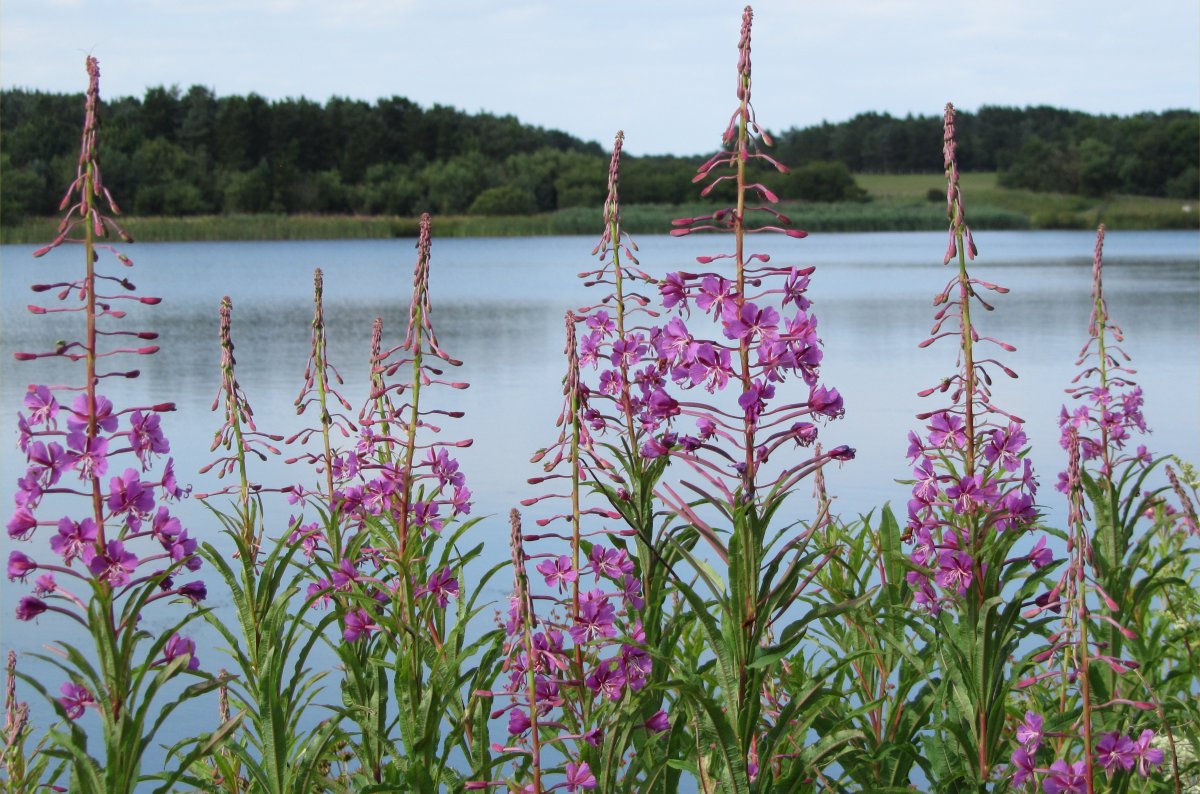 |
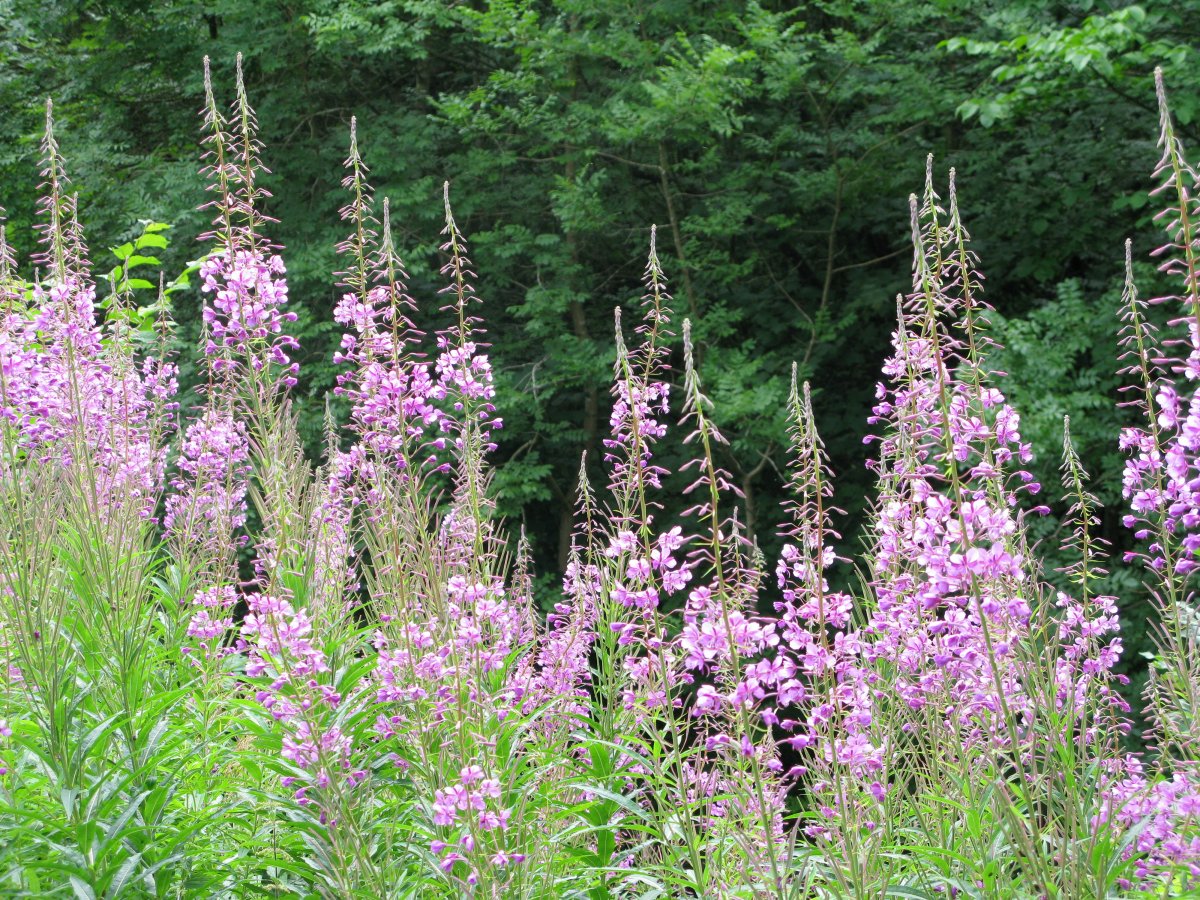
| 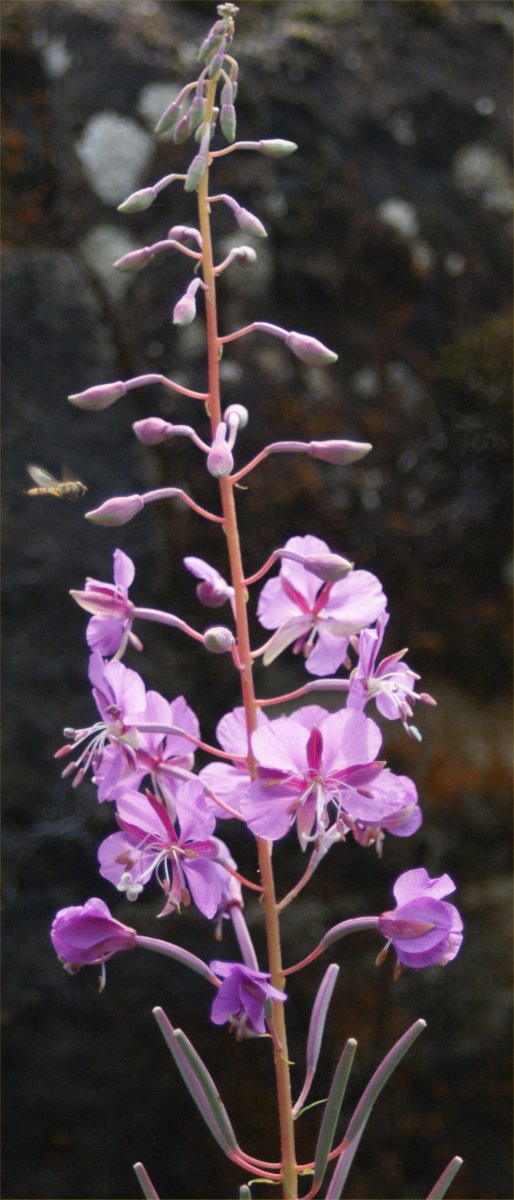
|
| The most common willowherb, with an ability to colonise newly bare ground, hence its nickname 'Fireweed'. These were at Druridge, Northumberland coast in July 2014, Teesdale in August 2008 and Warden, near Hexham in August 2009. |
Back to index
| ENCHANTER'S NIGHTSHADE Circaea lutetiana | |
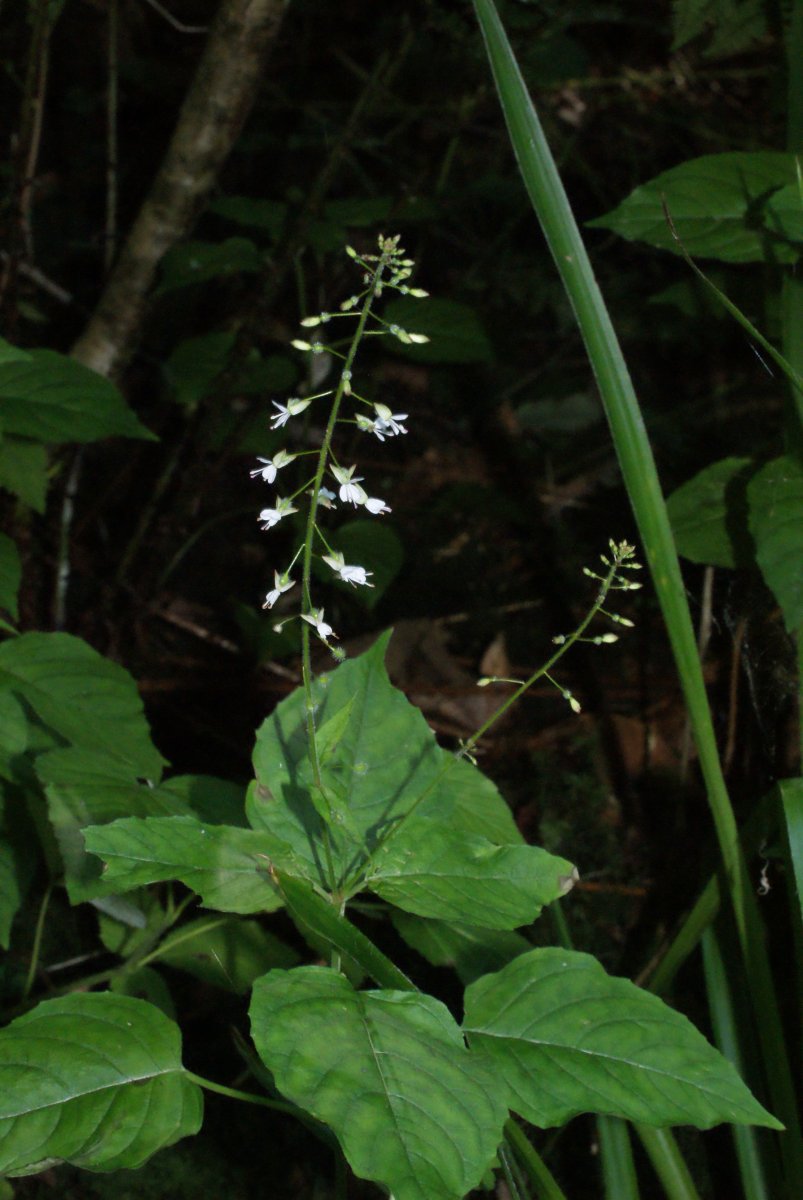 |
| A diminutive but attractive little plant, commonly seen by woodland edges and paths. It seems not to have any significant medicinal (or even hallucinogenic) uses, other than possibly for dressing wounds, so its name is something of a mystery. These were at Wallington in July 2017. |
back to index
| Spurge family - Euphorbiaceae |
| CYPRESS SPURGE Euphorbia cyparissias | |
 |
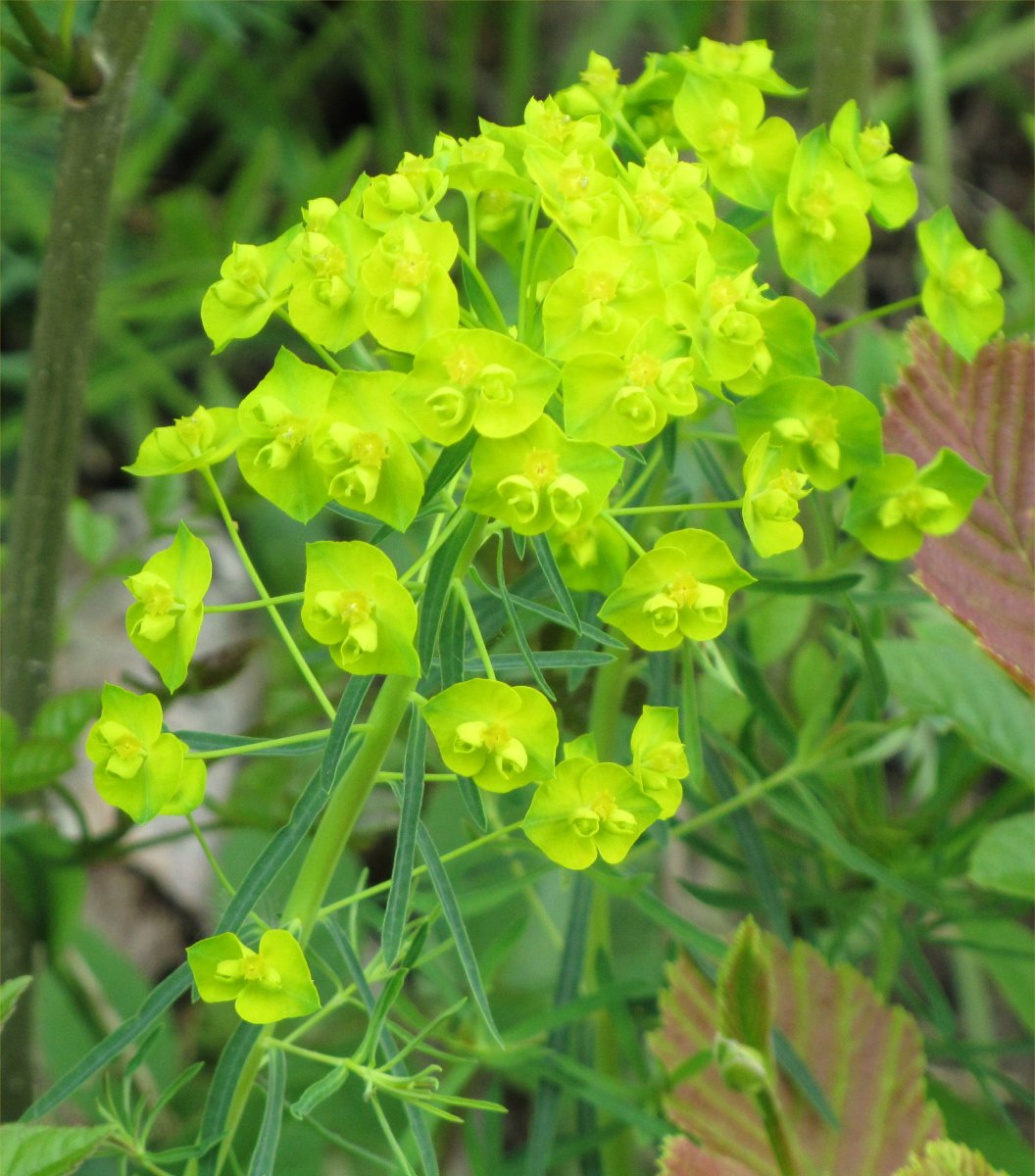
|
| Usually a garden escape, this was at Tyne Green, Hexham in May 2016 |
Back to index
| Wood-sorrel family - Oxalidaceae |
| WOOD-SORREL Oxalis acetosella | |
 |

| 
|
| A very common but attractive late Spring woodland plant, these were at Allenbanks, West Northumberland, in April 2009 (1st two), and May 2013 (a more unusual mauve variety) |
Back to index
| Cranesbill family - Geraniaceae |
| MEADOW CRANESBILL Geranium pratense | |
 |
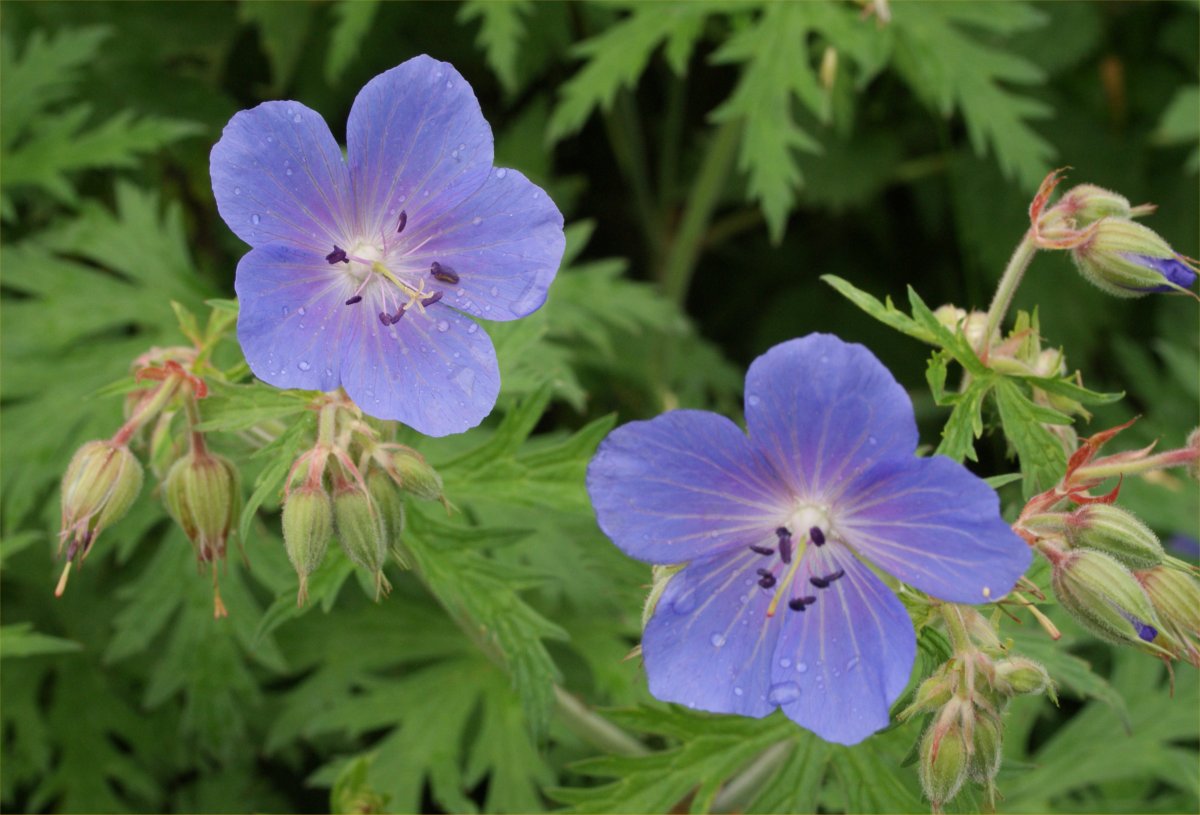
|
| A very common but lovely plant of hedgerows and fields, we didn't need to go far from home to see these in Hexham, in July 2009 and July 2012. |
Back to index
| WOOD CRANESBILL Geranium sylvaticum | |
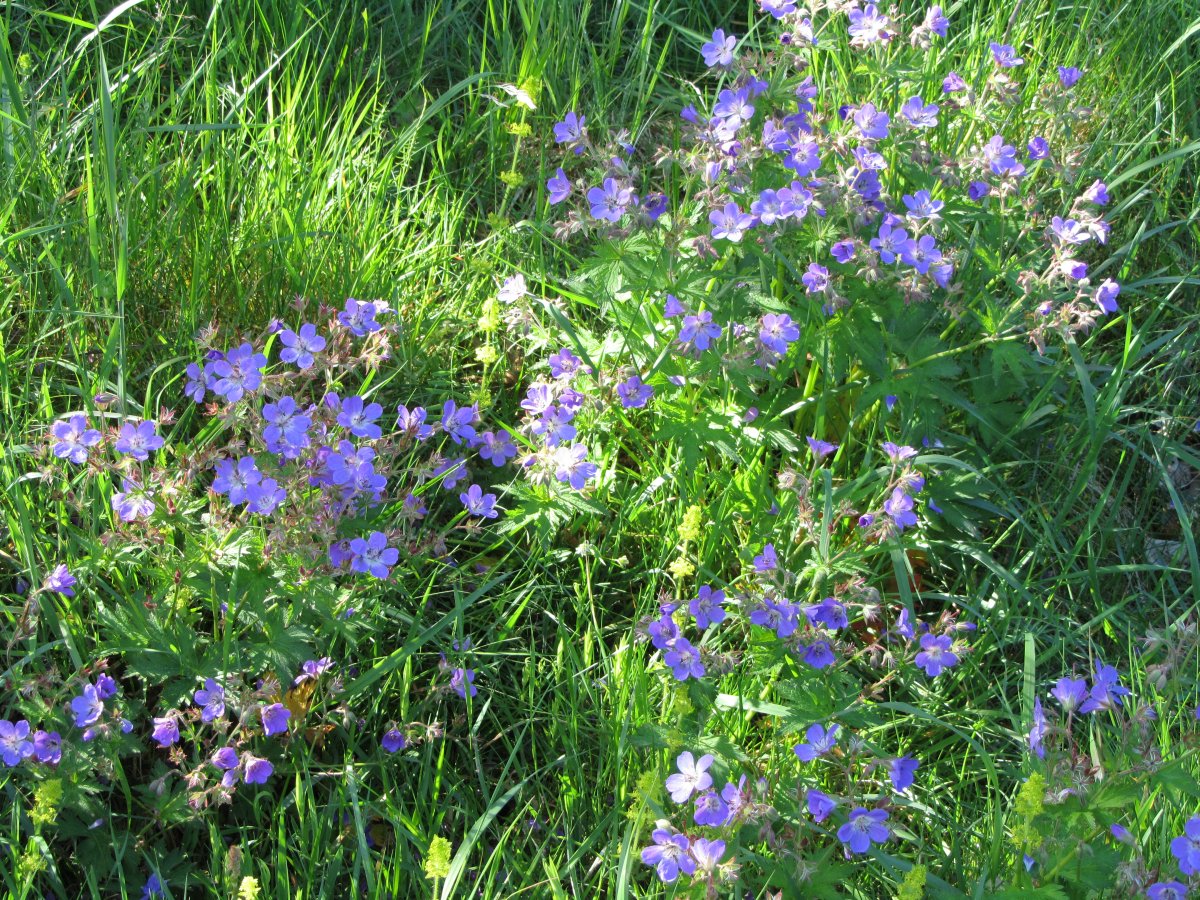 |
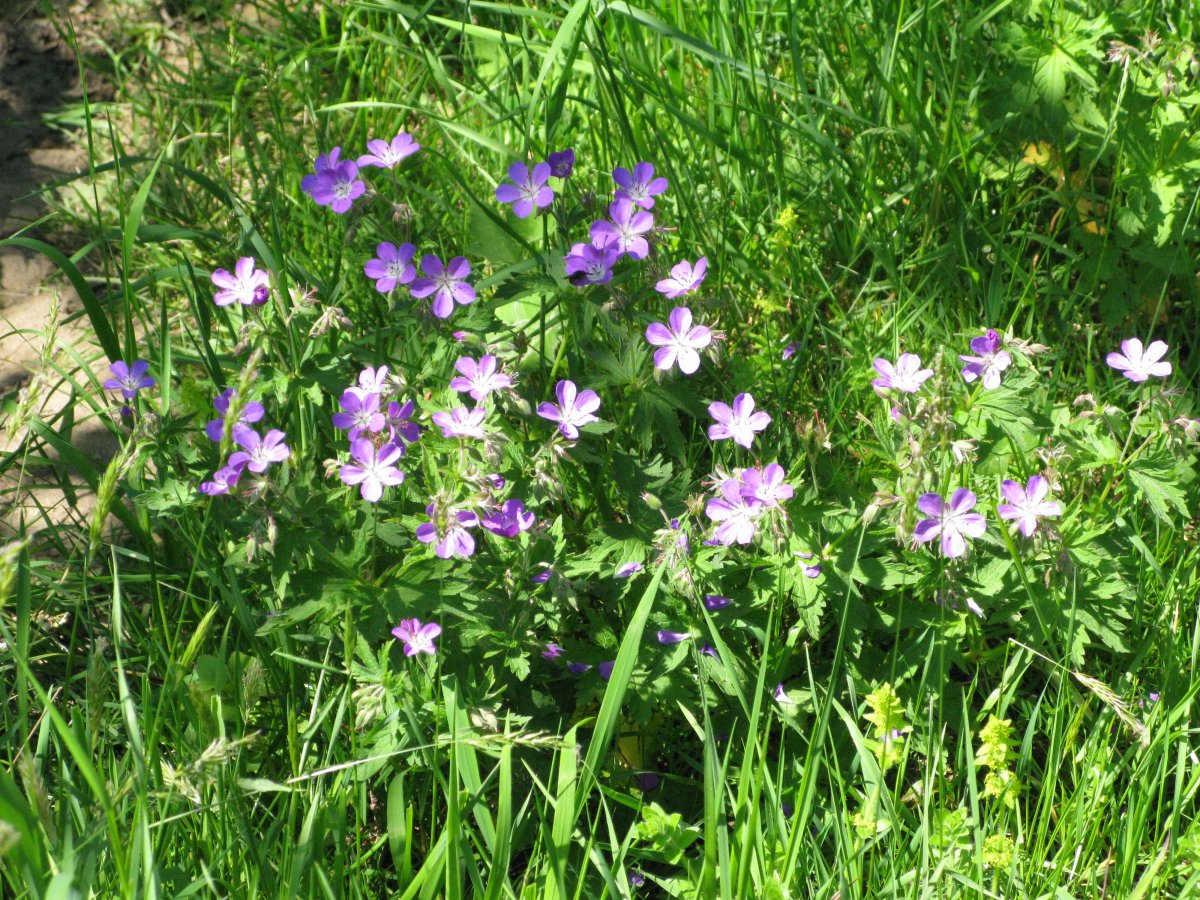
| 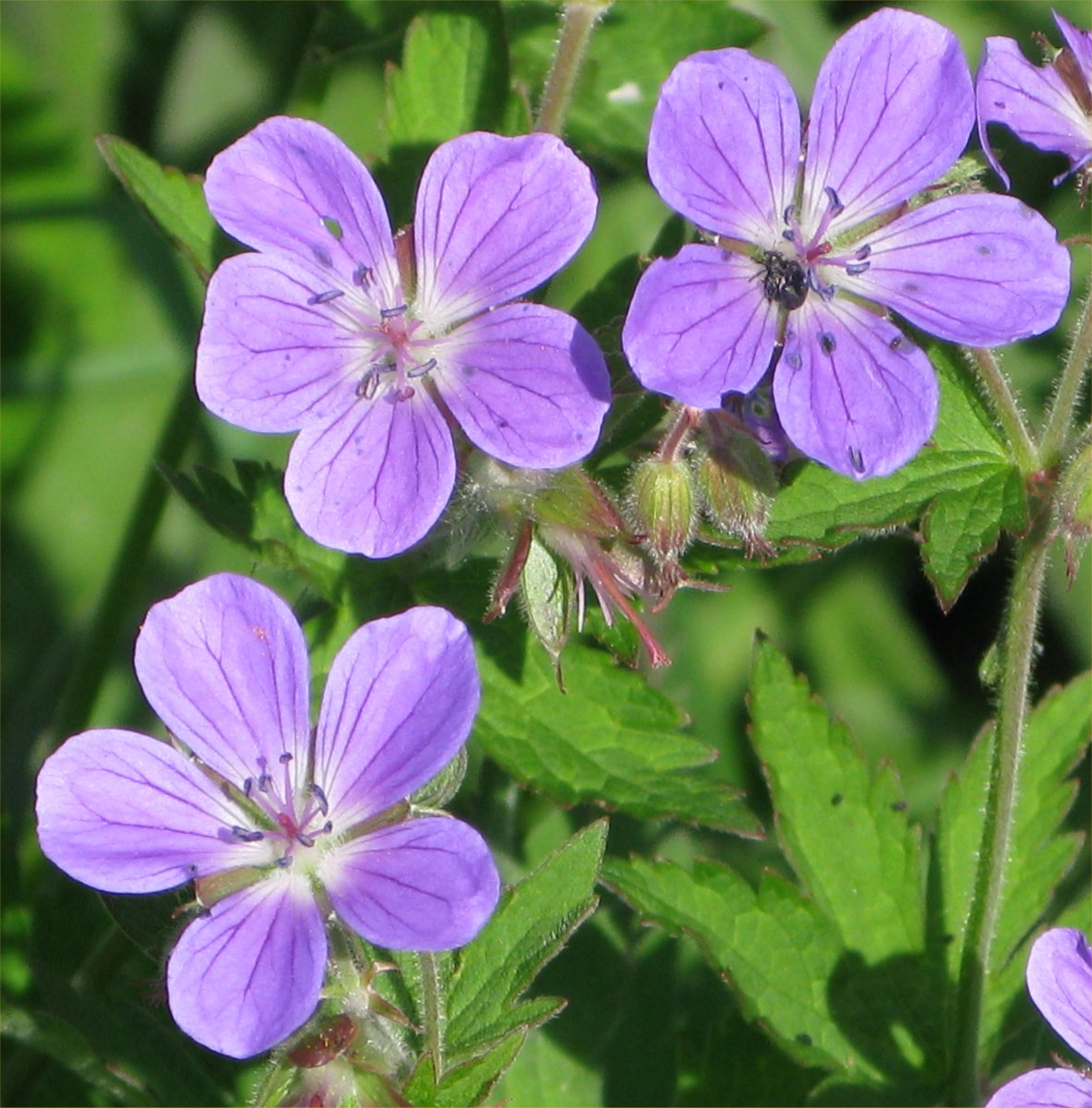
|
| A bit less common than the Meadow species, and identified by the more strongly veined and separated petals, these were at Allenbanks, West Northumberland in June 2009 and May 2011 and Teesdale in June 2010. |
Back to index
| BLOODY CRANESBILL Geranium sanguineum | |
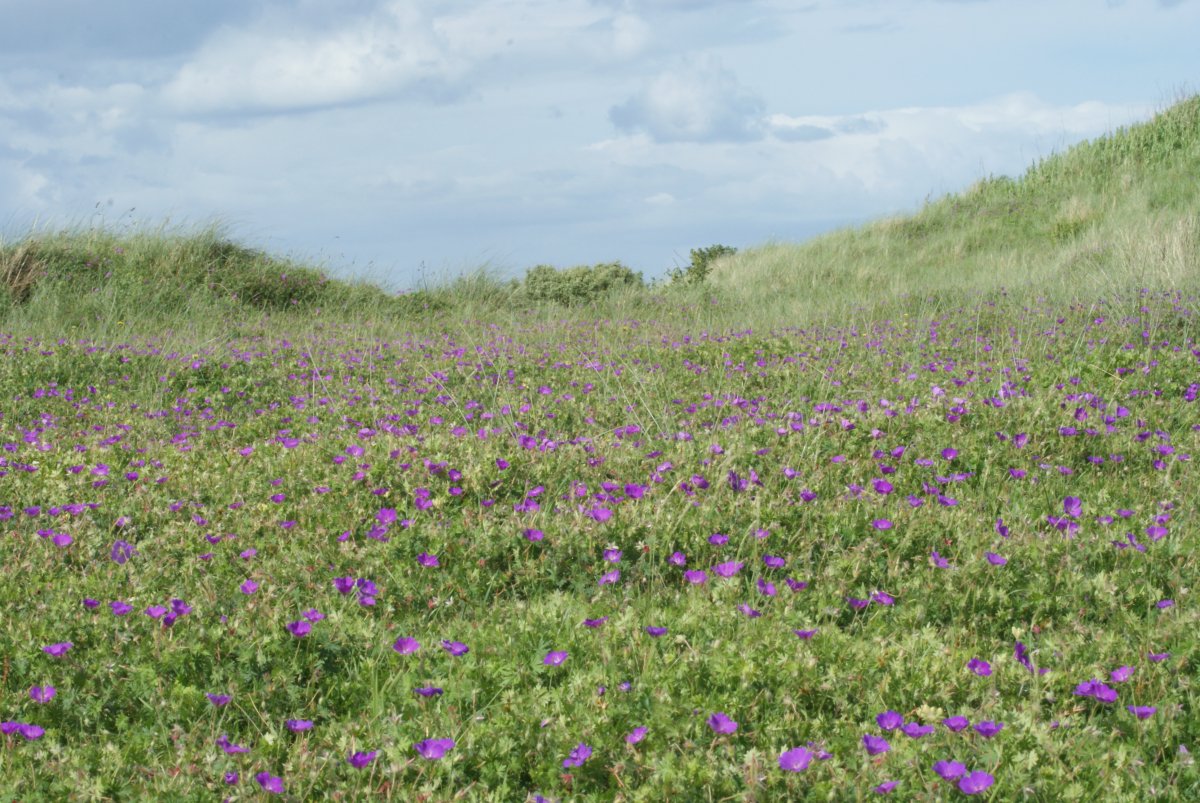 |
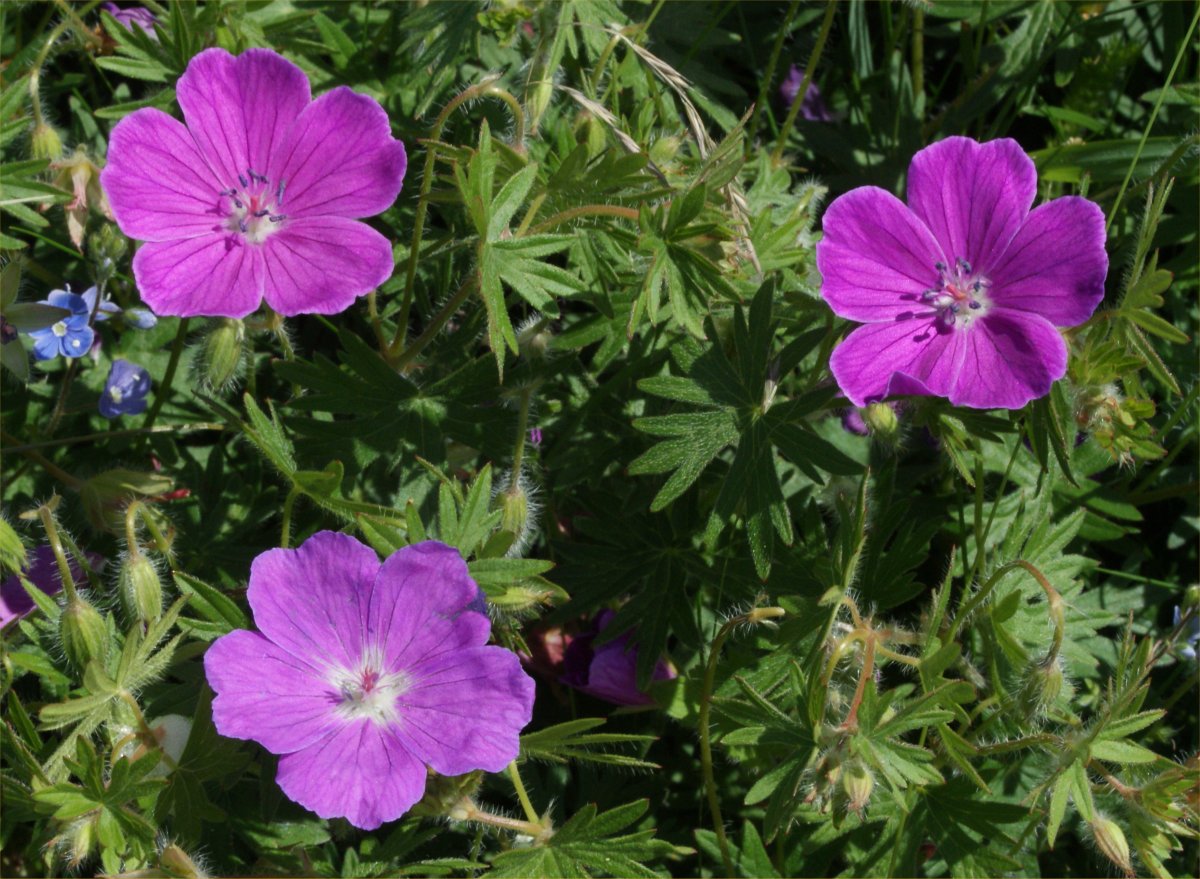
| 
|
| The 'County Flower' of Northumberland, seen in masses at Druridge Northumberland coast in June 2017, June 2016 and June 2017. |
Back to index
| STORKSBILL Erodium Spp | |
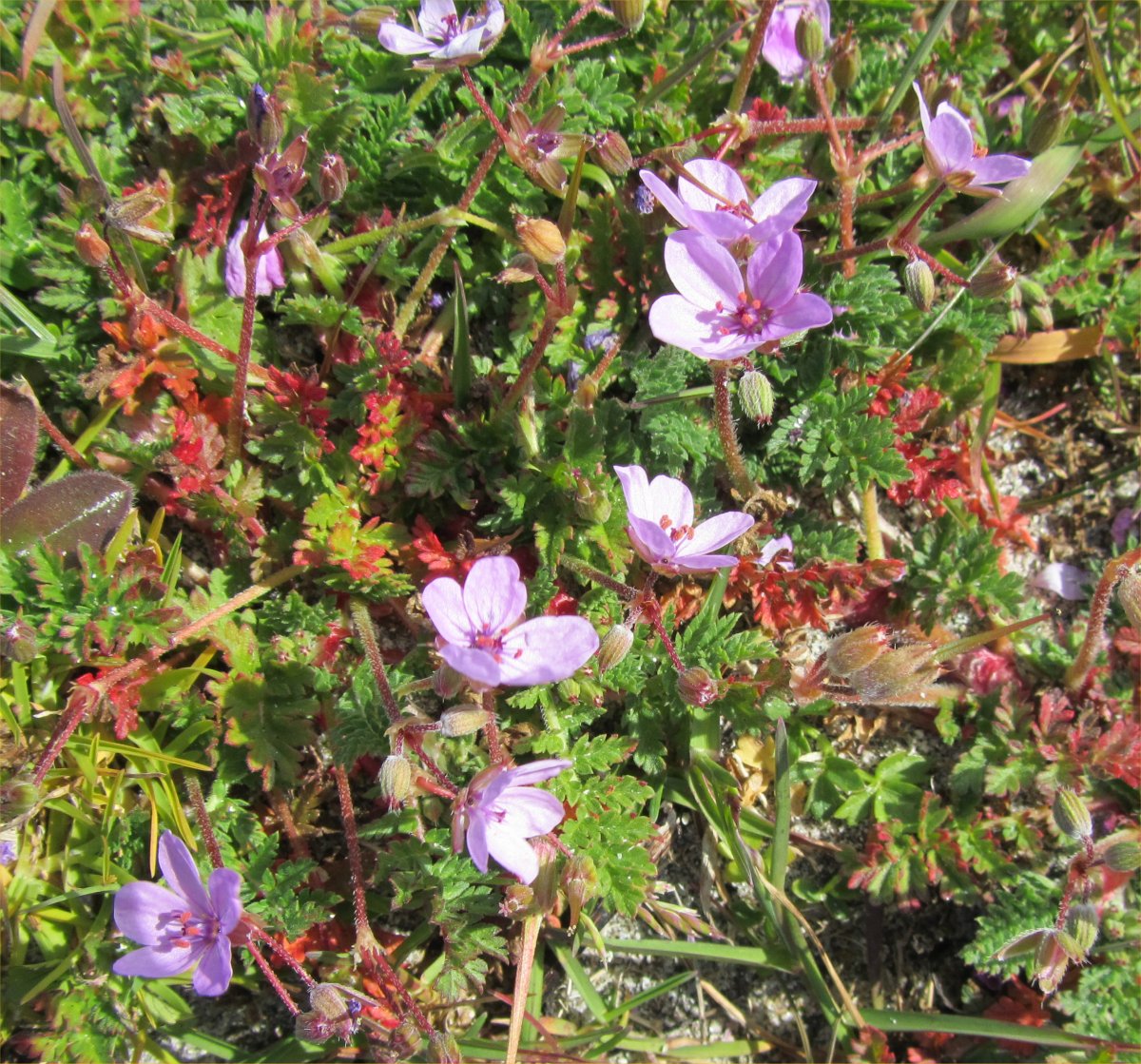 |
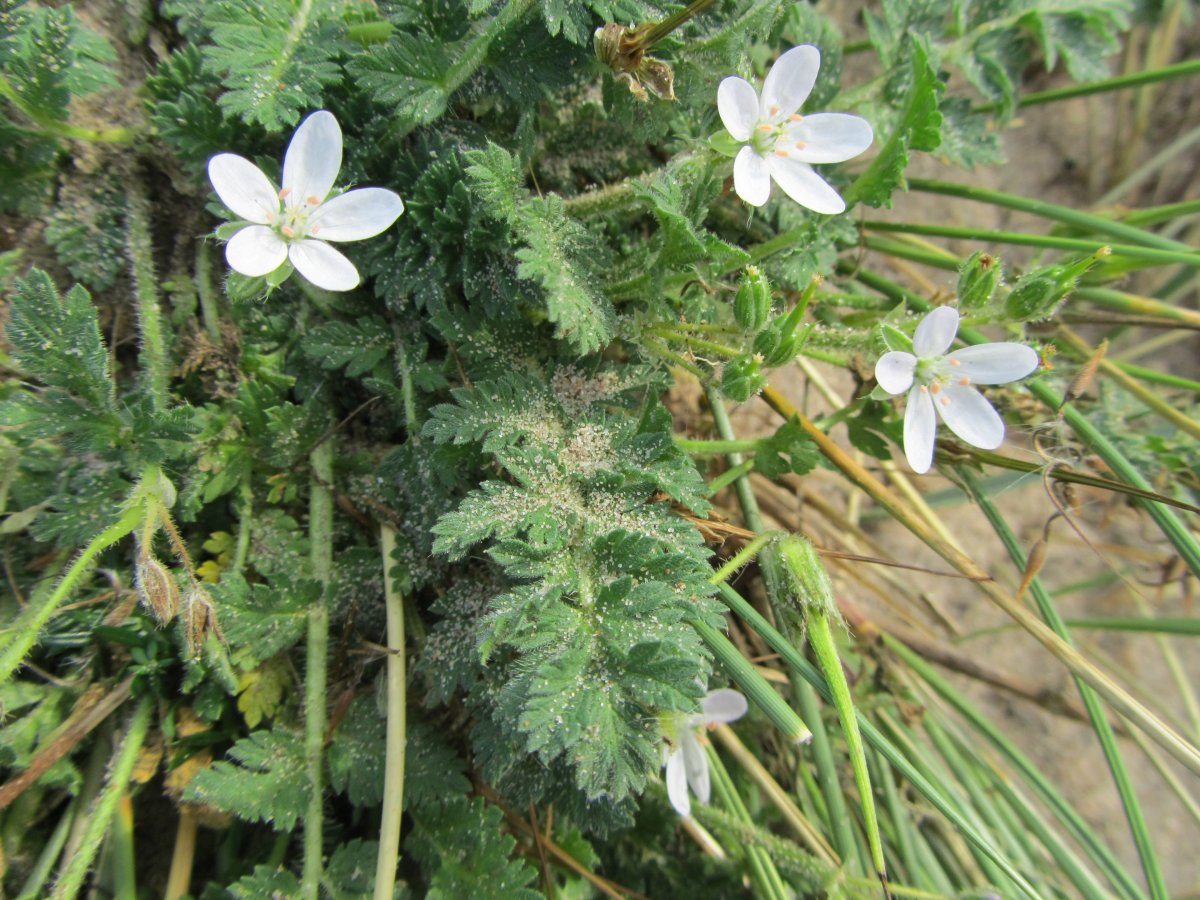
| 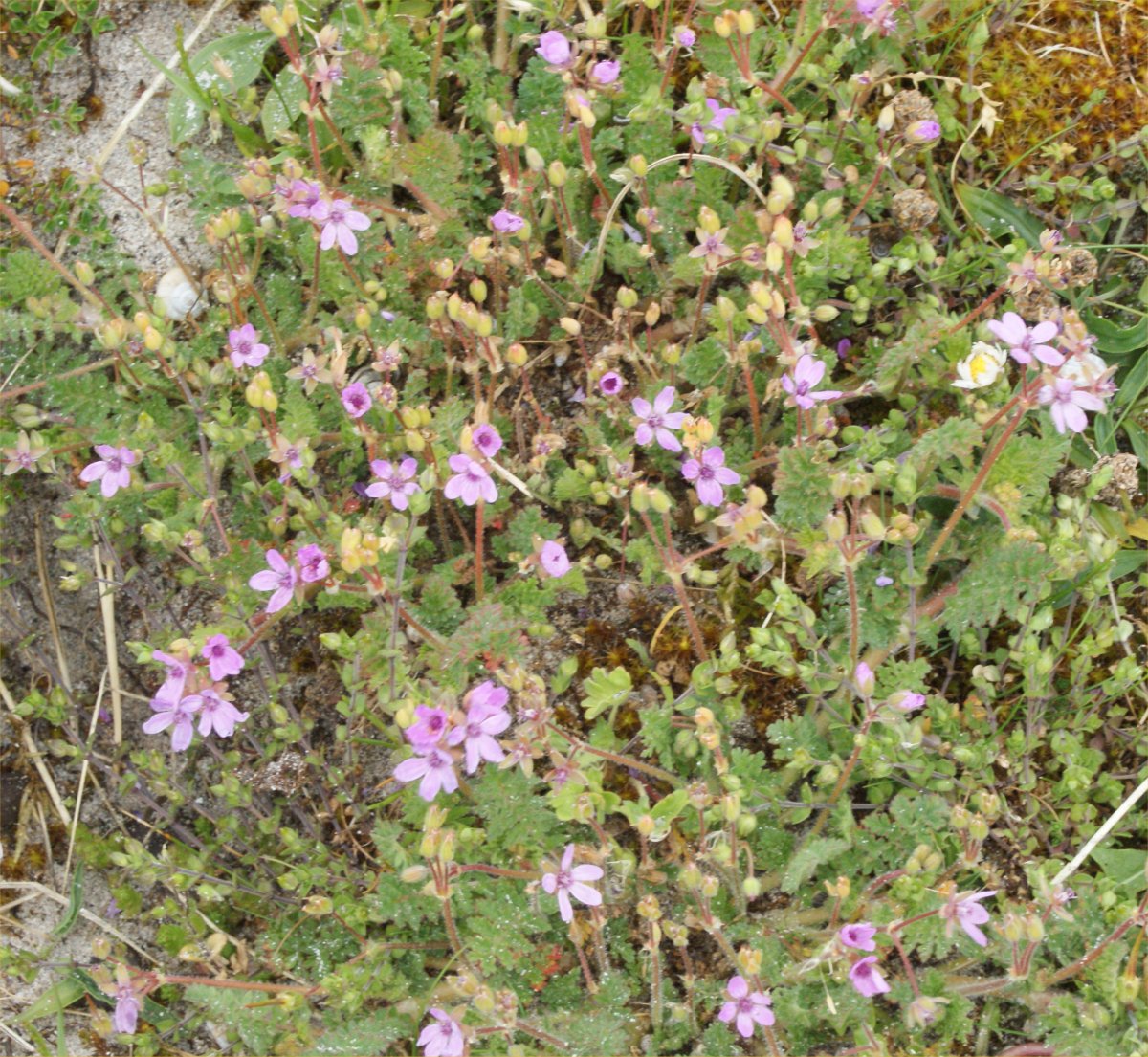
|
| Common in dunes and grassland near the sea. We didn't check to see whether there were sand grains sticking to the stems, which would have identified some of them as Sticky Storksbill E. lebelii. These were at North Uist, Outer Hebrides in May 2012, Druridge Northumberland coast in September 2011, and the South coast of Mull facing Erraid, in May 2017 |
Back to index
| Carrot family - Apiaceae (formerly Umbelliferae) |
| HOGWEED Heracleum sphondyleum | |
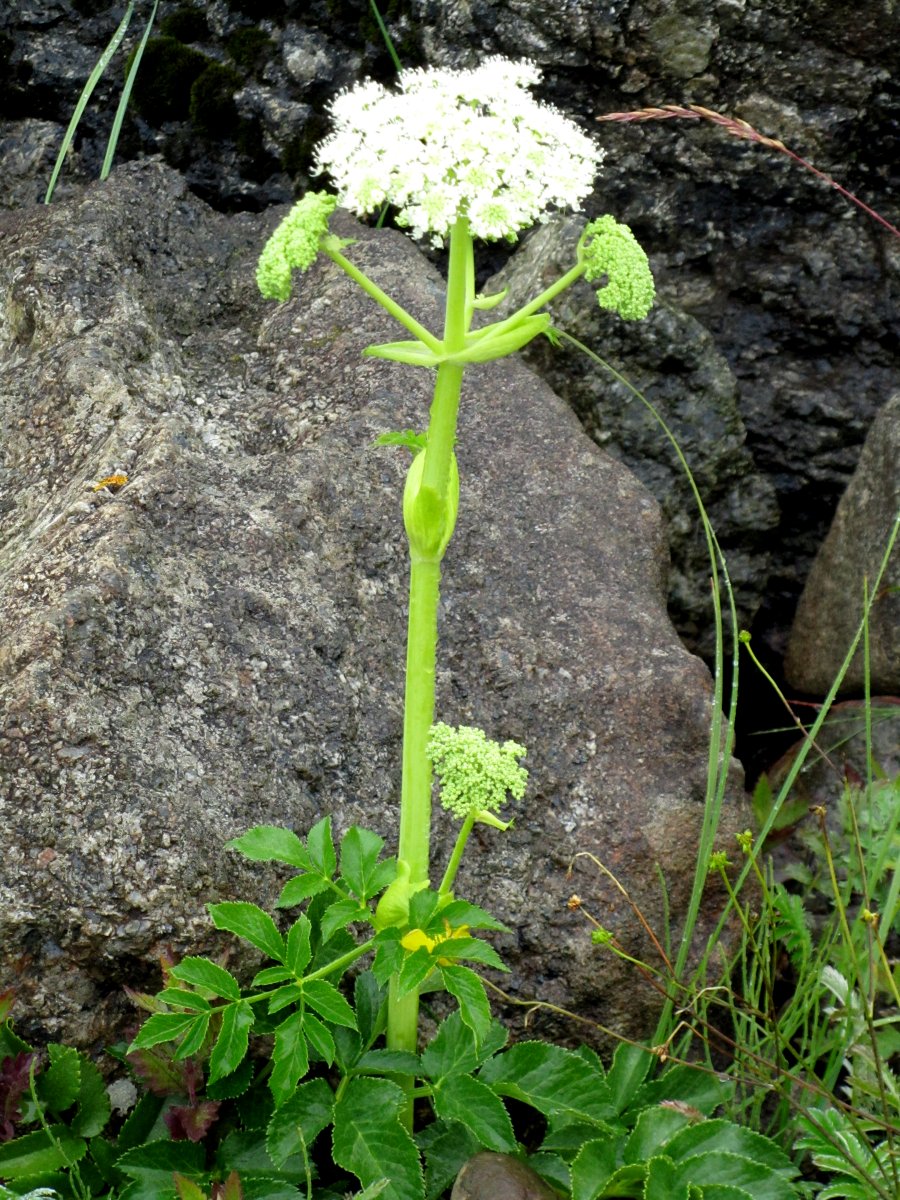 |
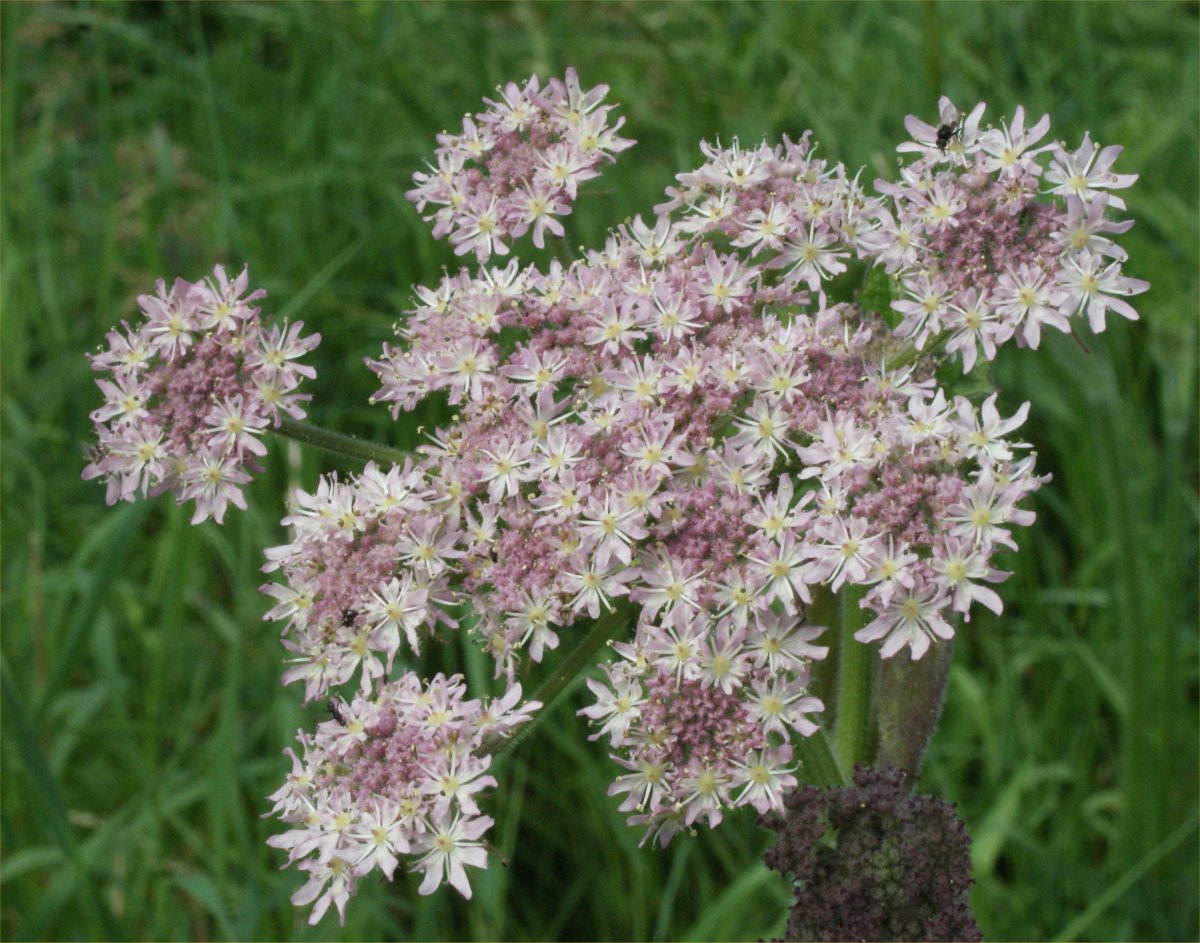
| 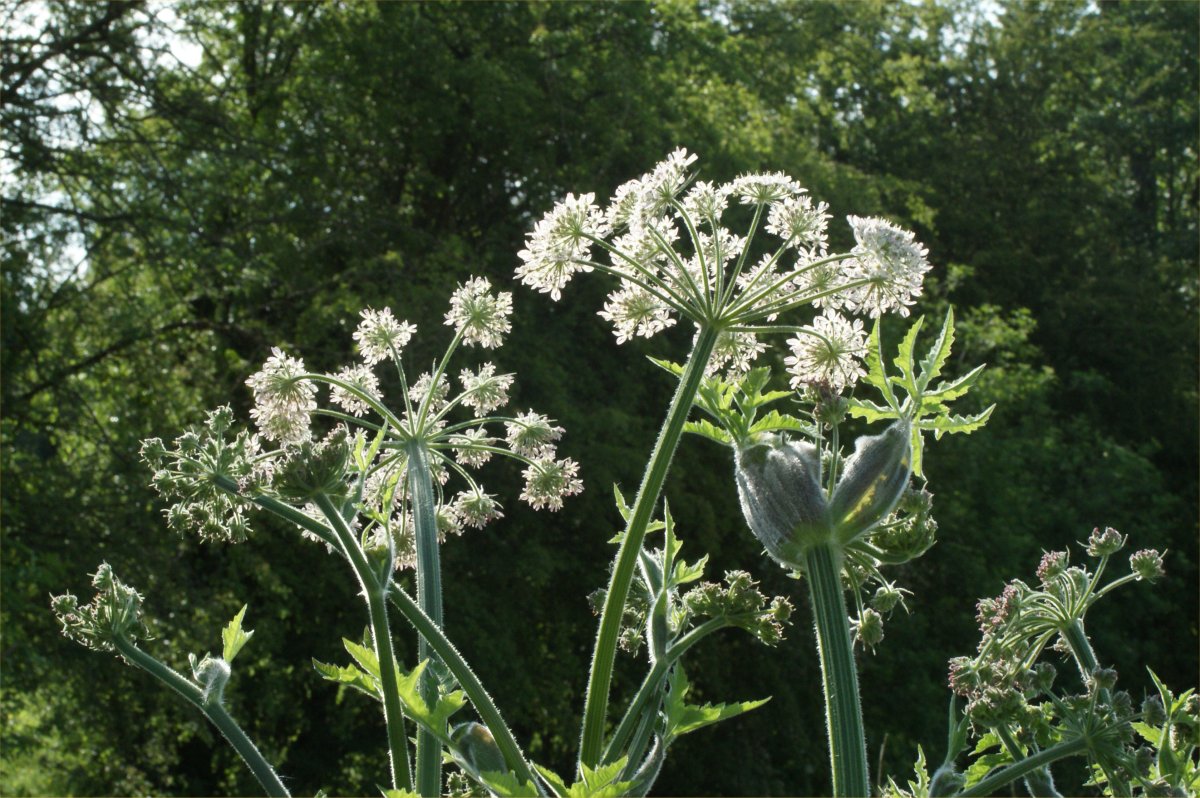
|
| Striking rather than beautiful, and best identified in flower by the large lobes at the edge of the umbels, these were seen in Portuairk, Ardnamurchan", in July 2016, Allenbanks, West Northumberland, in June 2014 and in Cromford, Derbyshire, by the canal in June 2014. |
Back to index
| GIANT HOGWEED Heracleum mantegazzianum | |
 |
| A huge plant, fortunately quite rare as highly poisonous, both to touch and to eat; this specimen was seen by the river in Durham in September 2013. |
back to index
| COW PARSLEY Anthriscus sylvestris | |
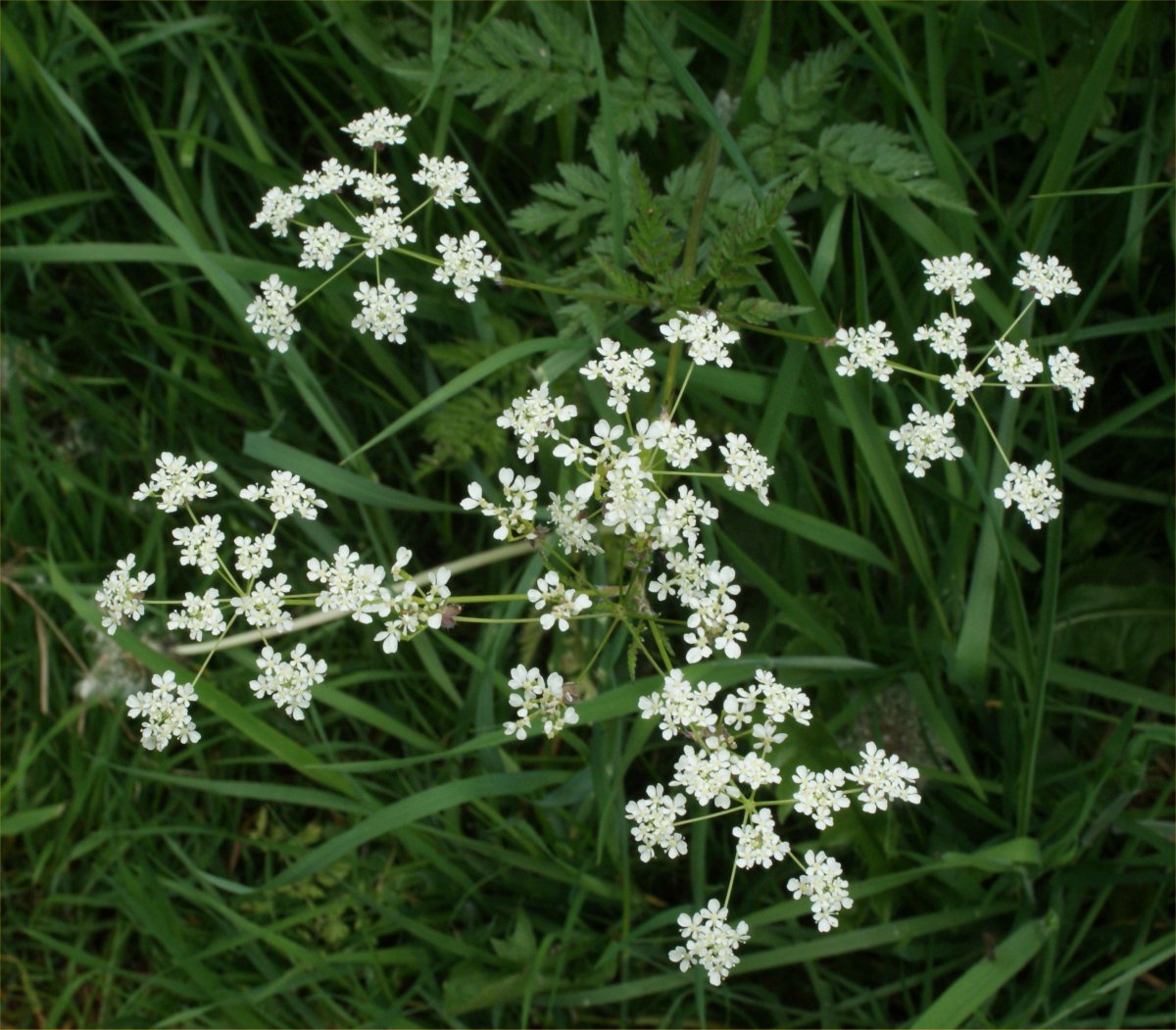 |
| A familiar plant of early summer, this was at Hexham in June 2013. |
back to index
| SWEET CICELY Myrrhis odorata | |
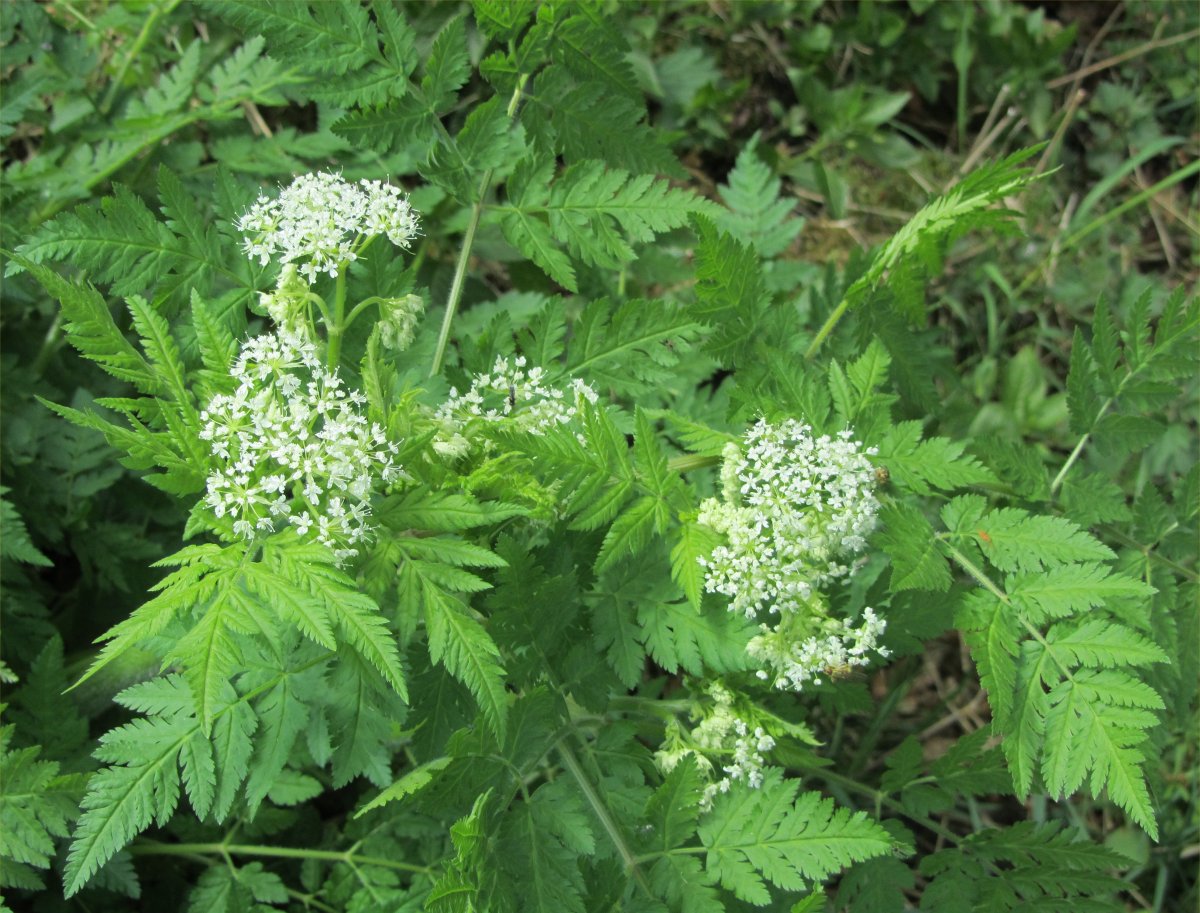 |
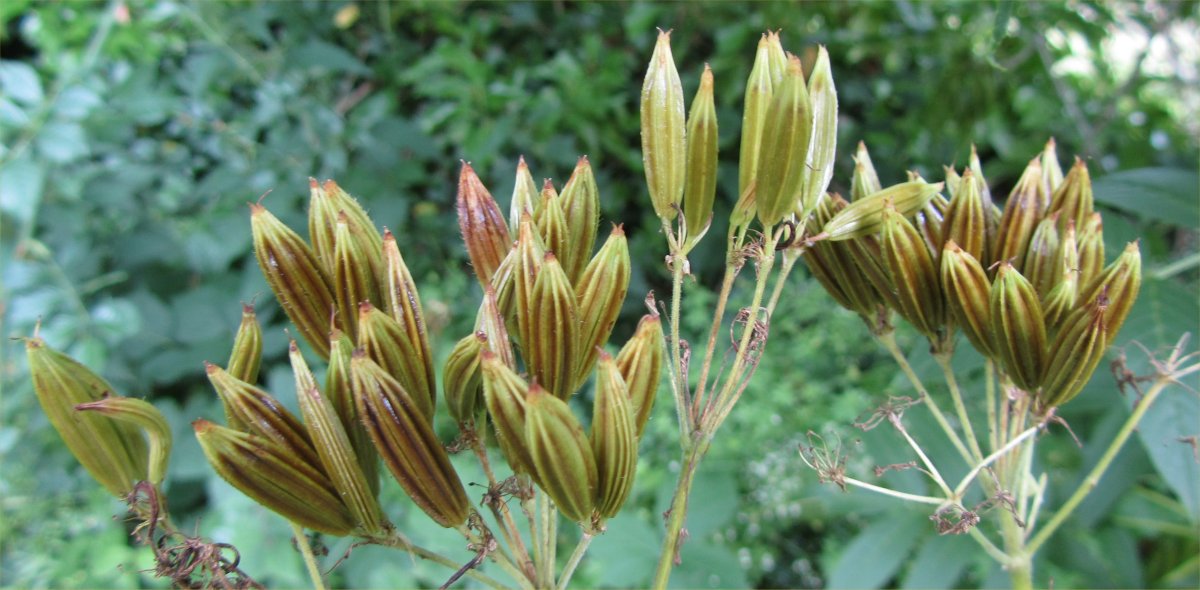
|
| The scented flowers were at Allenbanks, West Northumberland, in May 2013, the beautiful seeds at Tyne Green, Hexham in July 2015. |
Back to index
| WILD CARROT Daucus carota | |
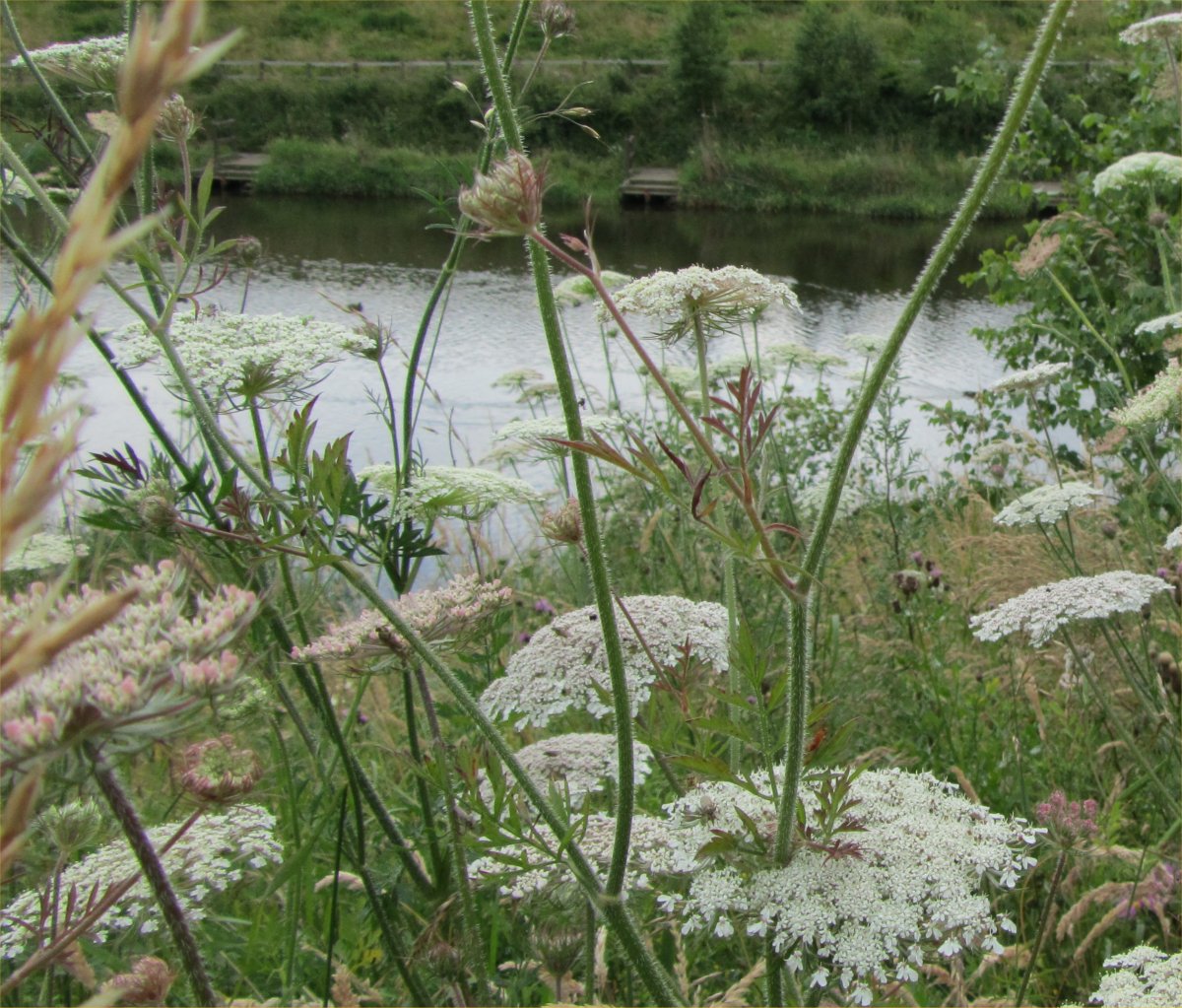 |
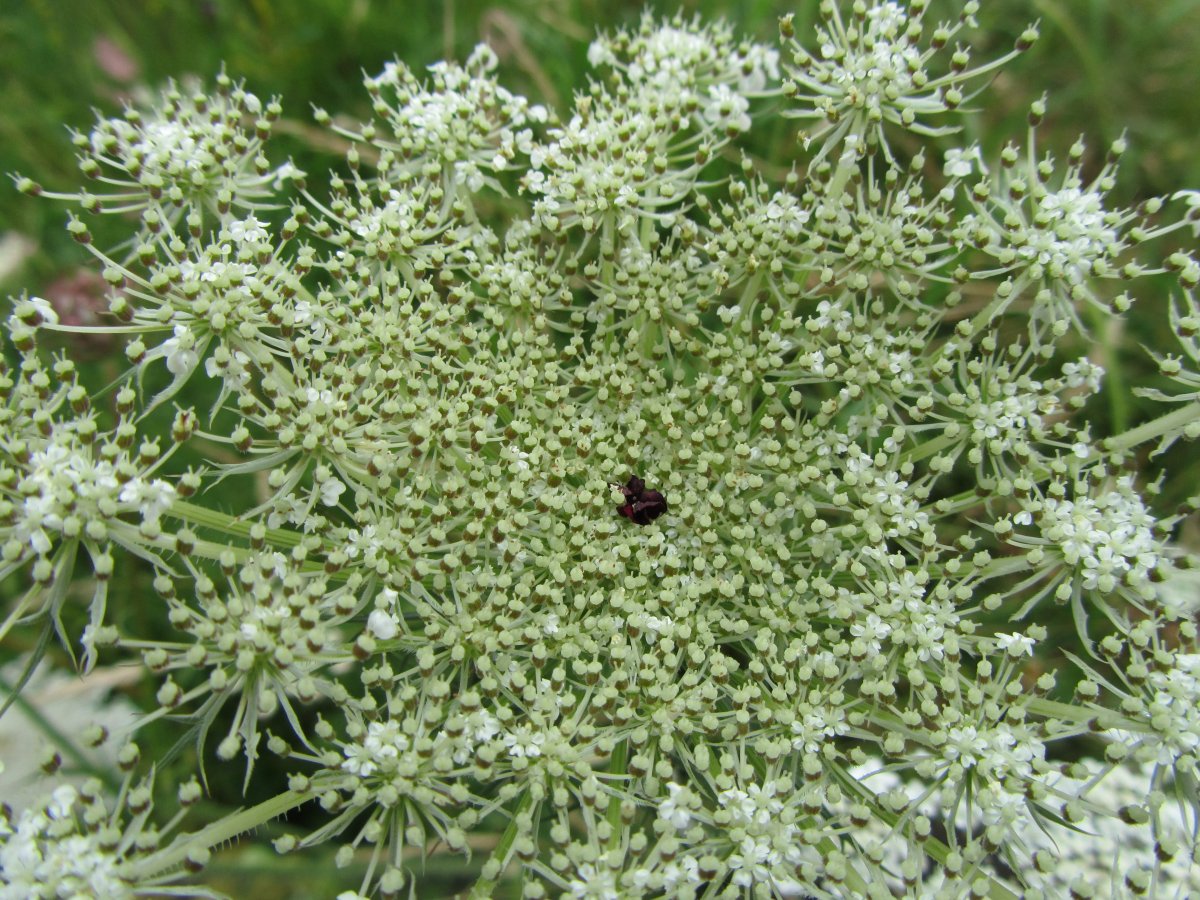
| 
|
| These seem to have an element of mystery, with their curled buds uncurling in high summer, the frequent single dark flower in the centre and the whole umbel curling back as the seeds form. These were at Wydon Water, Hexham, the first two in August 2012, the 3rd in August 2009. |
Back to index
| SCOTS LOVAGE Ligusticum scoticum | |
 |
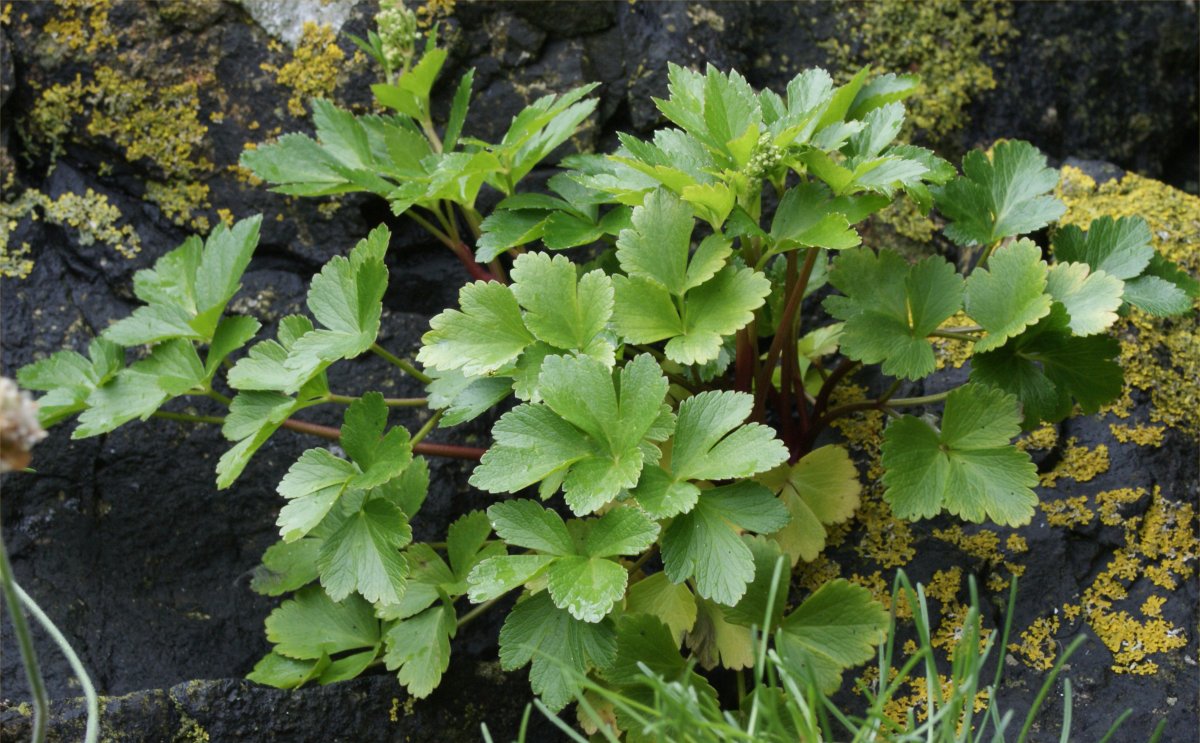
|
| We found this unusual plant on Iona, Mull in July 2016. |
Back to index
| WILD ANGELICA Angelica sylvestris | |
 |

| 
|
| A distinctive umbellifer, with its balled secondary umbels and substantial purplish stems, these were at Druridge Northumberland coast in August 2010, Wallington in July 2009 and Cragside in August 2016. |
Back to index
| HEMLOCK WATER DROPWORT Oenanthe crocata | |
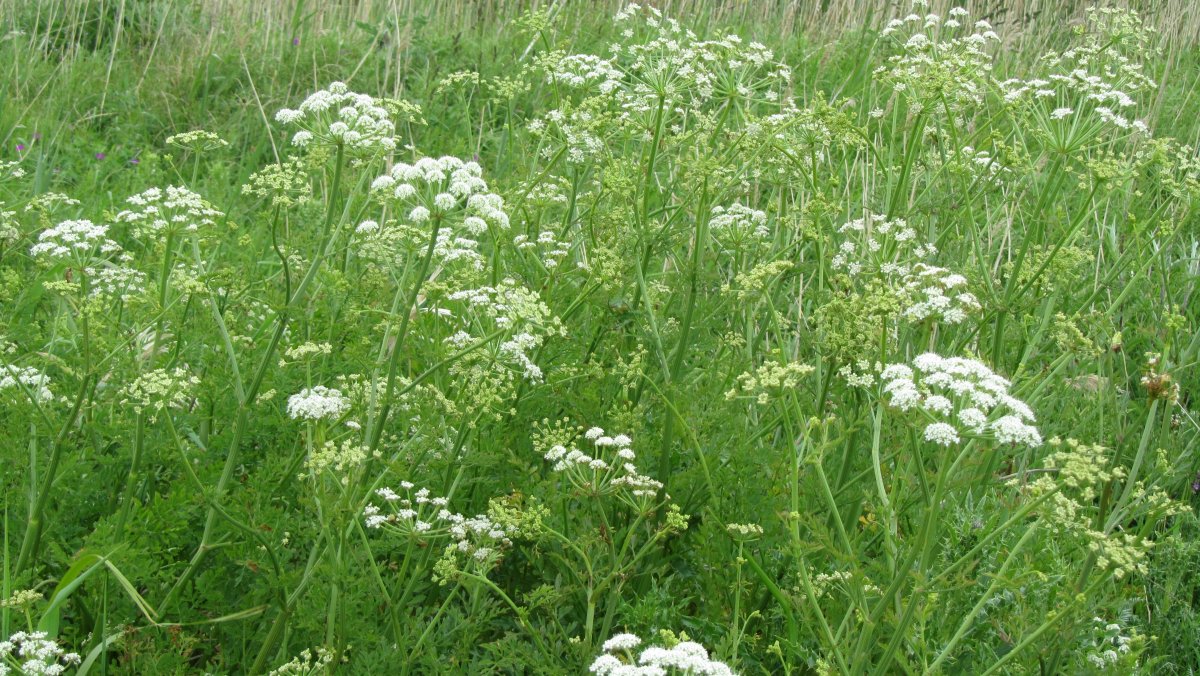 |
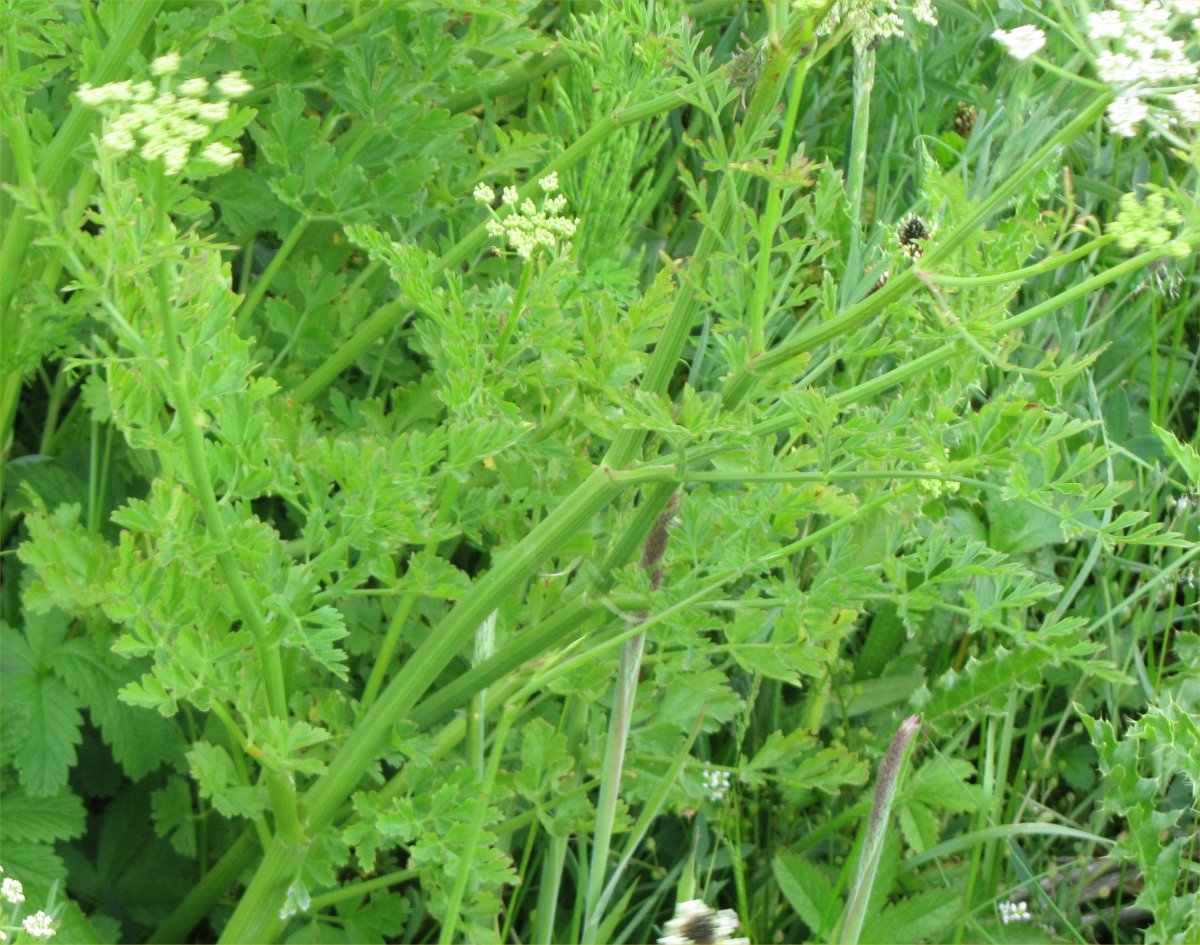
| 
|
| Confusingly similar to other umbellifers but highly poisonous. These were at Druridge Northumberland coast, the 1st two in June 2015, the 3rd in August 2015 |
Back to index
| ALEXANDERS Smyrnium olusatrum | |
 |
| Identified by its yellow flowers, distinctive leaves and stout stems. These were by the coast near Kings Lynn in April 2012. |
back to index
| SEA HOLLY Eryngium maritimum | |
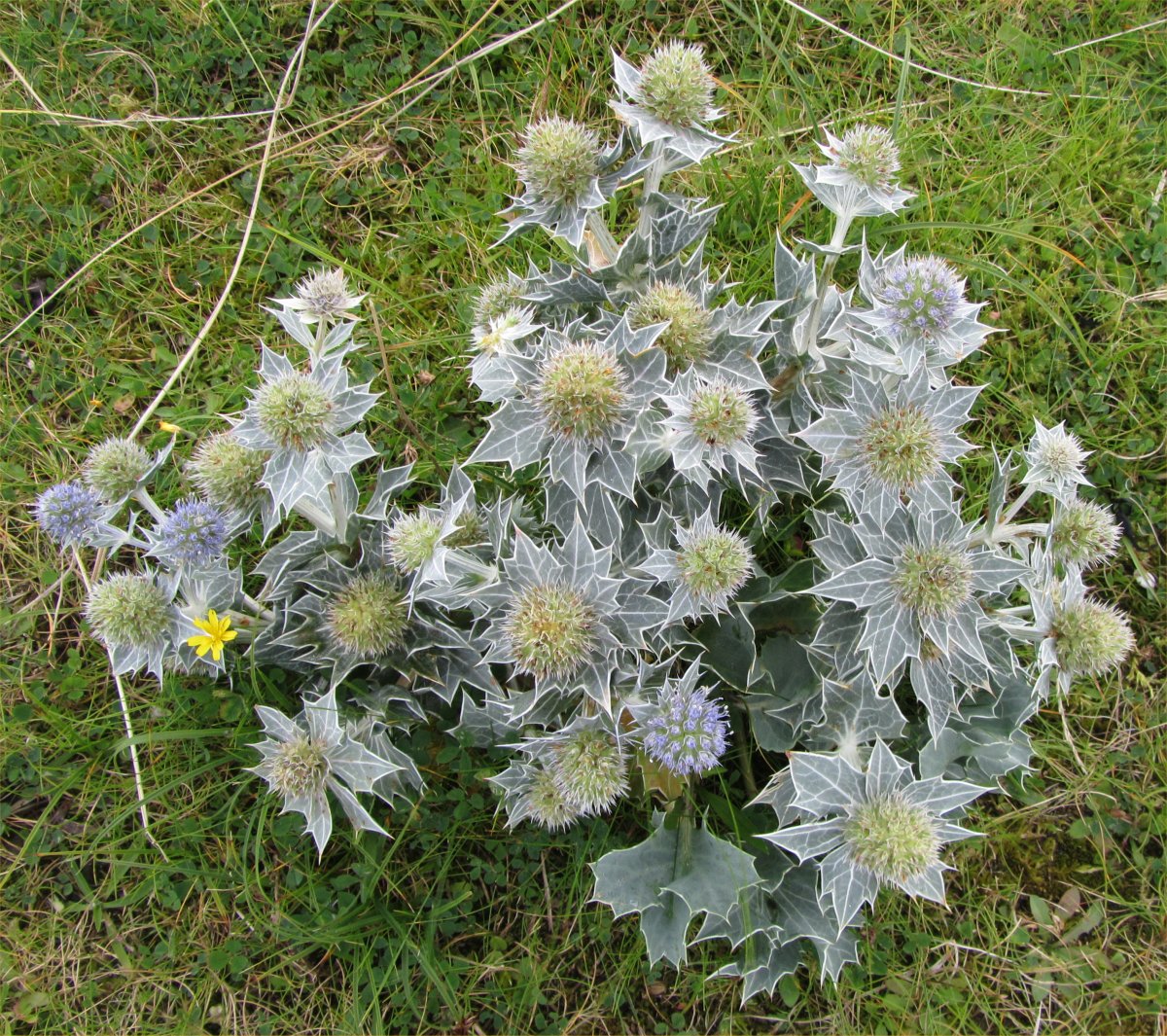 |
| One of our more dramatic coastal plants, often seen in cultivated form in gardens. These were at Ardalanish, Mull, in August 2012. |
back to index
| PINK MASTERWORT Astrantia major | |
 |
| An unusual-looking garden escape, naturalized in a few places. These were at Low Hauxley Northumberland coast in August 2013. |
back to index
| Gentian family - Gentianaceae |
| SPRING GENTIAN Gentiana verna | |
 |

| 
|
| One of the delights of walking in Upper Teesdale in early summer, these startlingly blue flowers were seen at Cow Green Reservoir, Teesdale in (1st two) May 2011, (3rd) June 2010. |
Back to index
| COMMON CENTAURY Centaurium erythraea | |
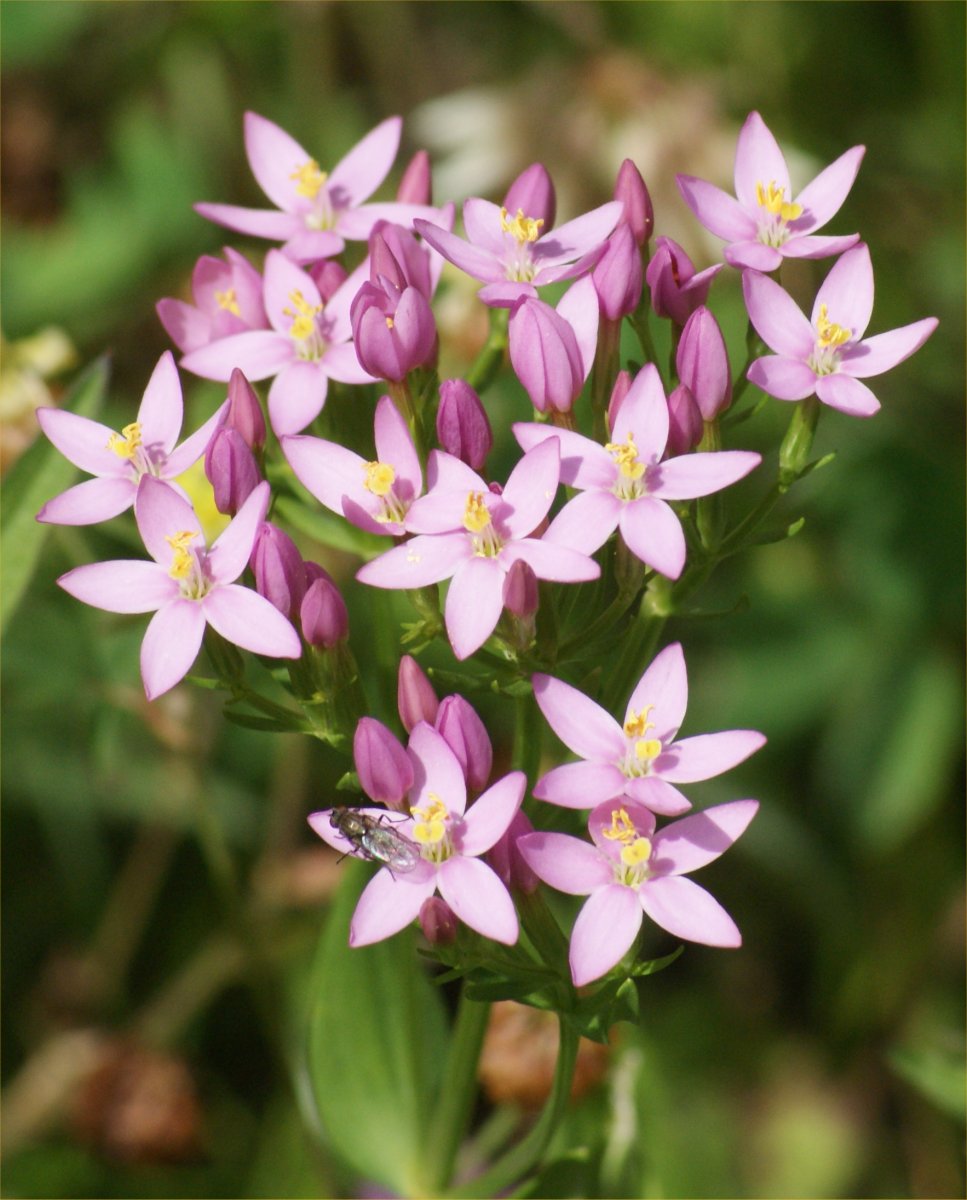 |
| A subtly coloured addition to high summer flowers, these were at Low Hauxley Northumberland coast in July 2011. |
back to index
| YELLOW-WORT Blackstonia perfoliata | |
 |
| A fairly common coastal plant, these were near their northern limit at Druridge Northumberland coast in October 2008. |
back to index
| YELLOW CENTAURY Cicendia filiformis | |
 |
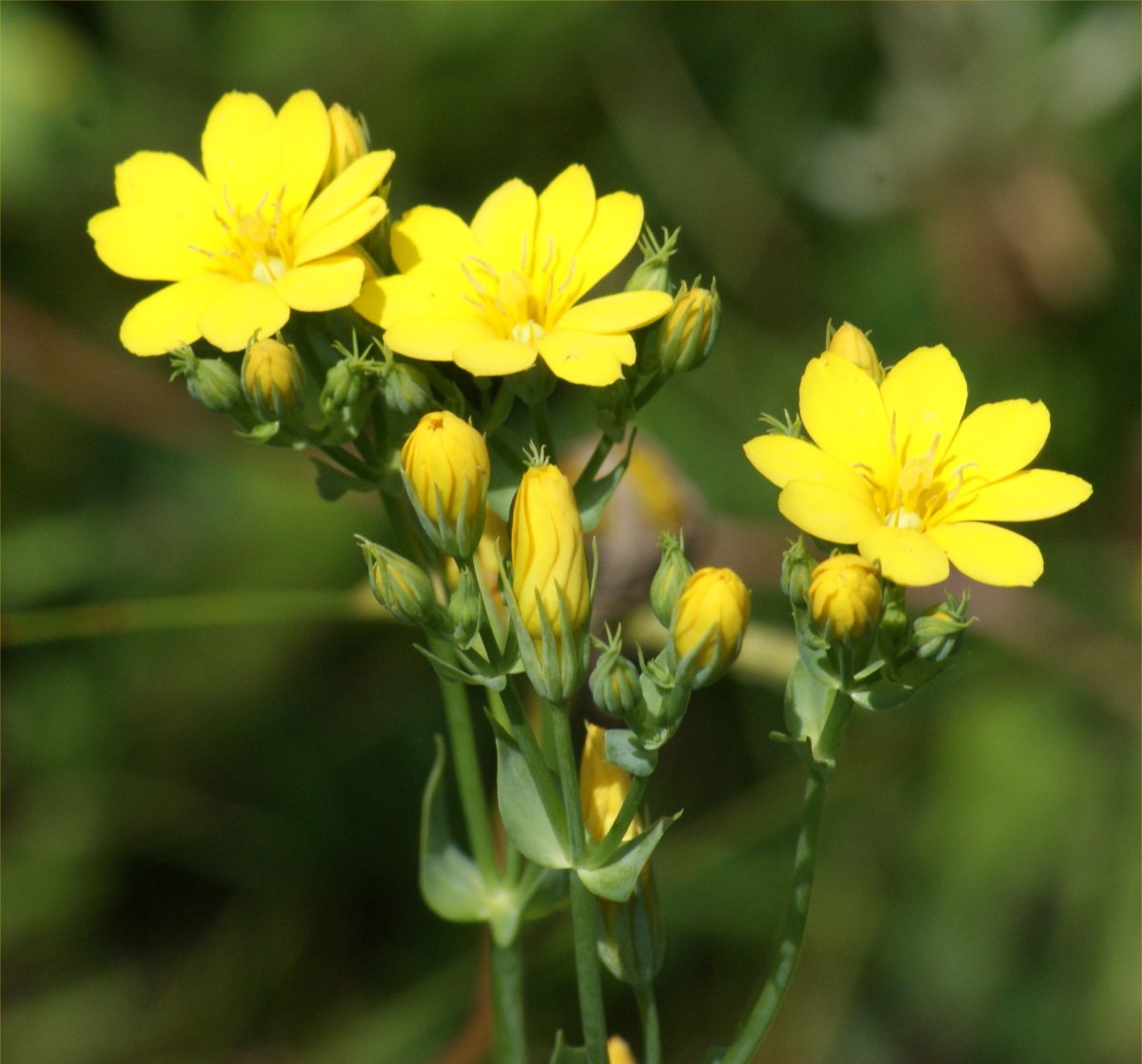
|
| Strictly speaking, these lovely flowers should not be seen so far north, but we have no complaints! They were at Druridge Northumberland coast in July 2011. |
Back to index
| Nightshade family - Solanaceae |
| BITTERSWEET (WOODY NIGHTSHADE) Solanum dulcamara | |
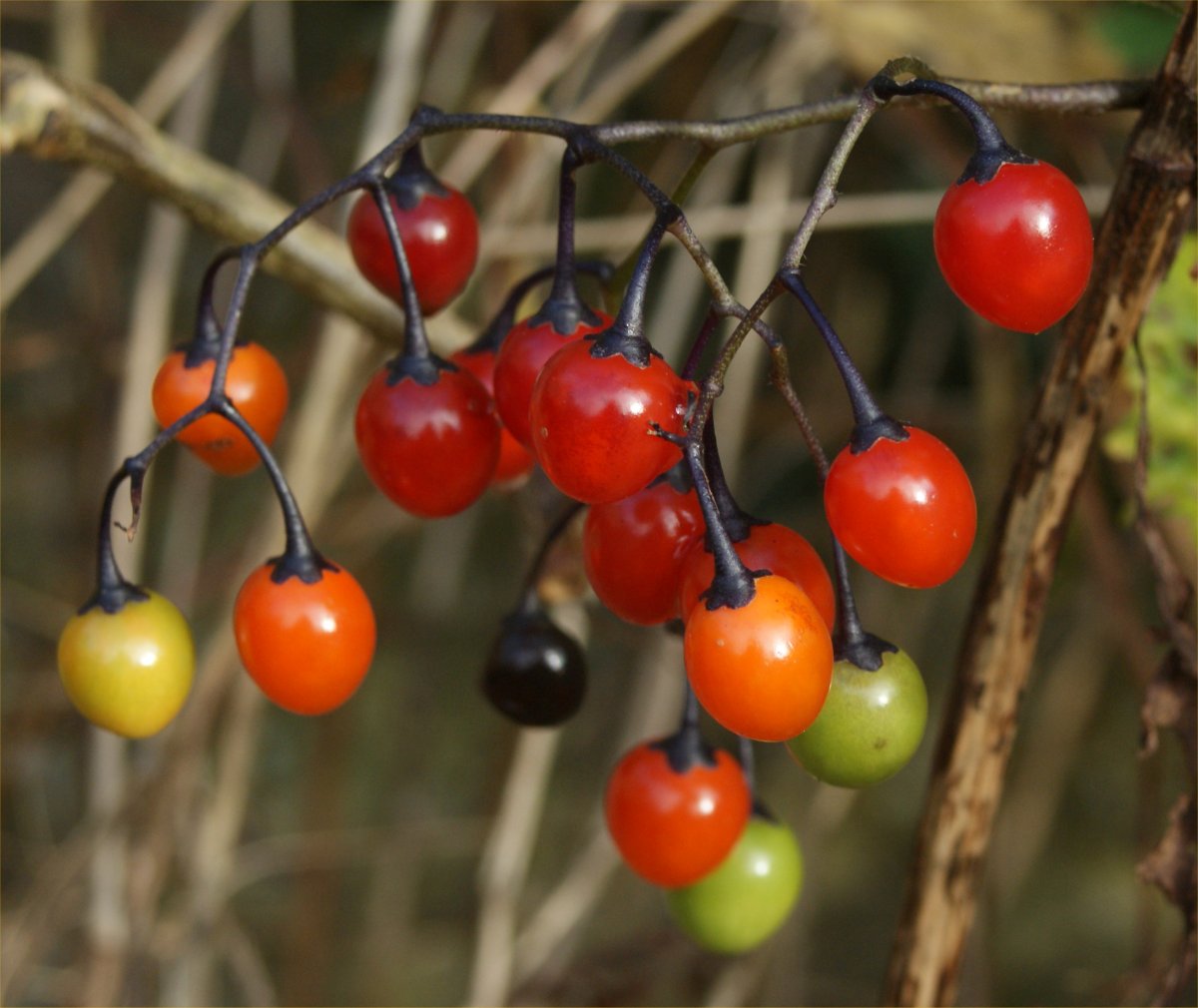 |
| Not as poisonous as their 'Deadly' distant relative, these were adding sparkle to the hedgerows at Tyne Green, Hexham in October 2012. |
back to index
| Borage family - Boraginaceae |
| GREEN ALKANET Pentaglottis sempervirens | |
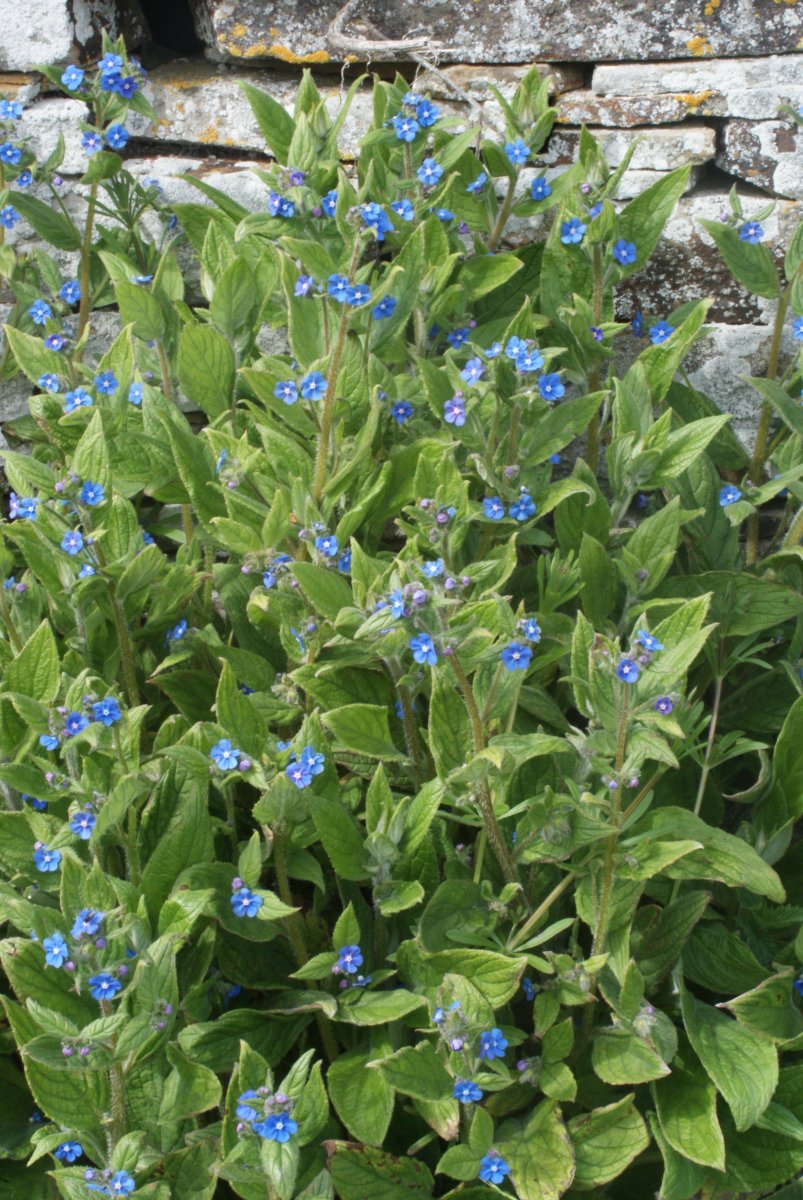 |

|
| A widespread and attractive flower, these were at Shildon mine, West Northumberland, in May 2015 and Belsay in June 2018. |
Back to index
| (TANSY-LEAVED) PHACELIA Phacelia tanacetifolia | |
 |
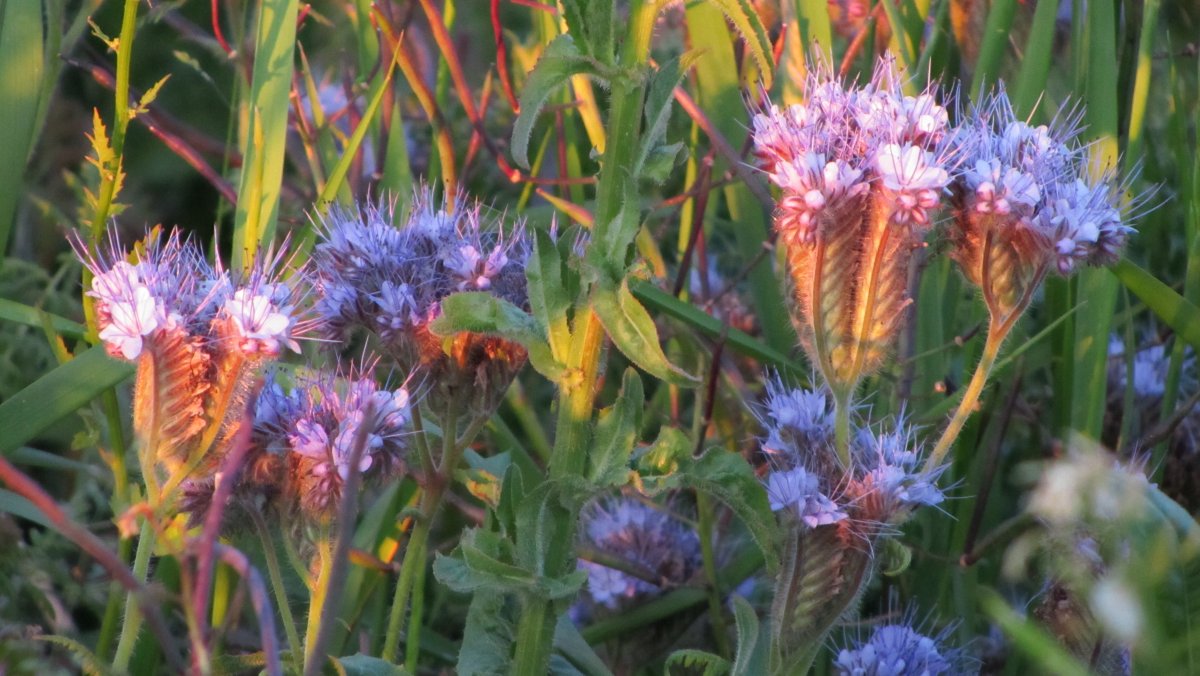
| 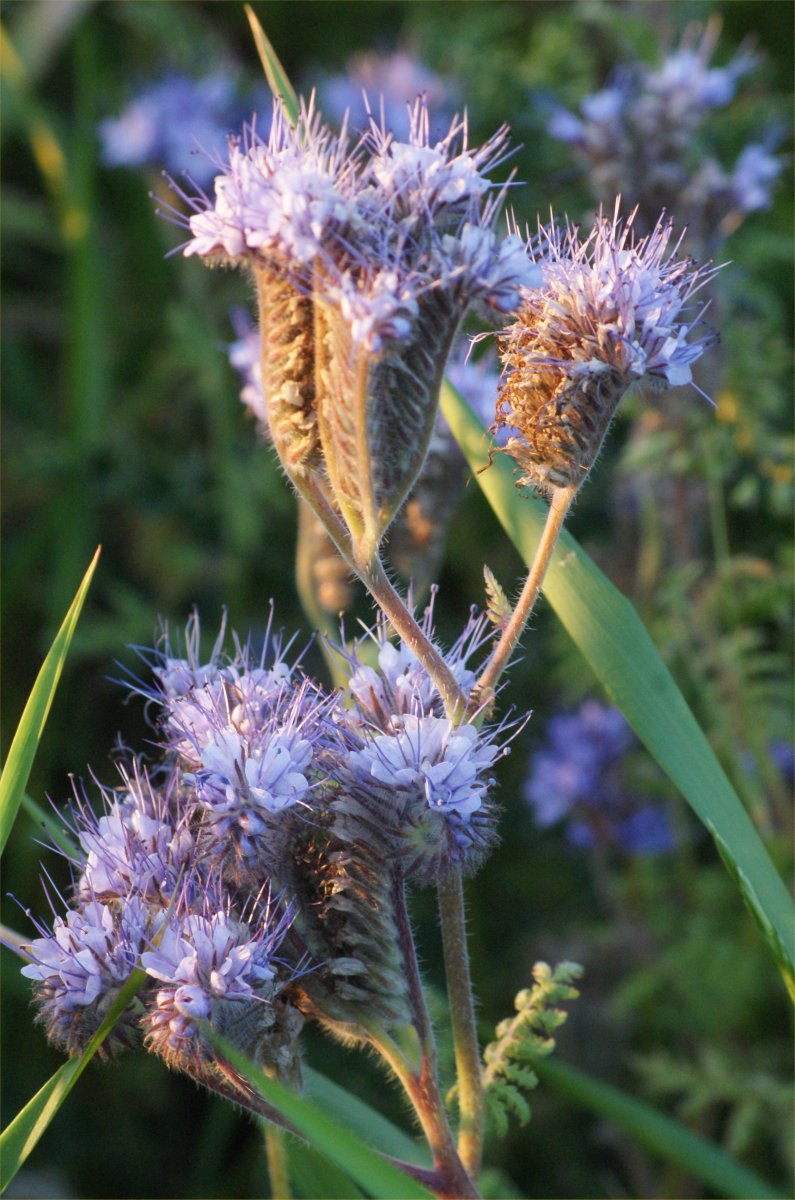
|
| An introduced plant, often used in set-aside and other wildlife-friendly plantings, these were in a field border at Kentstone, Northumberland coast in June 2011. |
Back to index
| OYSTERPLANT Mertensia maritima | |
 |

|
| The leaves apparently taste of oysters, but we didn't try them as this is a scarce plant, confined to a few locations such as Stenness, Shetland, where we saw them in July 2013. |
Back to index
| VIPER'S BUGLOSS Echium vulgare | |
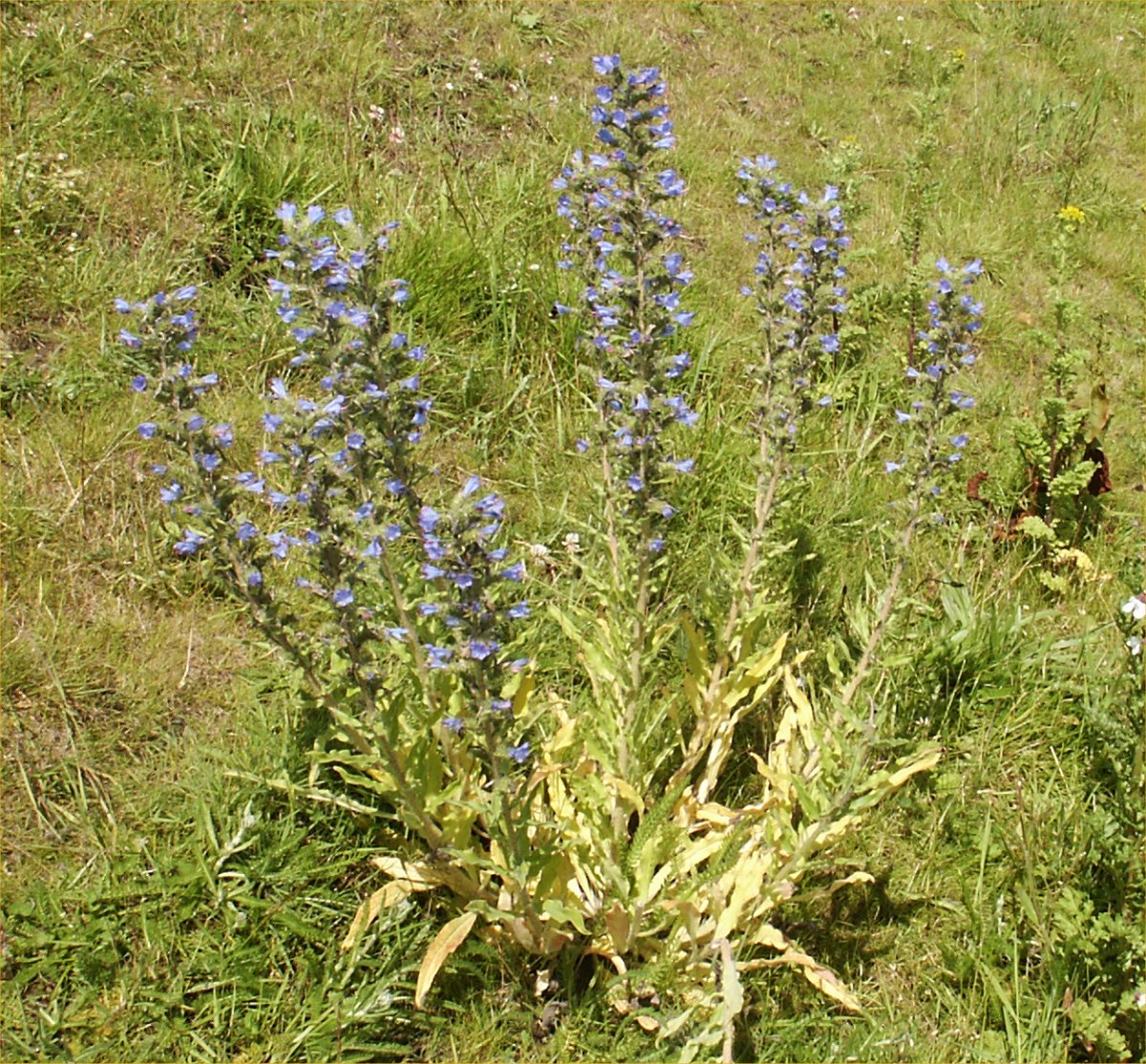 |
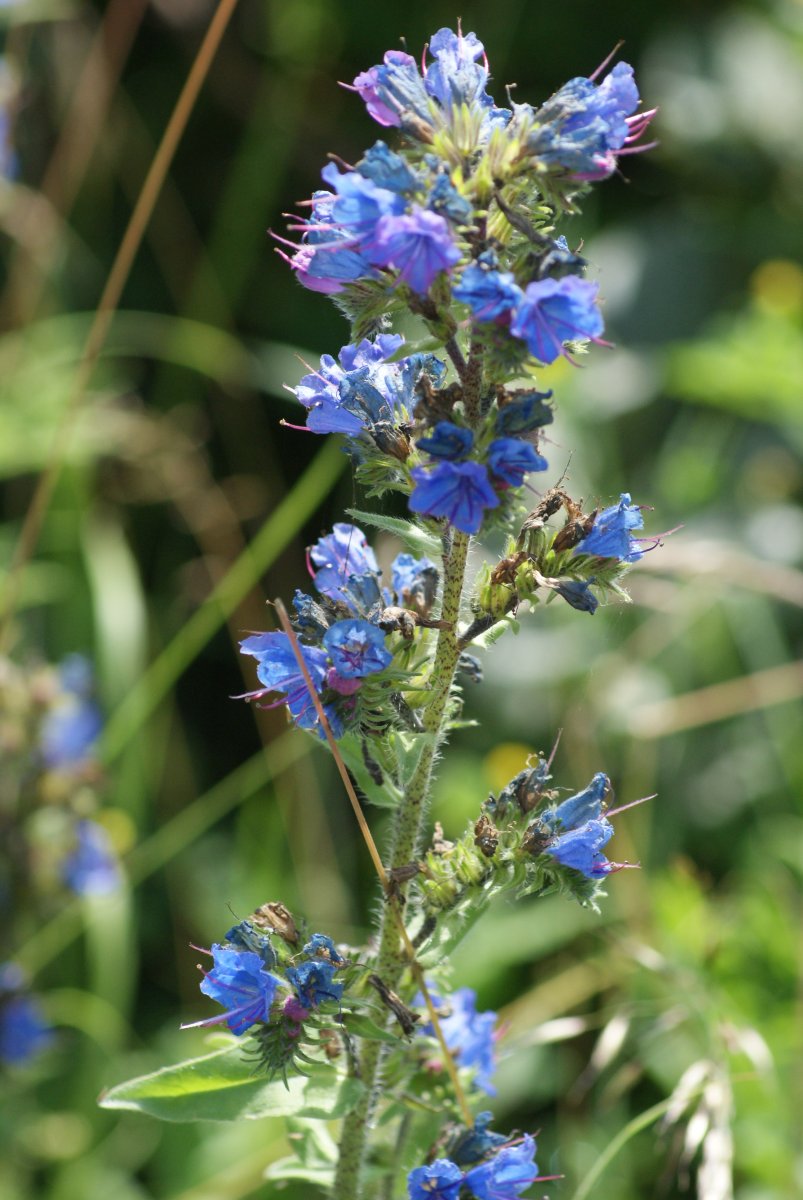
|
| Bold and widespread, these were at Tyne Green, Hexham in July 2007. |
Back to index
| Dead-nettle family - Lamiaceae |
| MARSH WOUNDWORT Stachys palustris | |
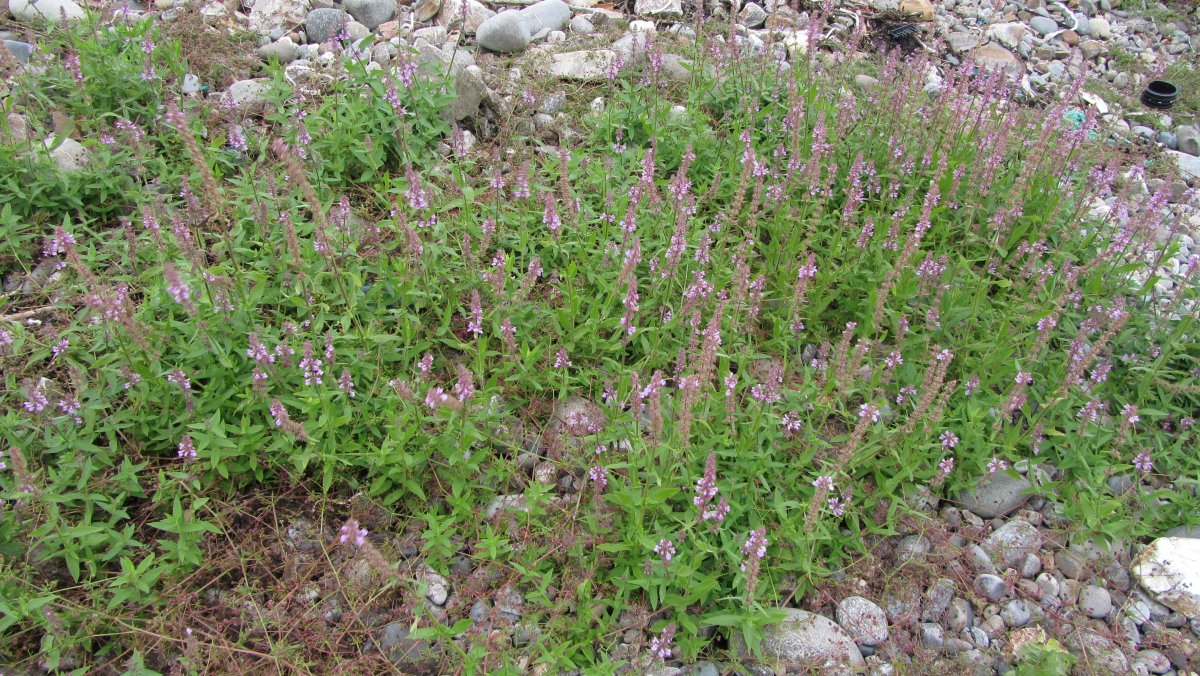 |

|
| Attractive en masse, but also repaying a close look at the individual flowers, these were at Ardalanish, Mull in August 2014. |
Back to index
| (WILD) MARJORAM Origanum vulgare | |
|
 .
.